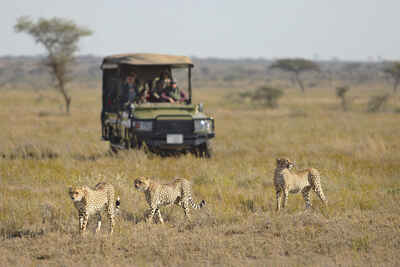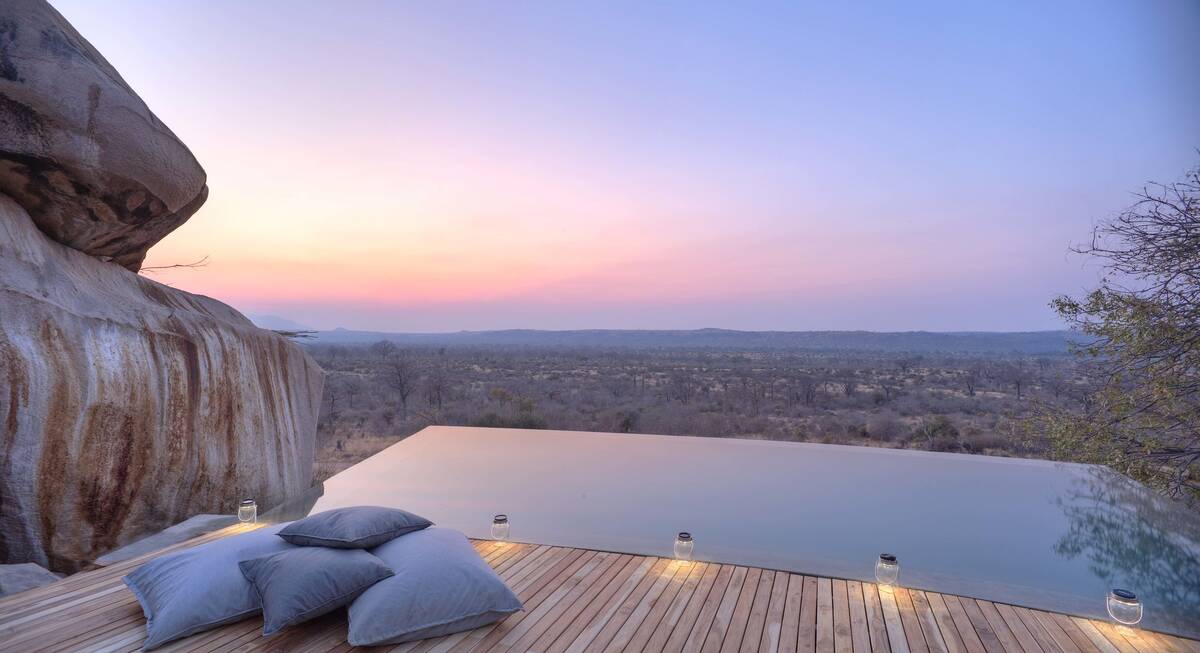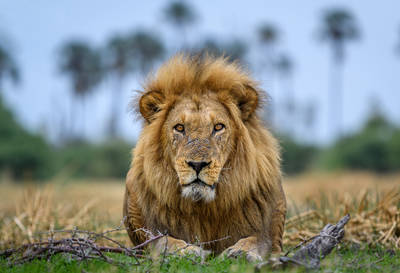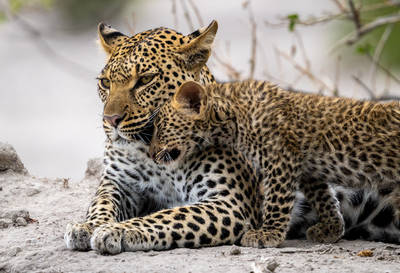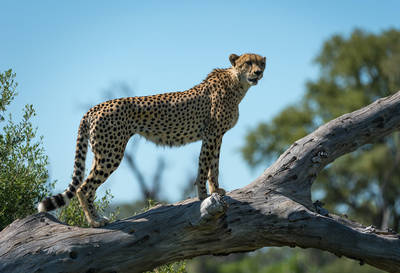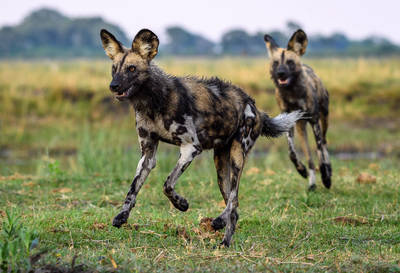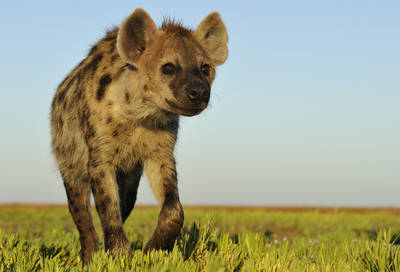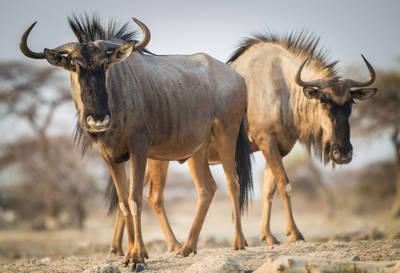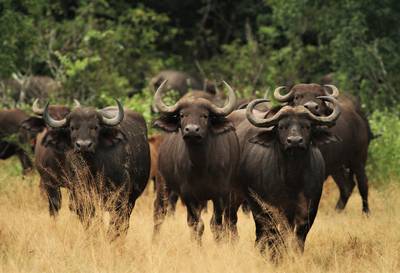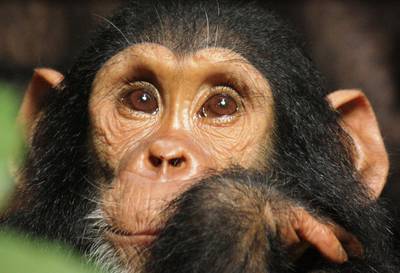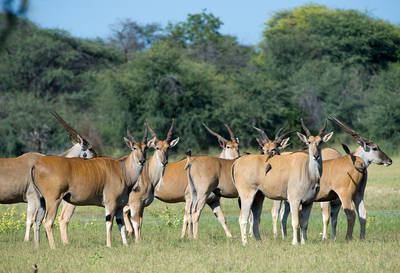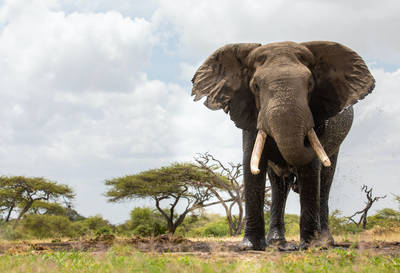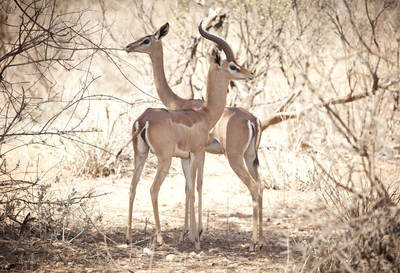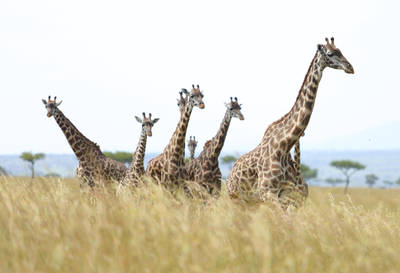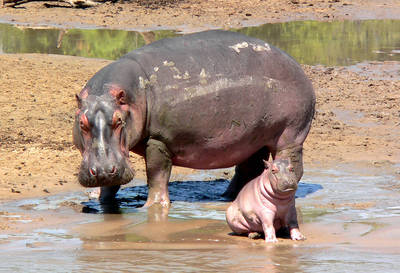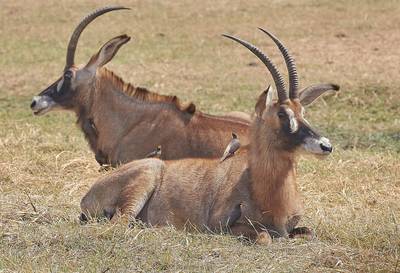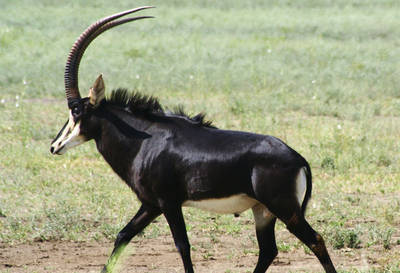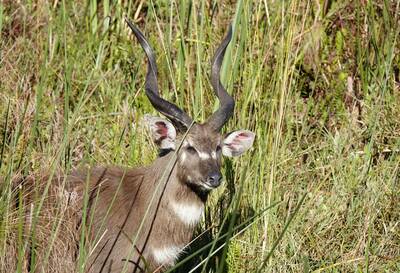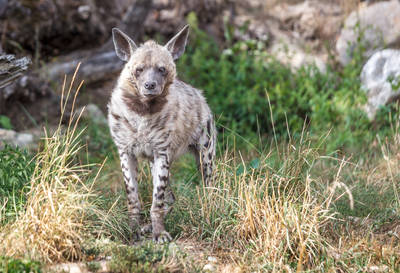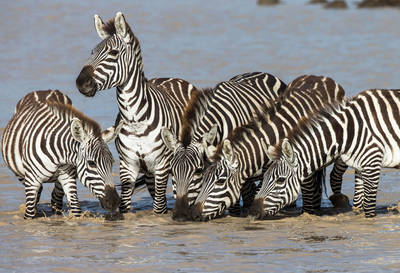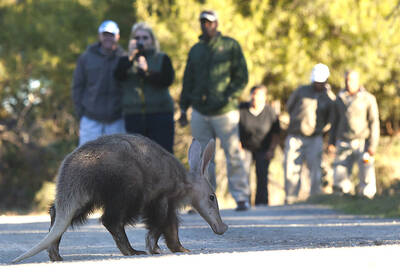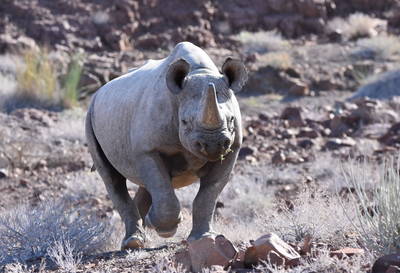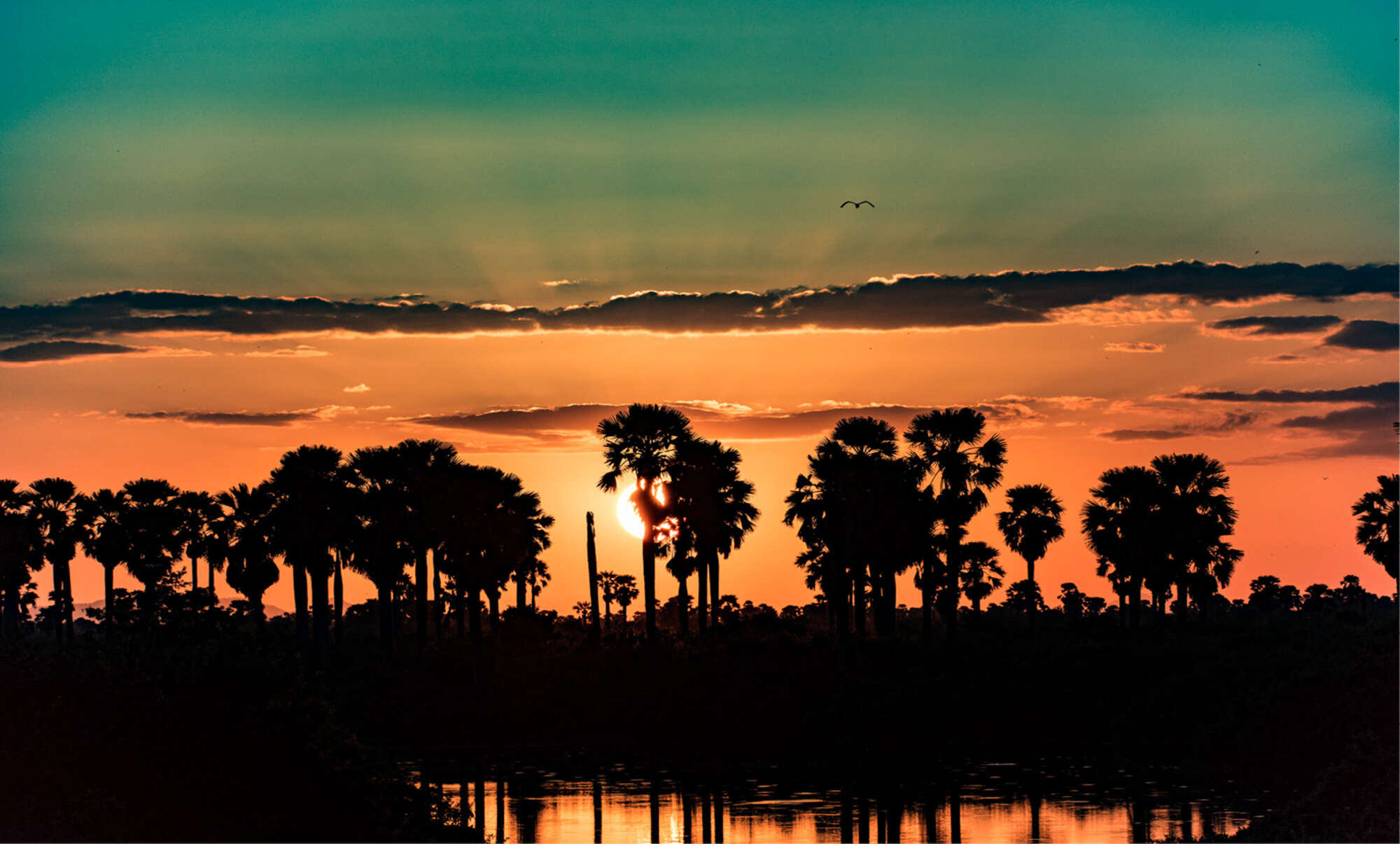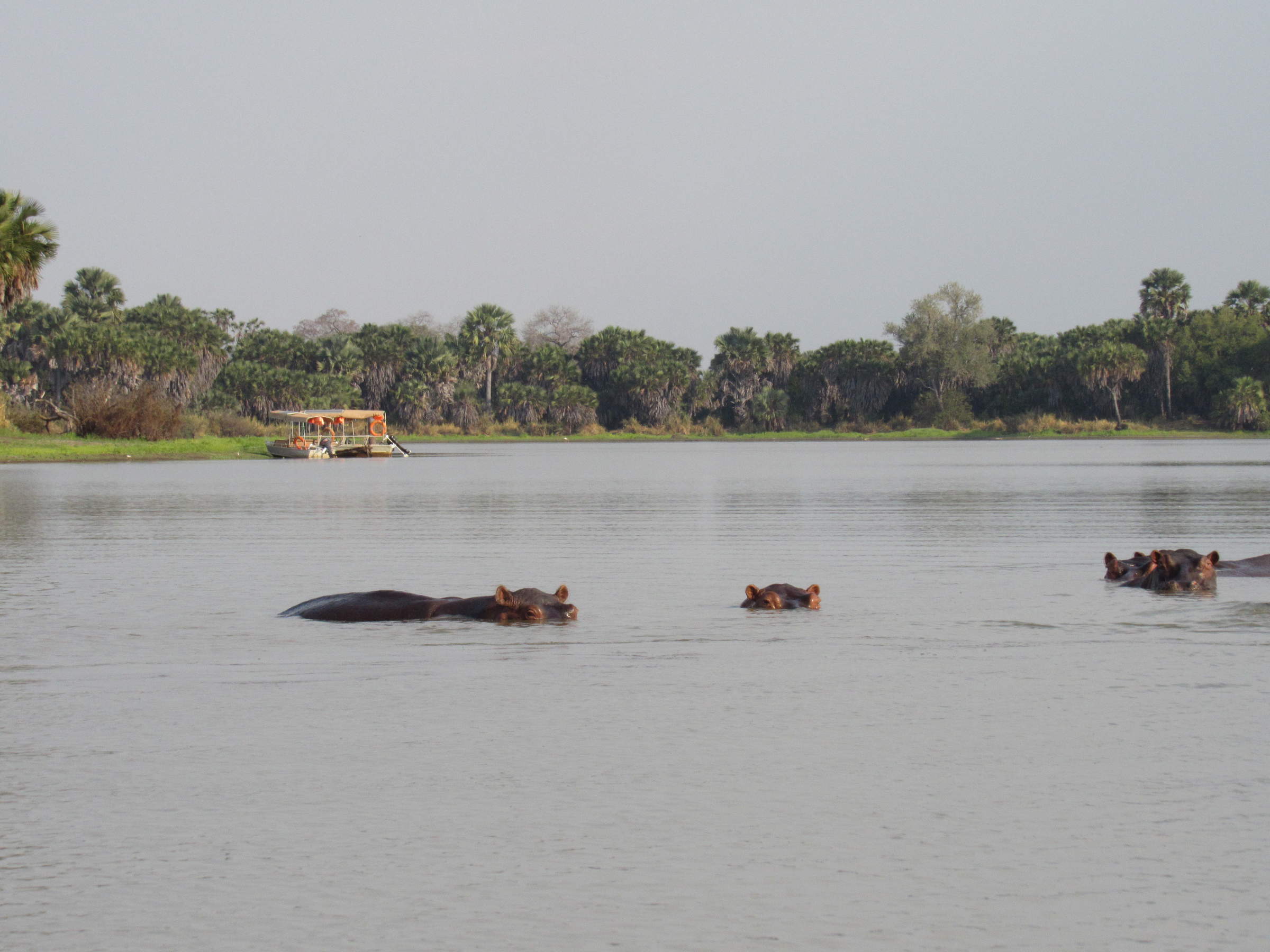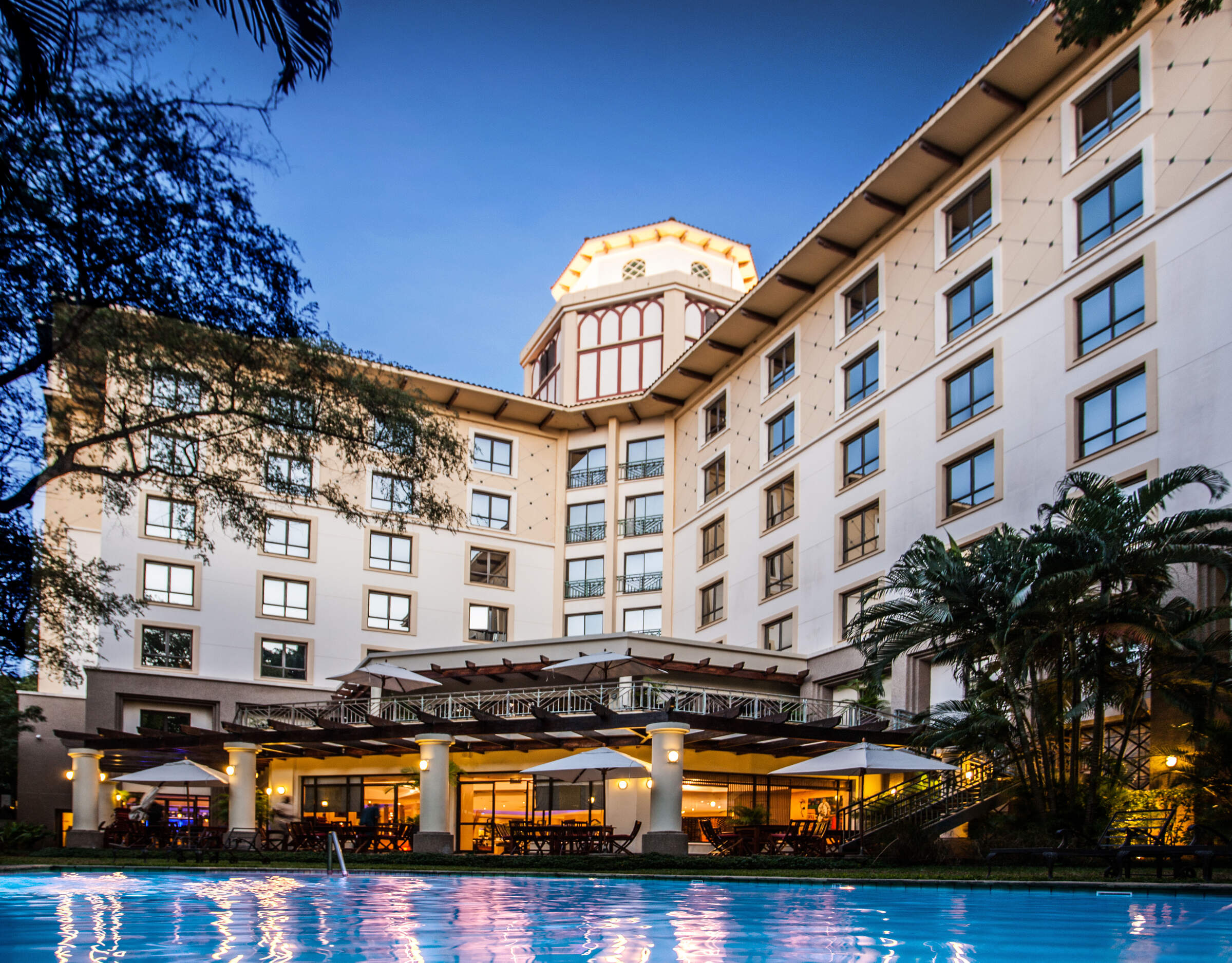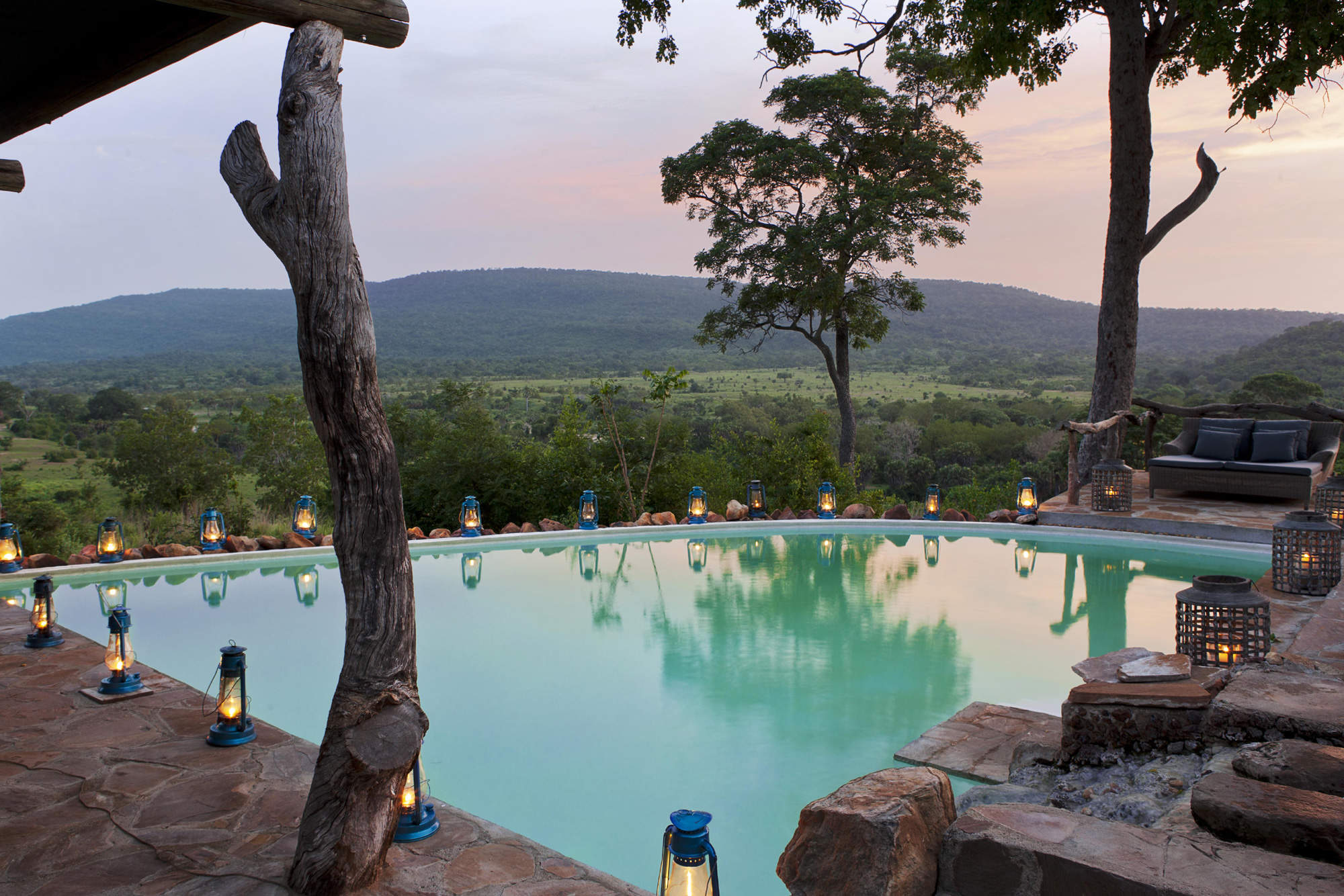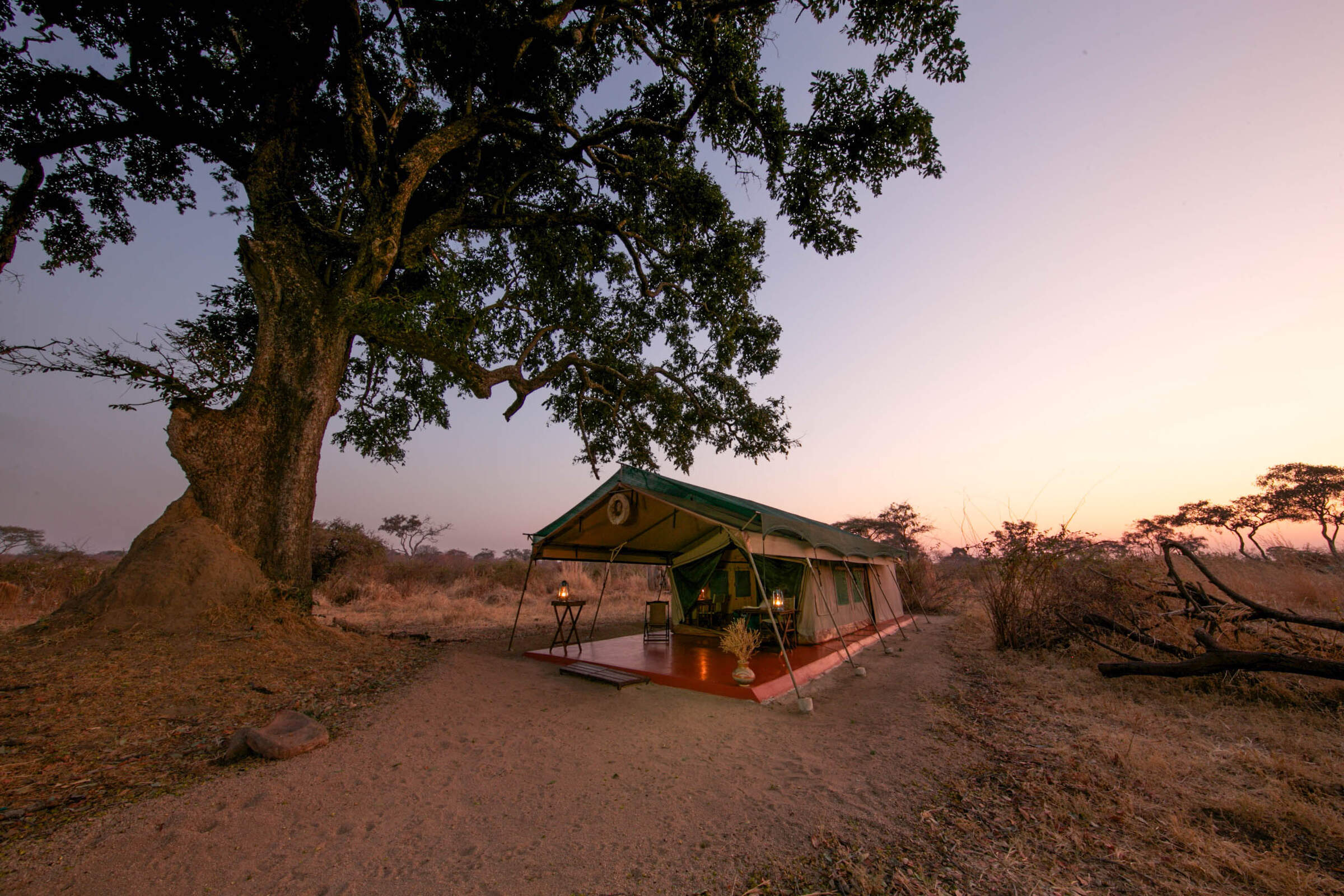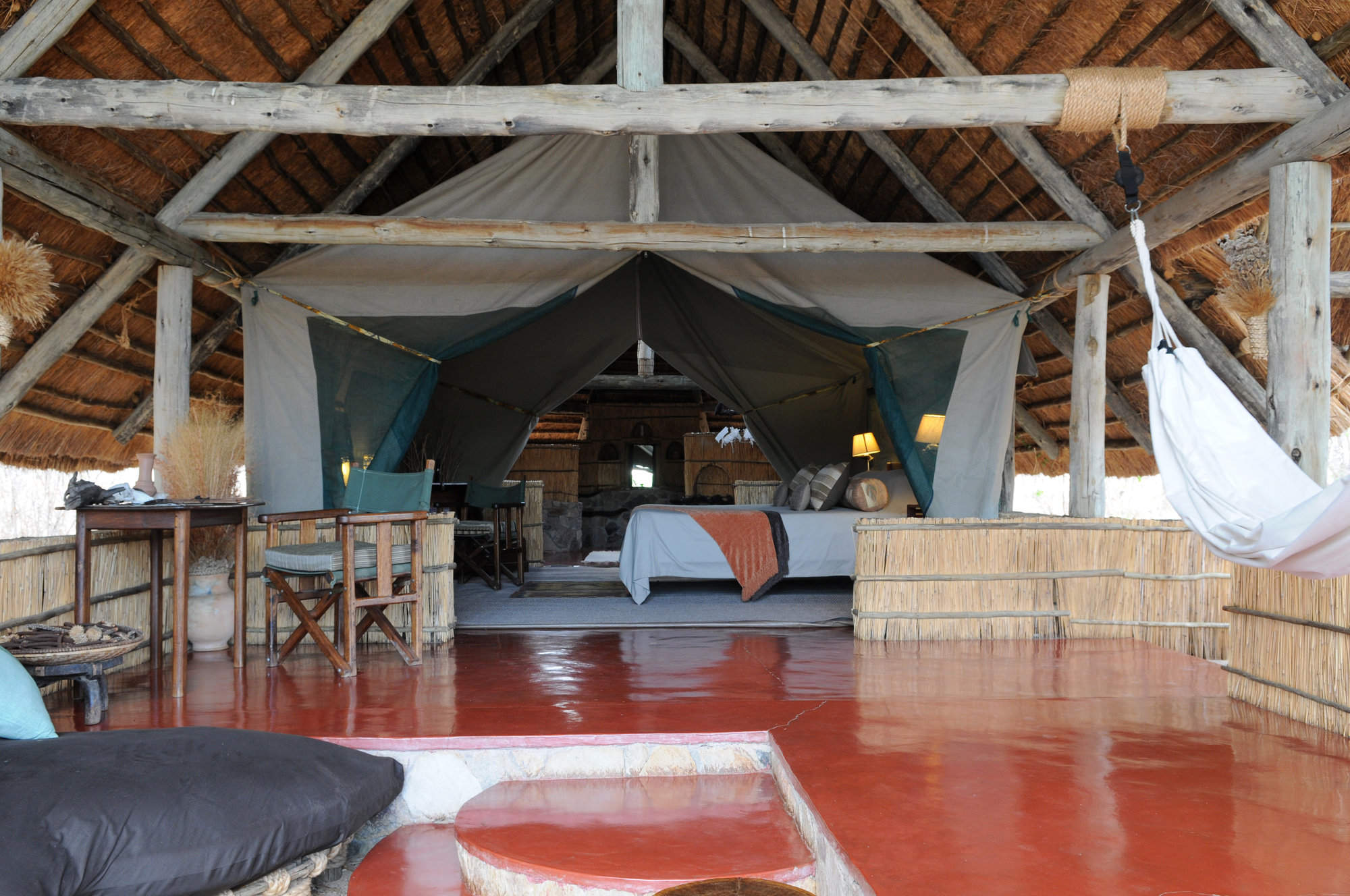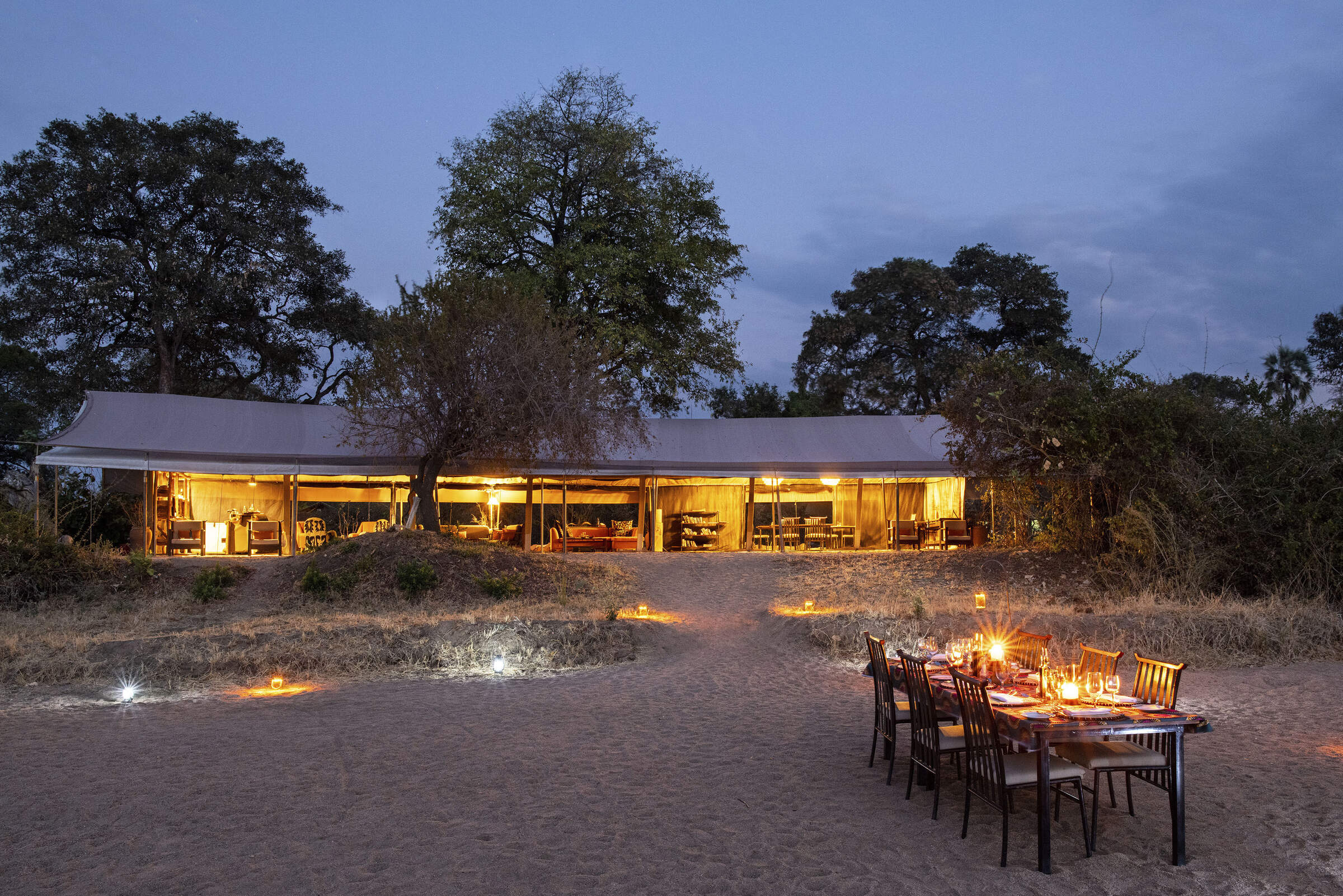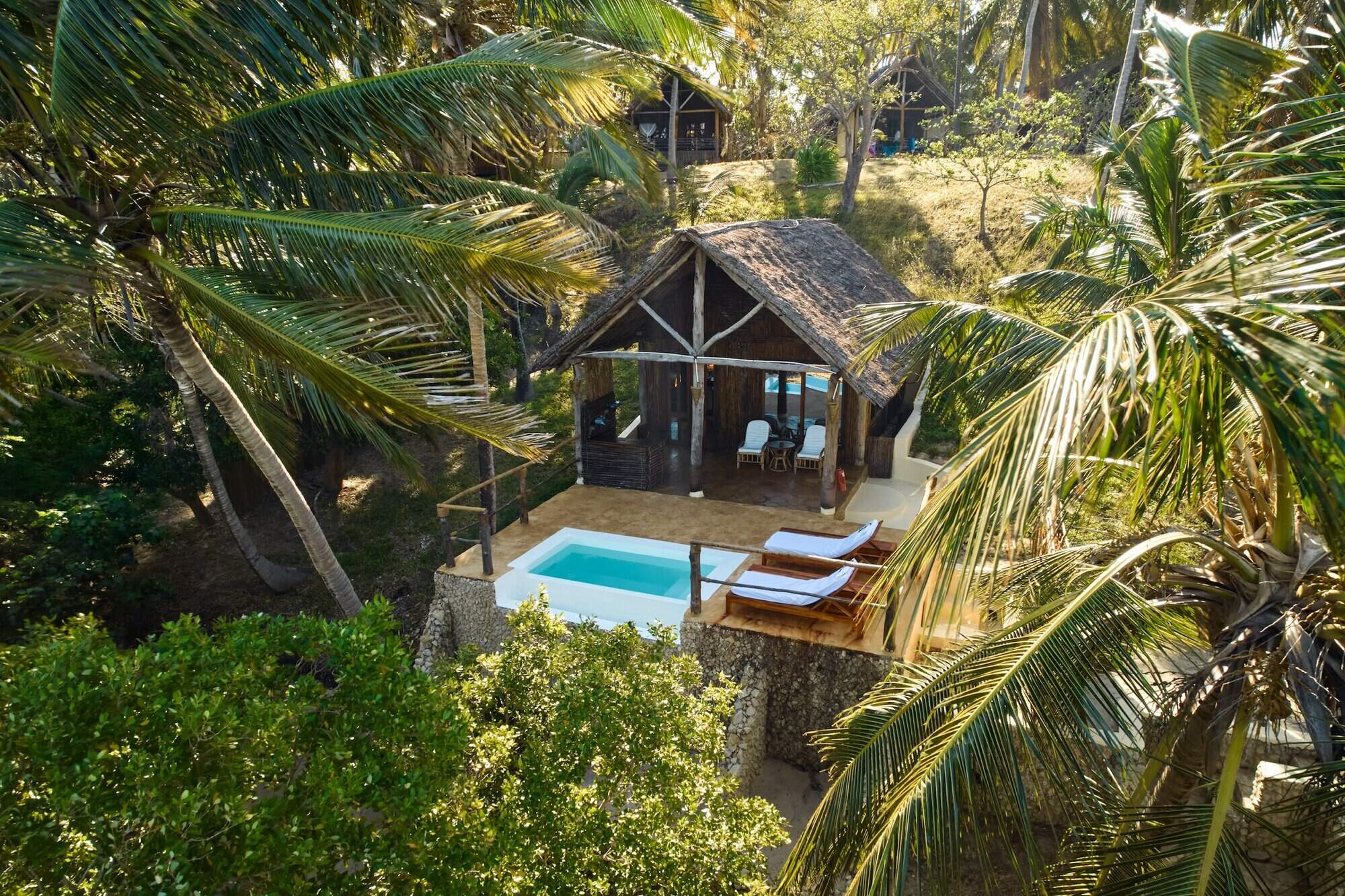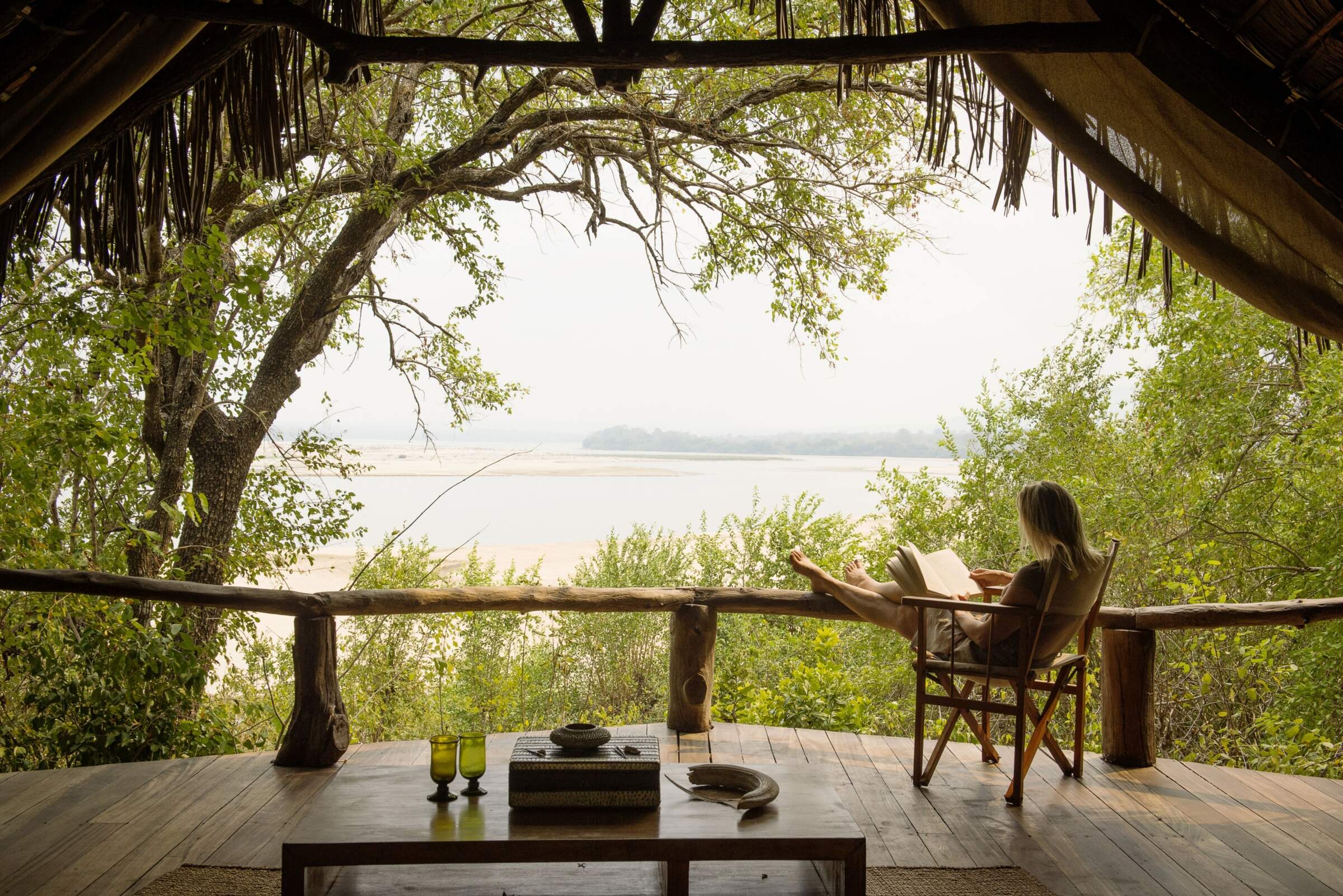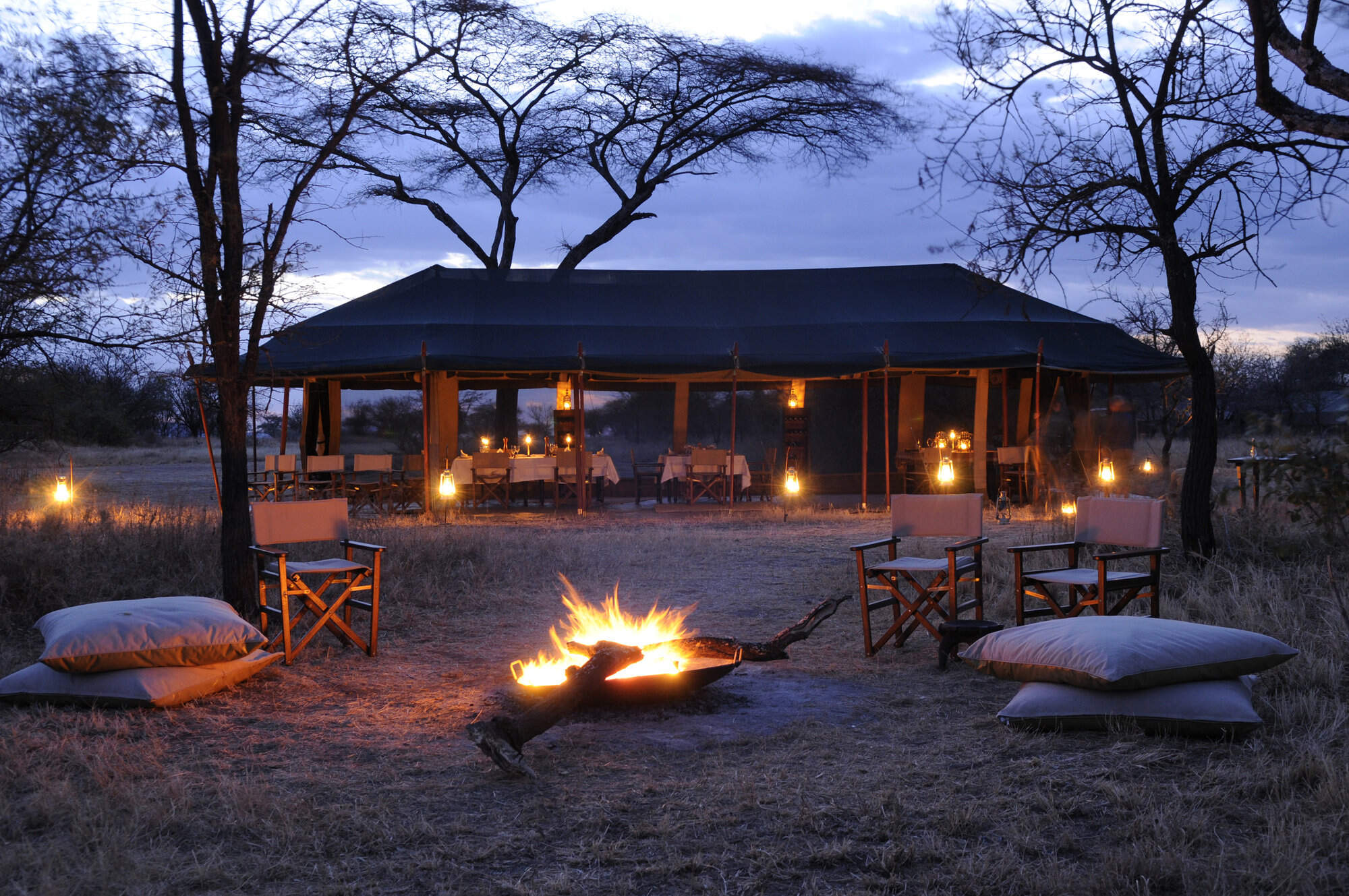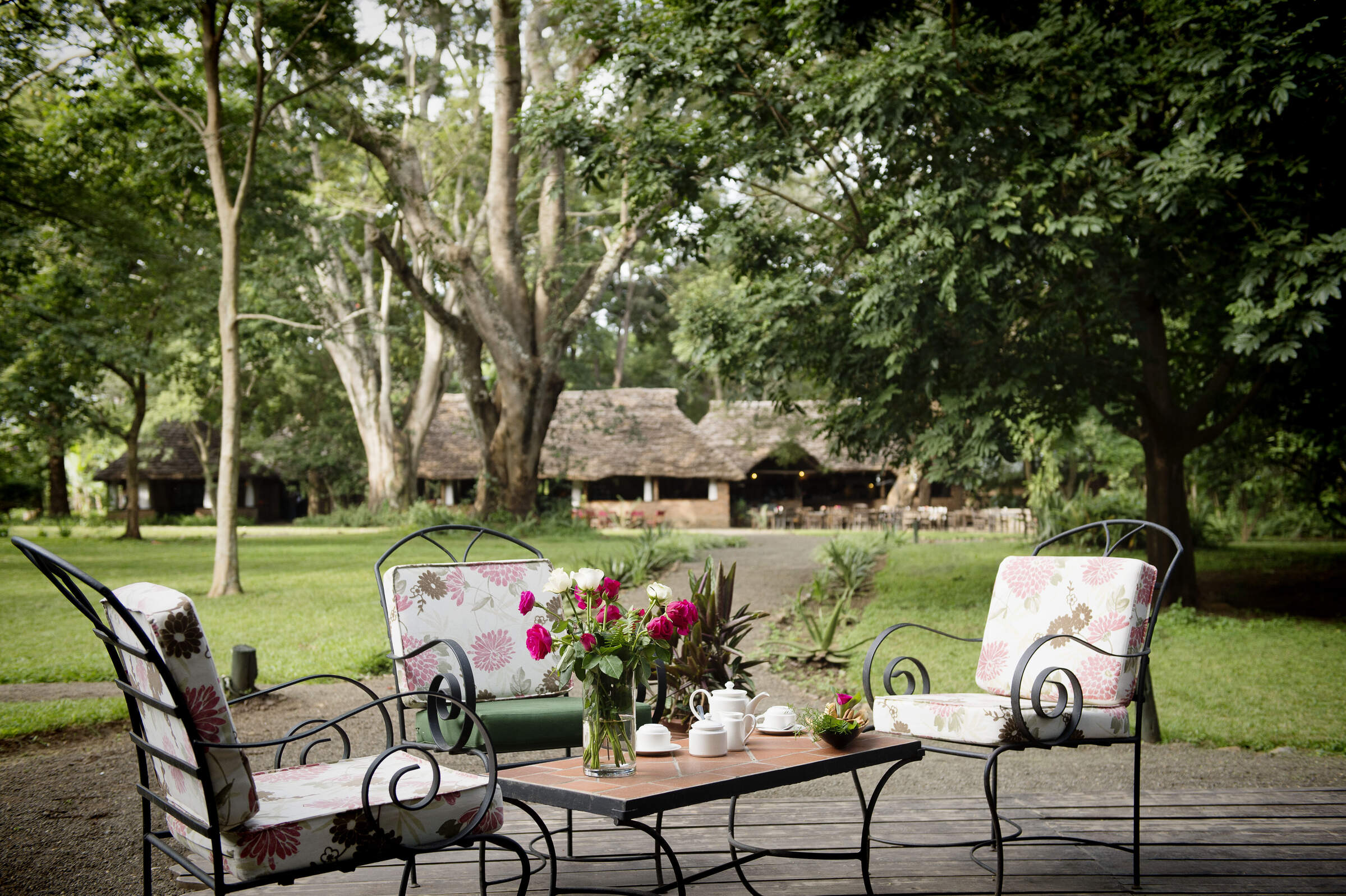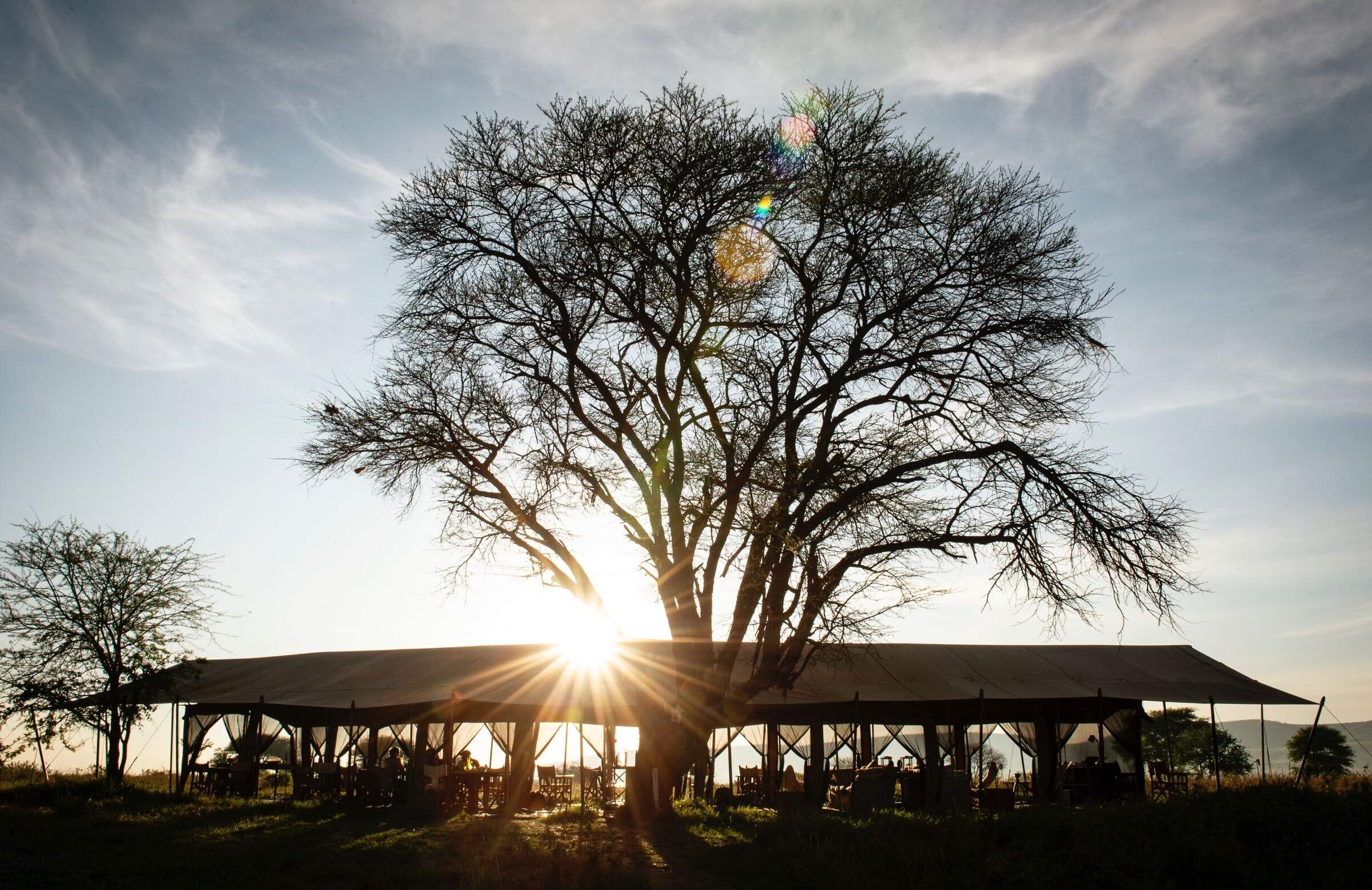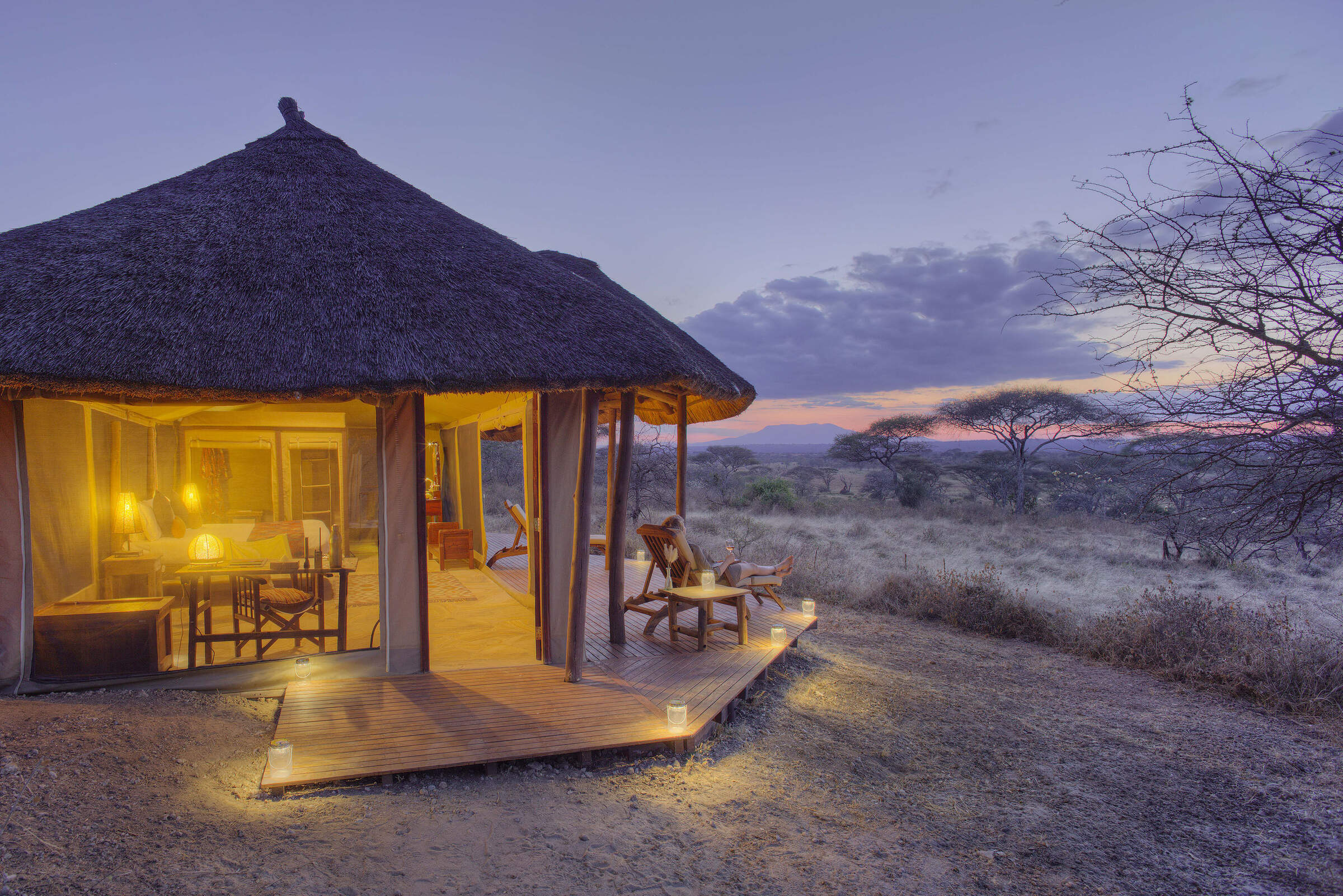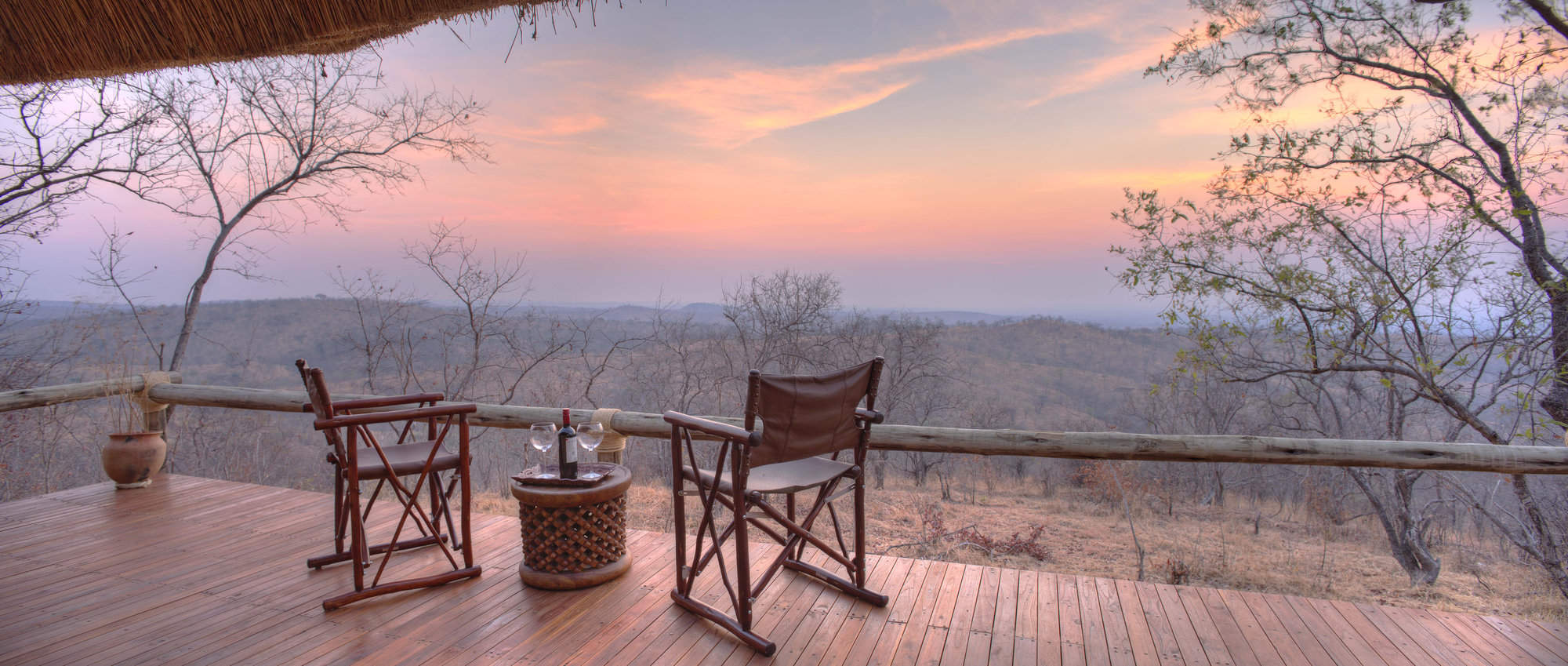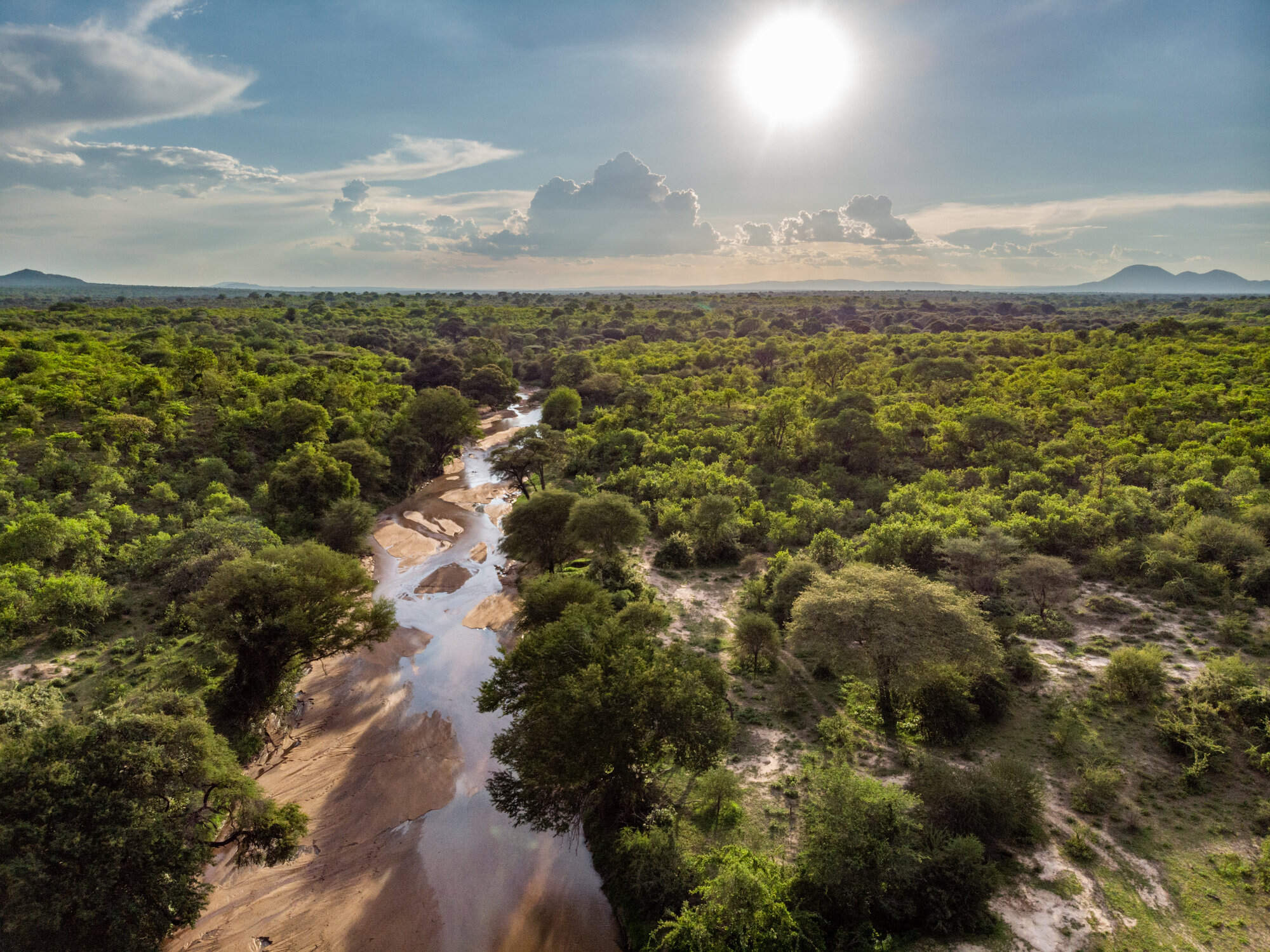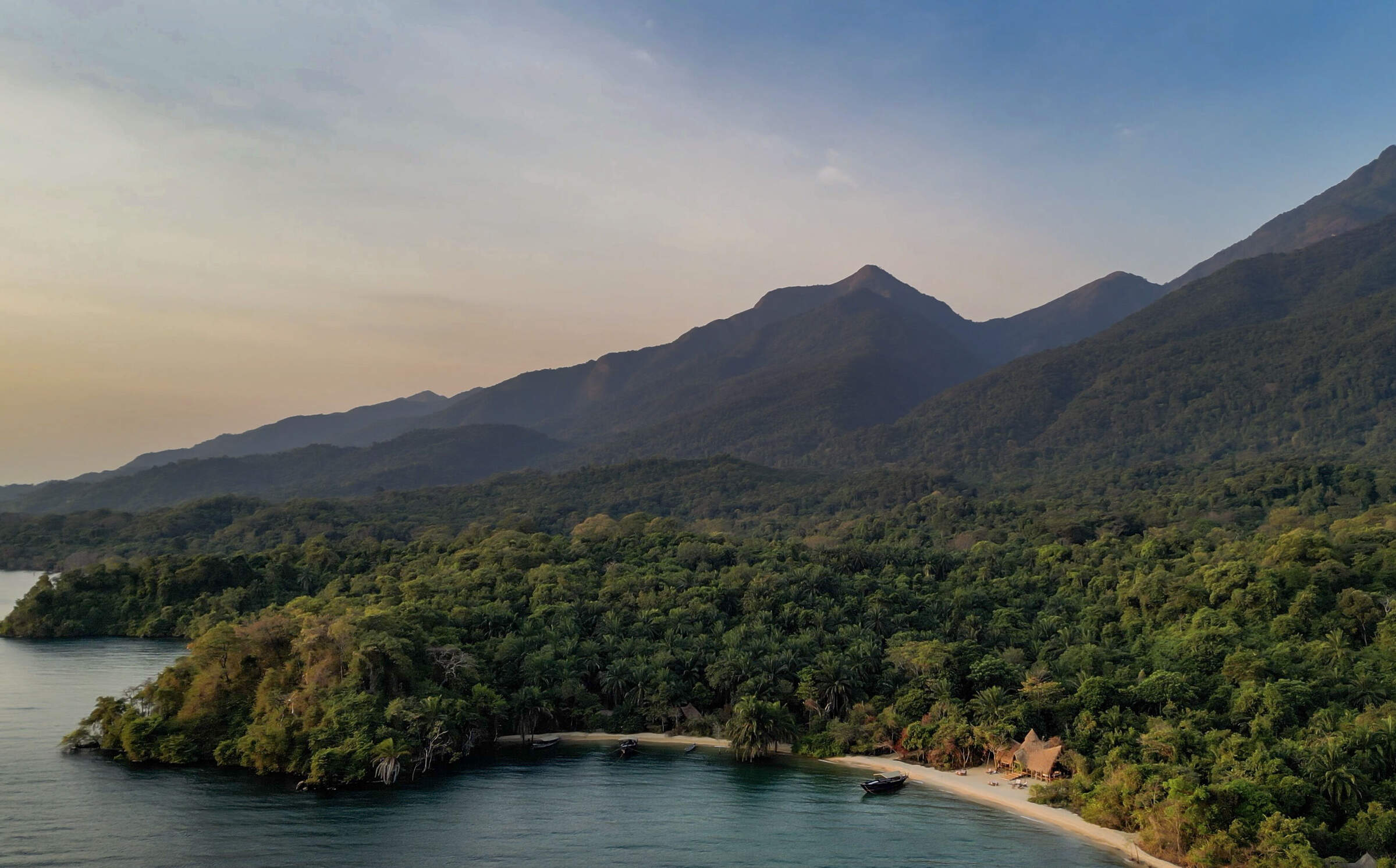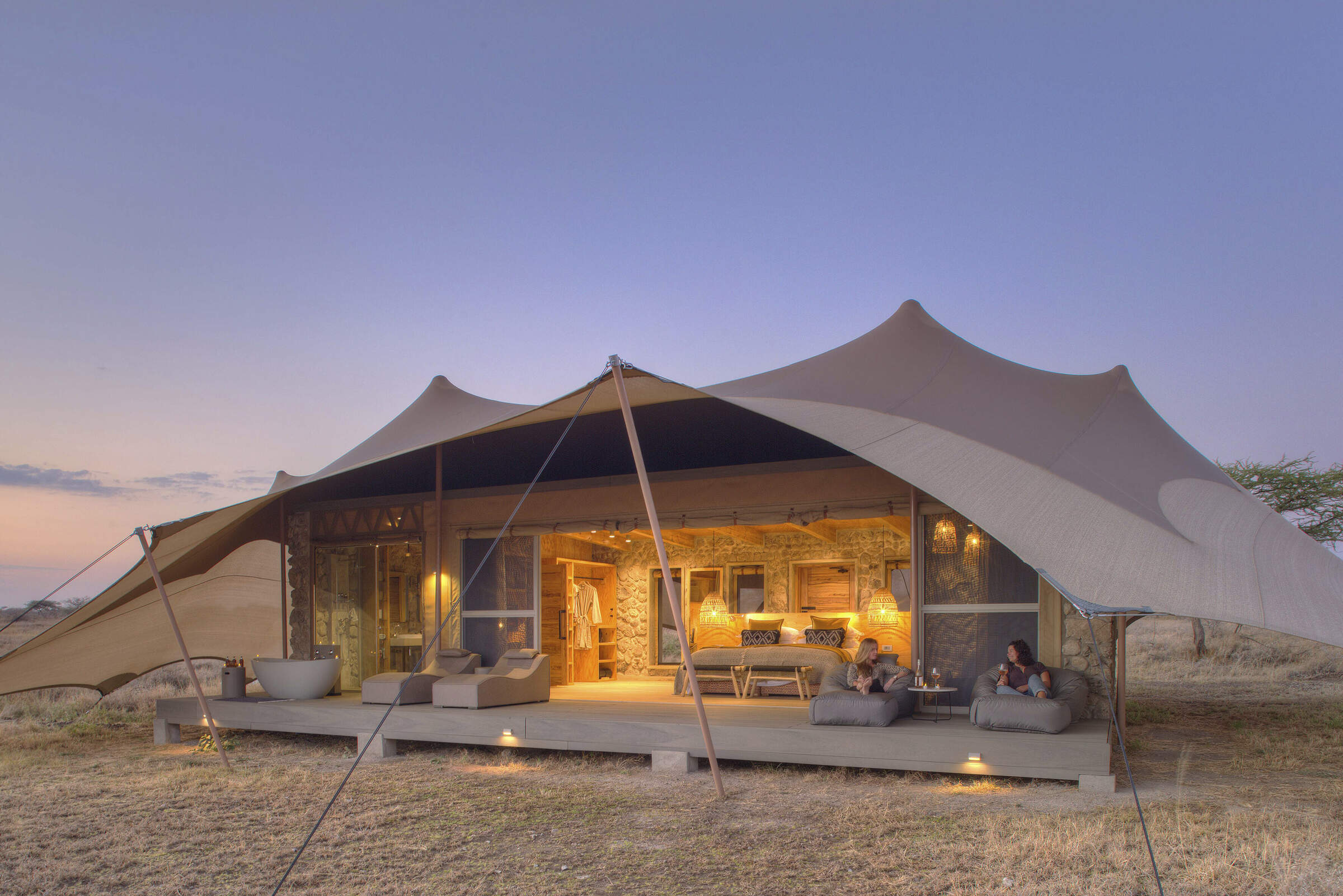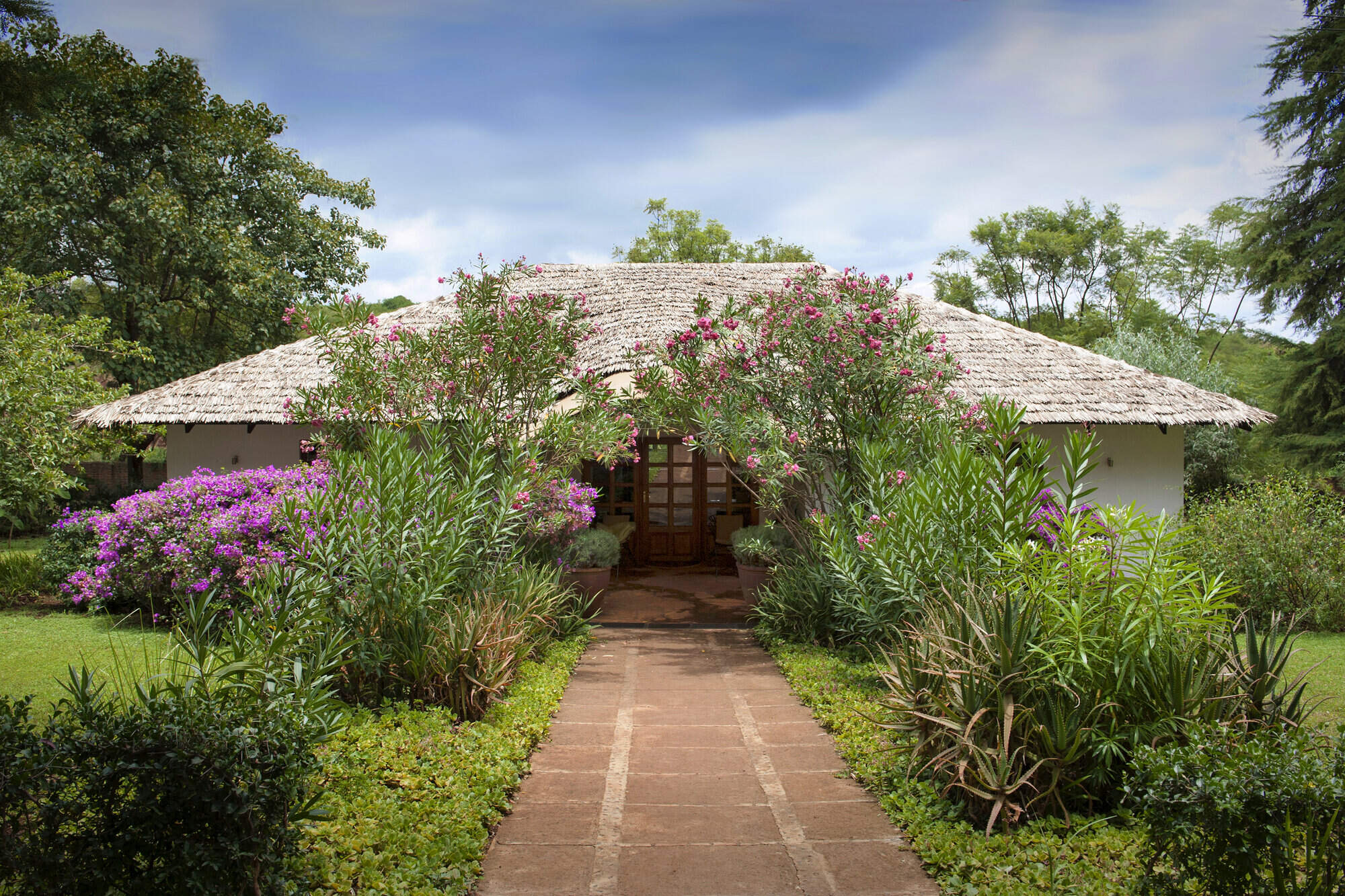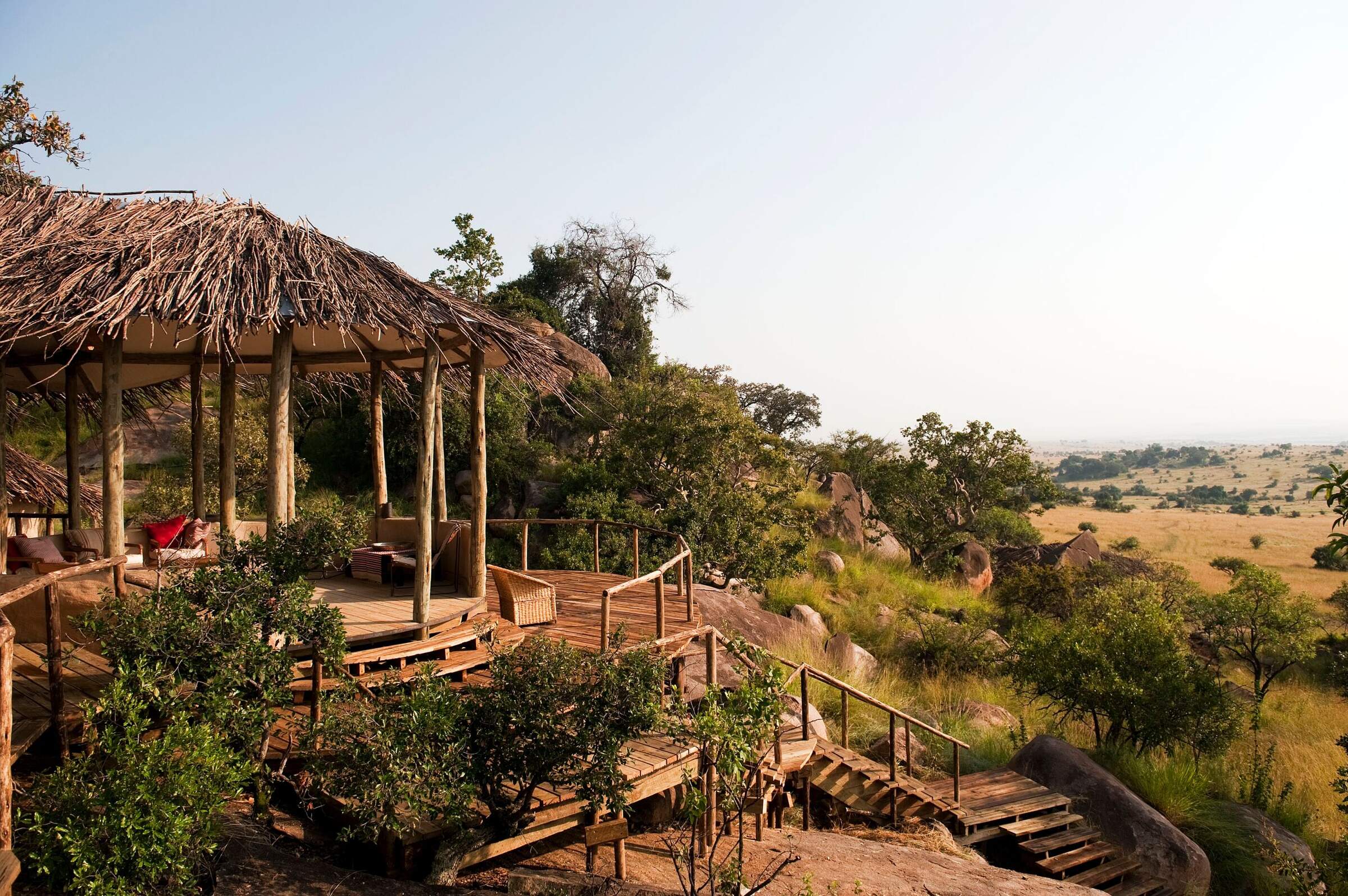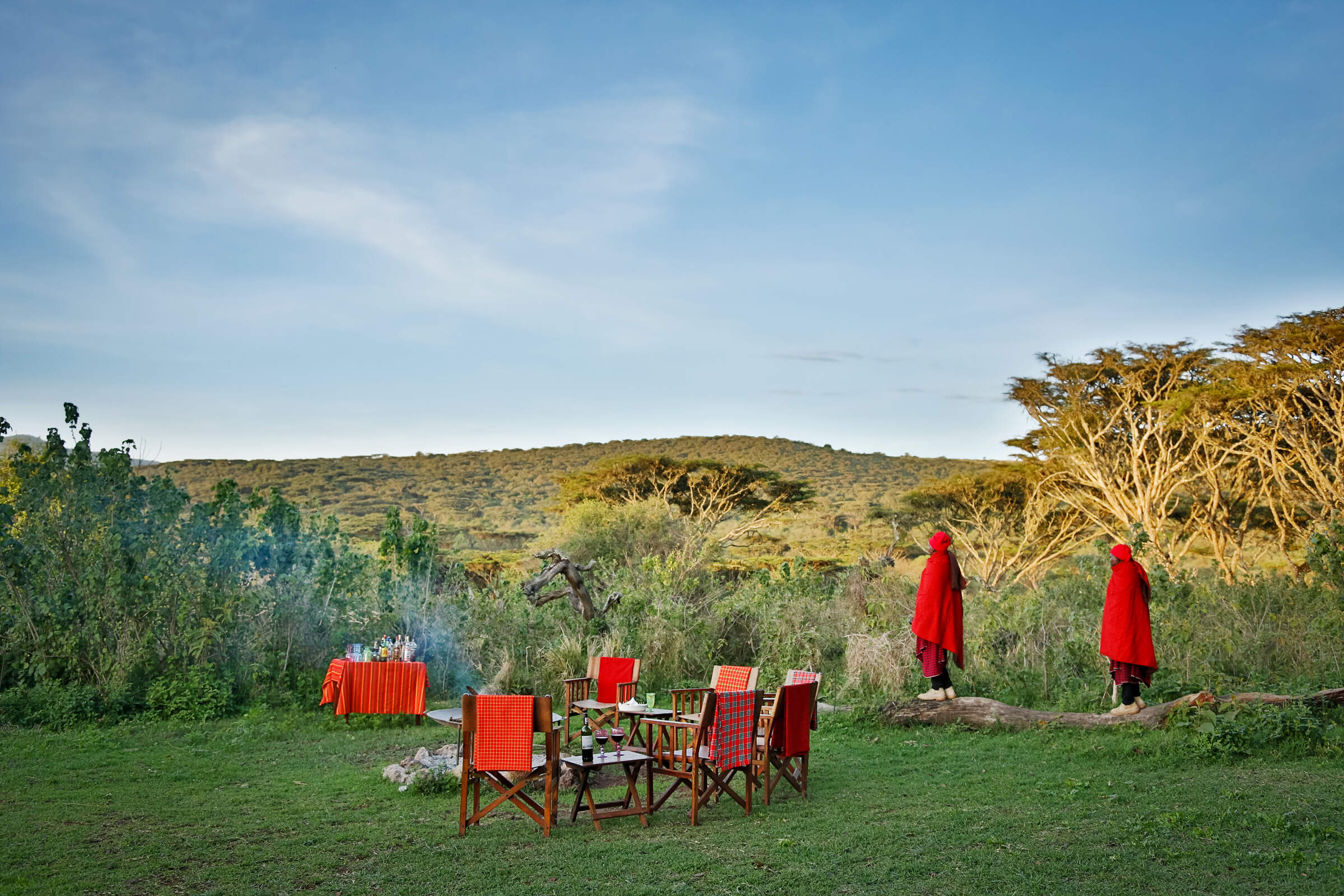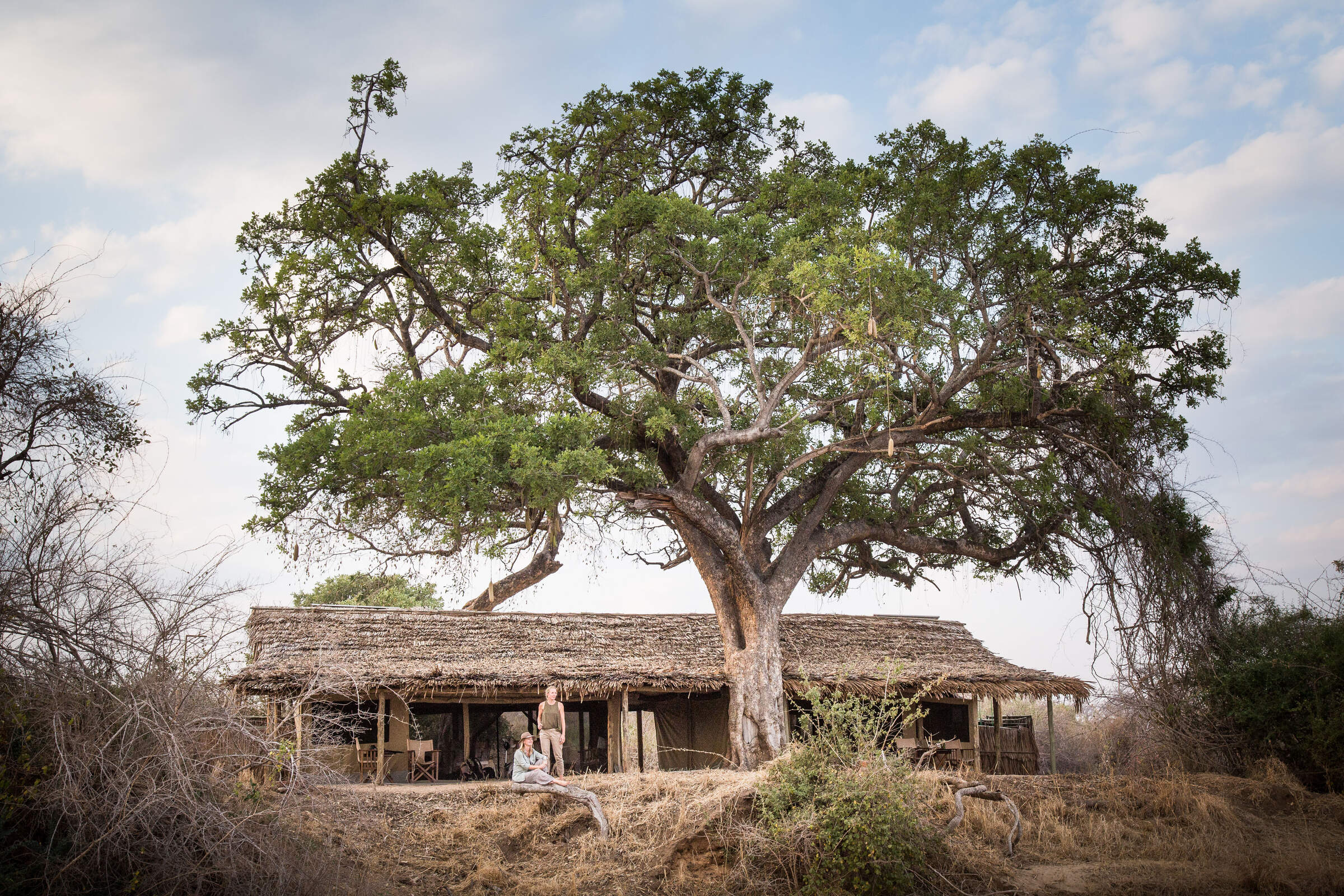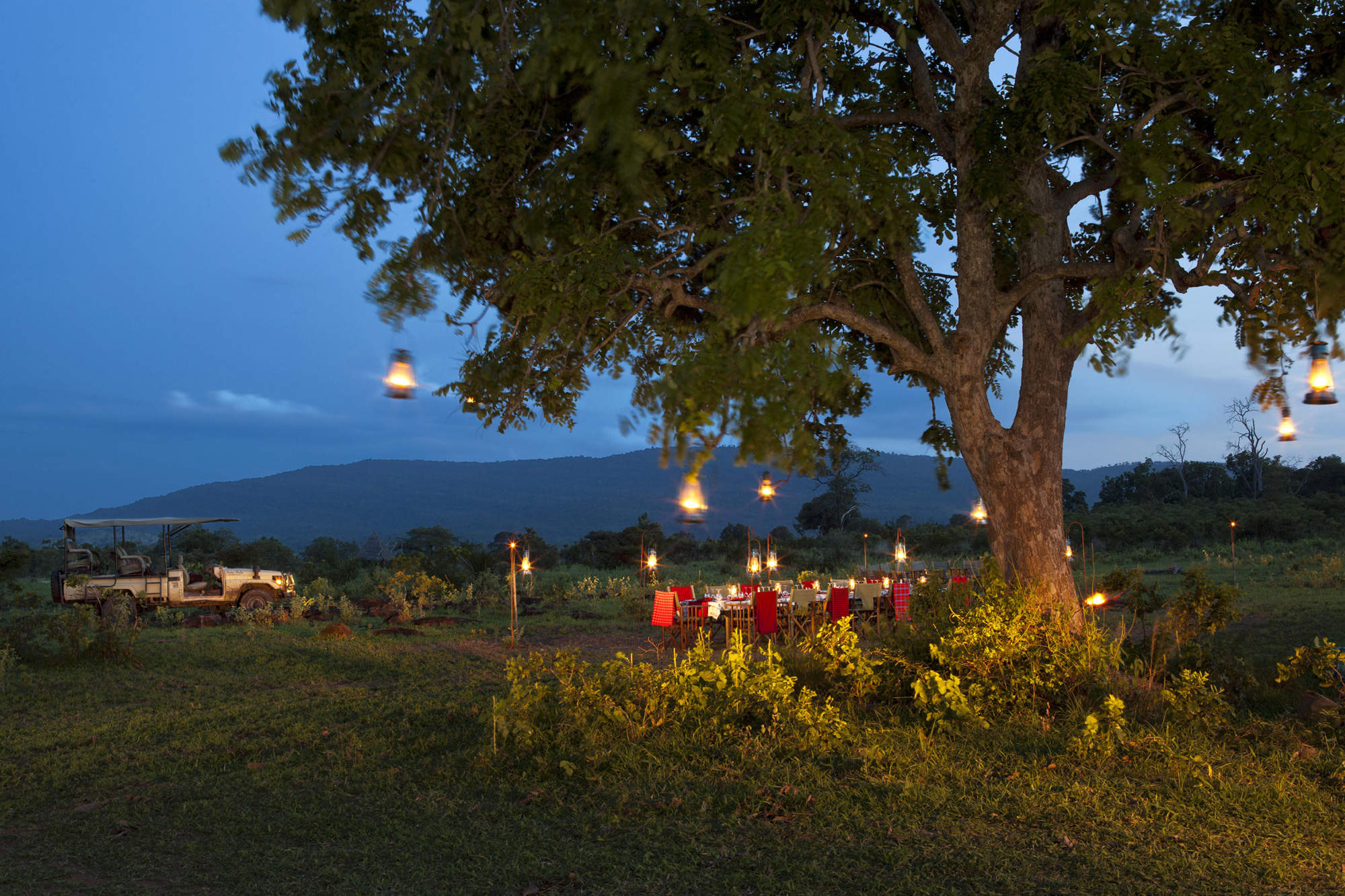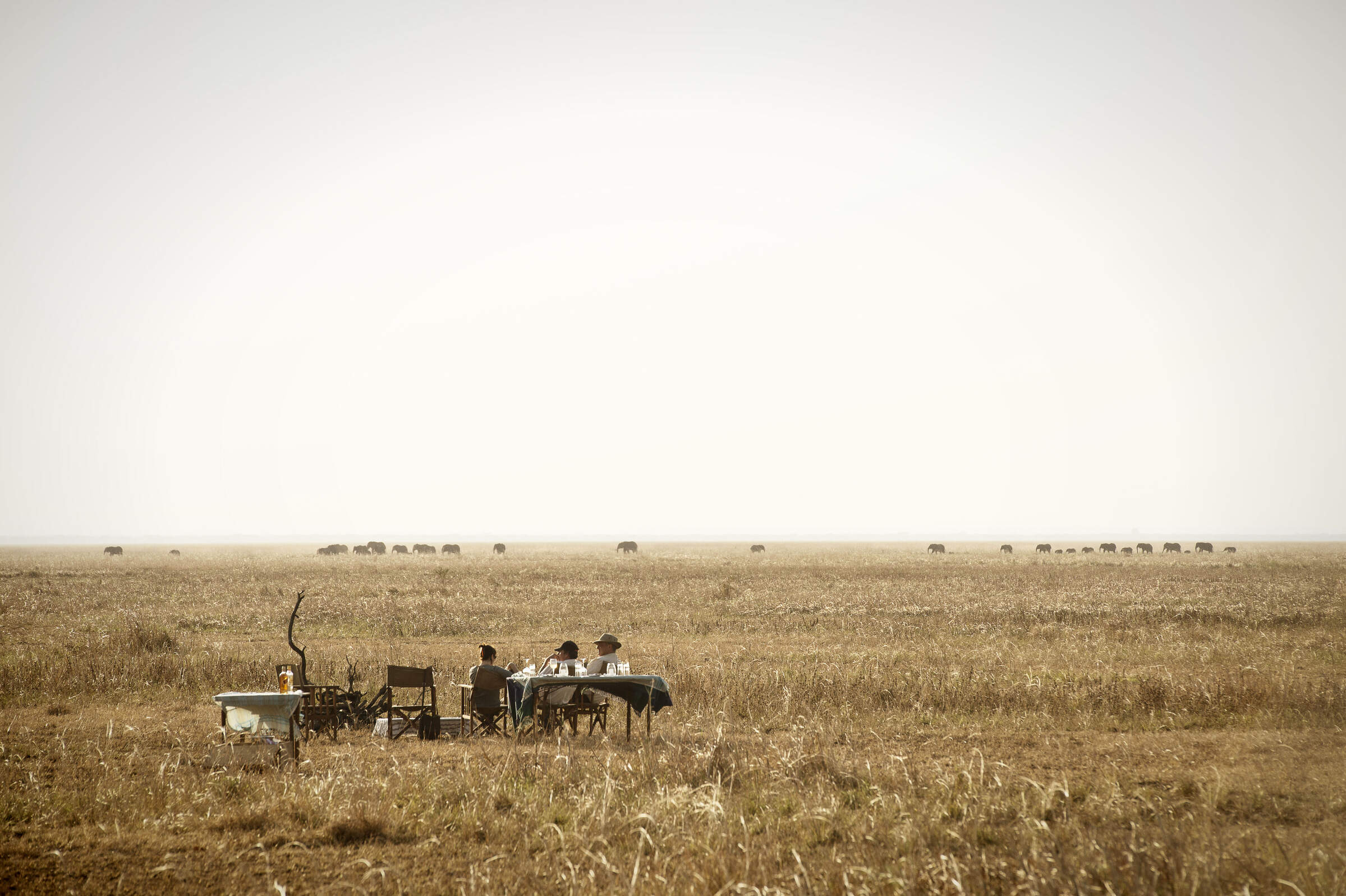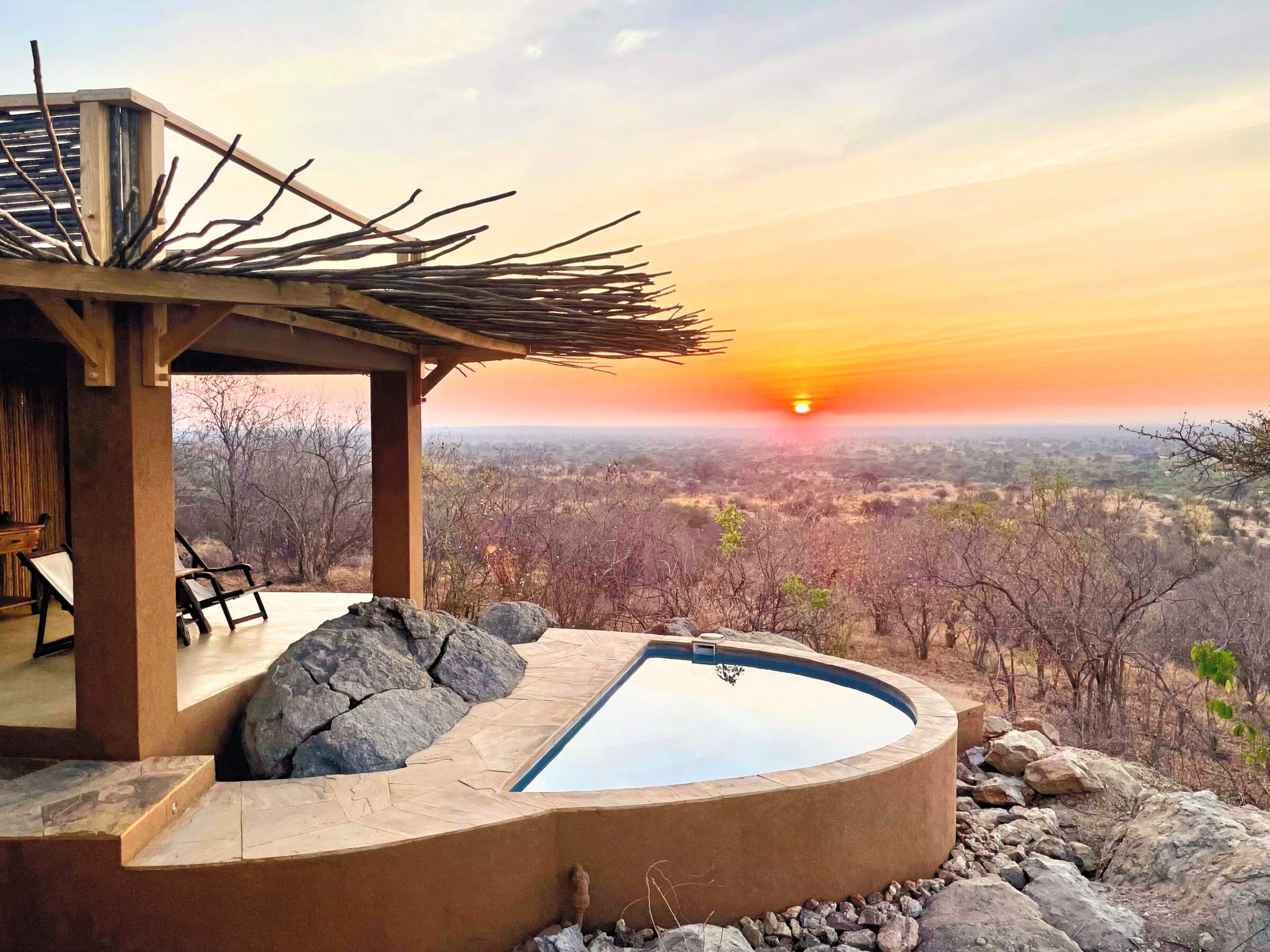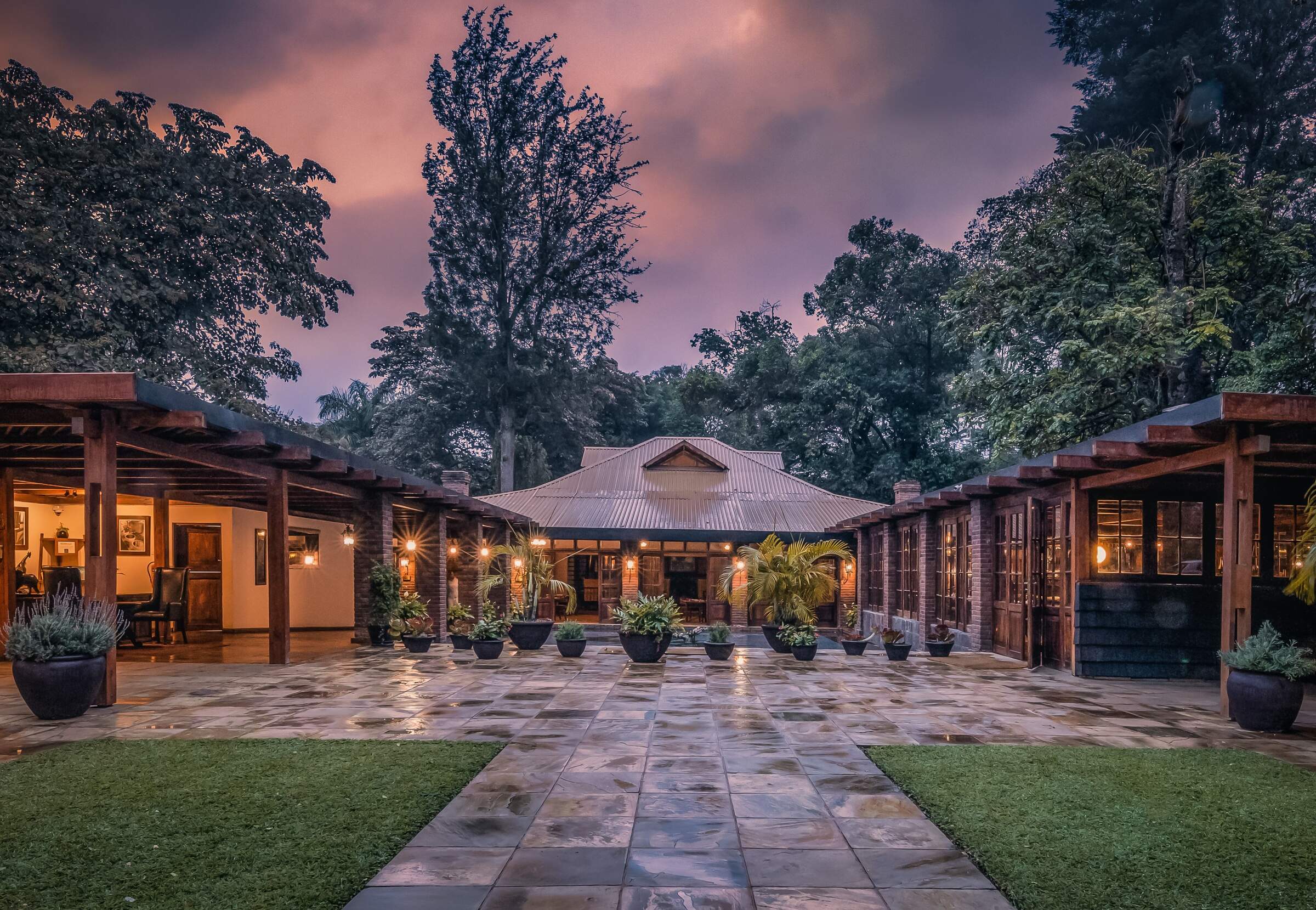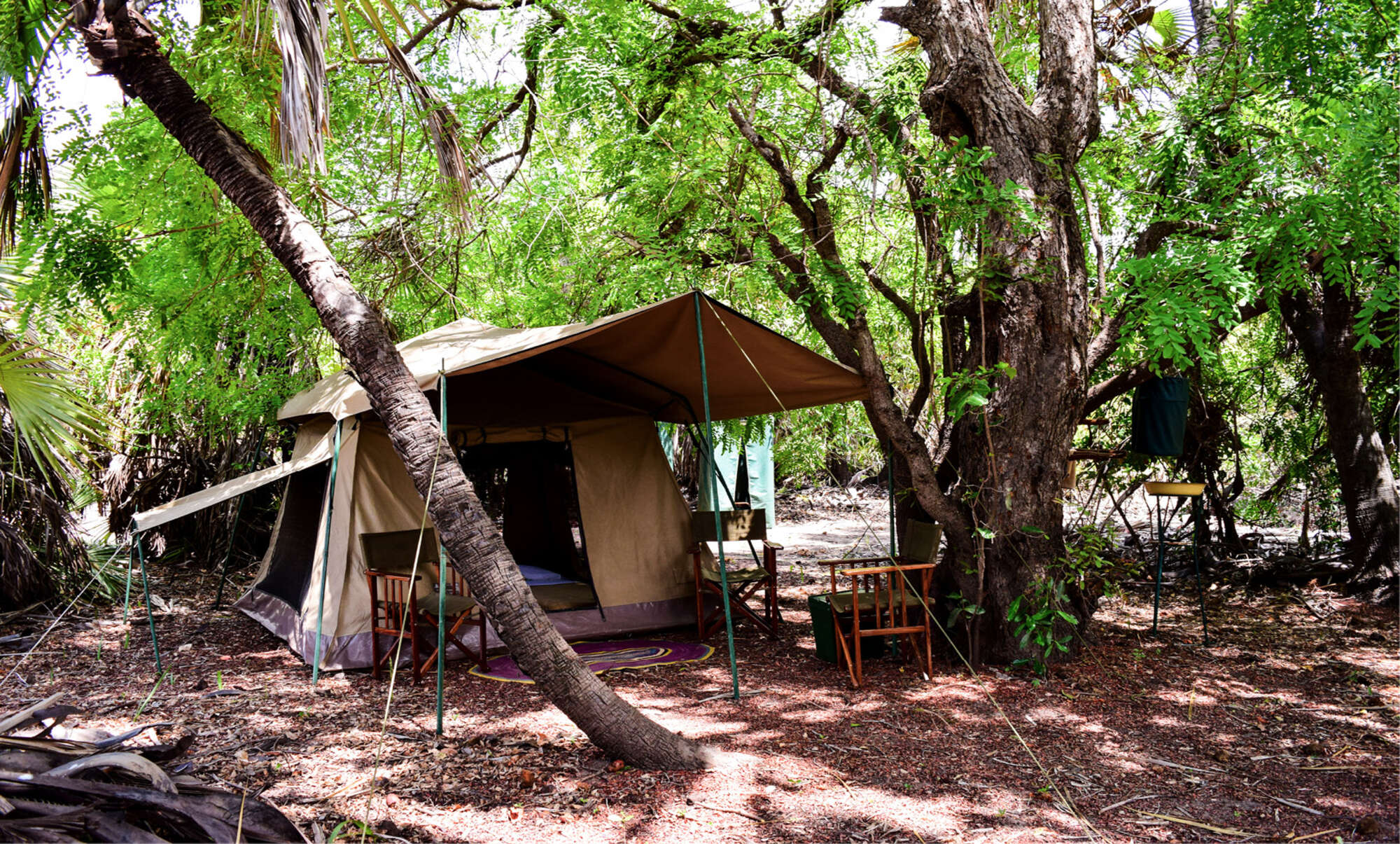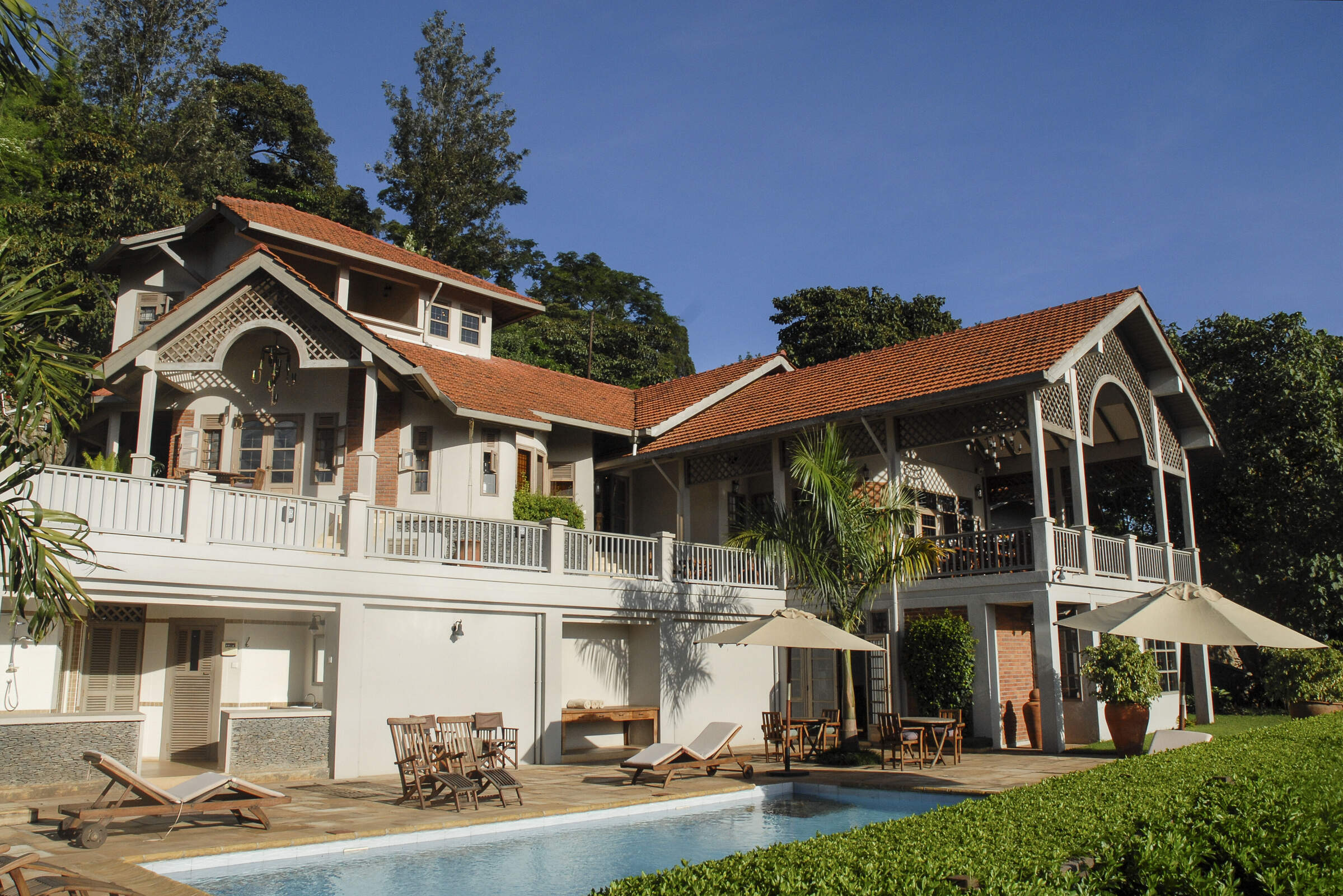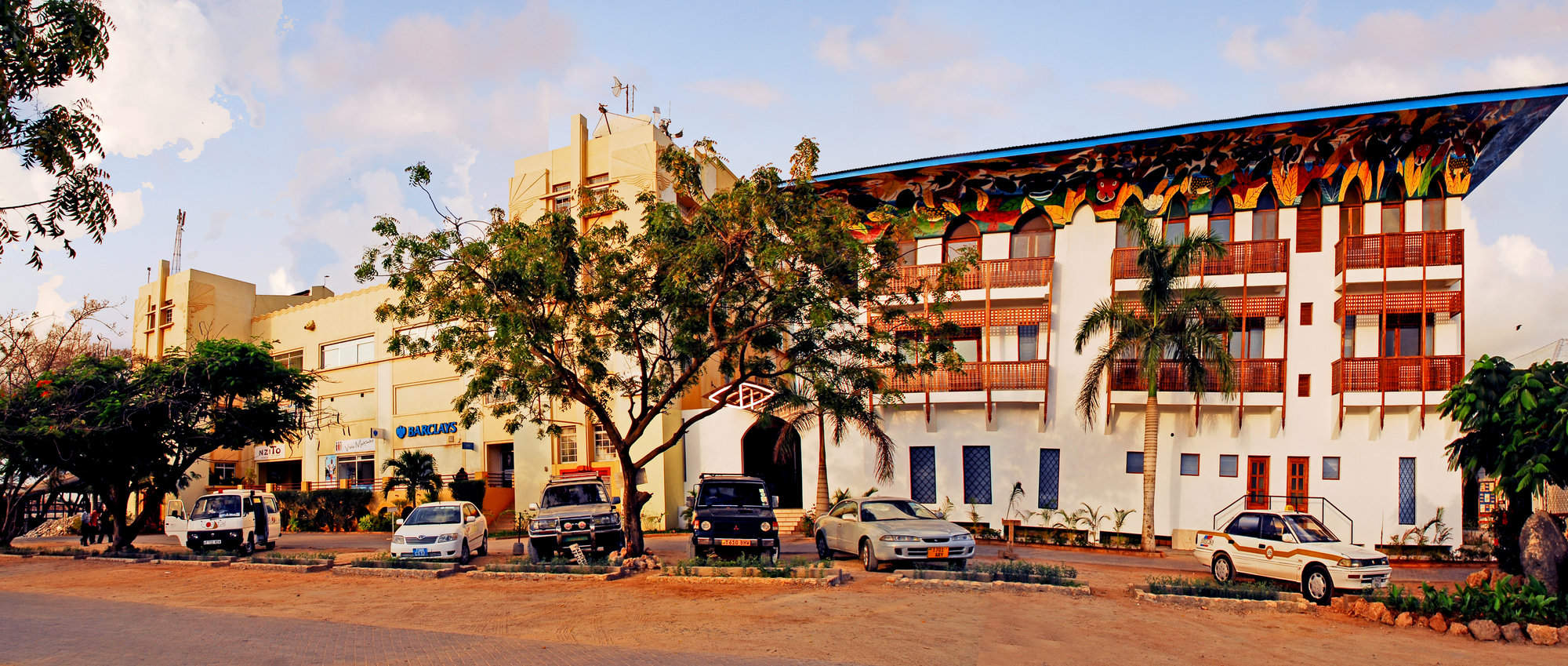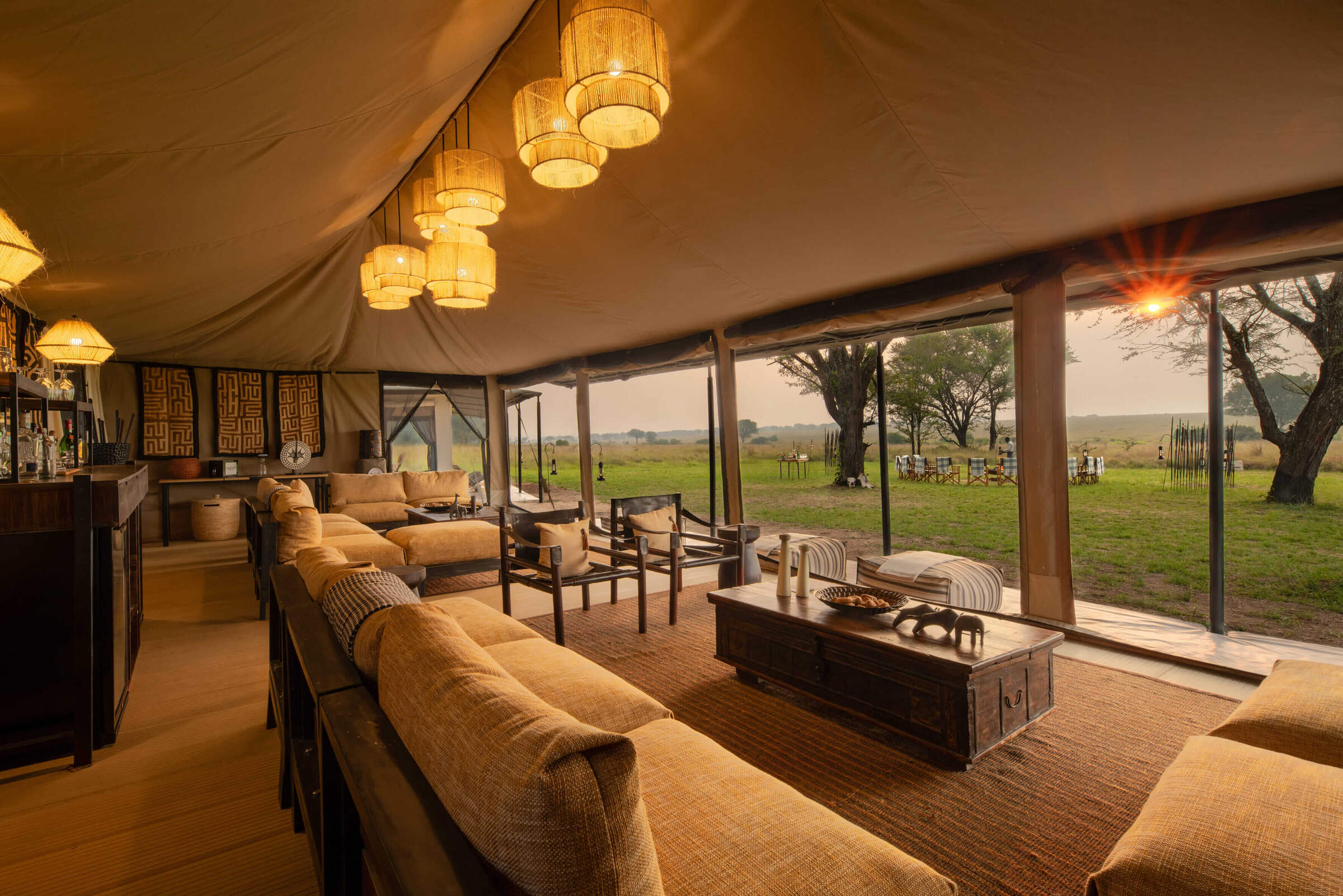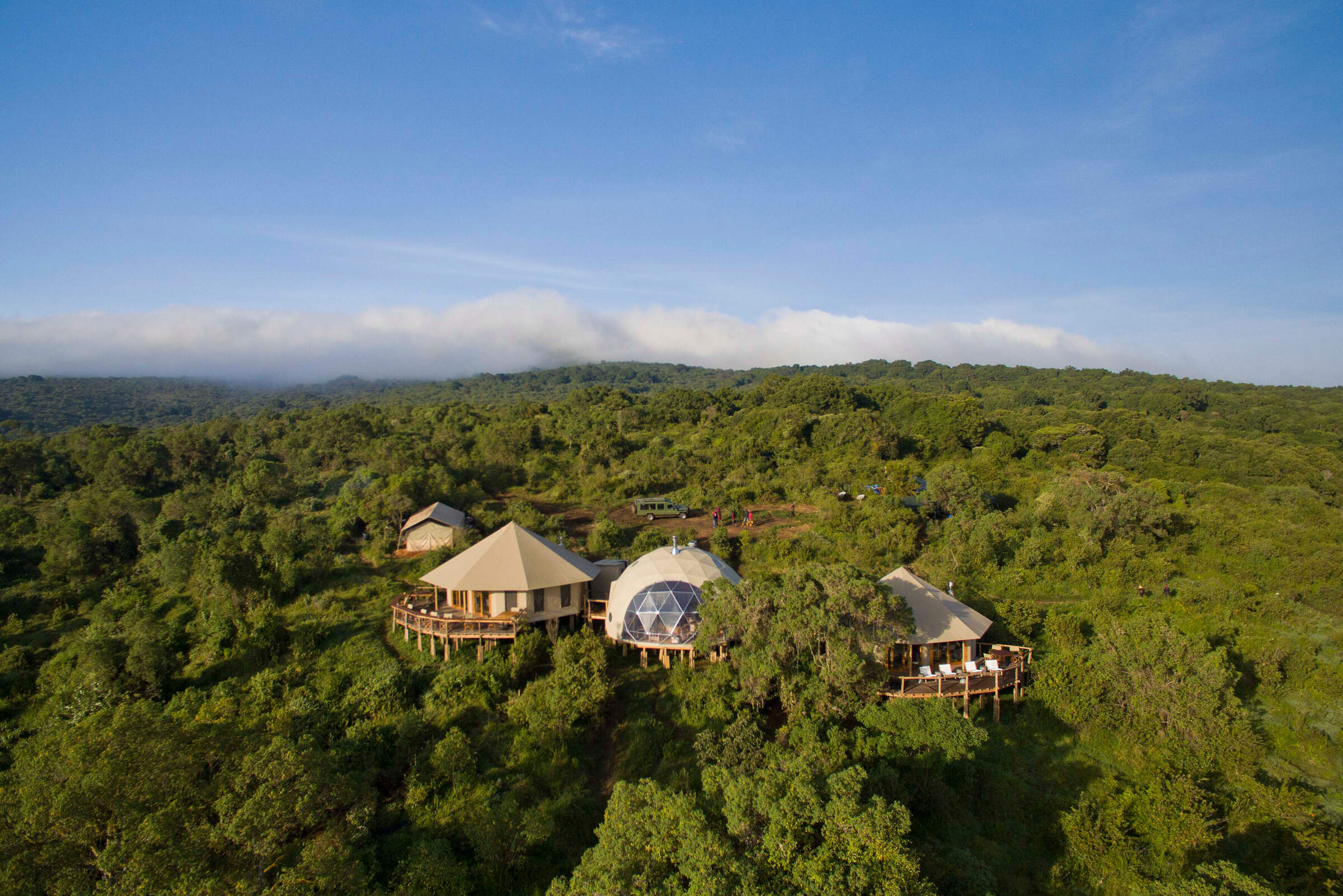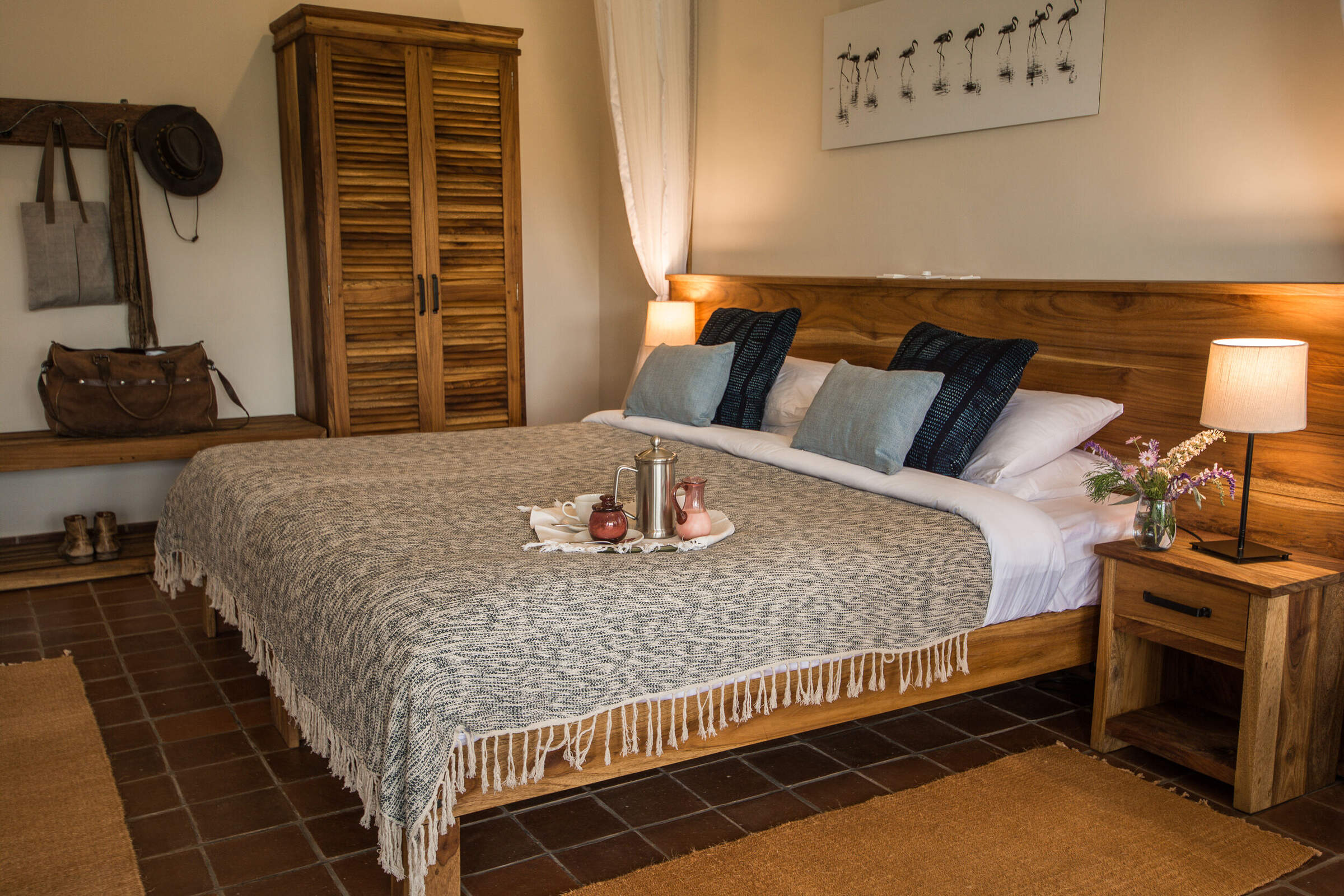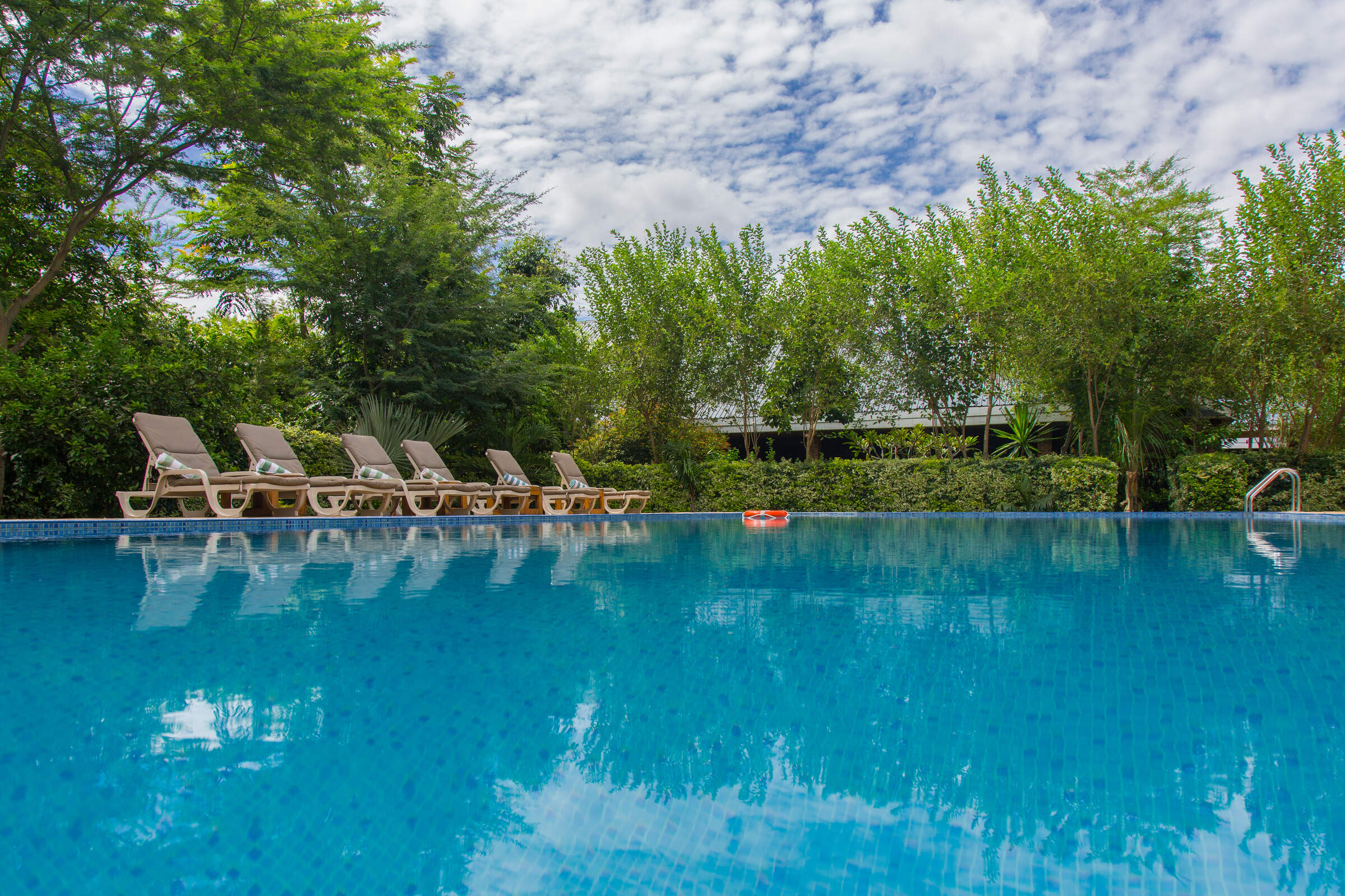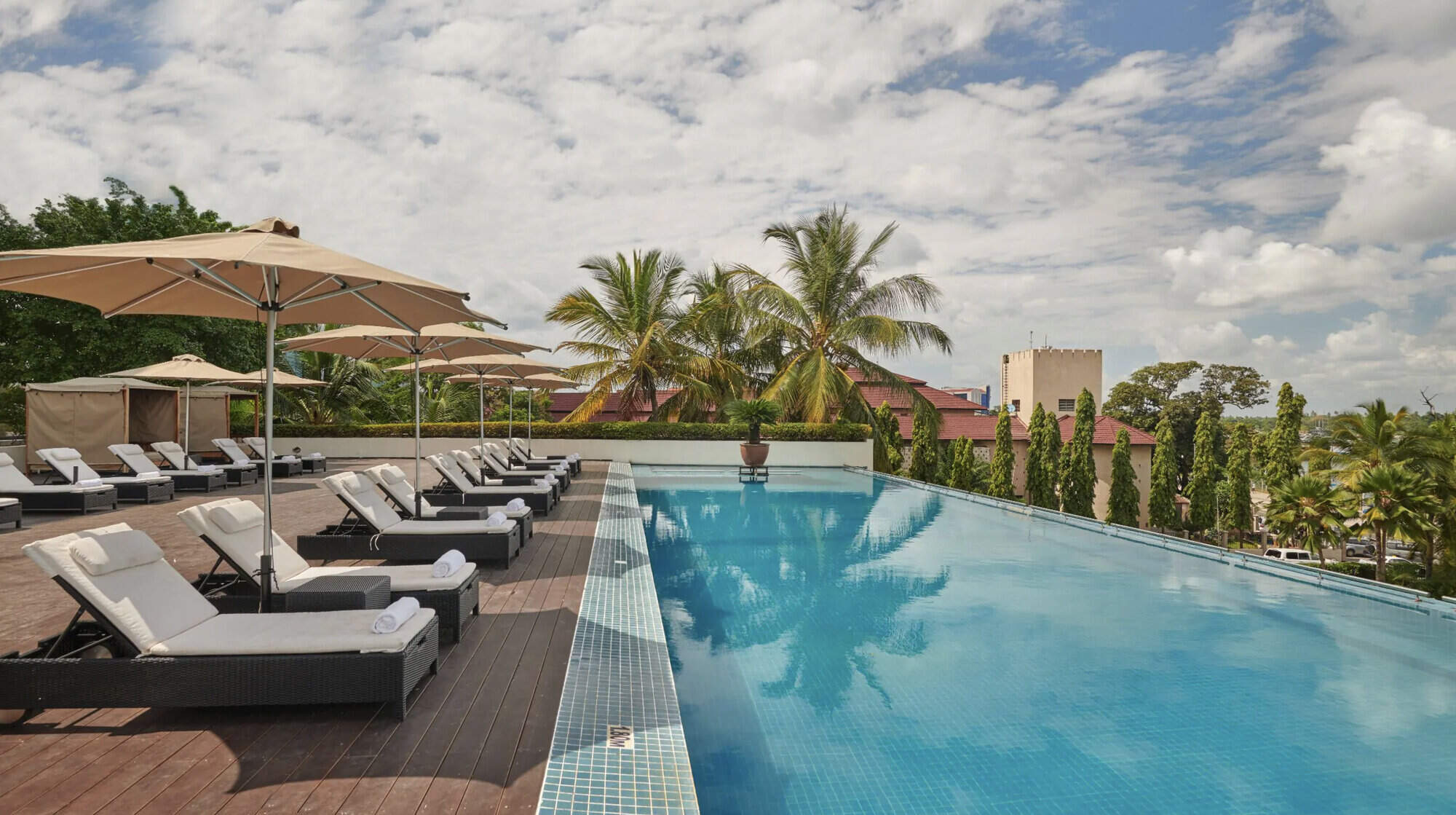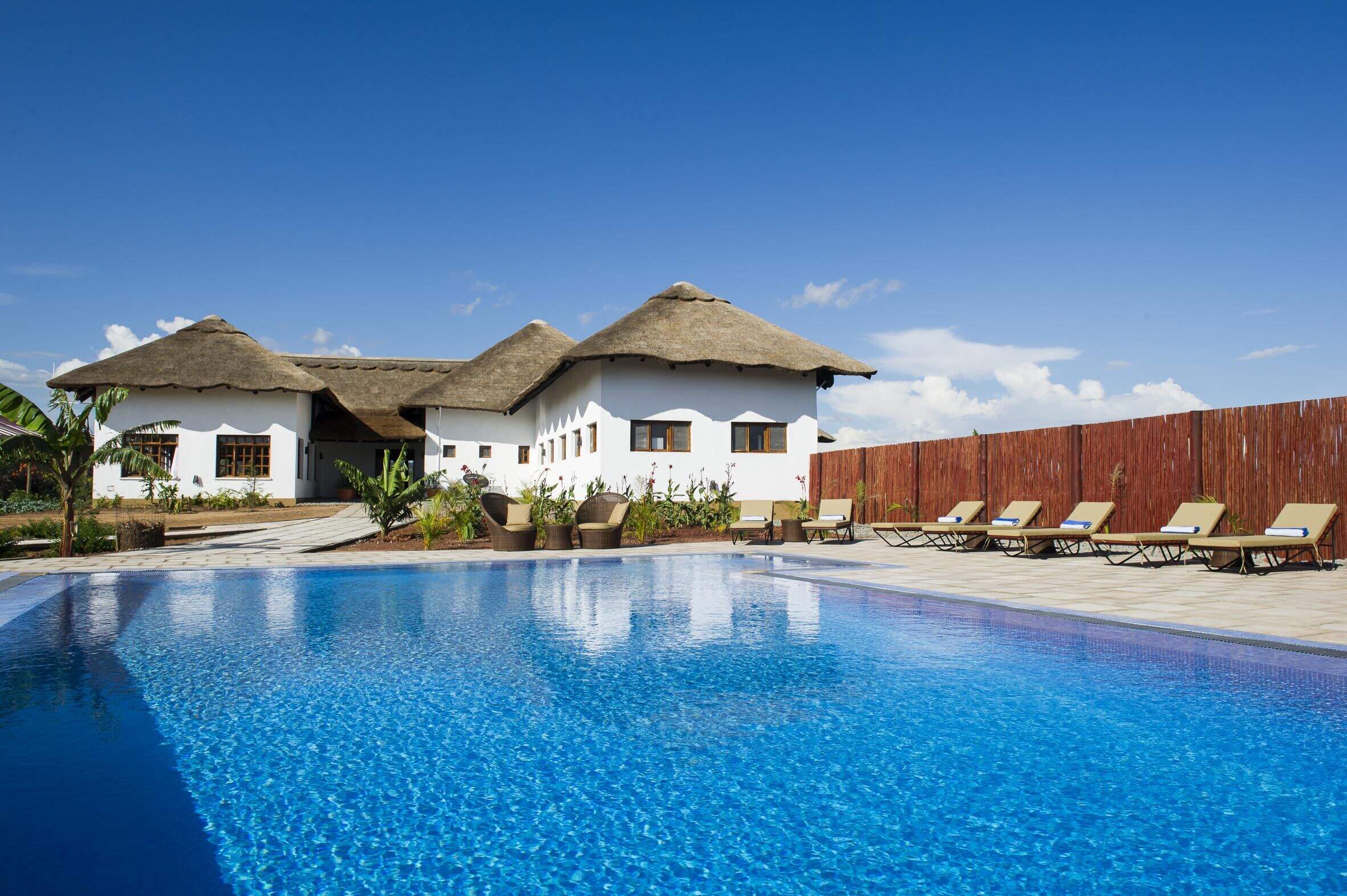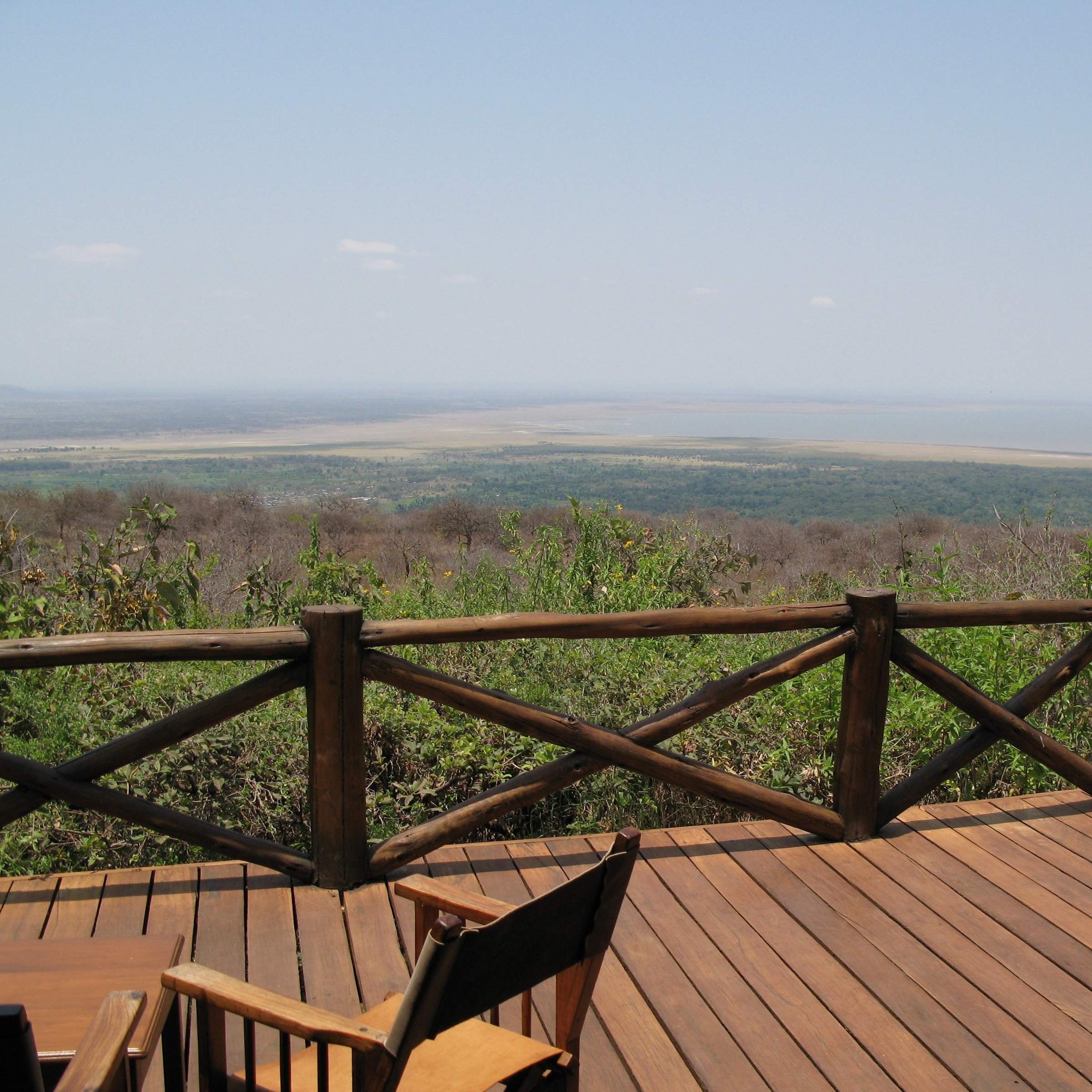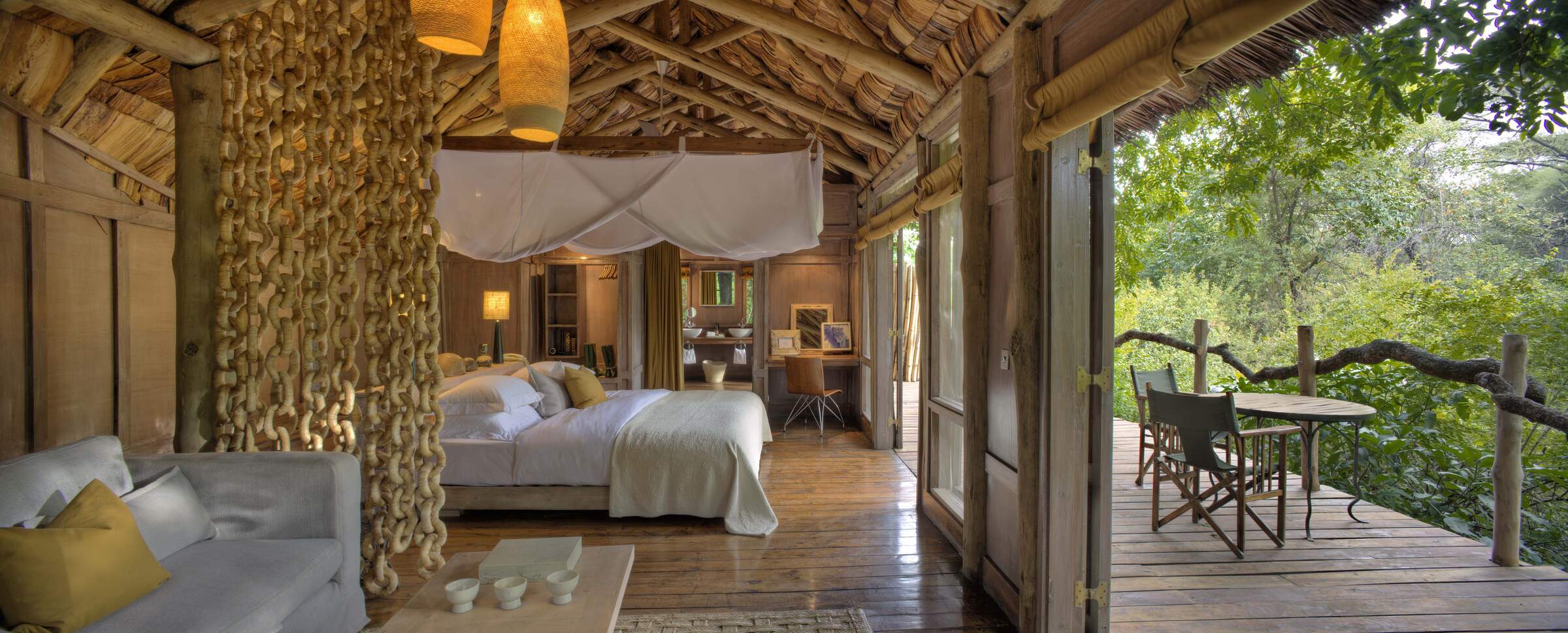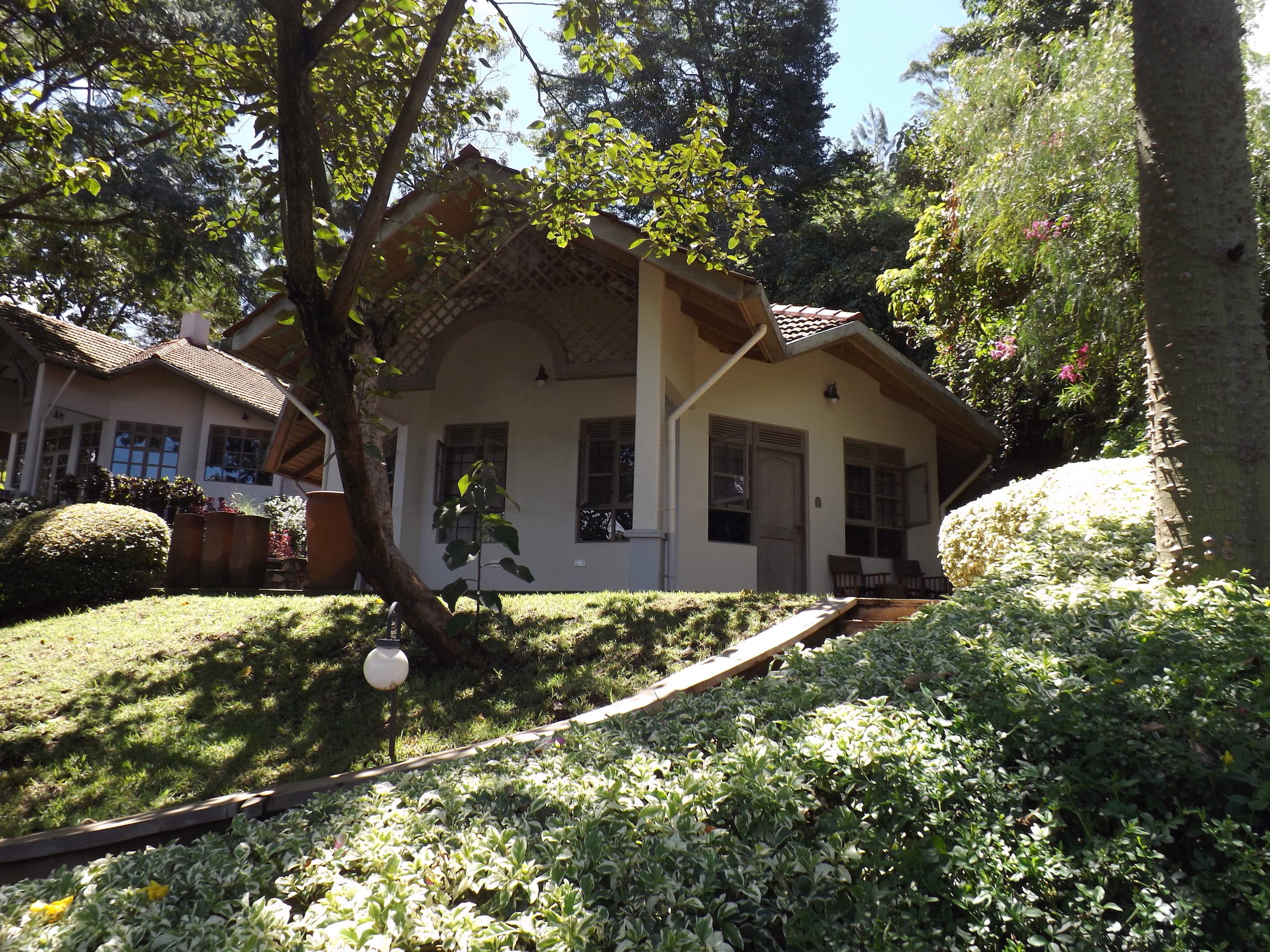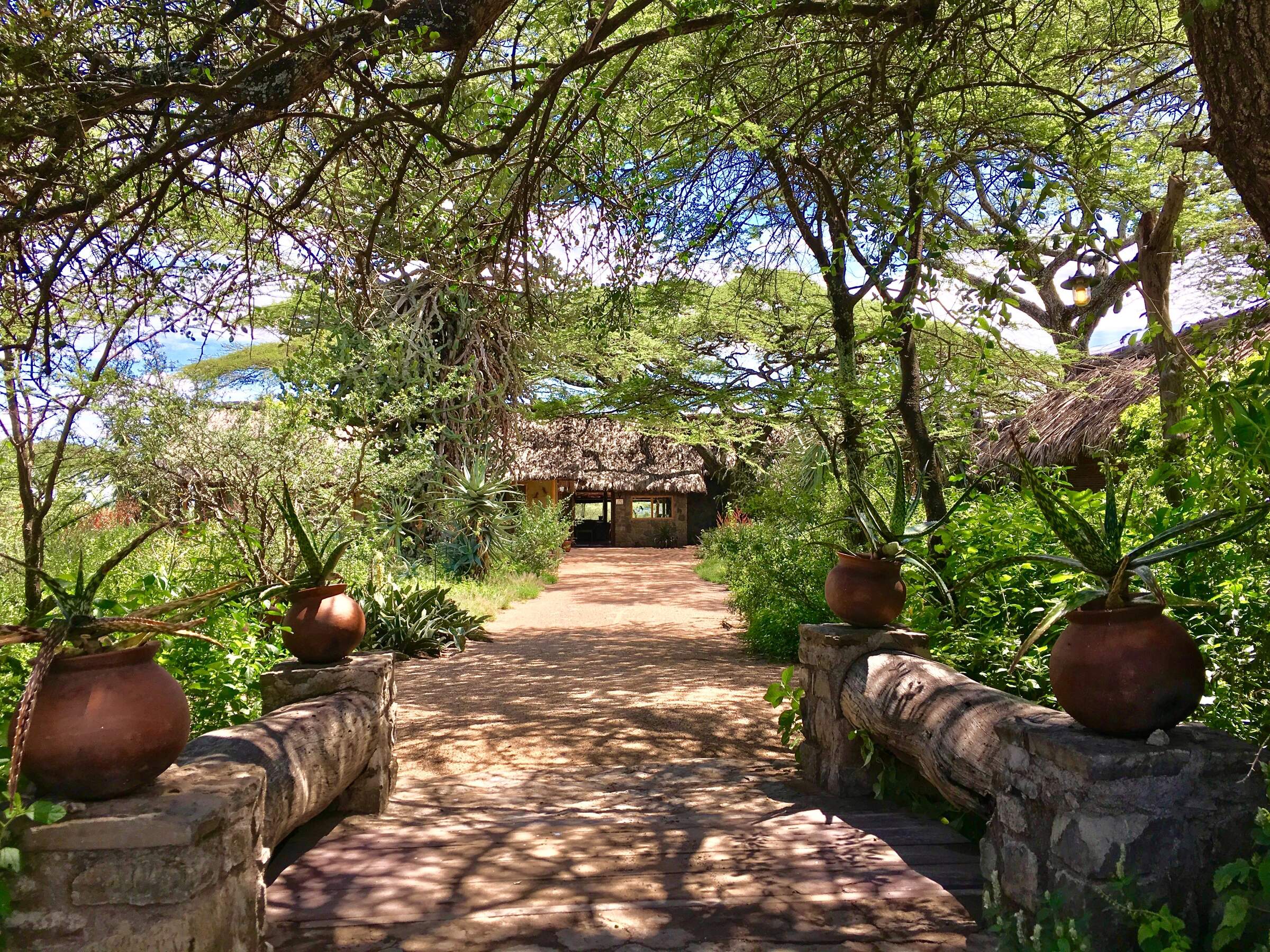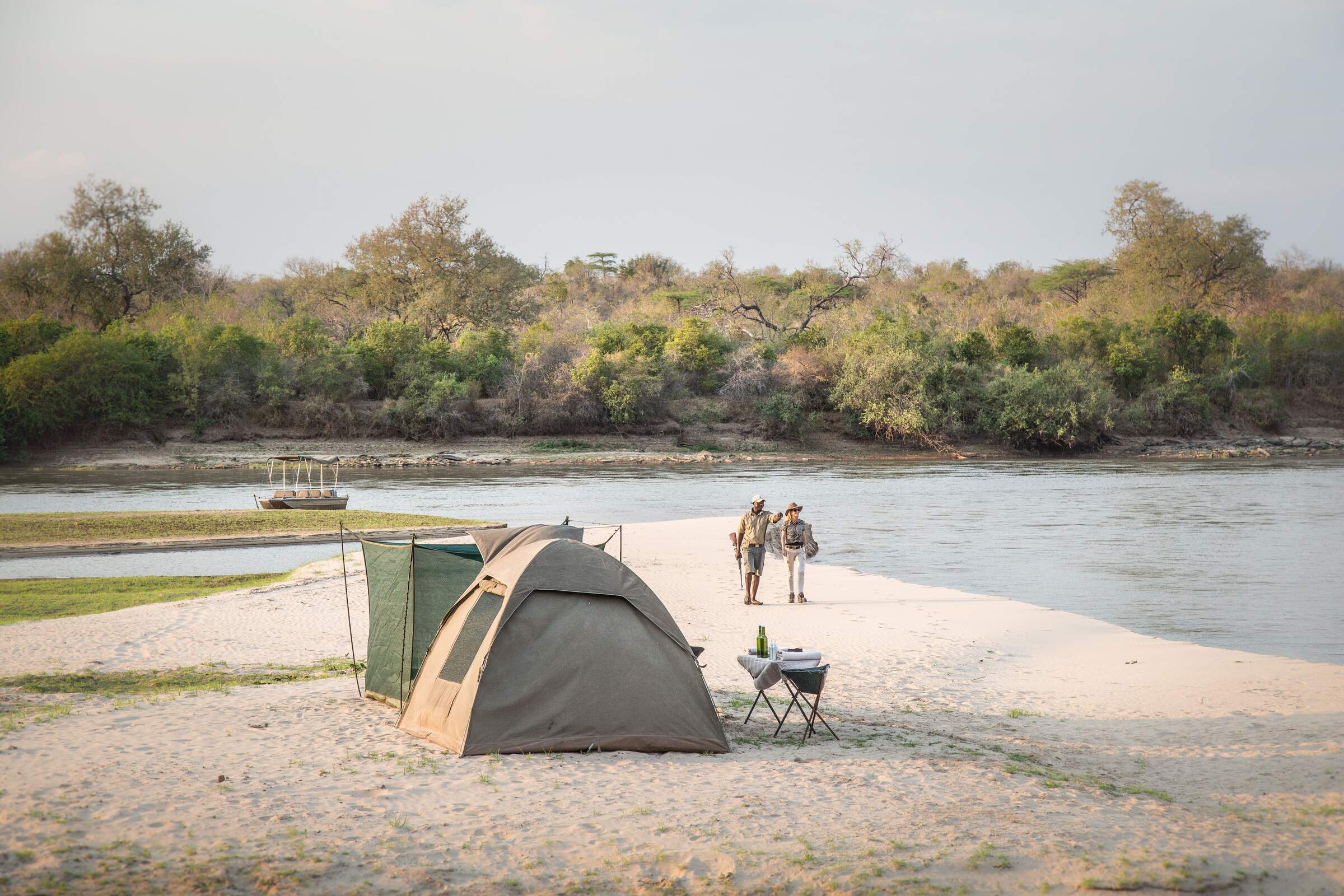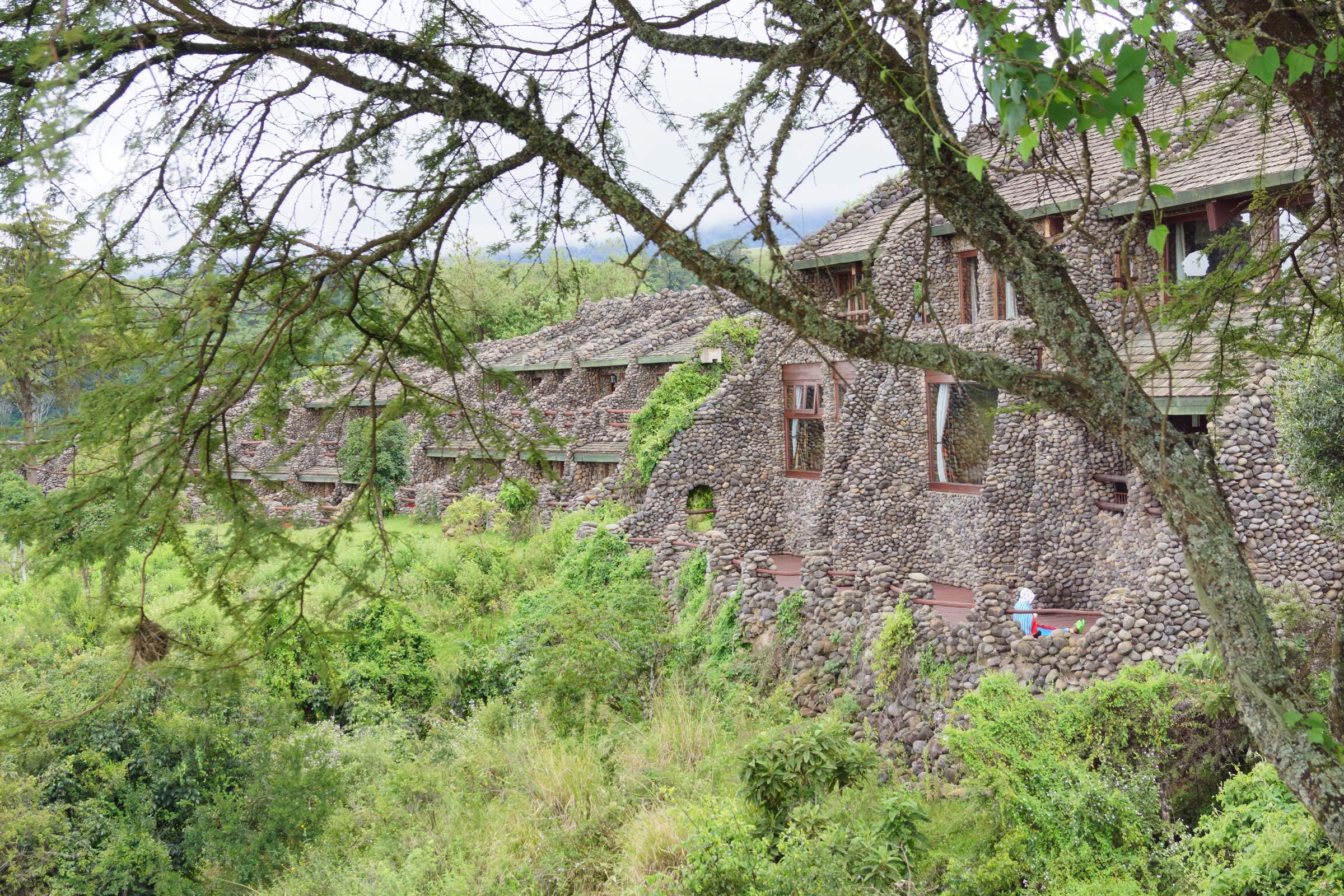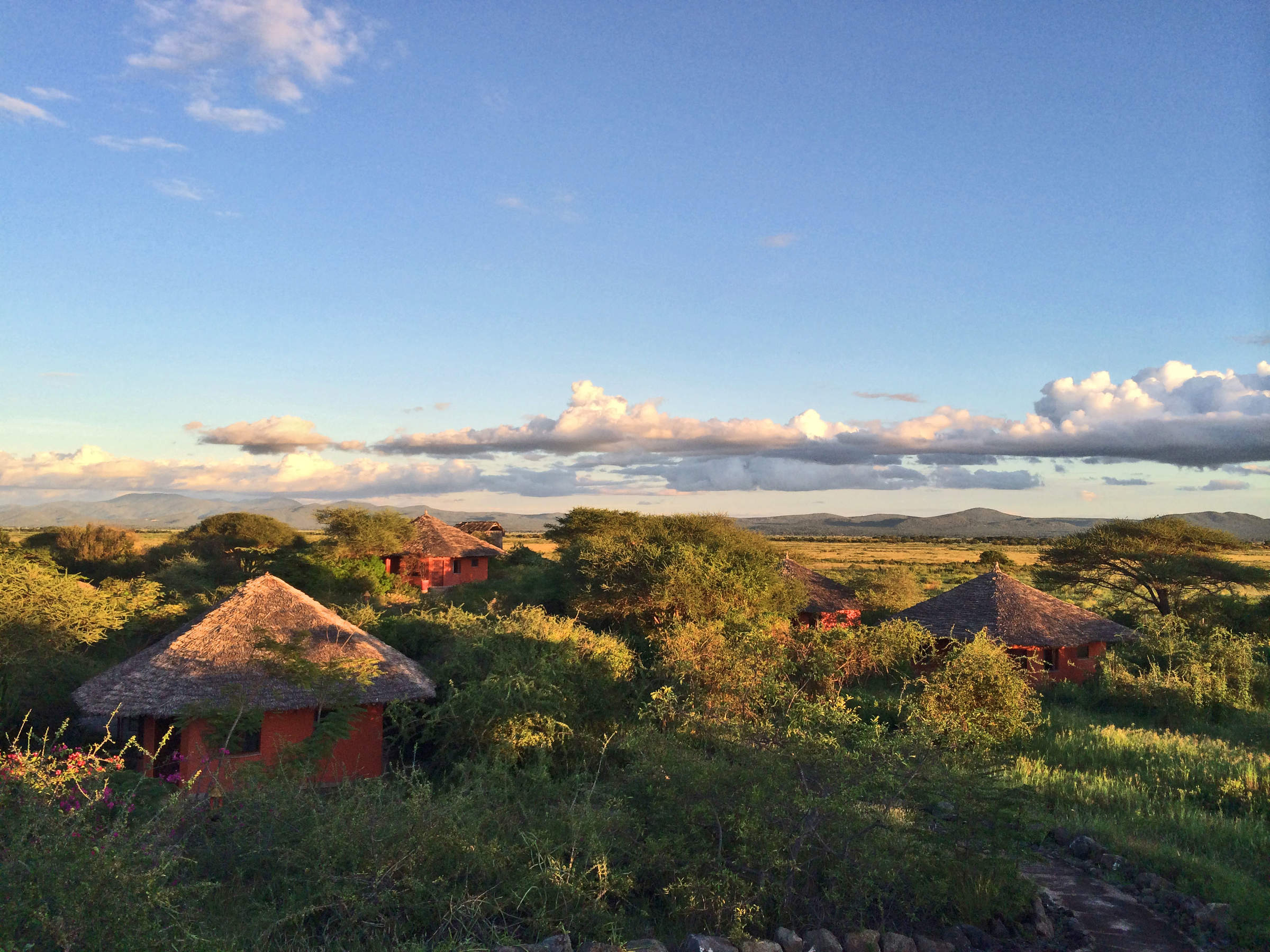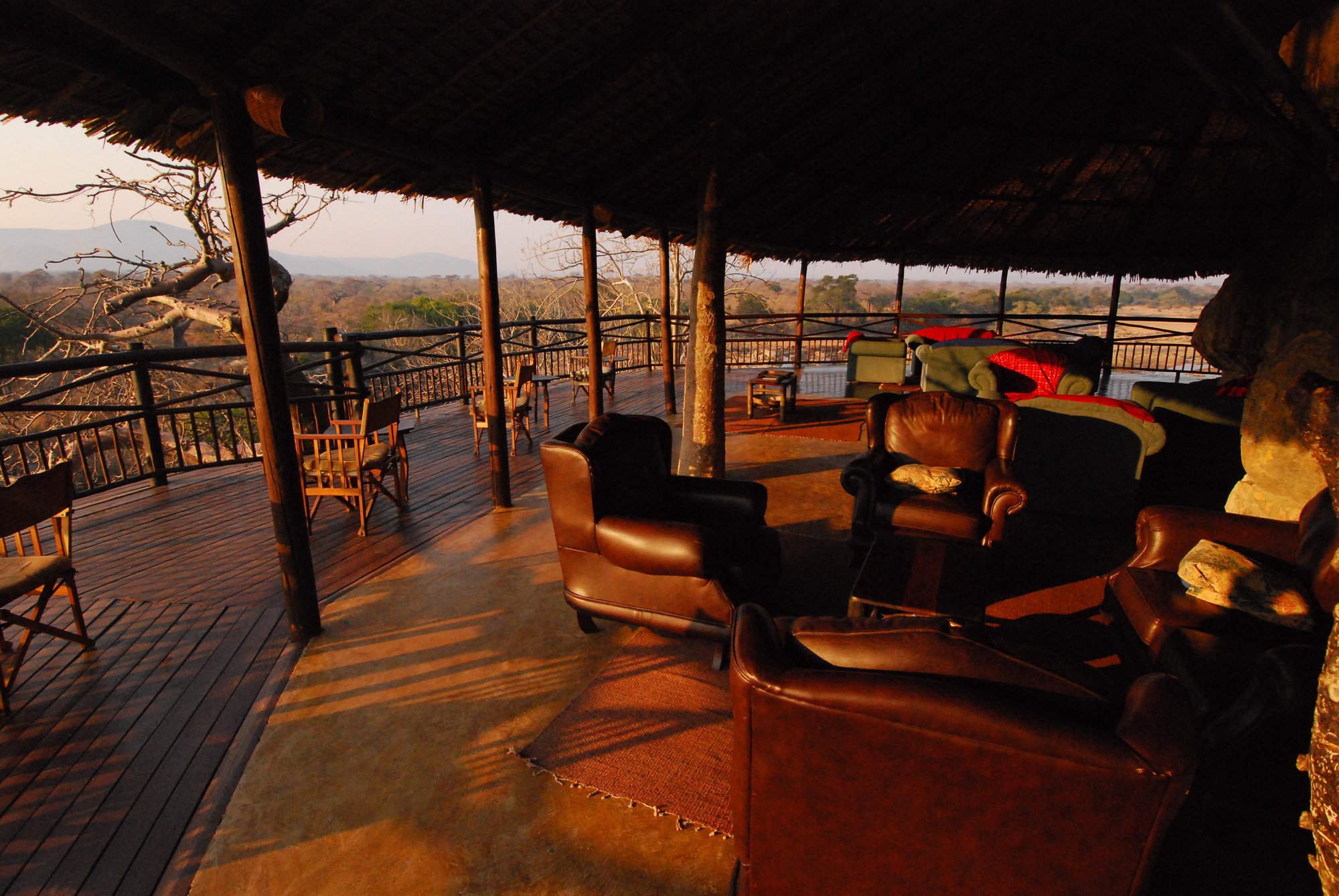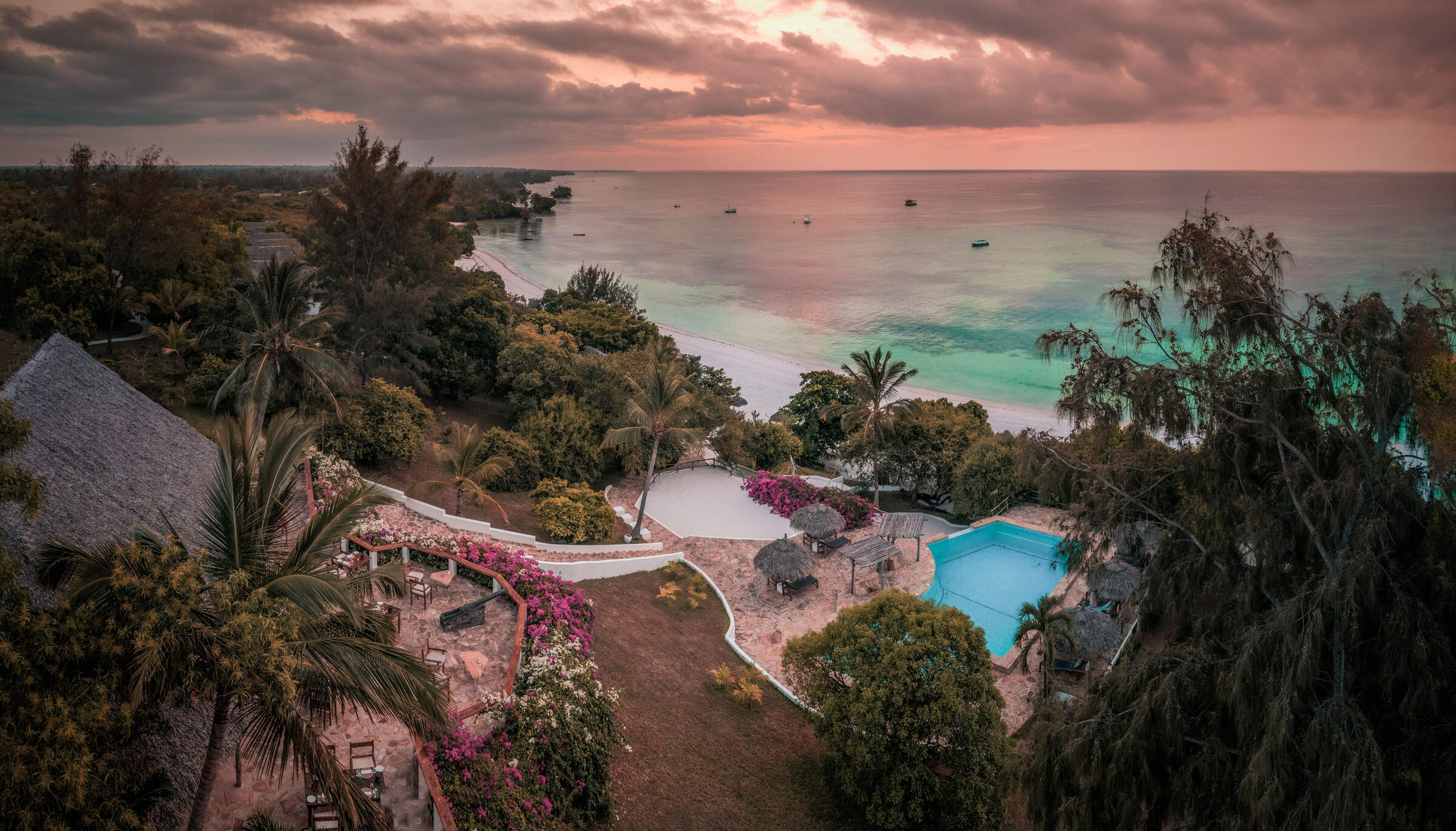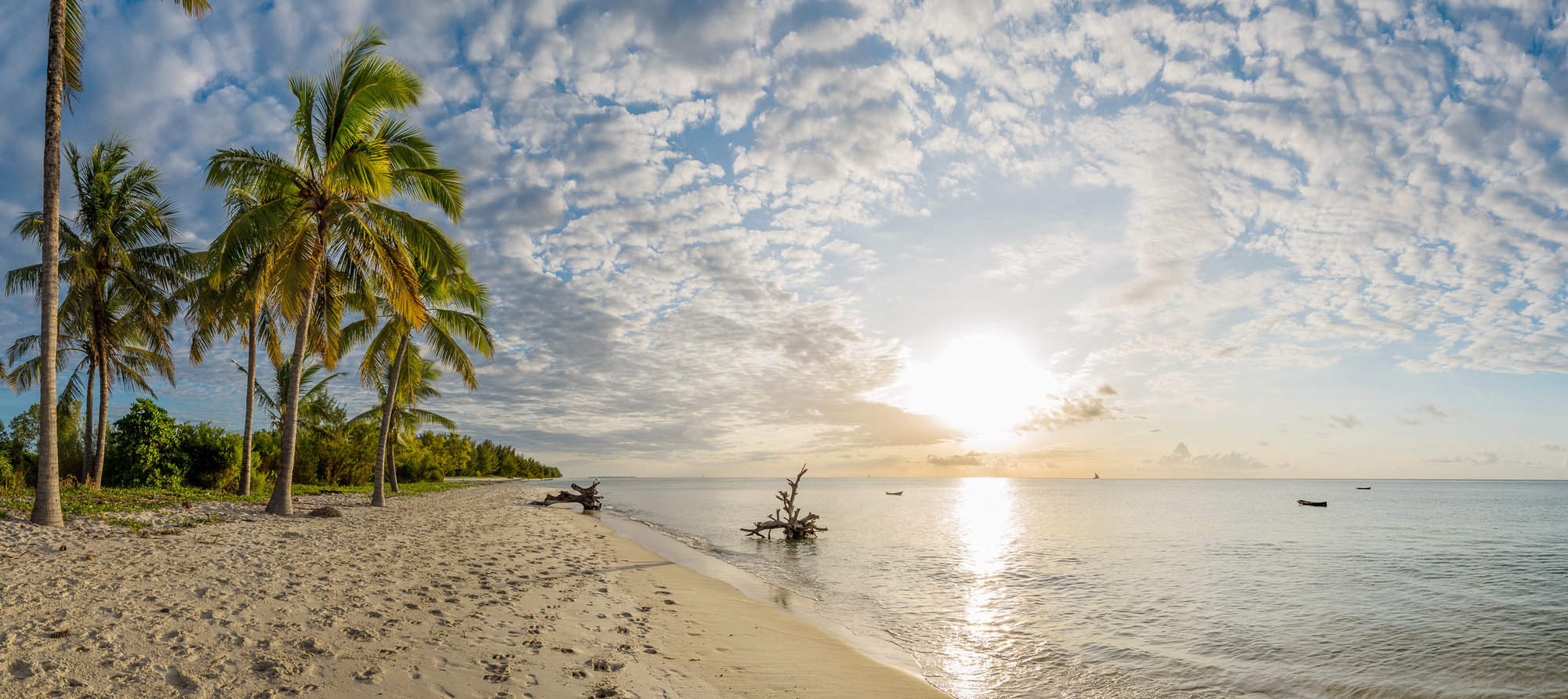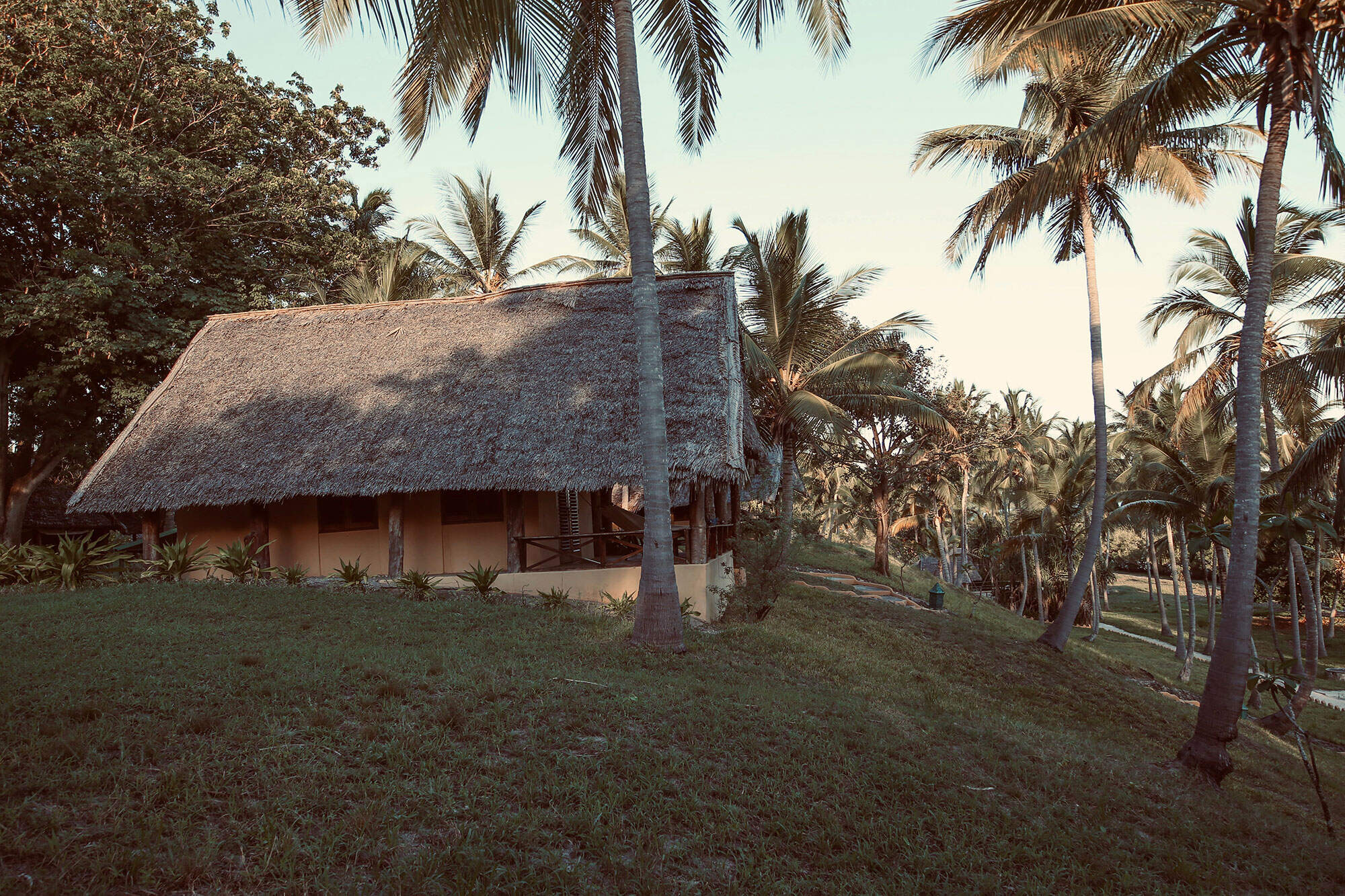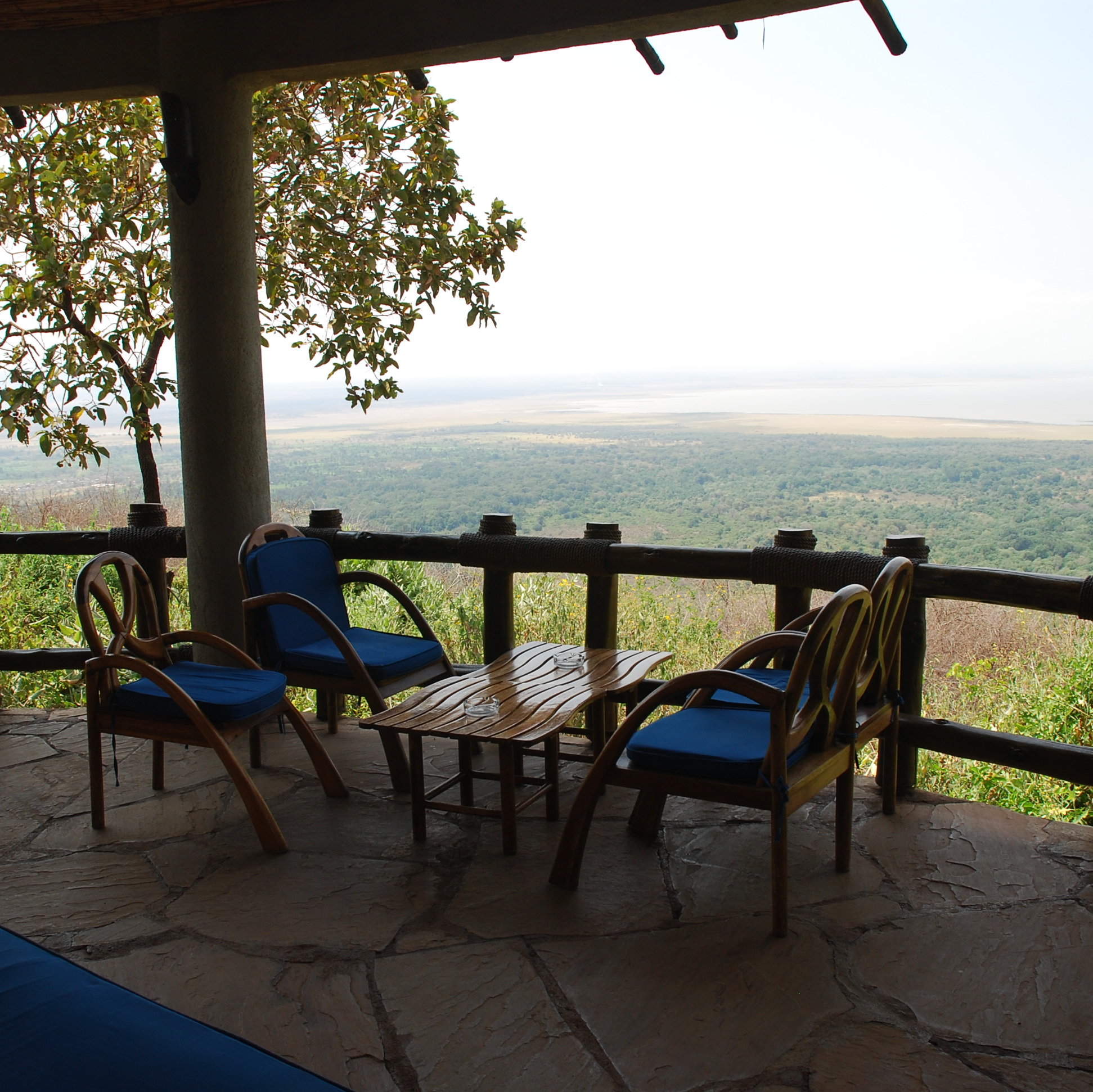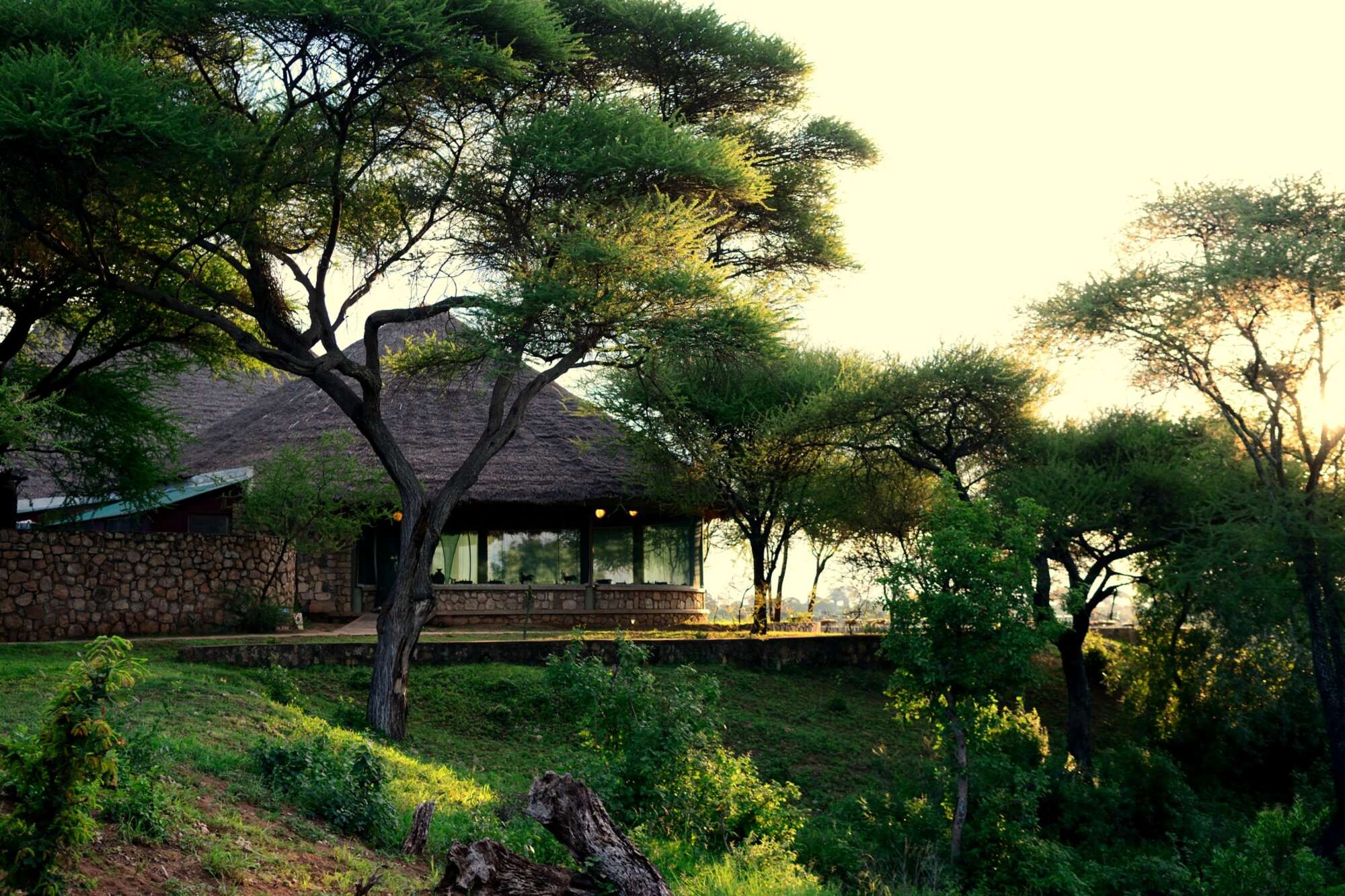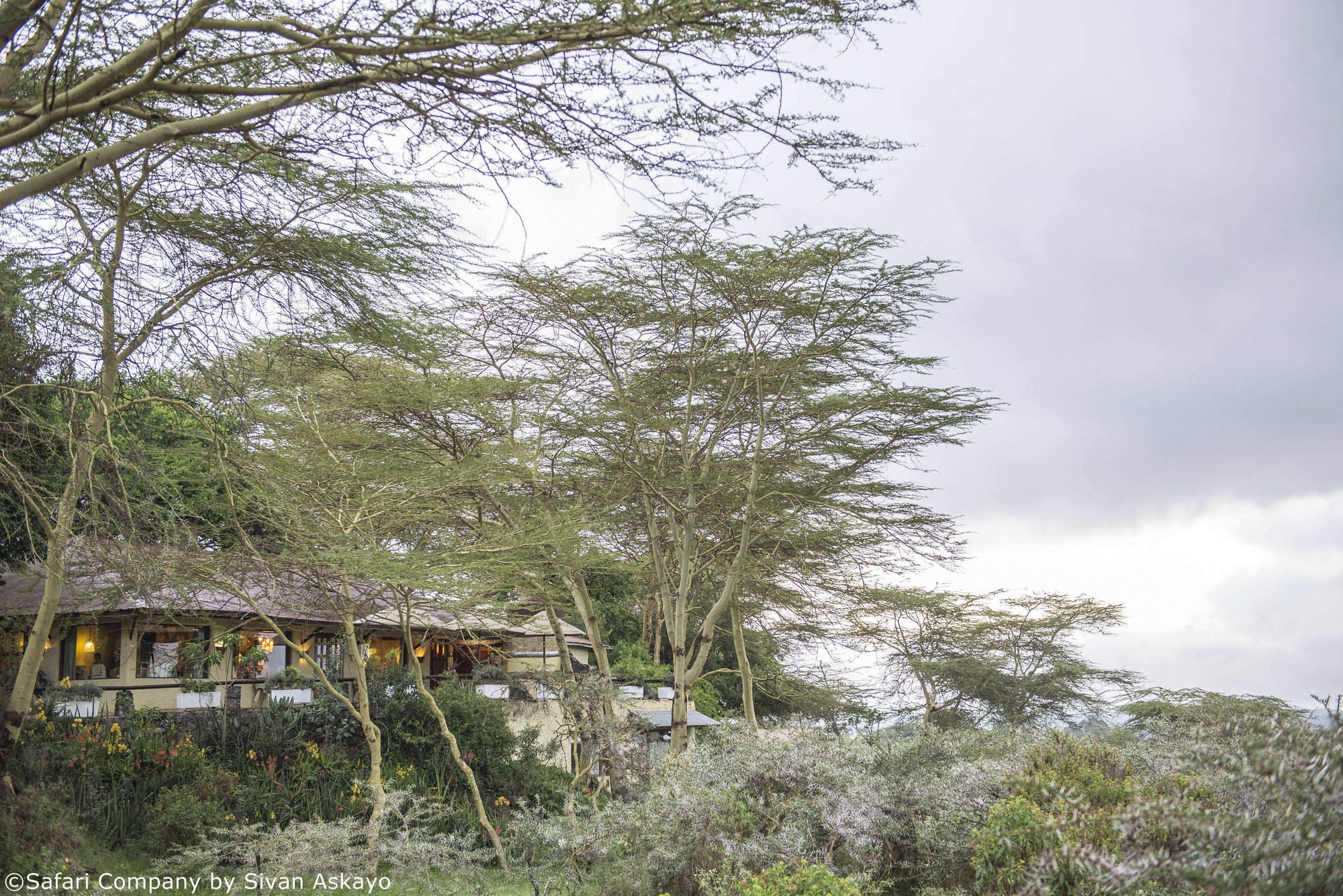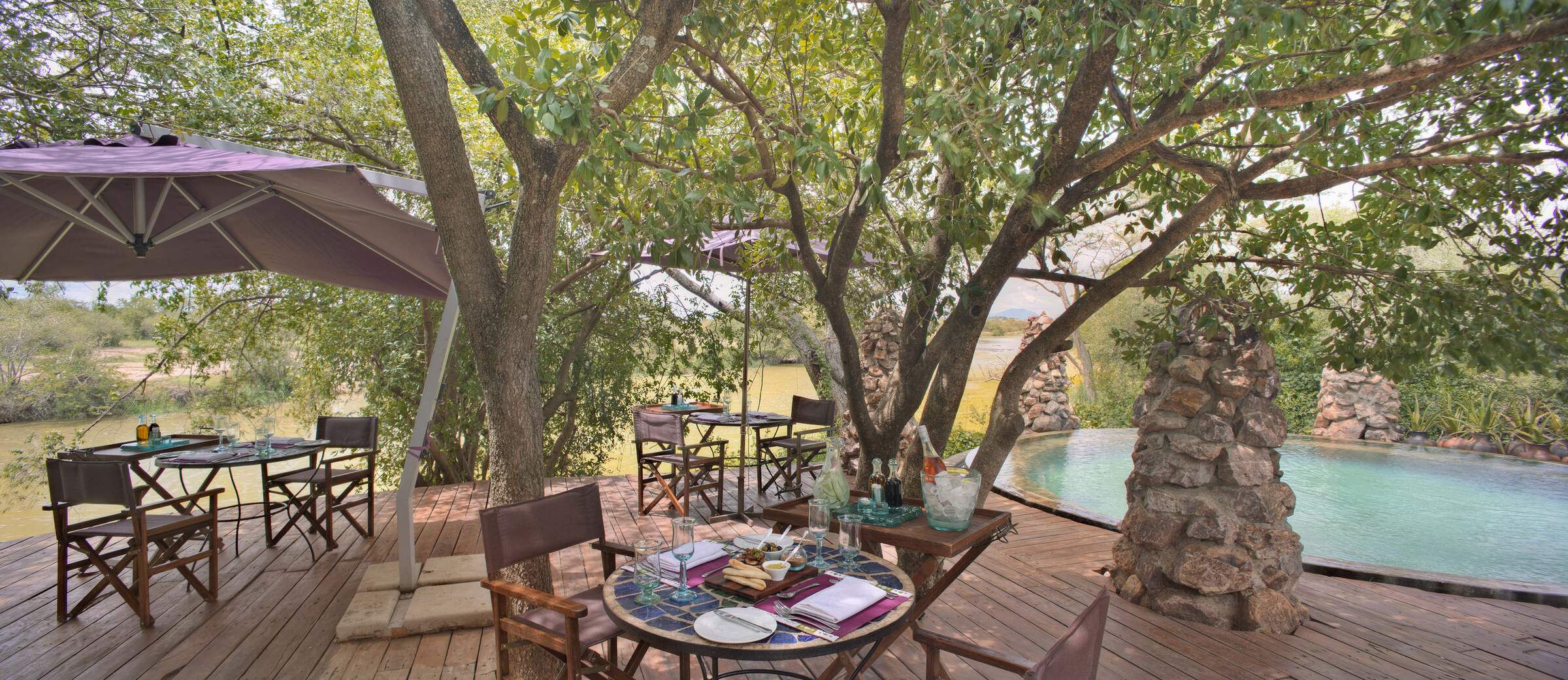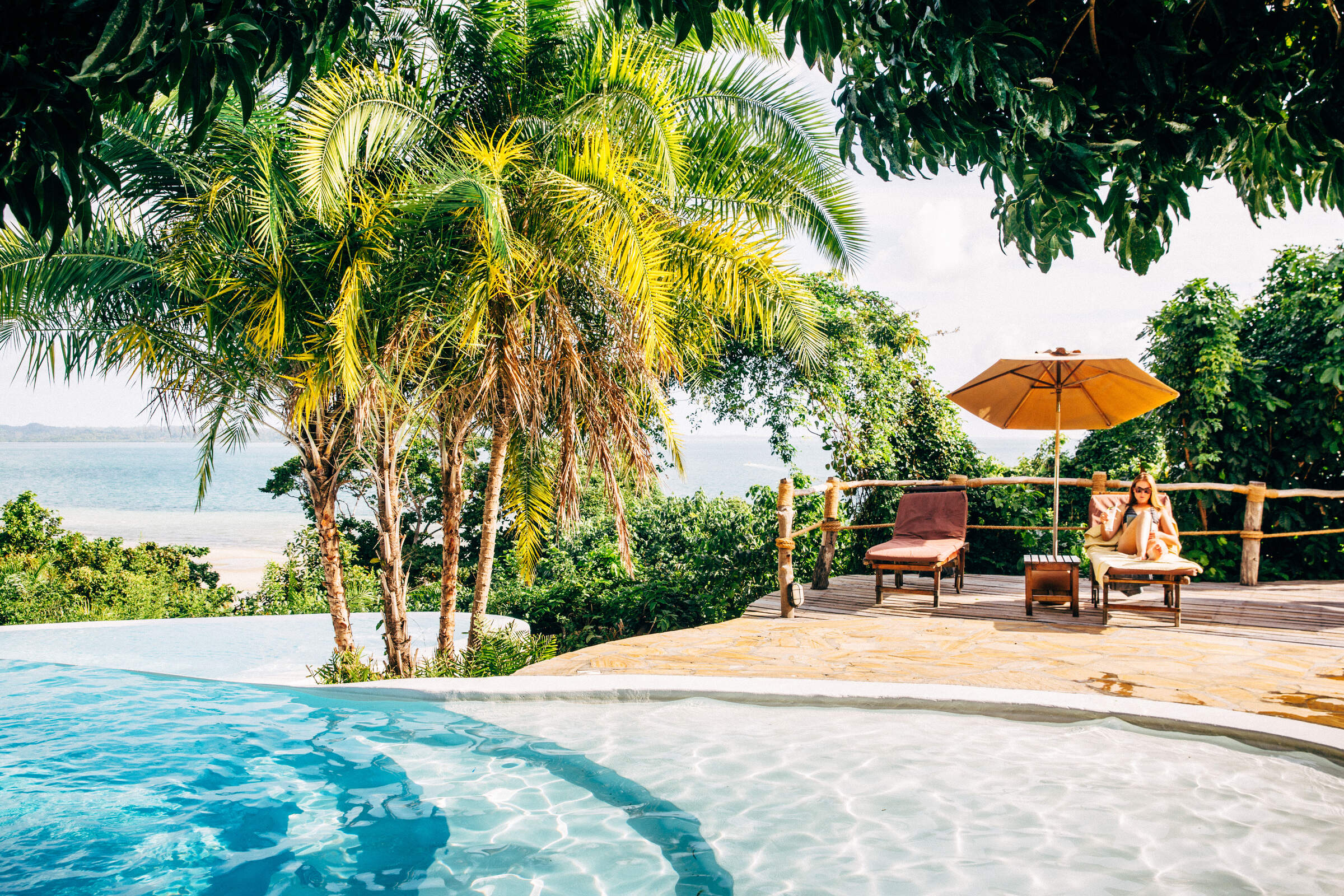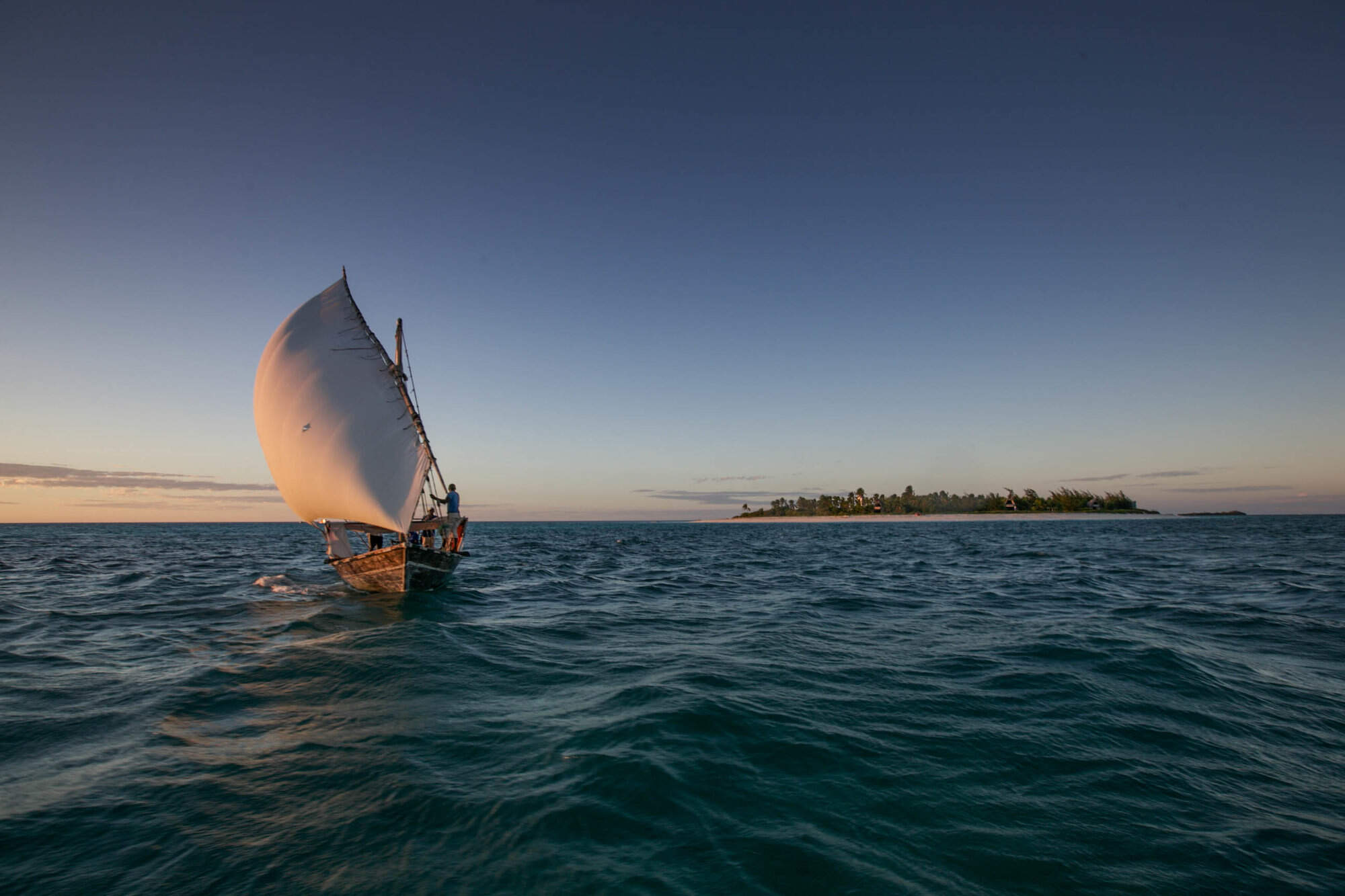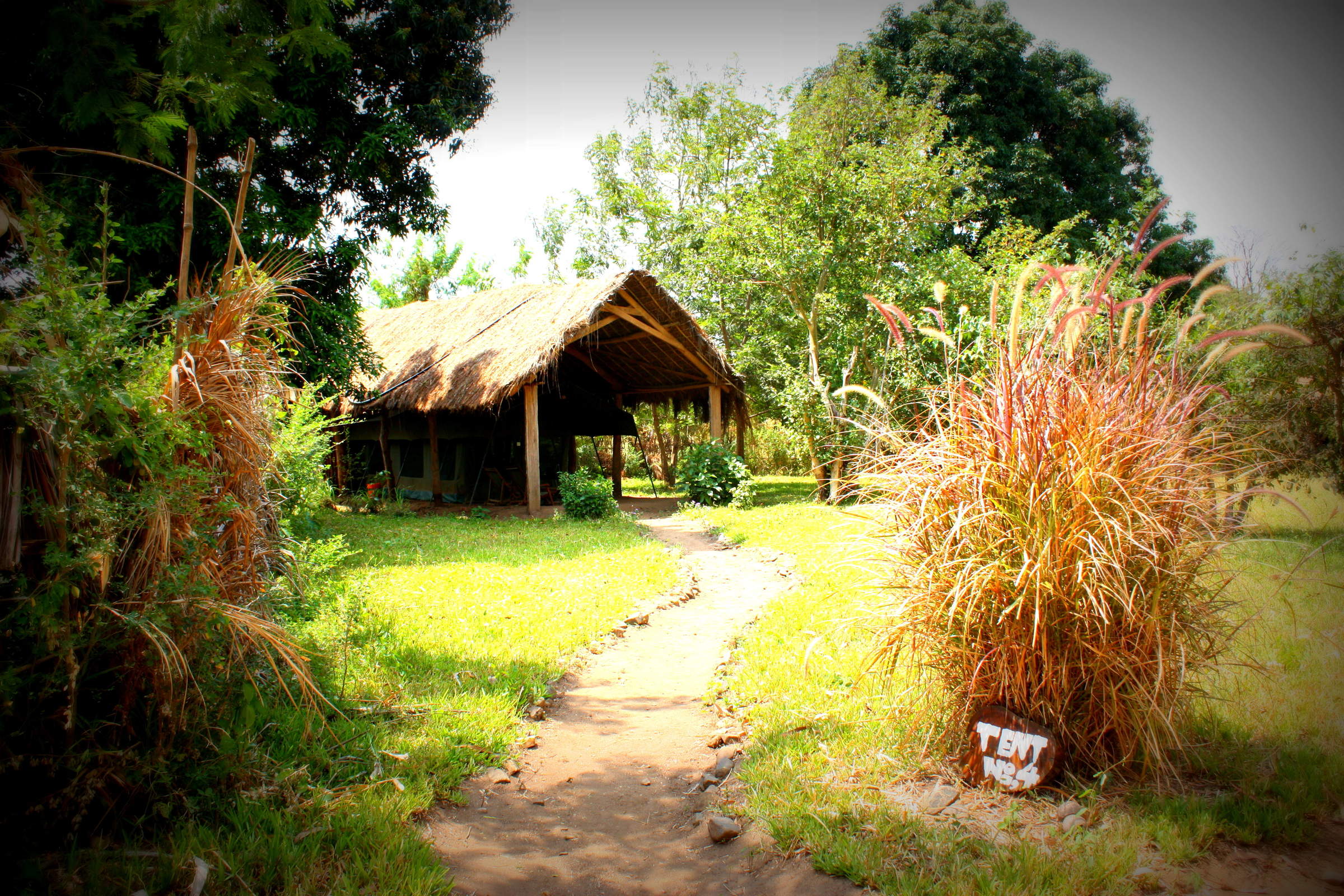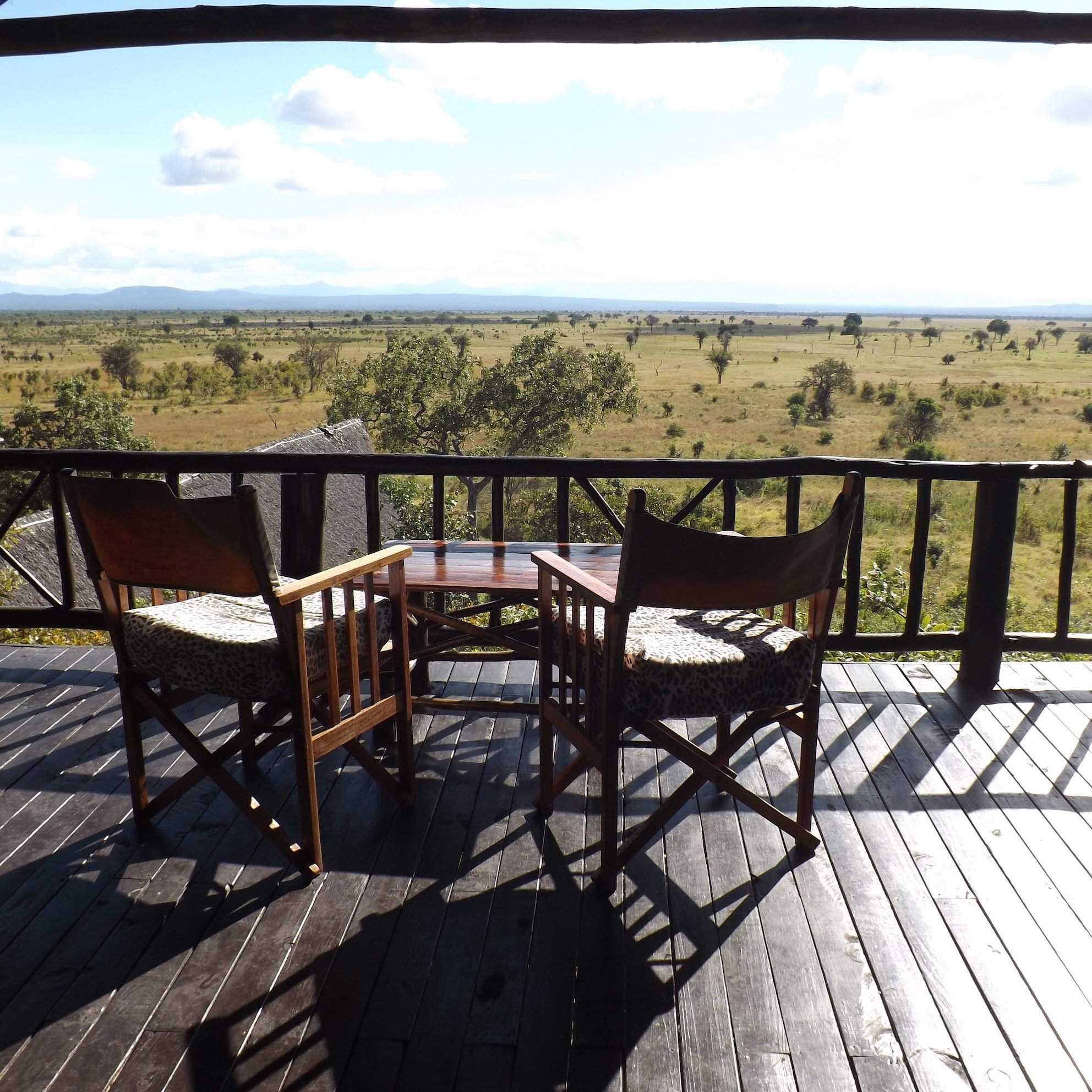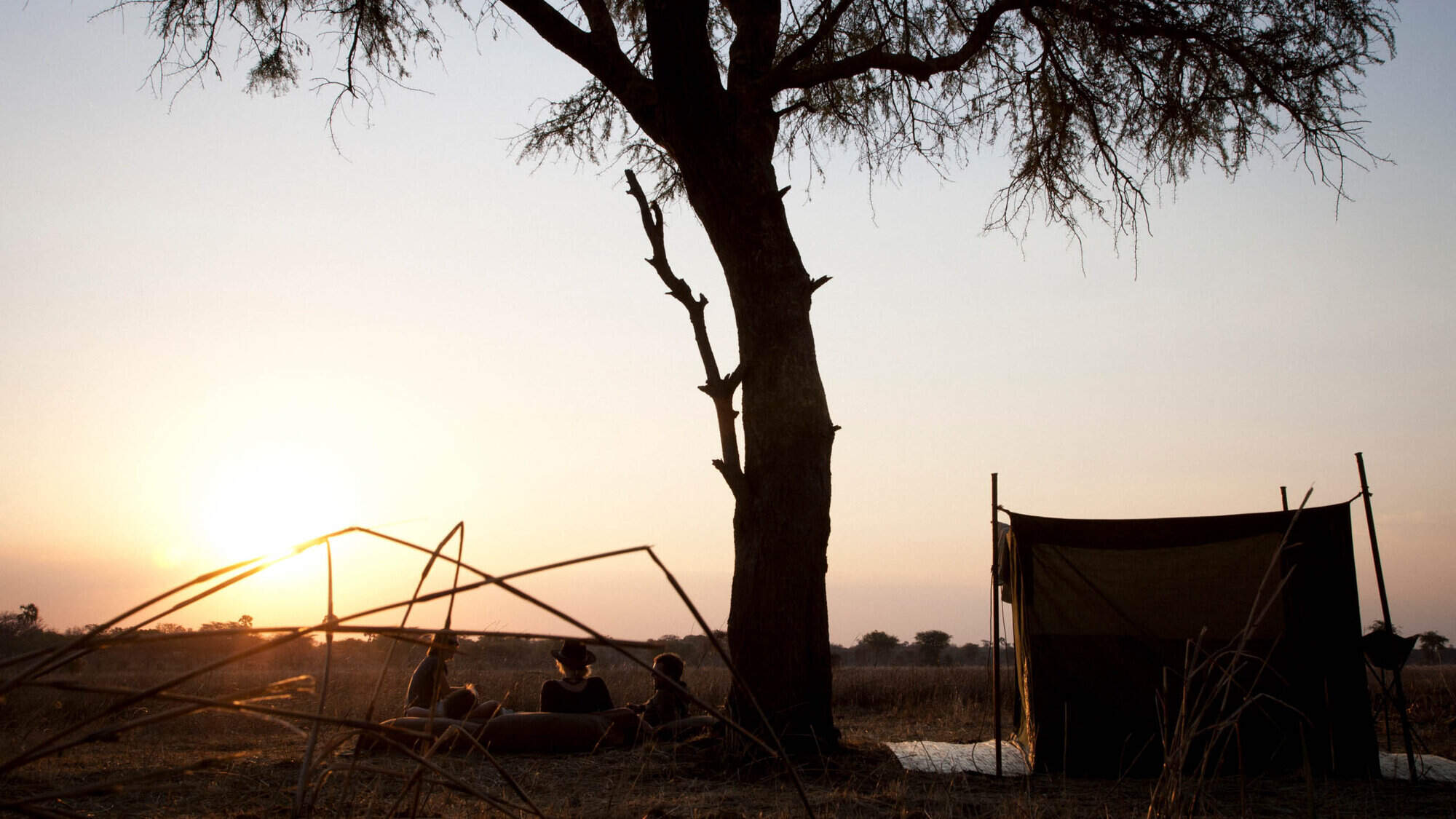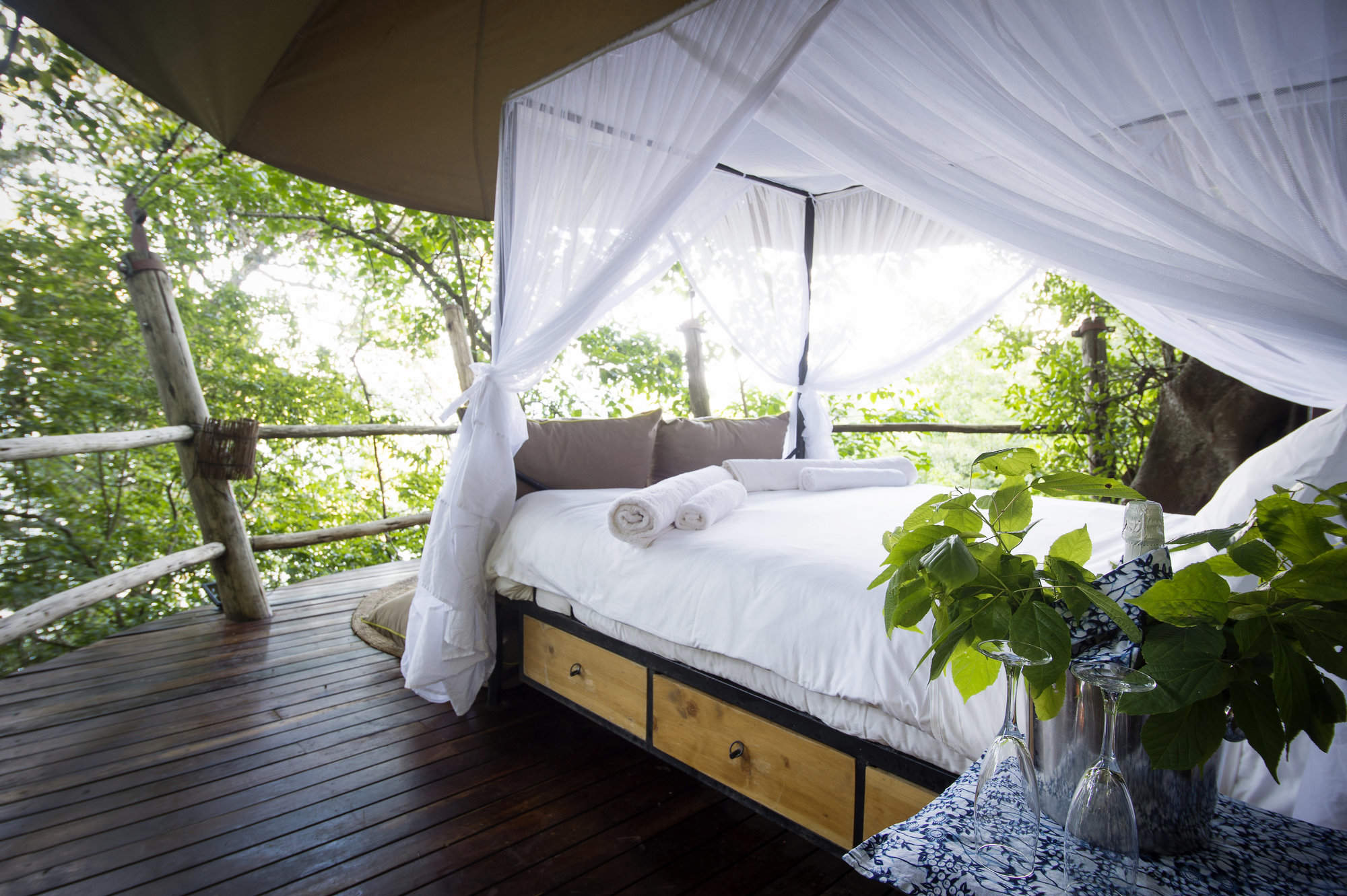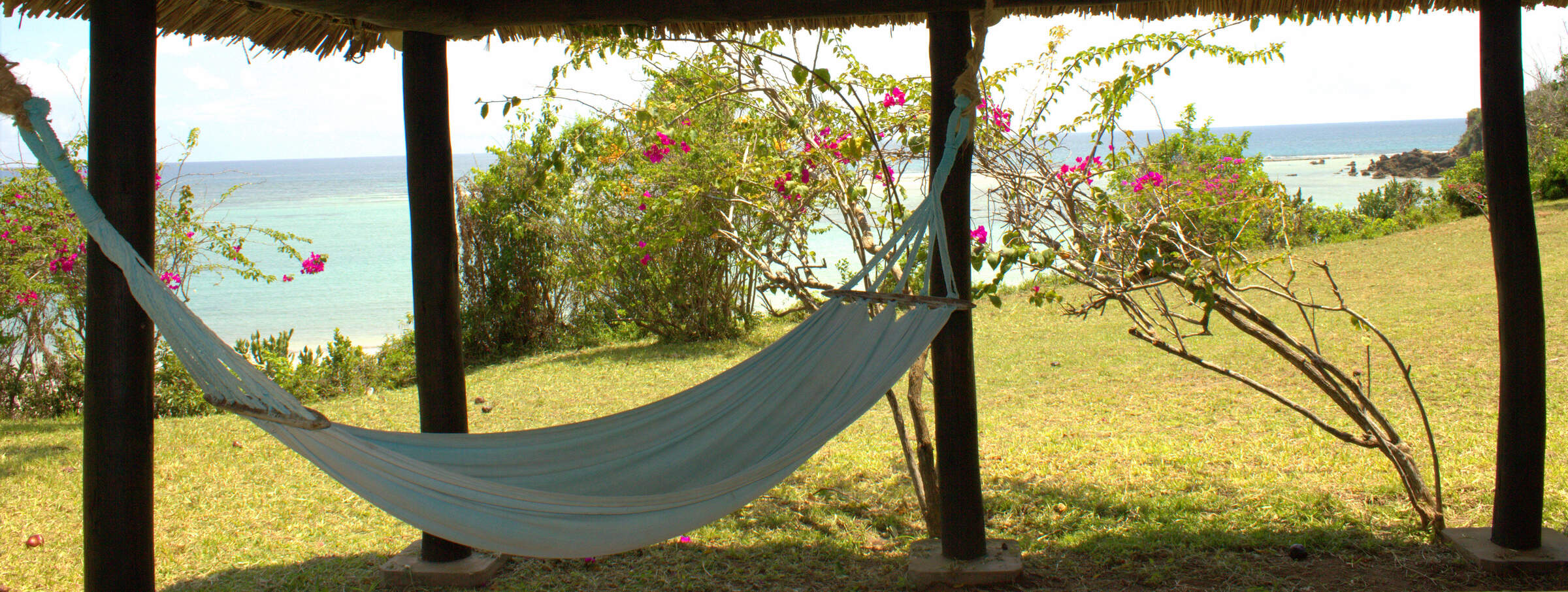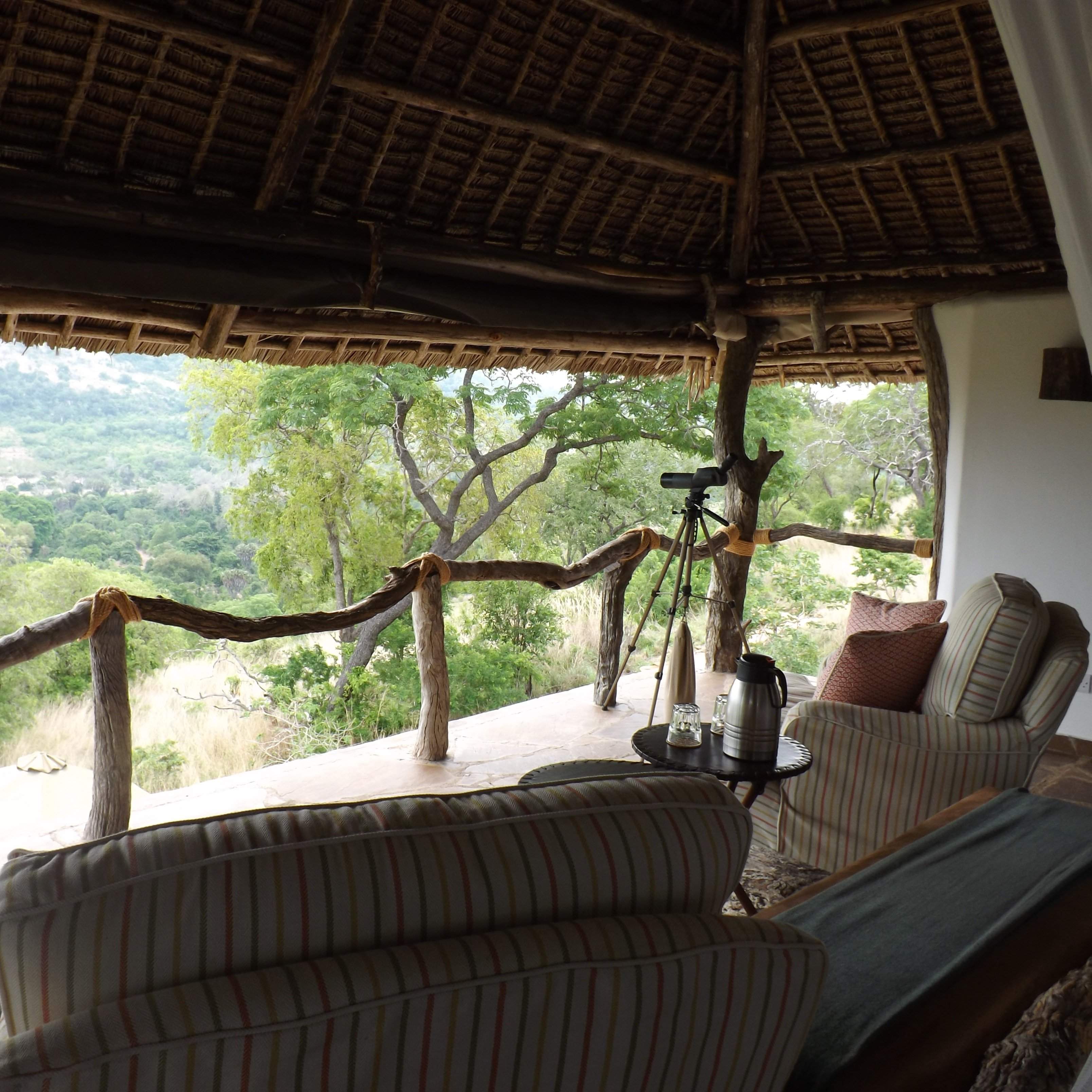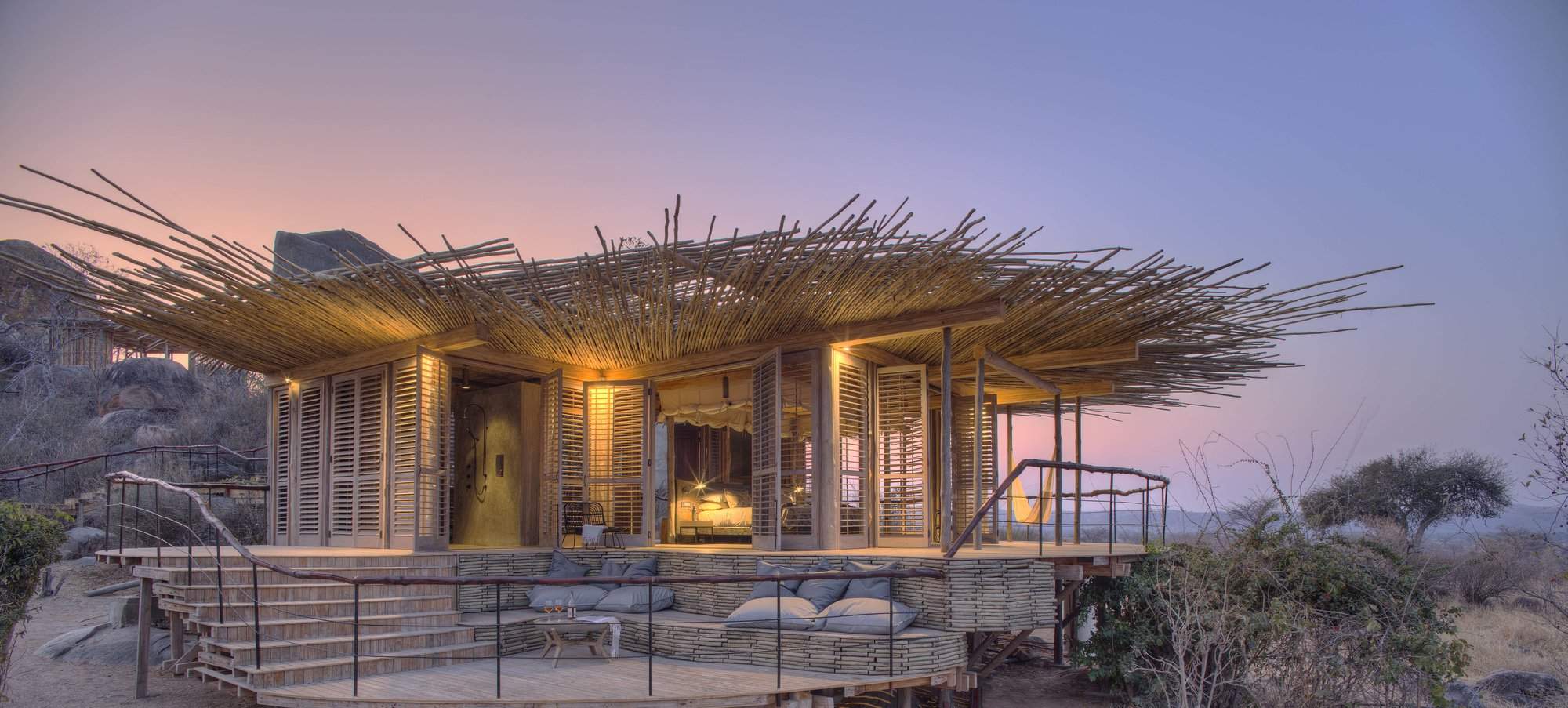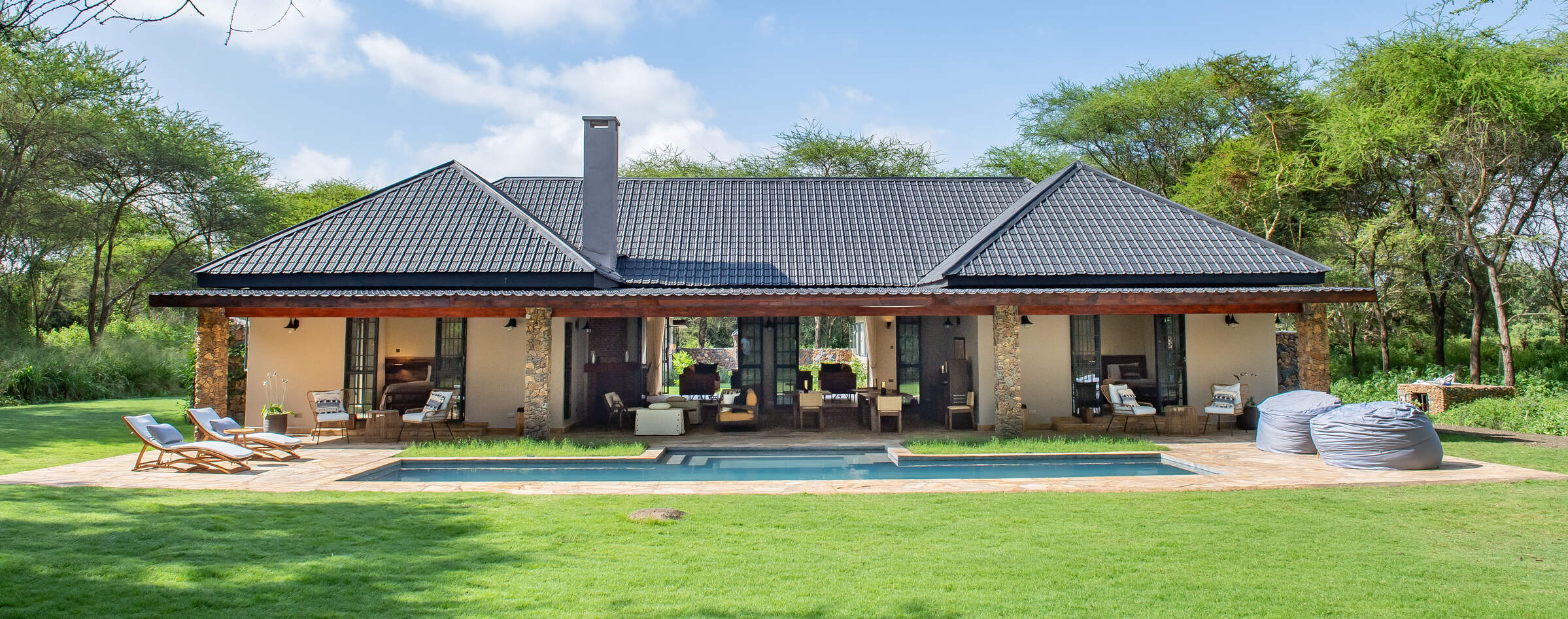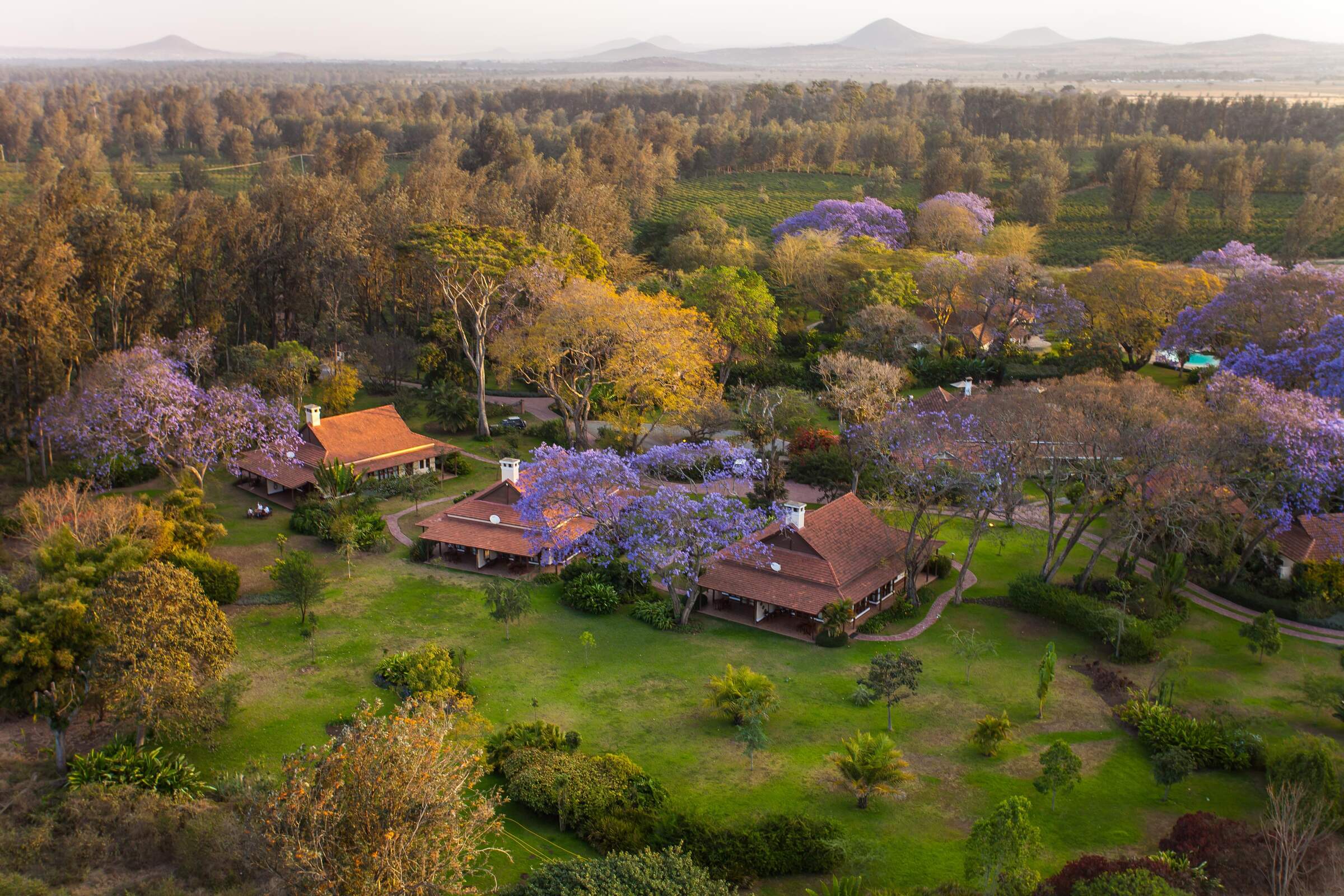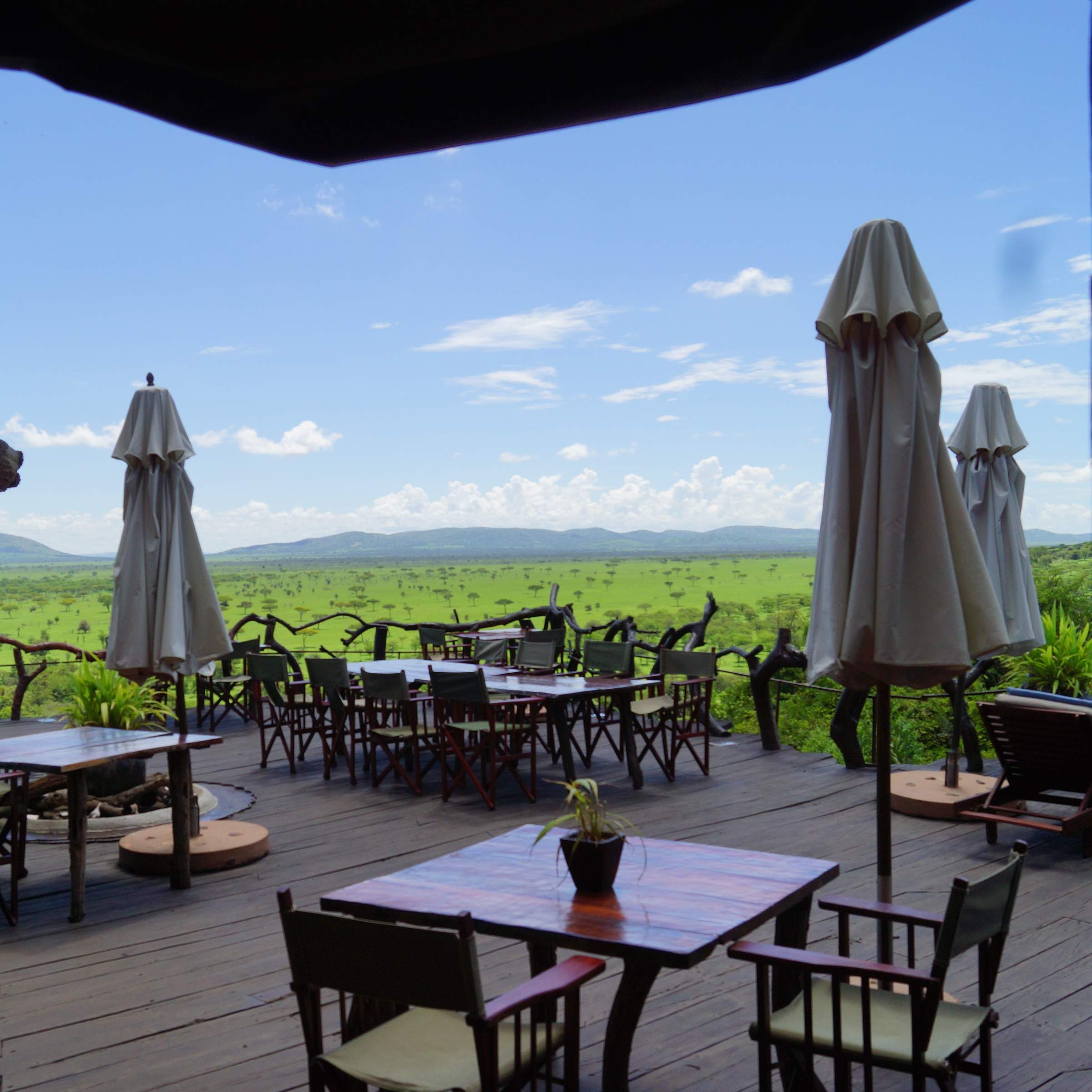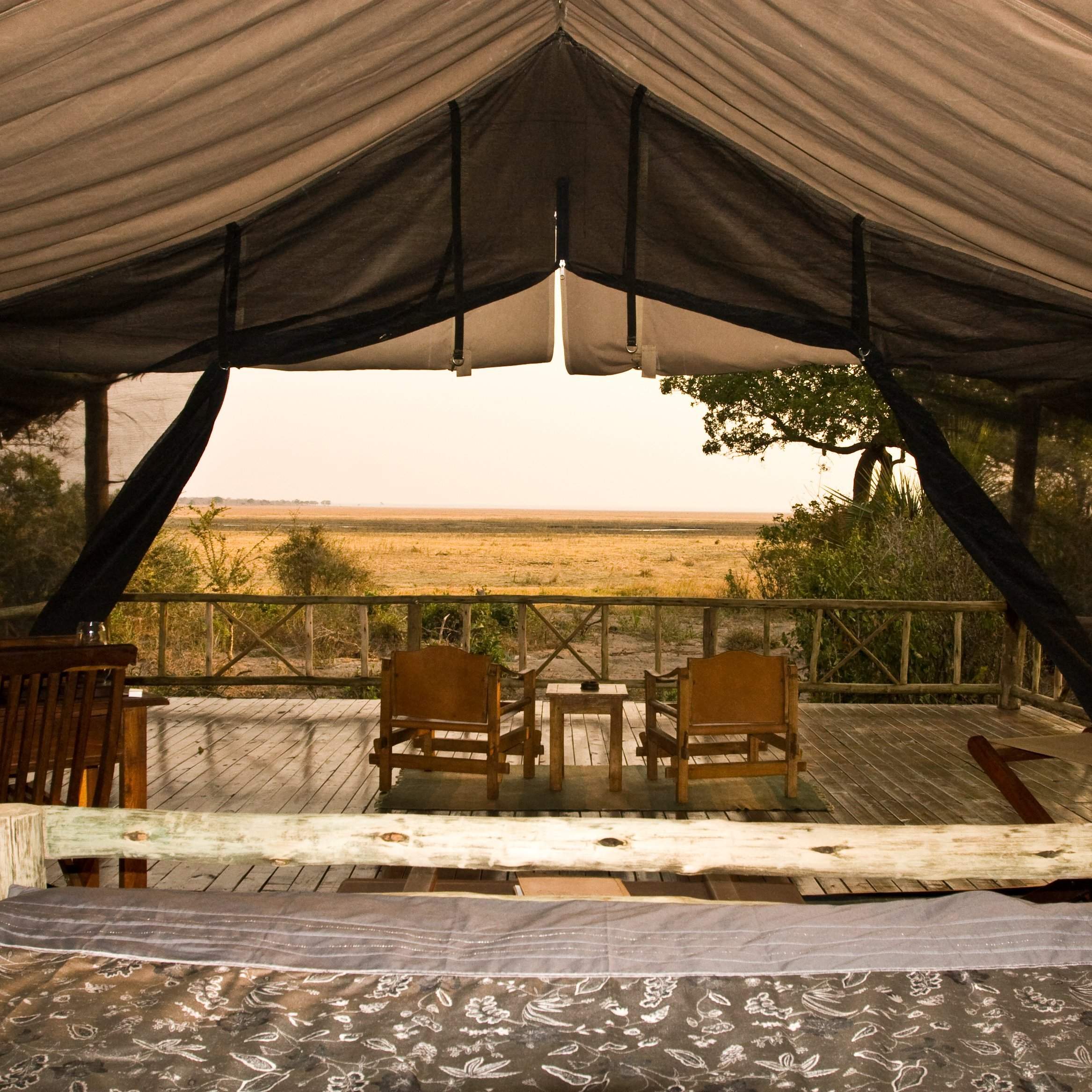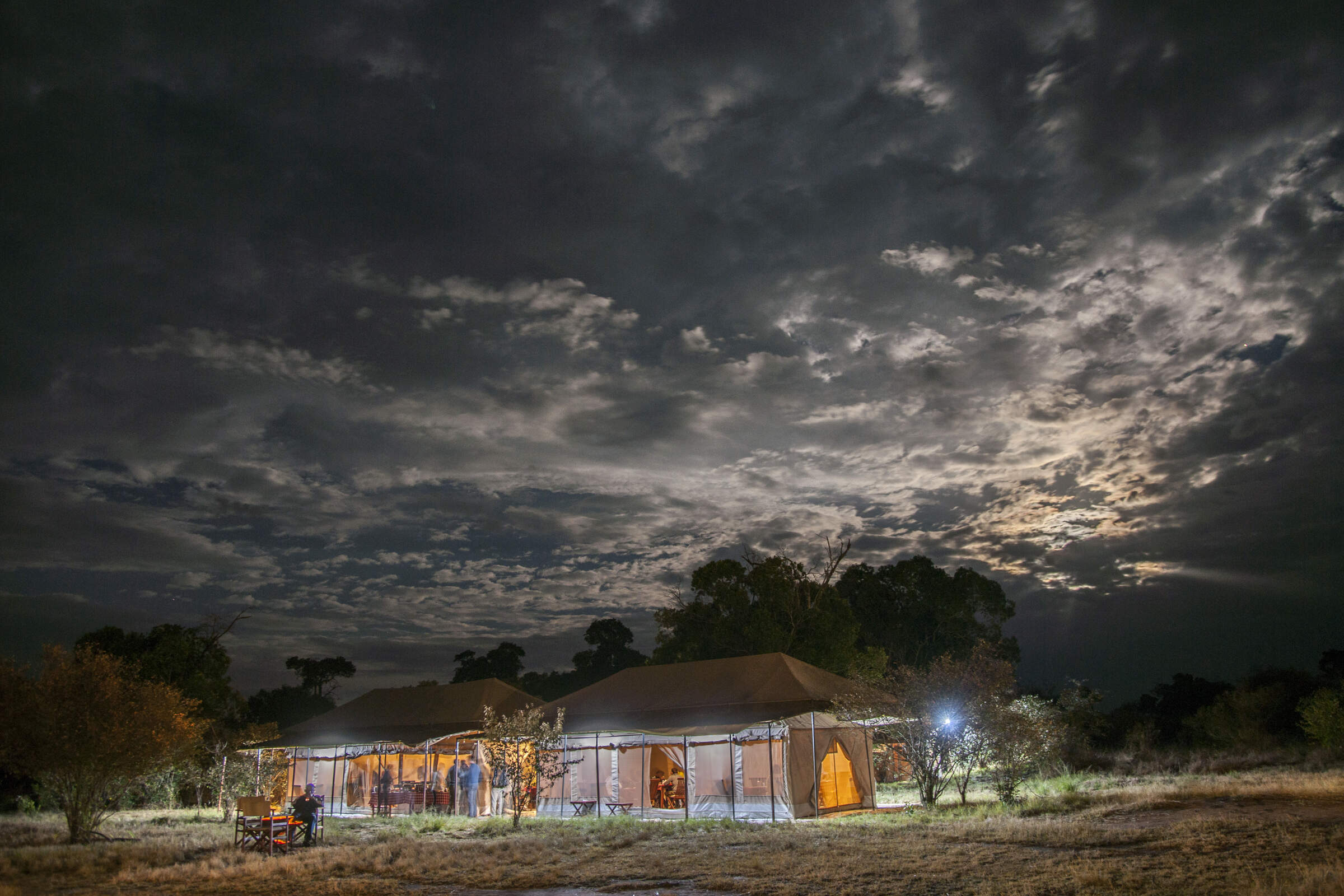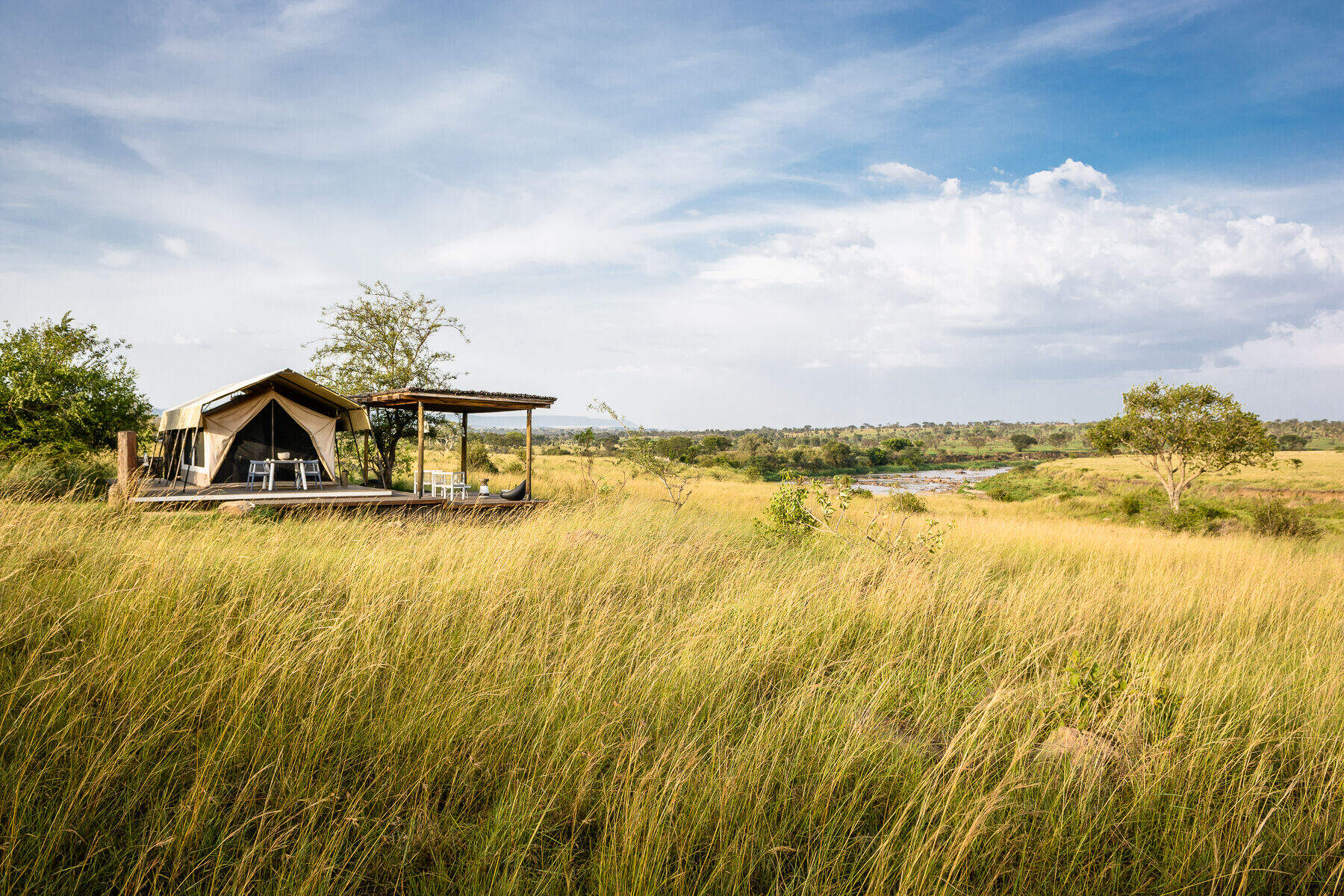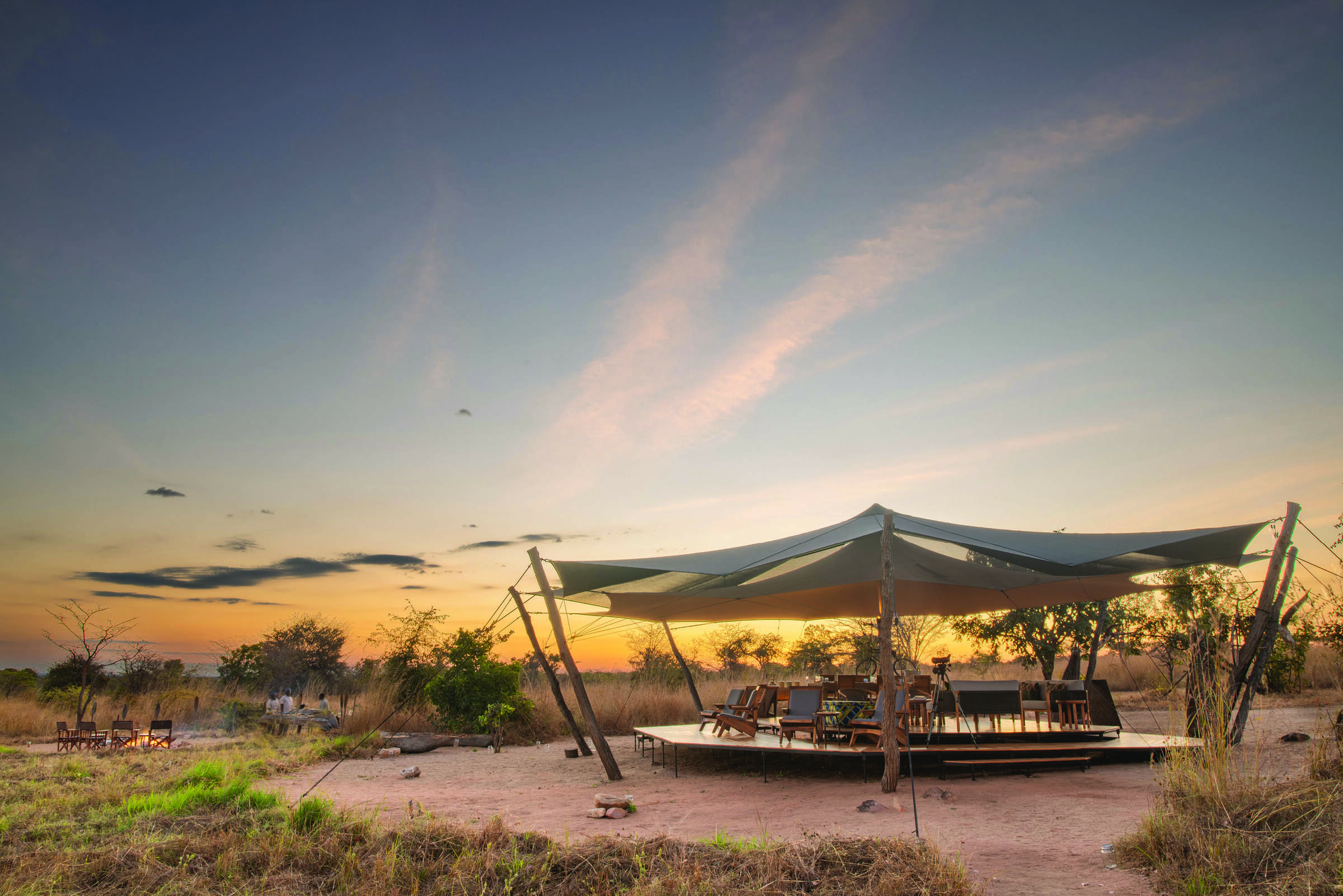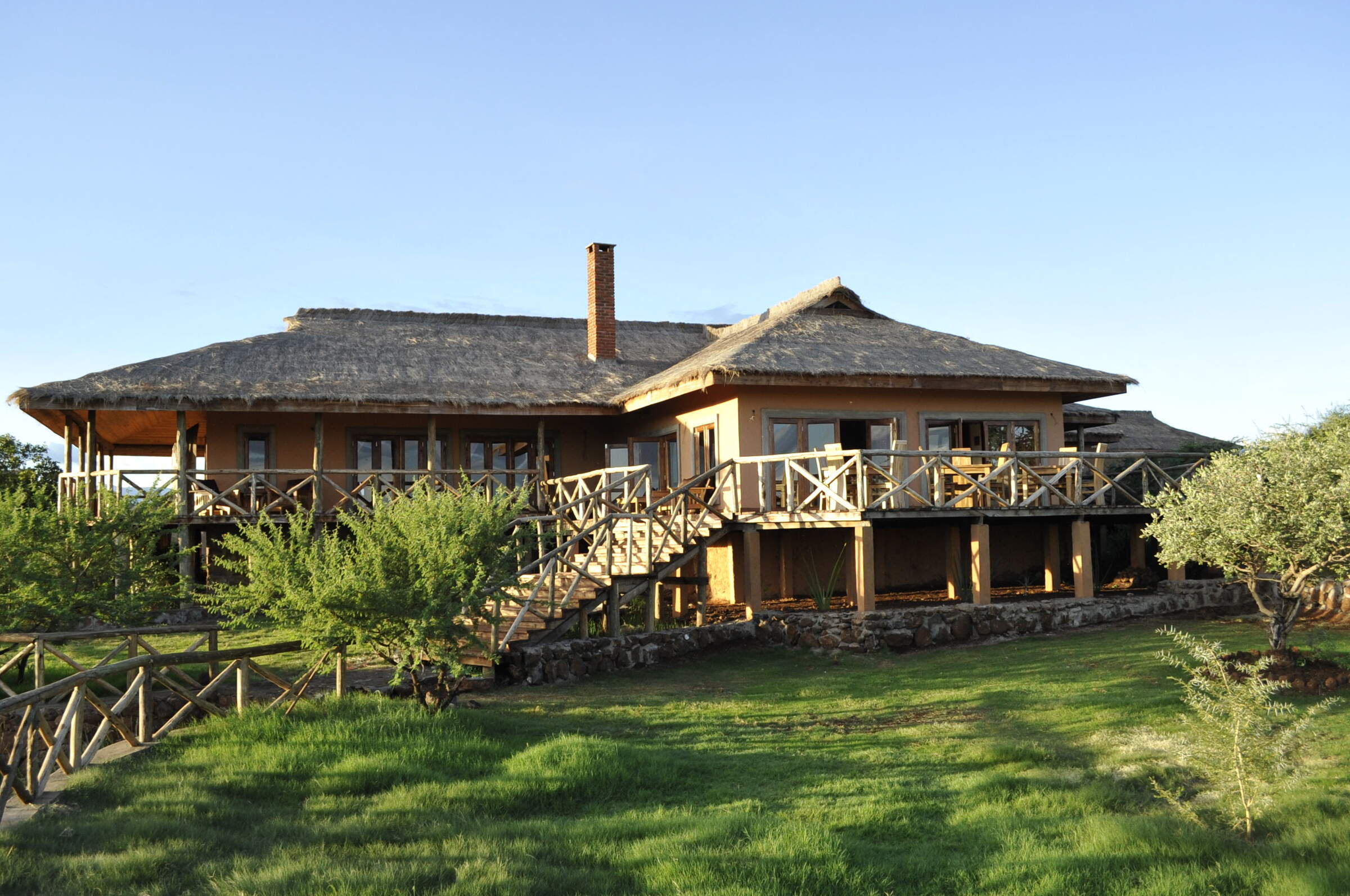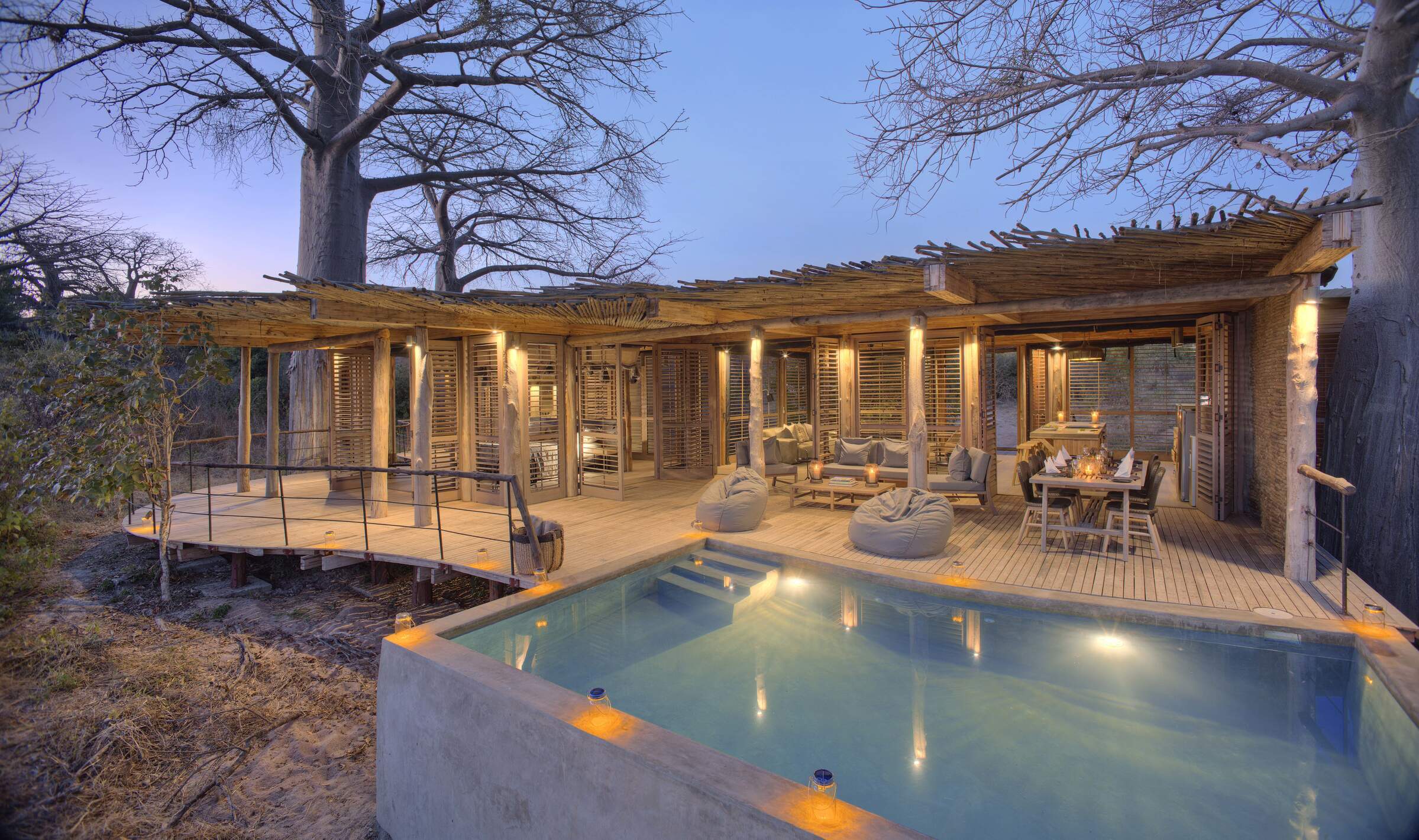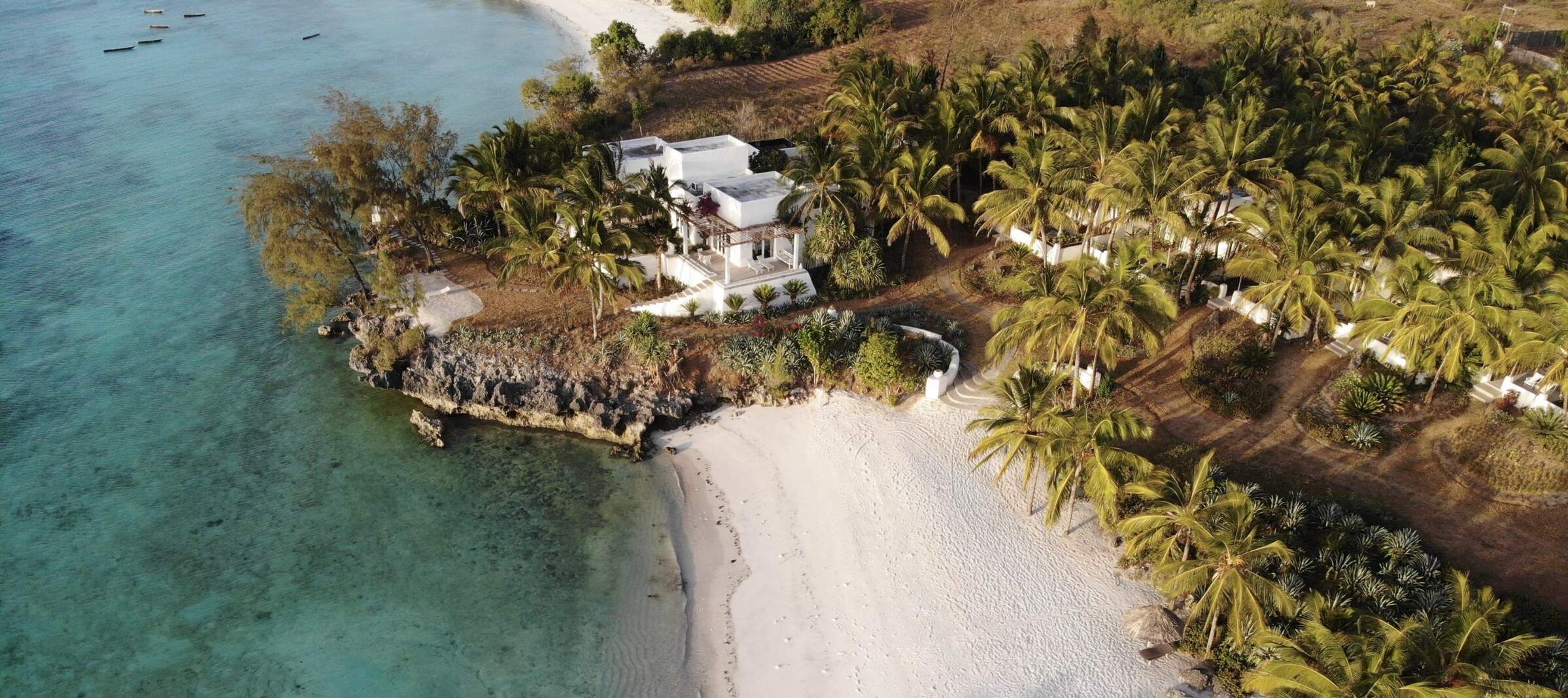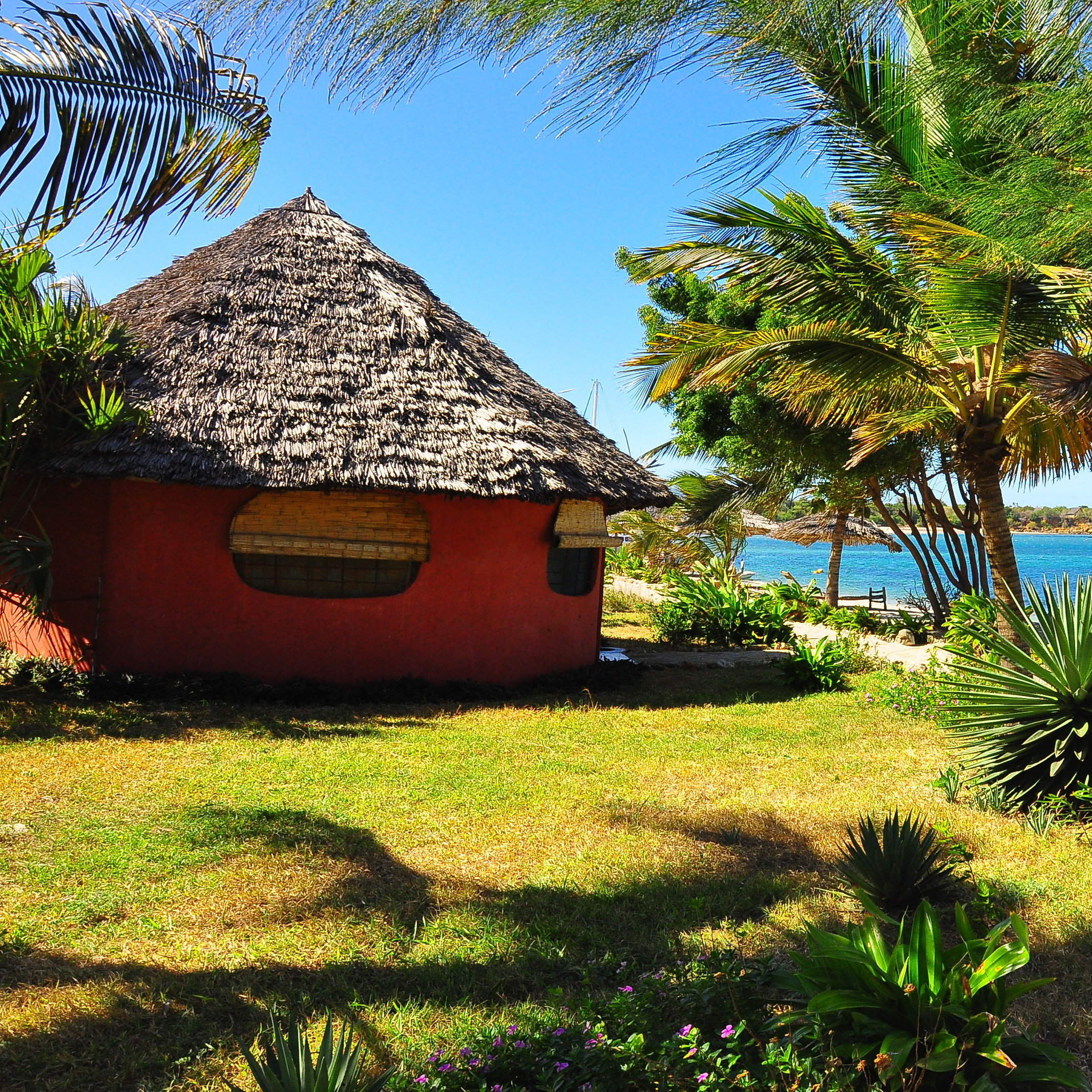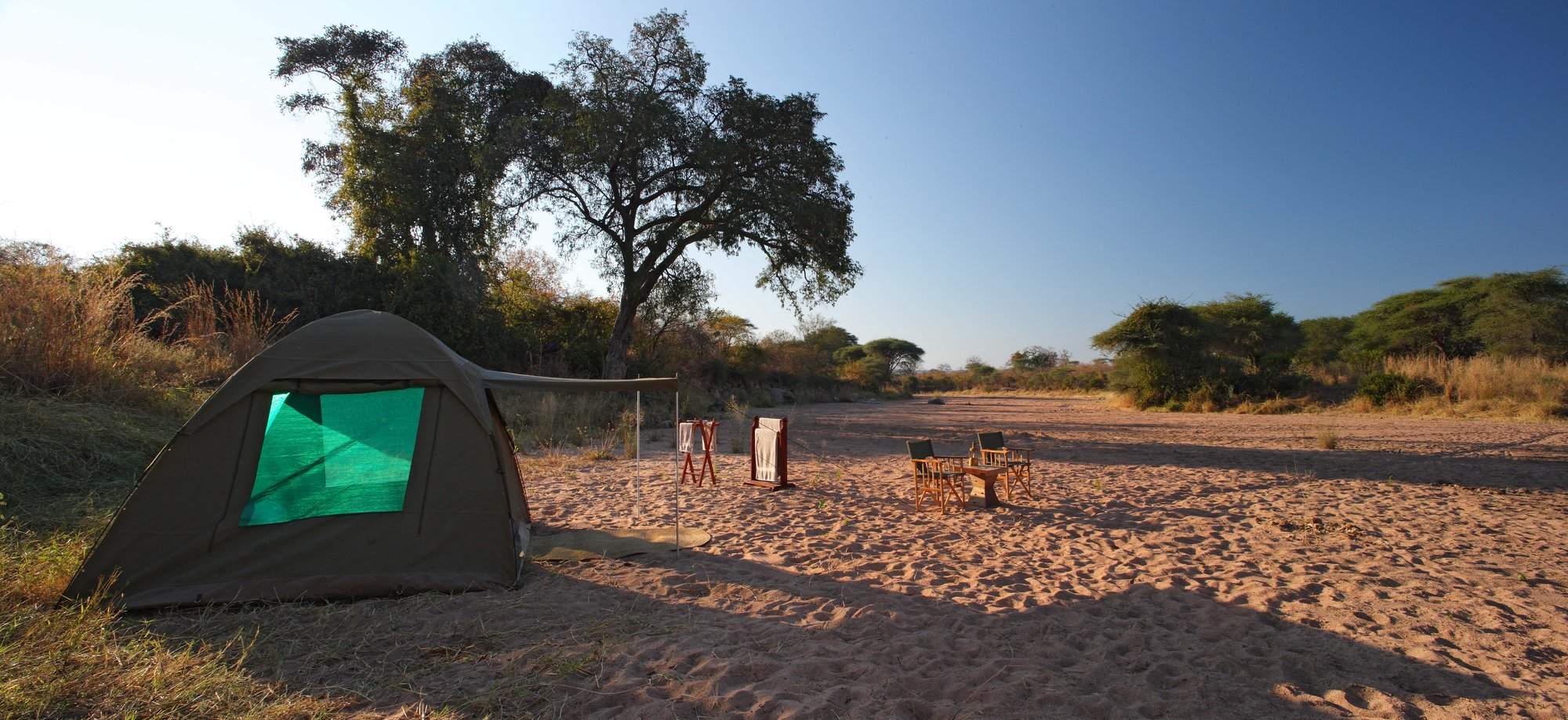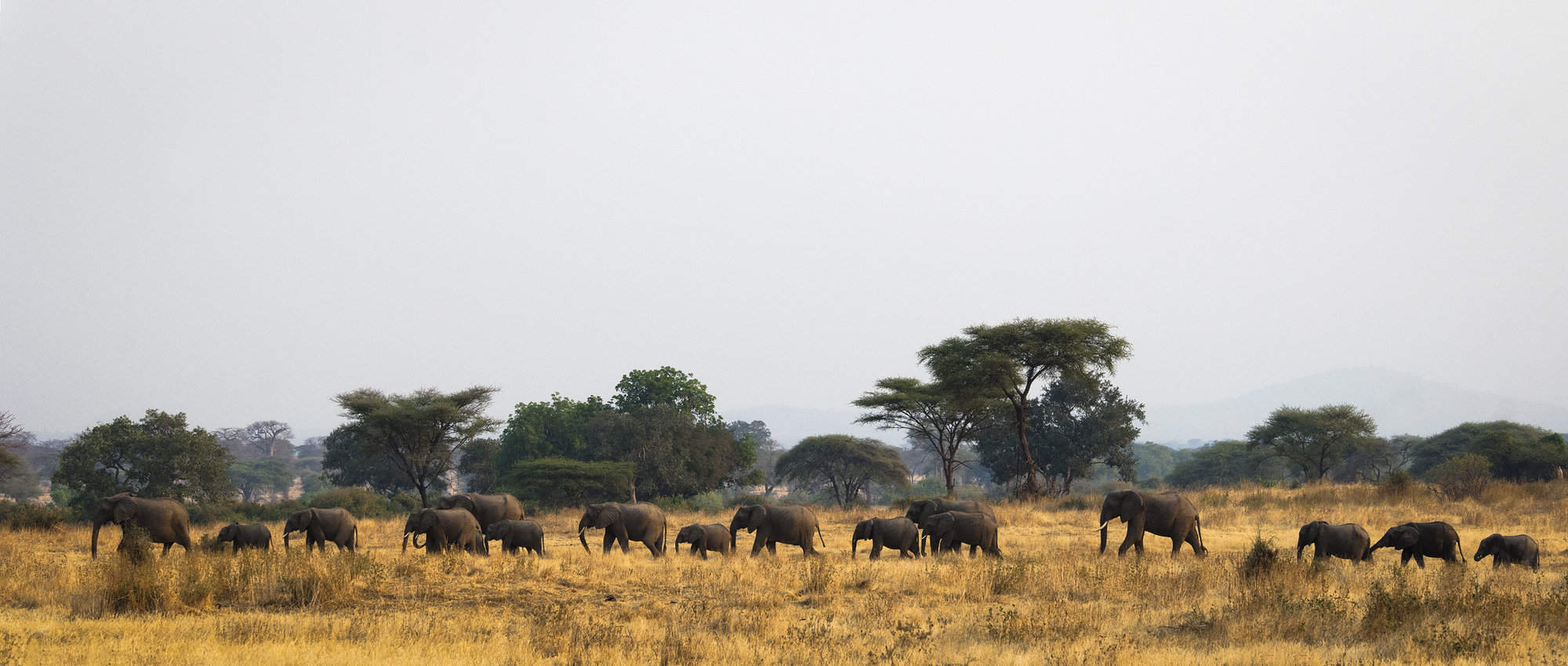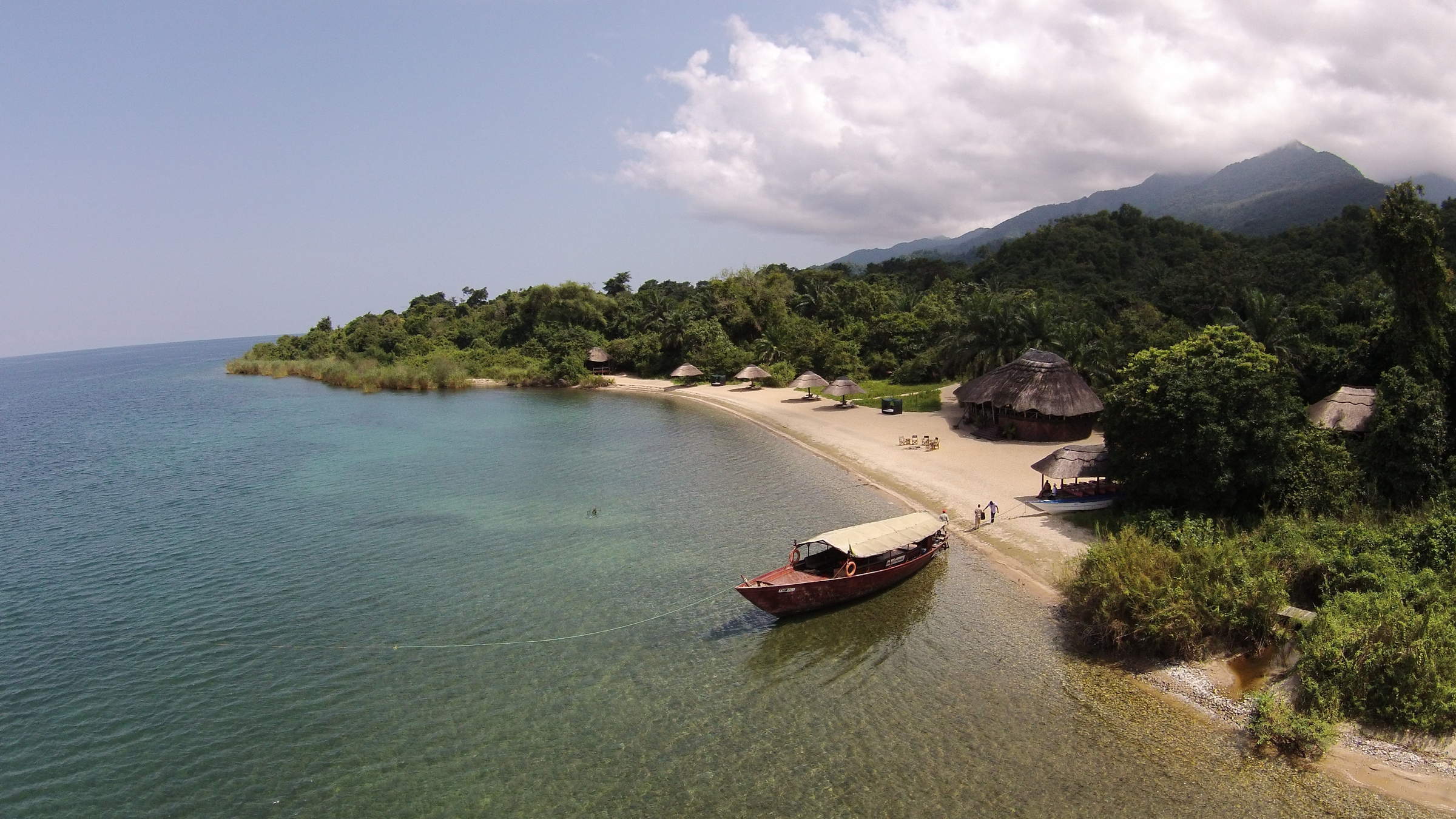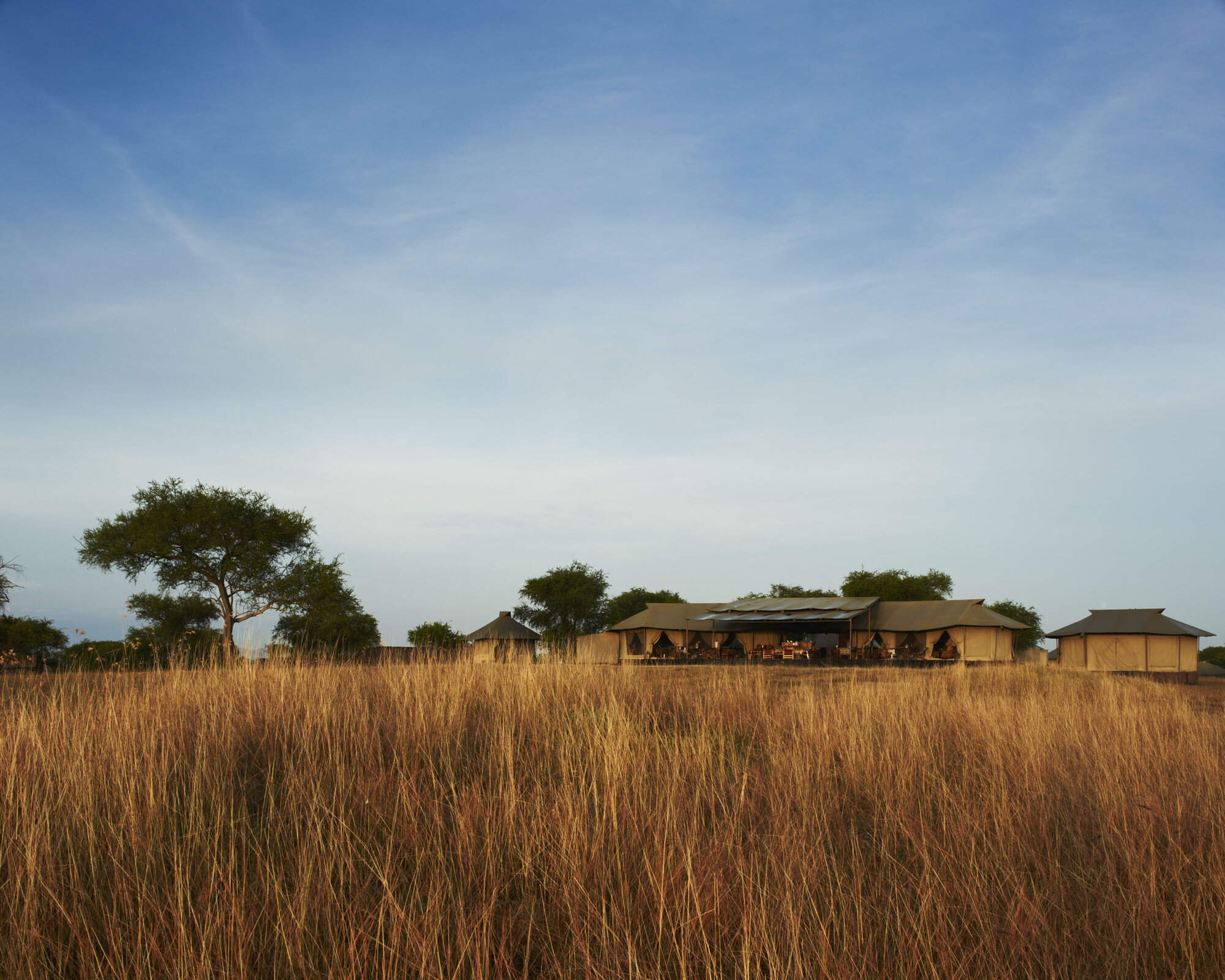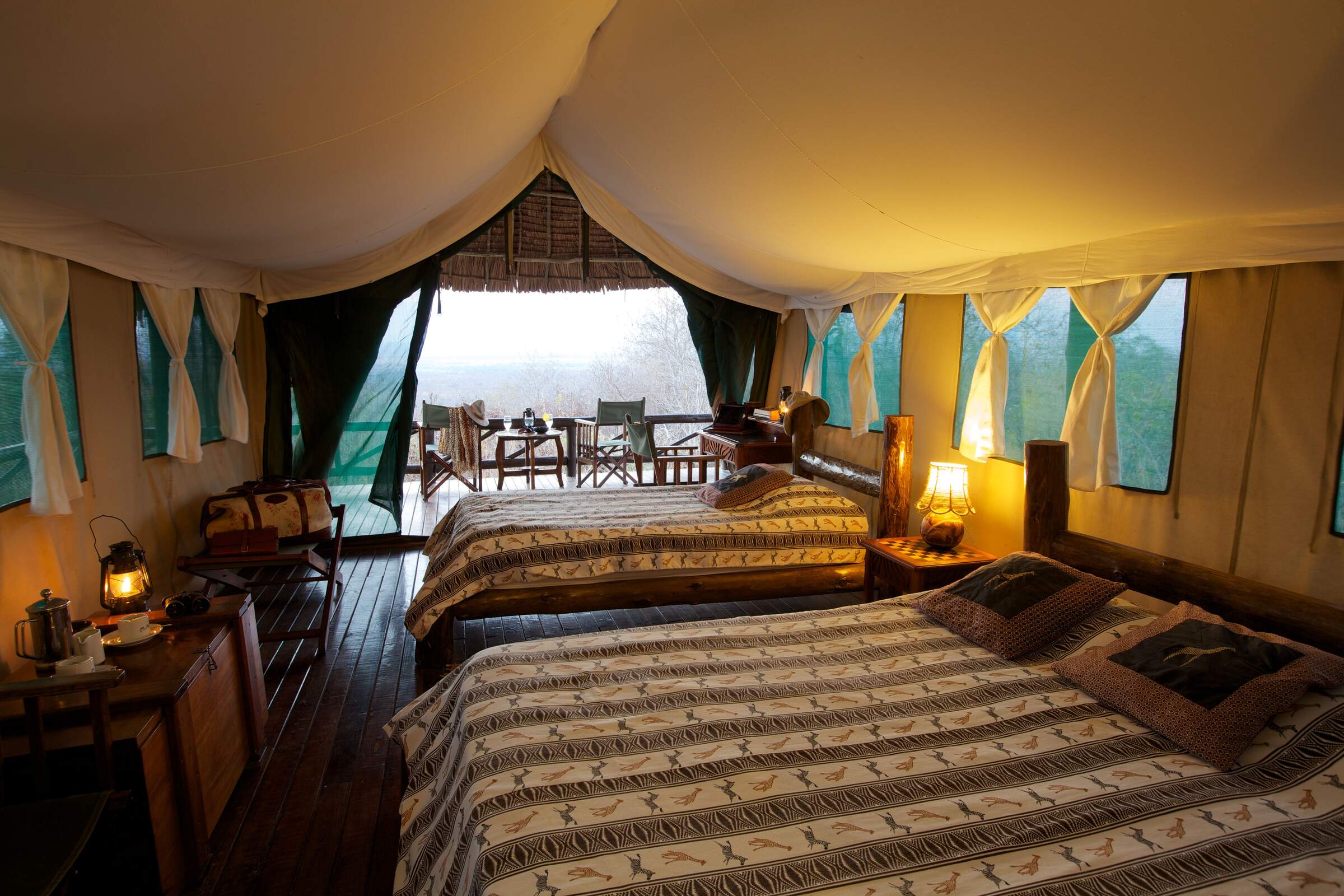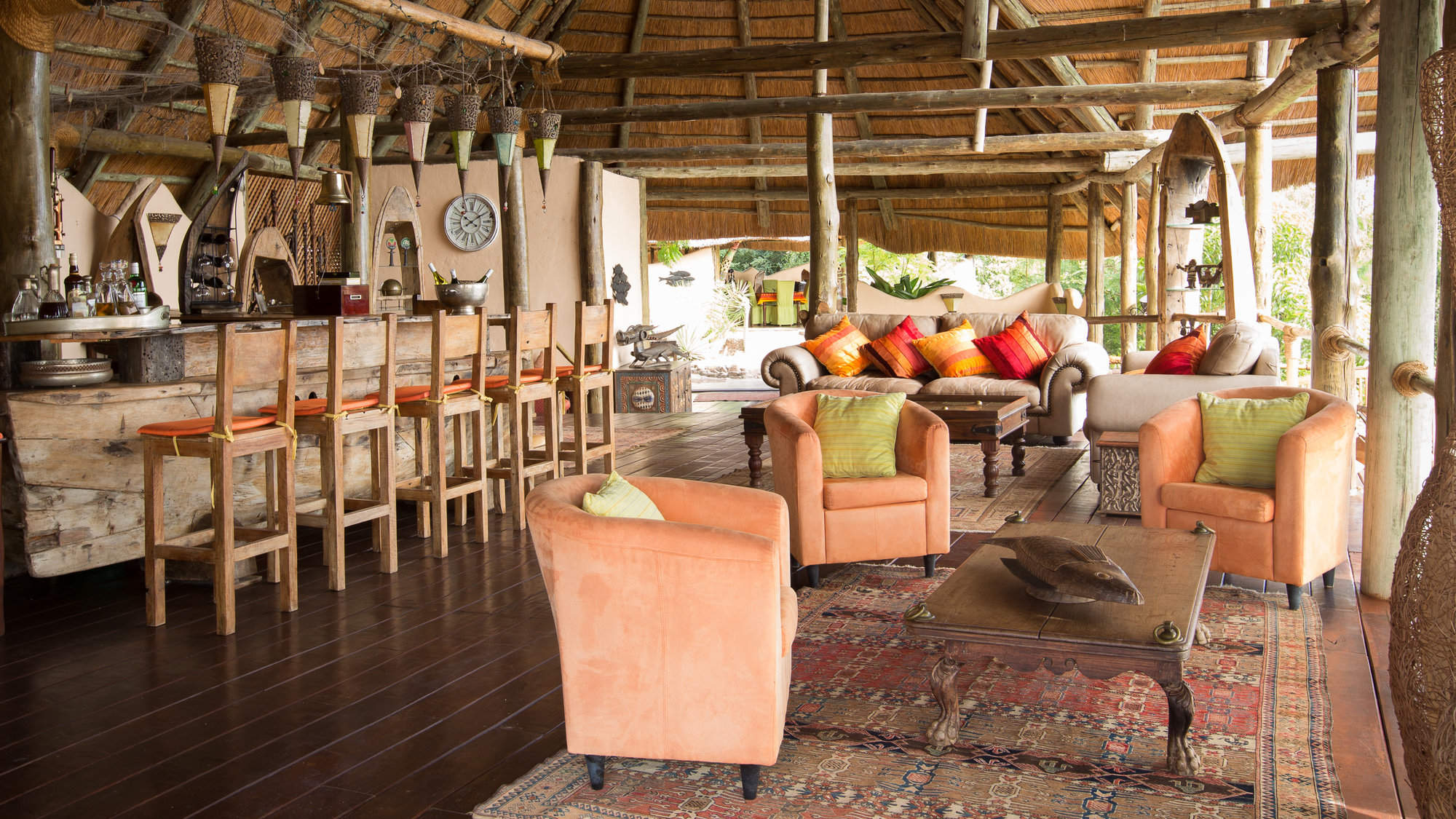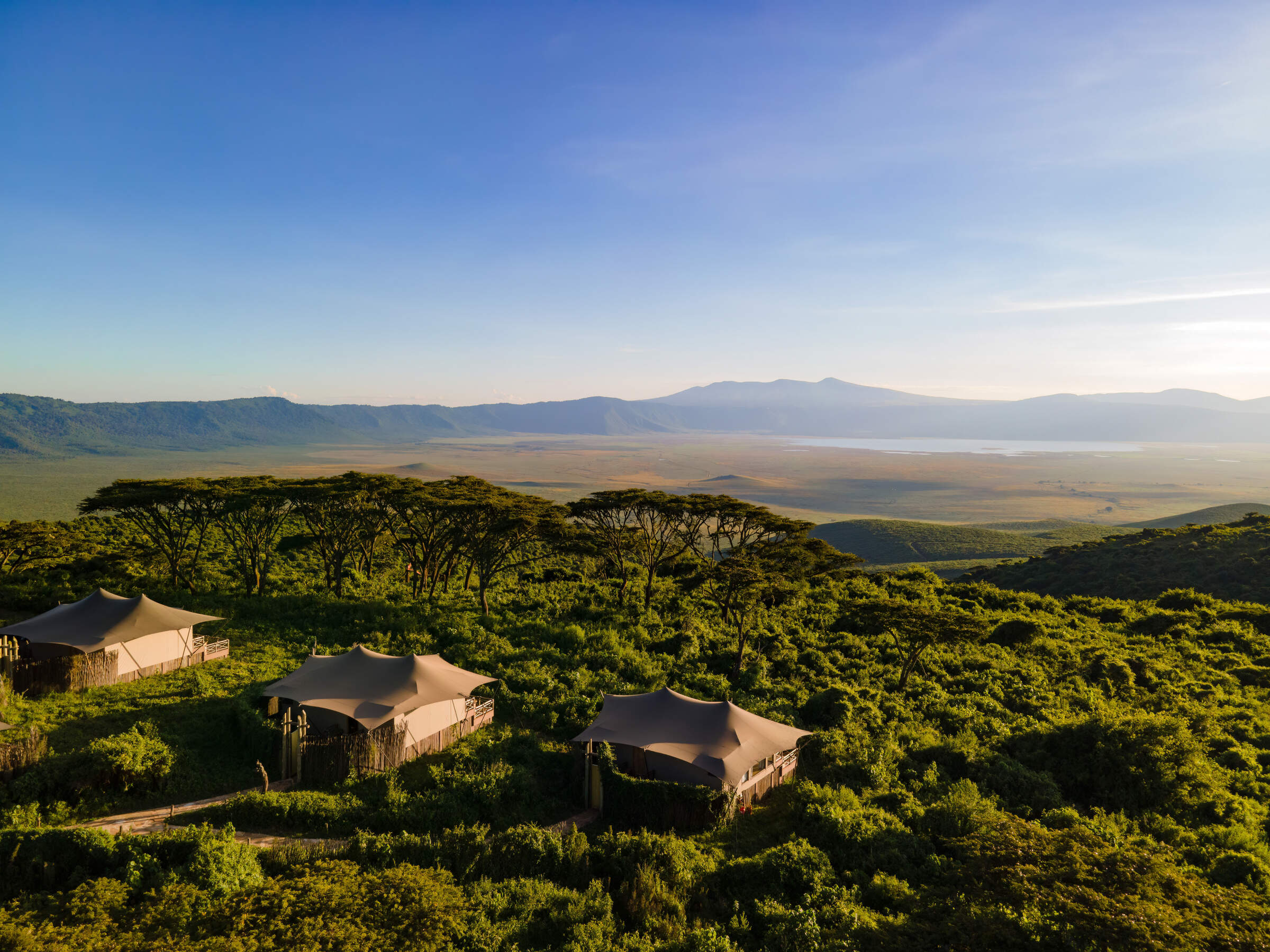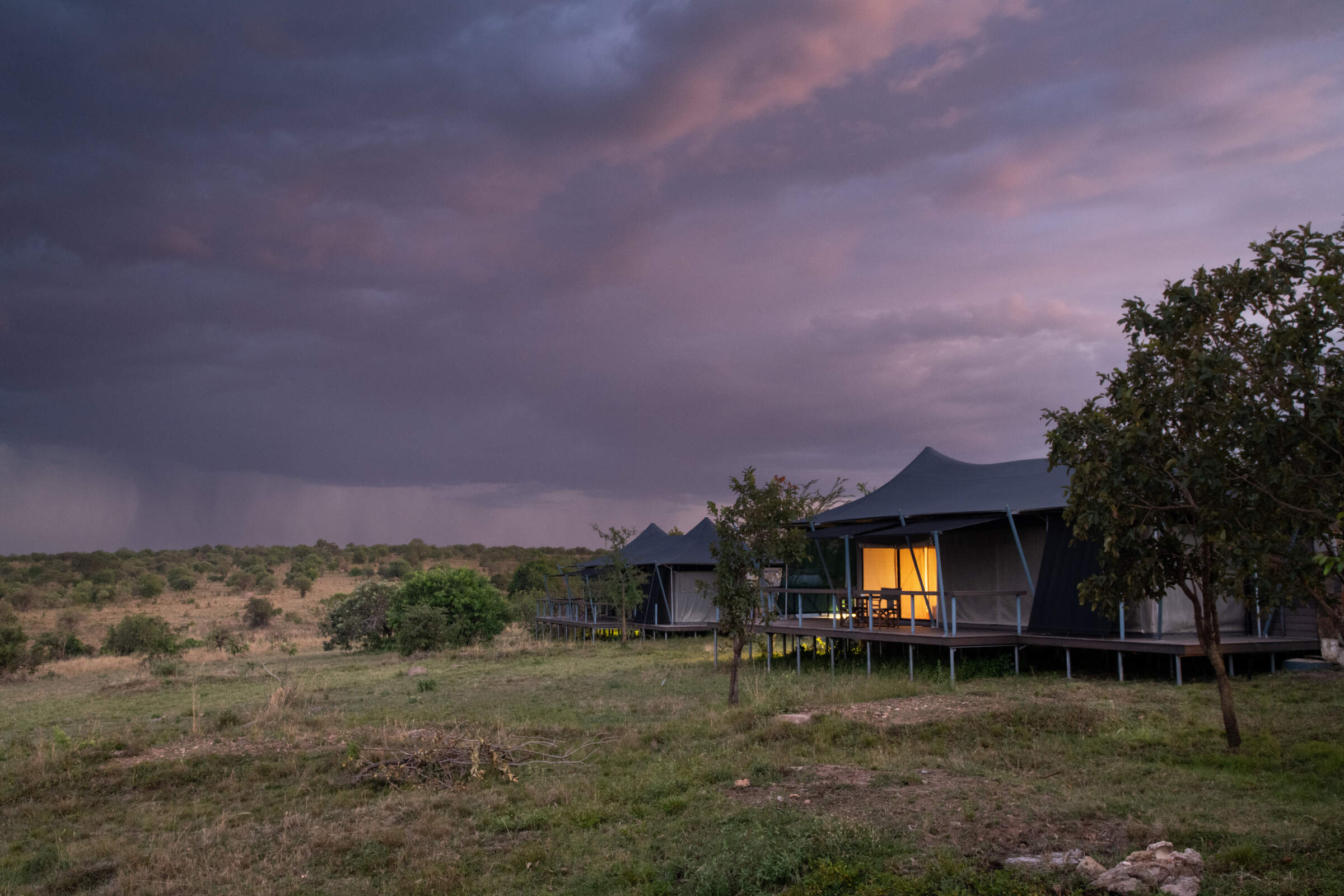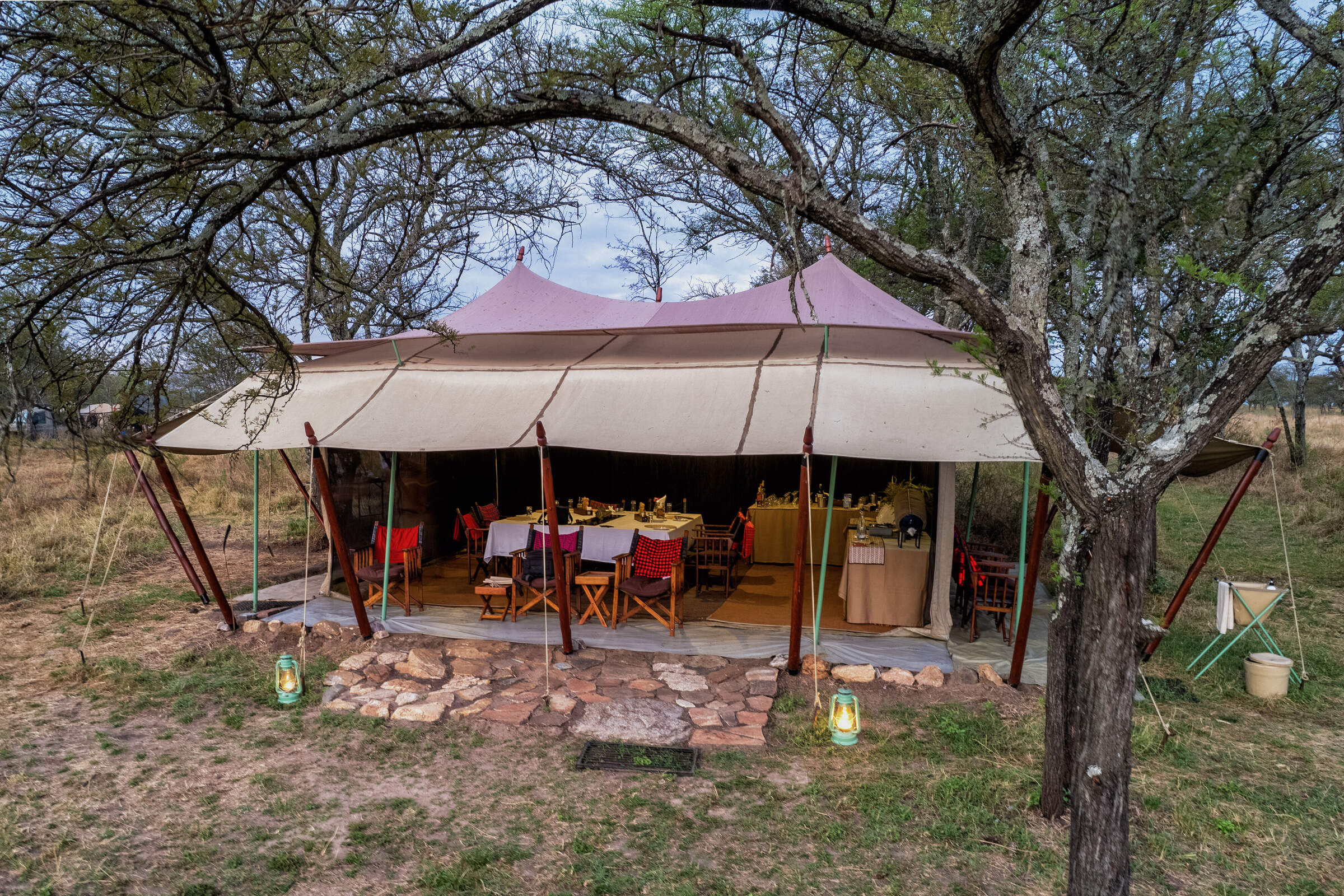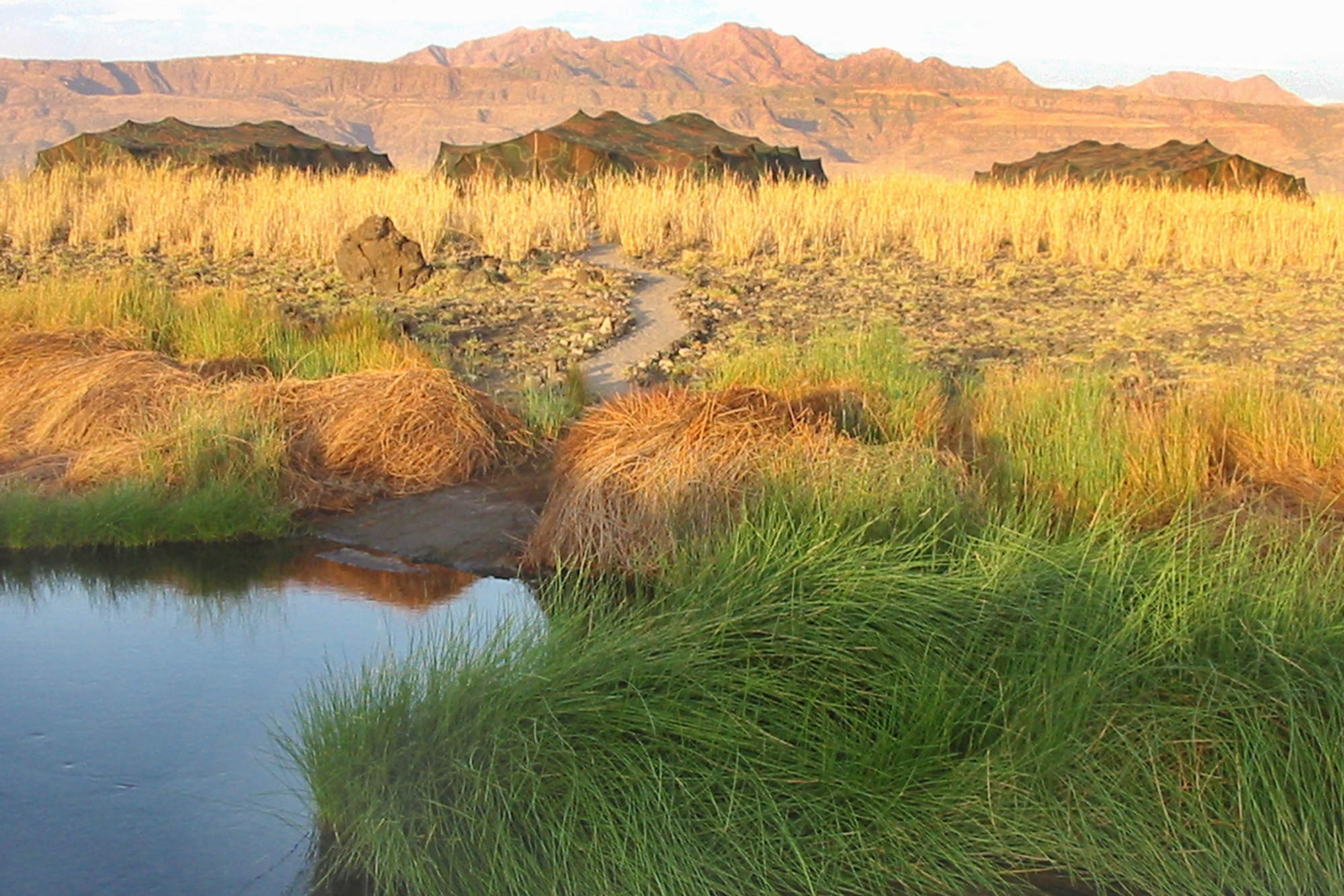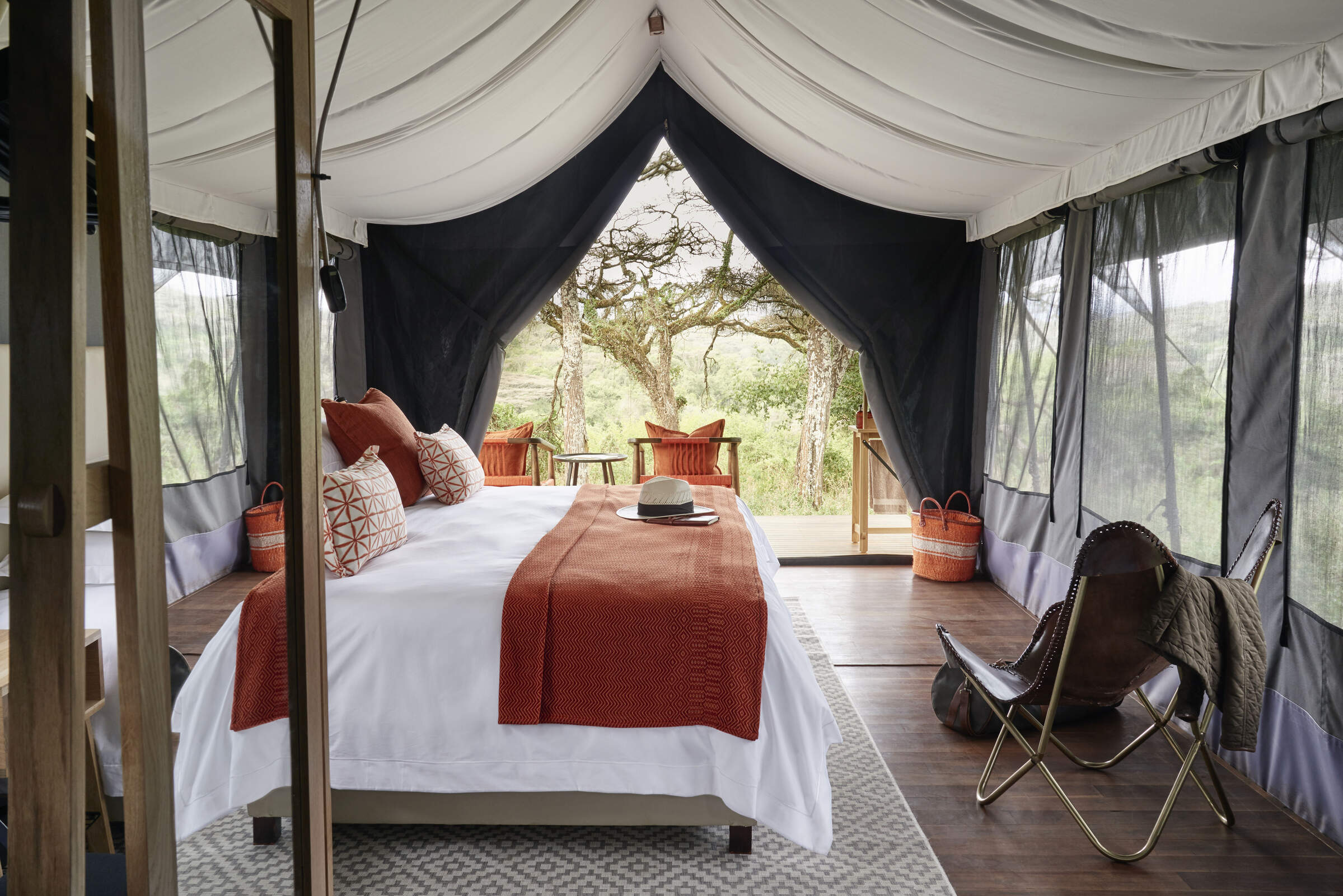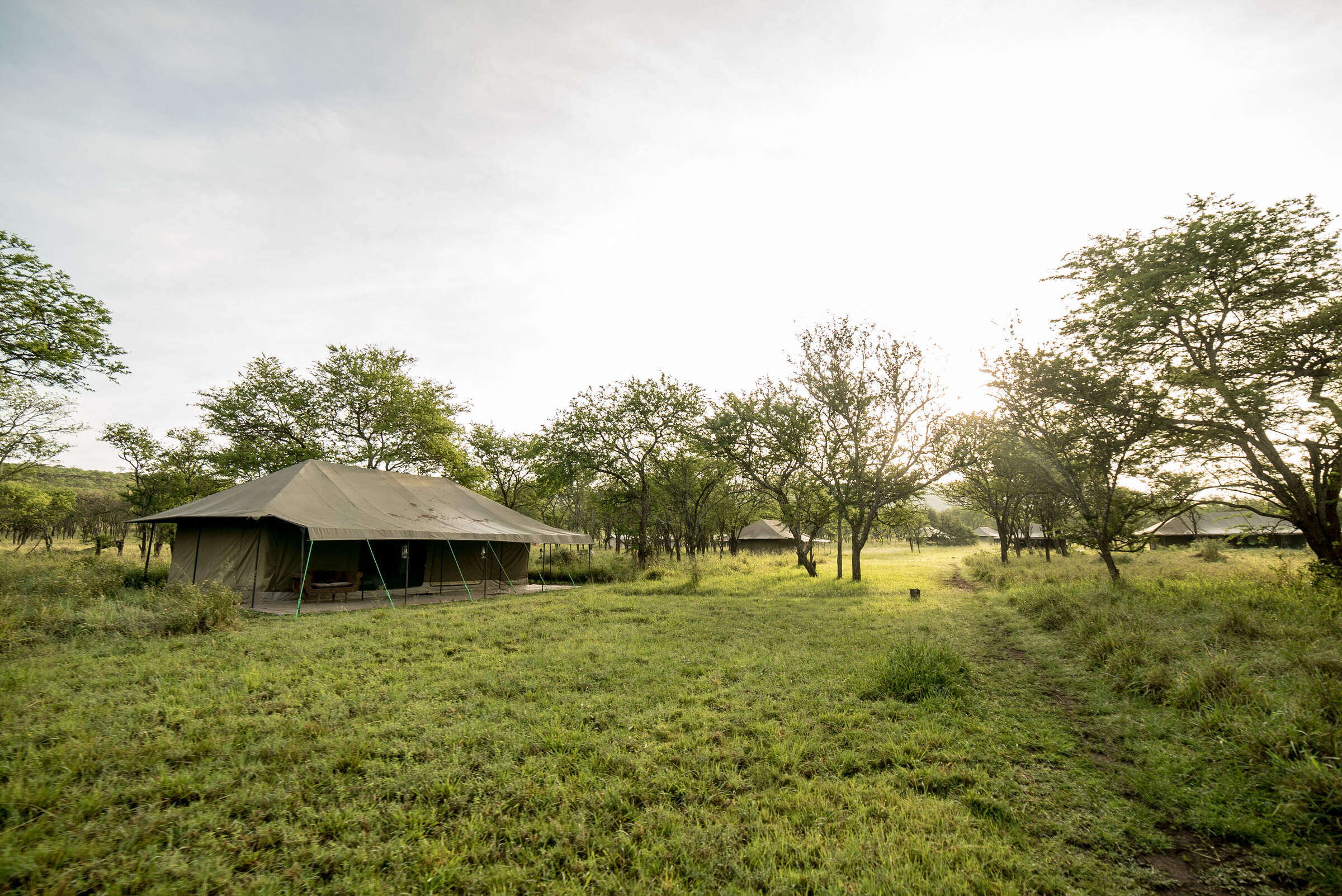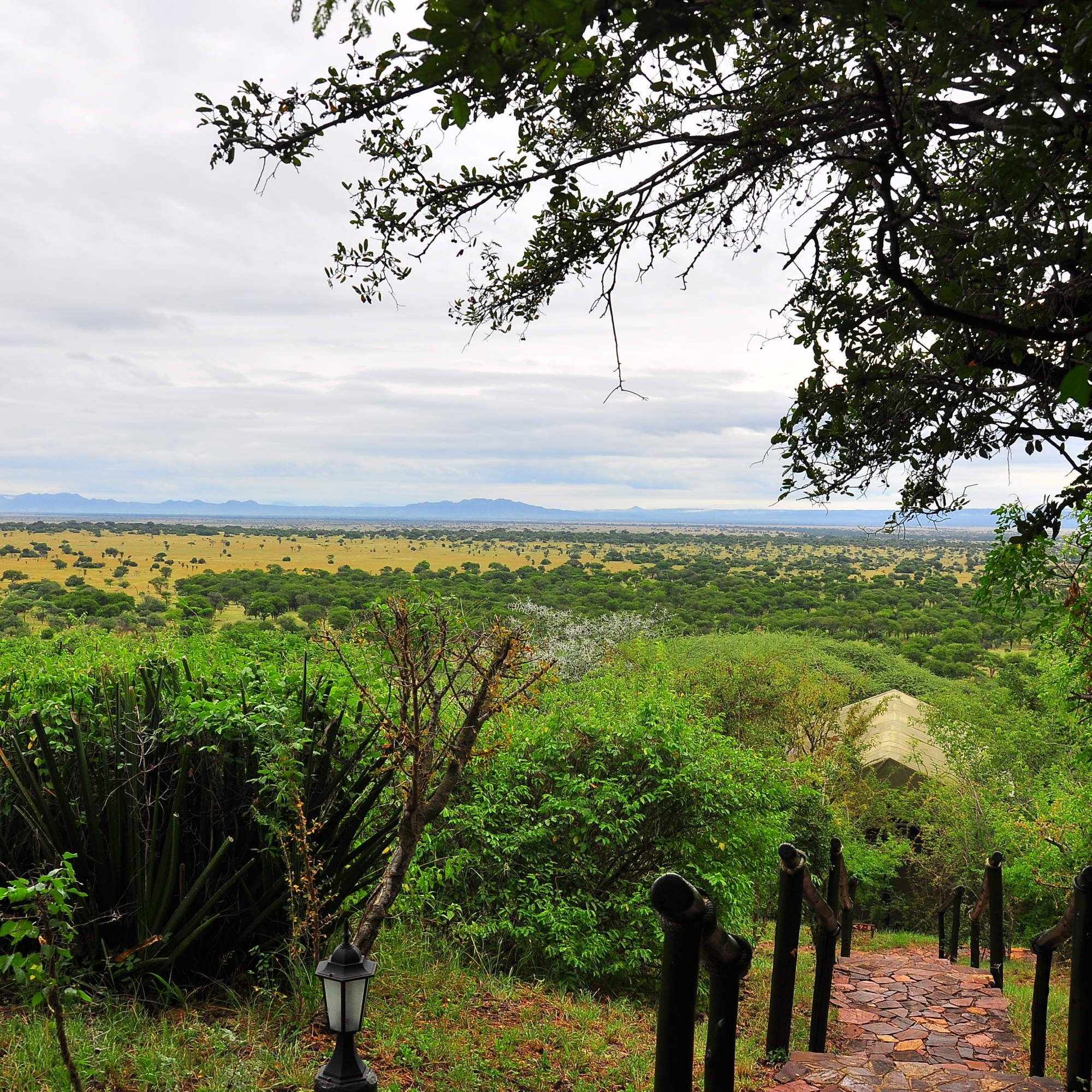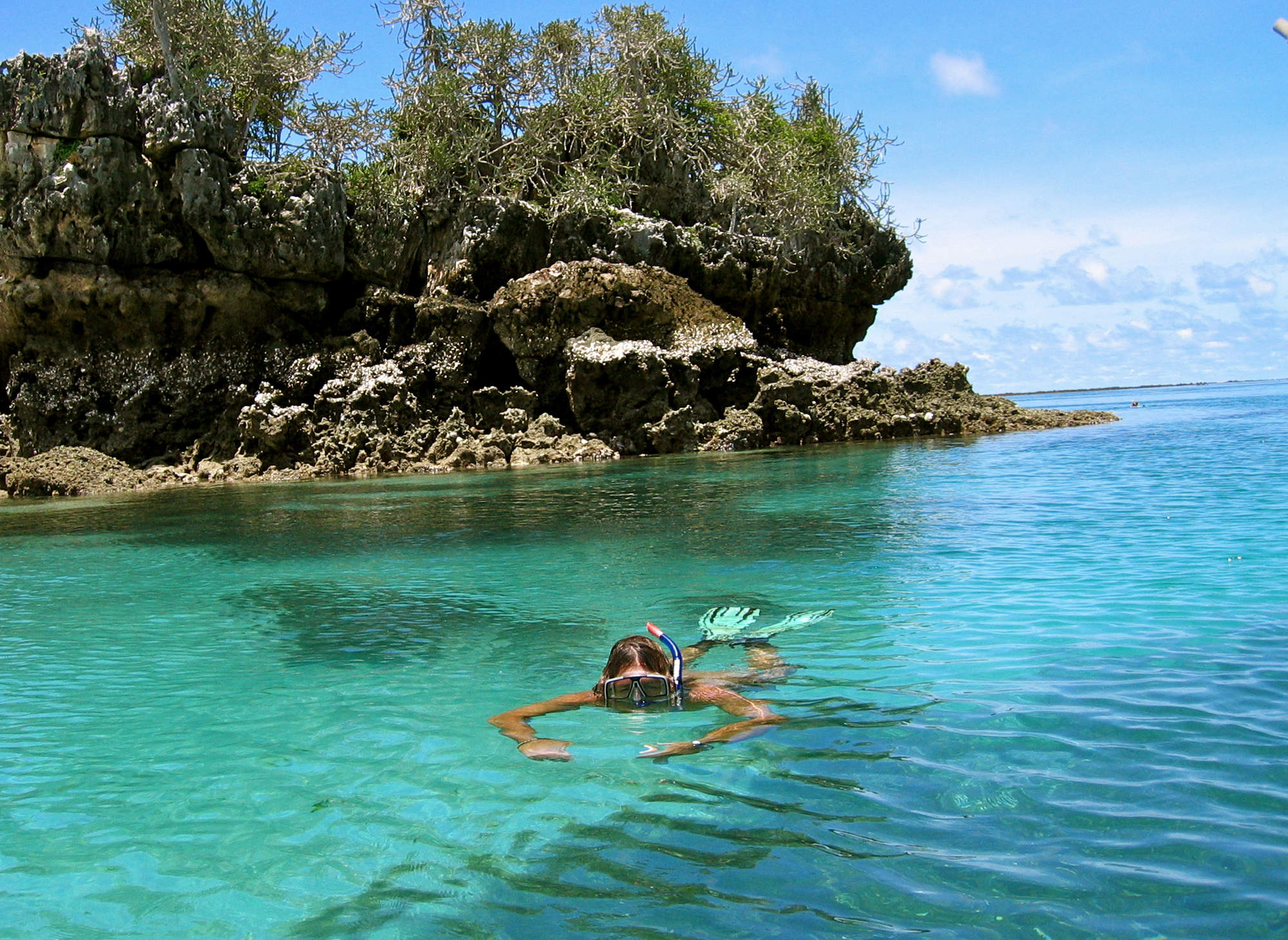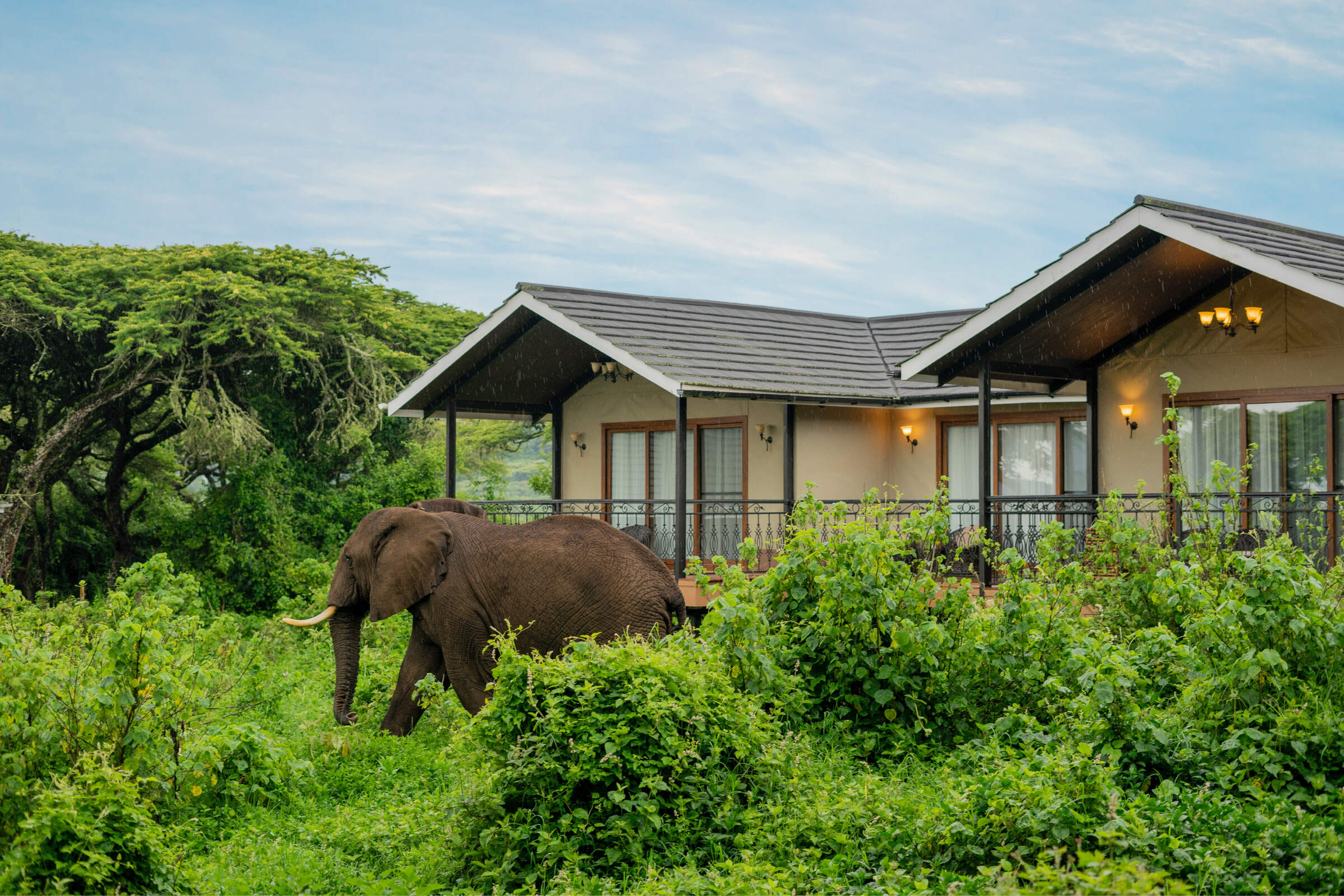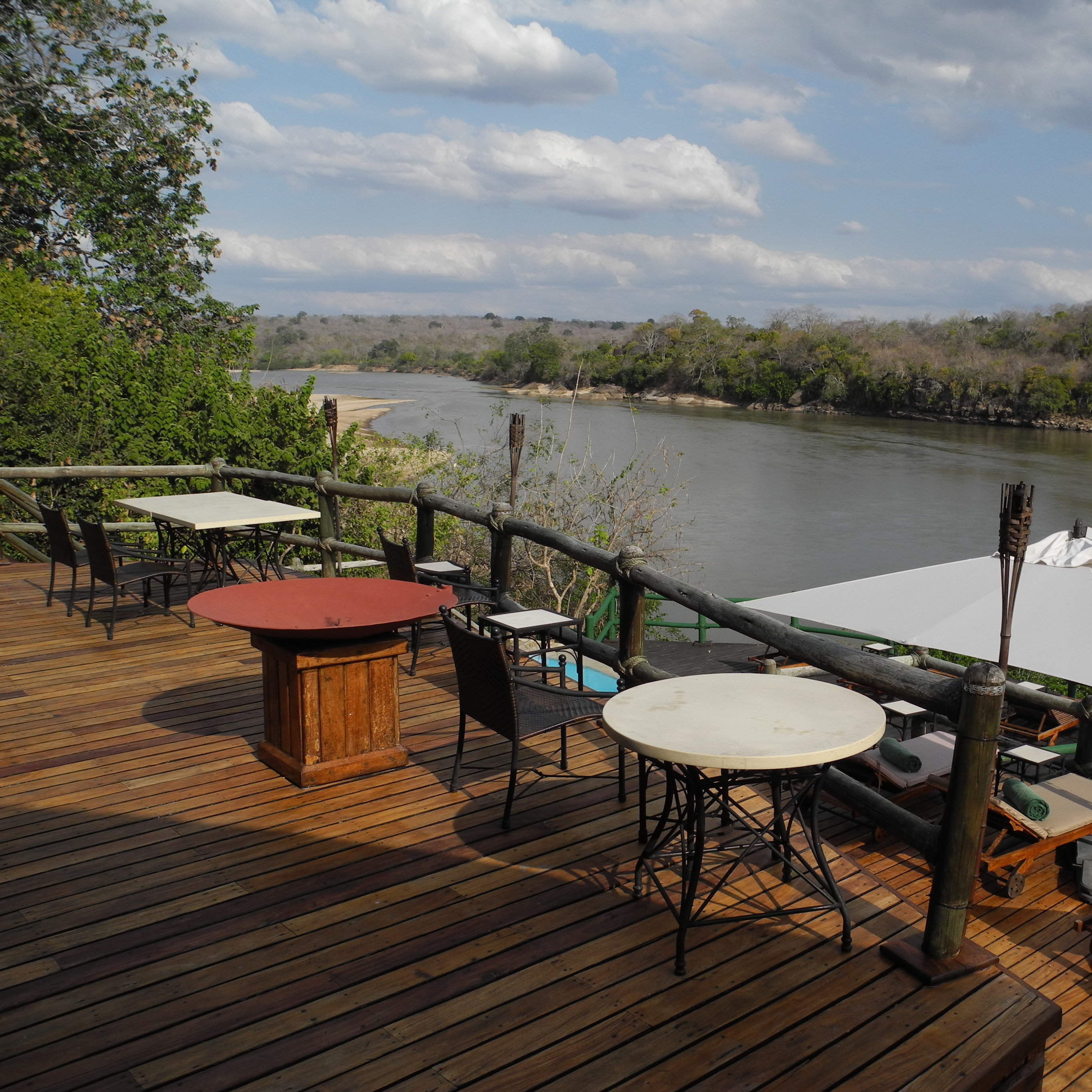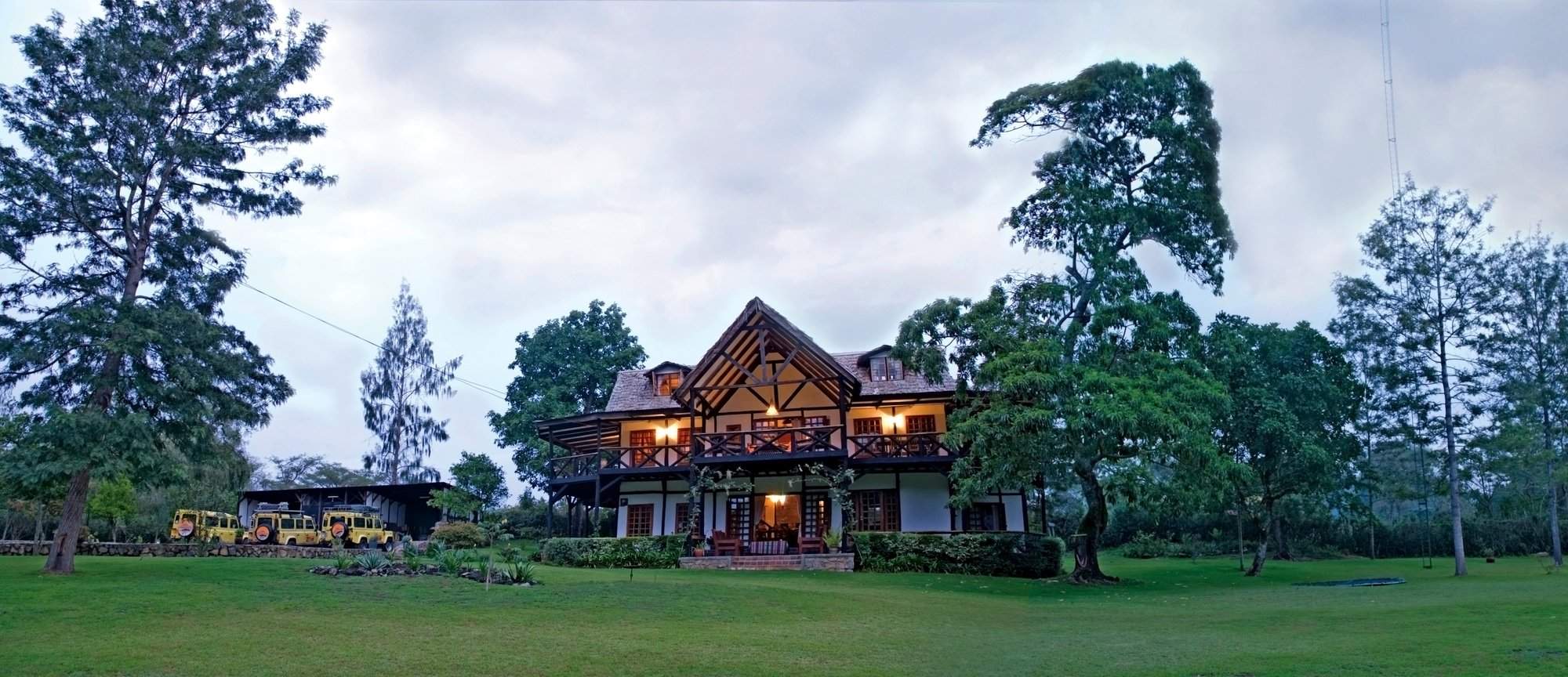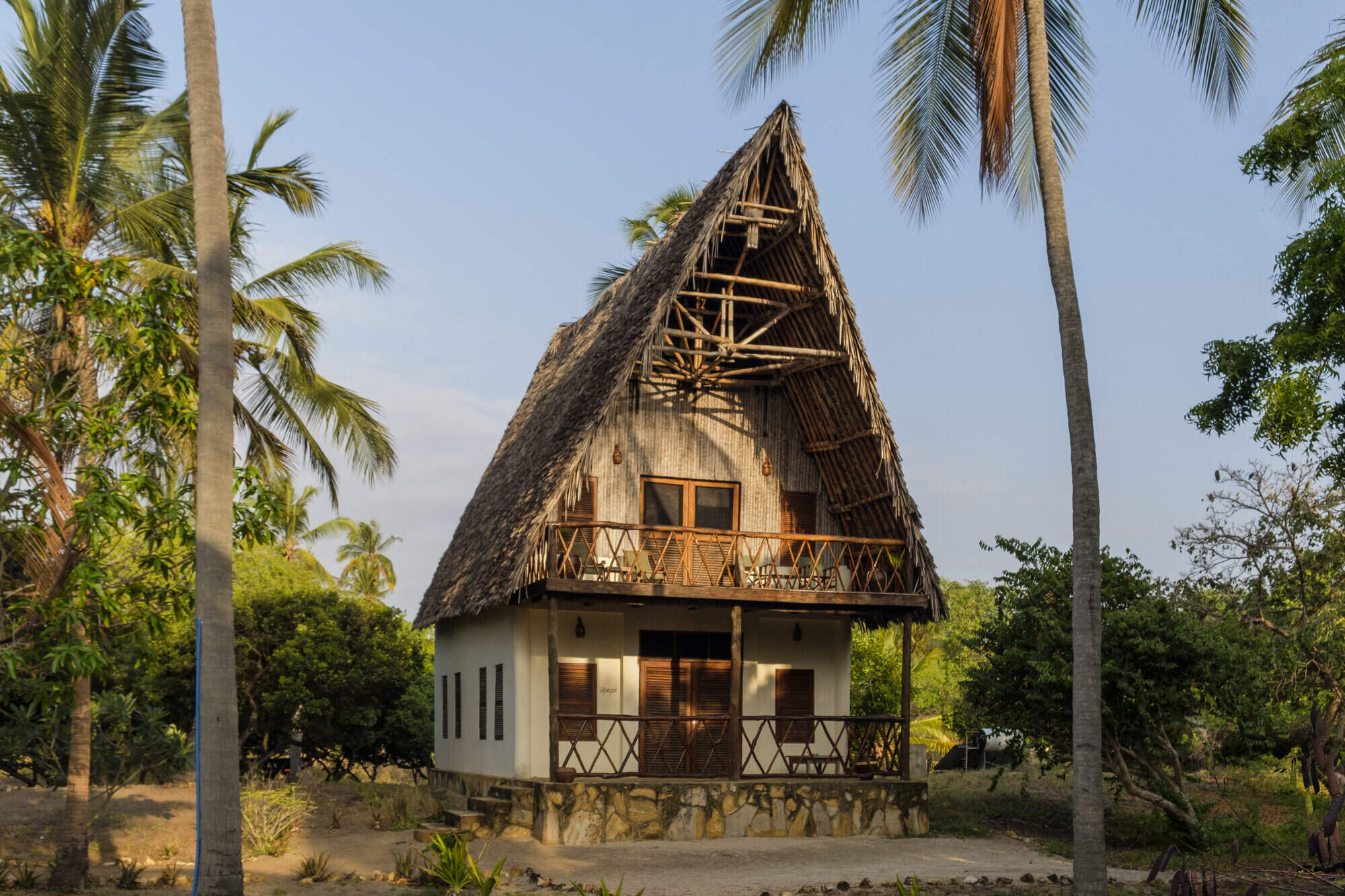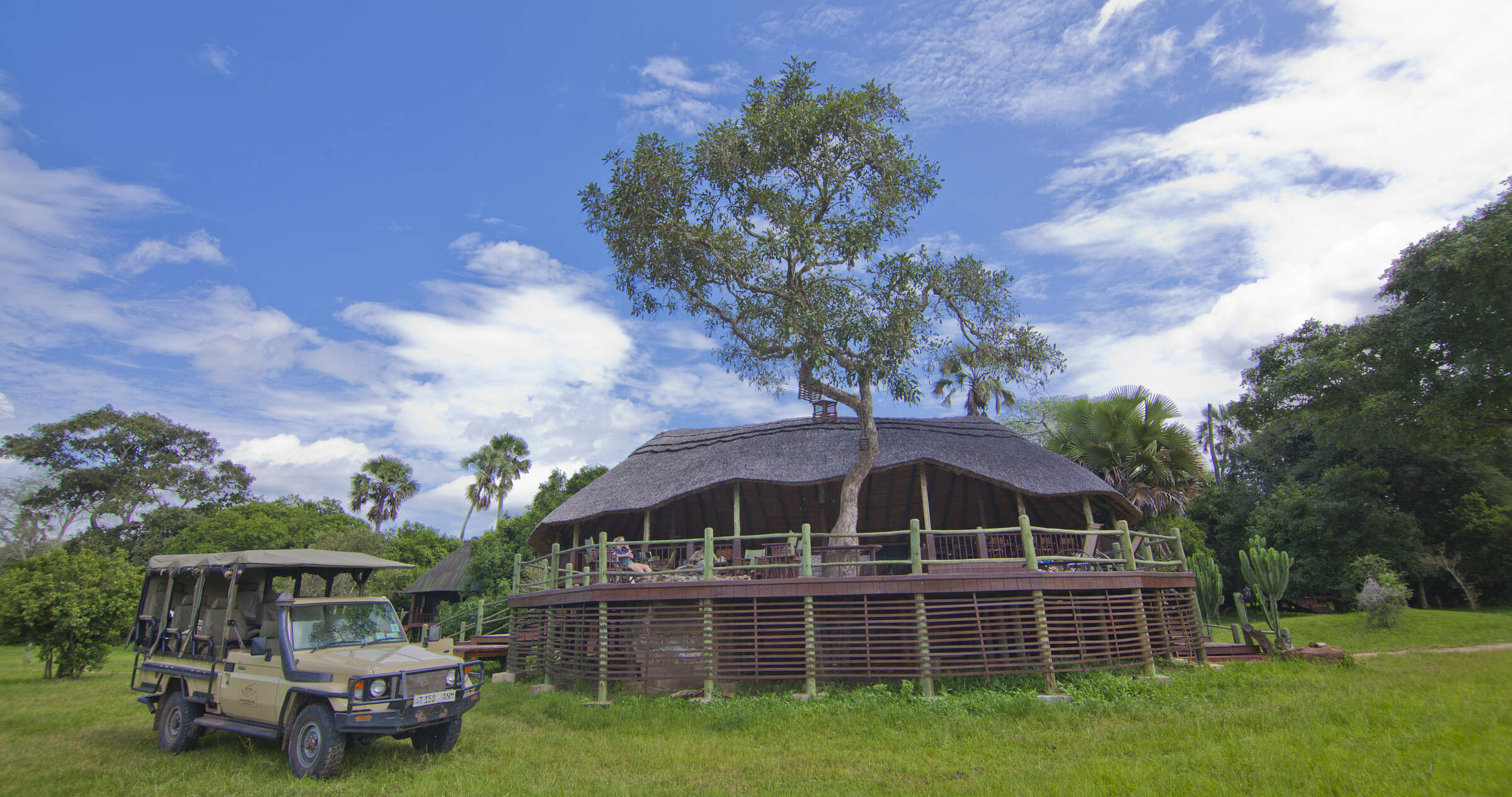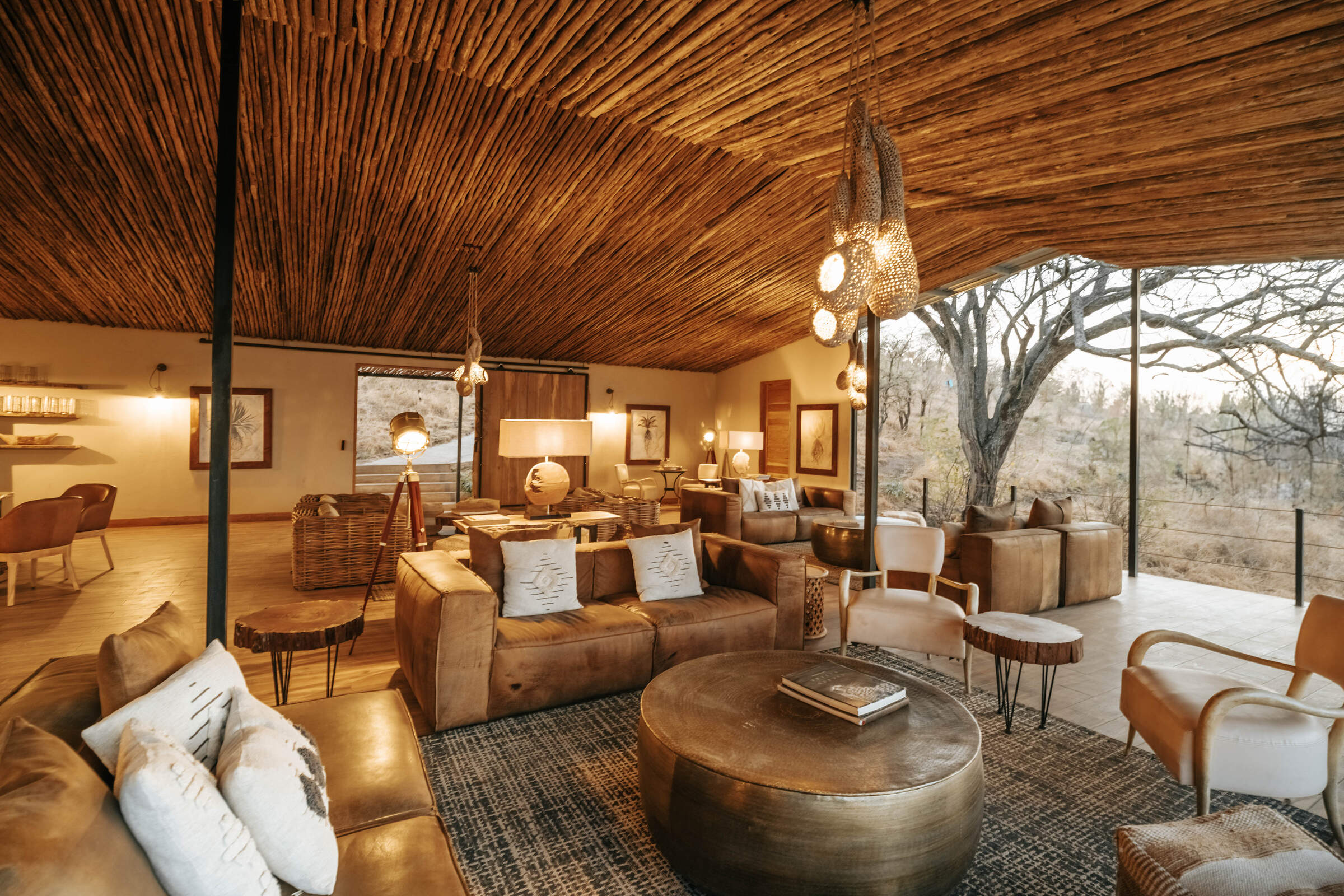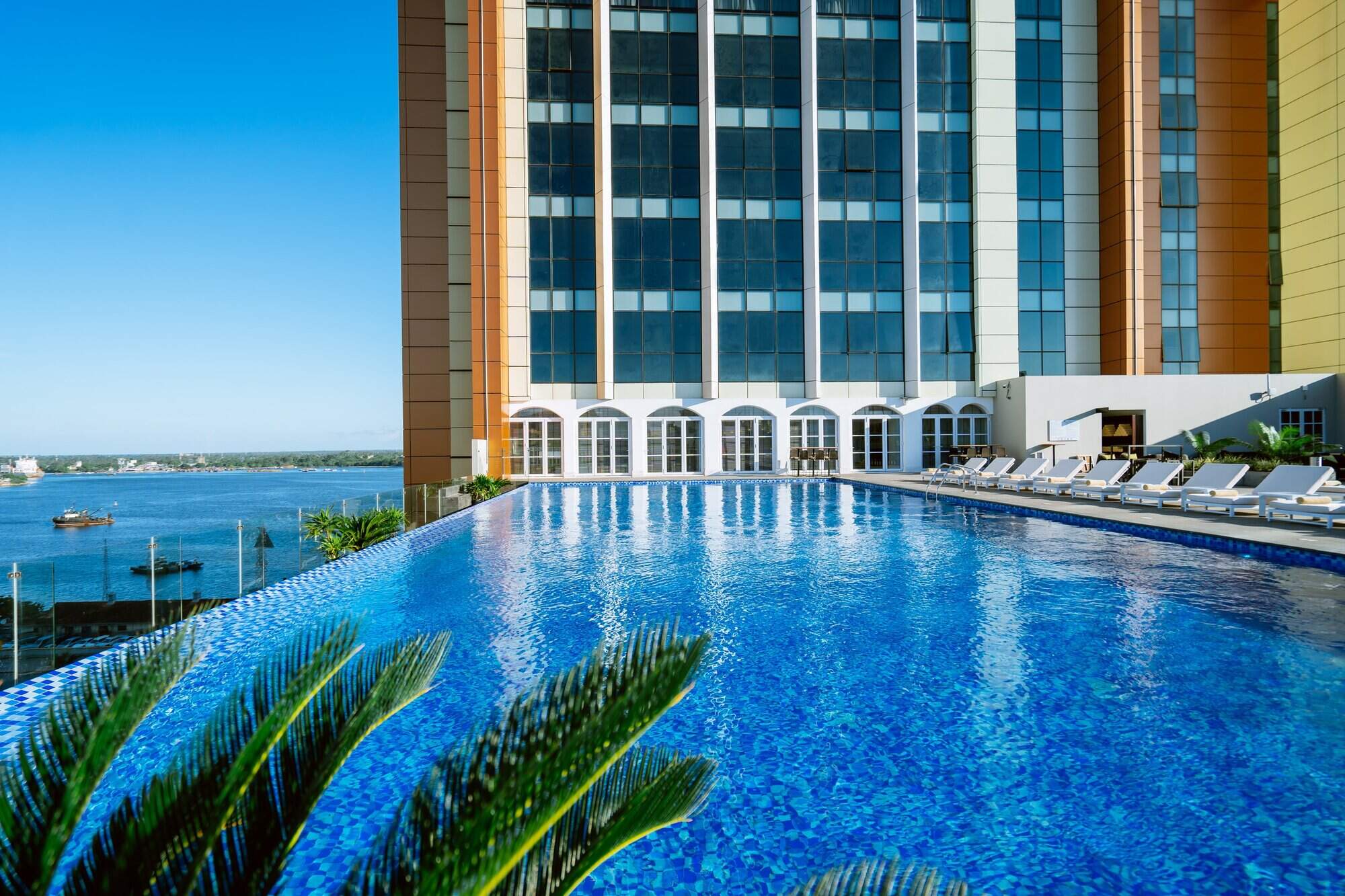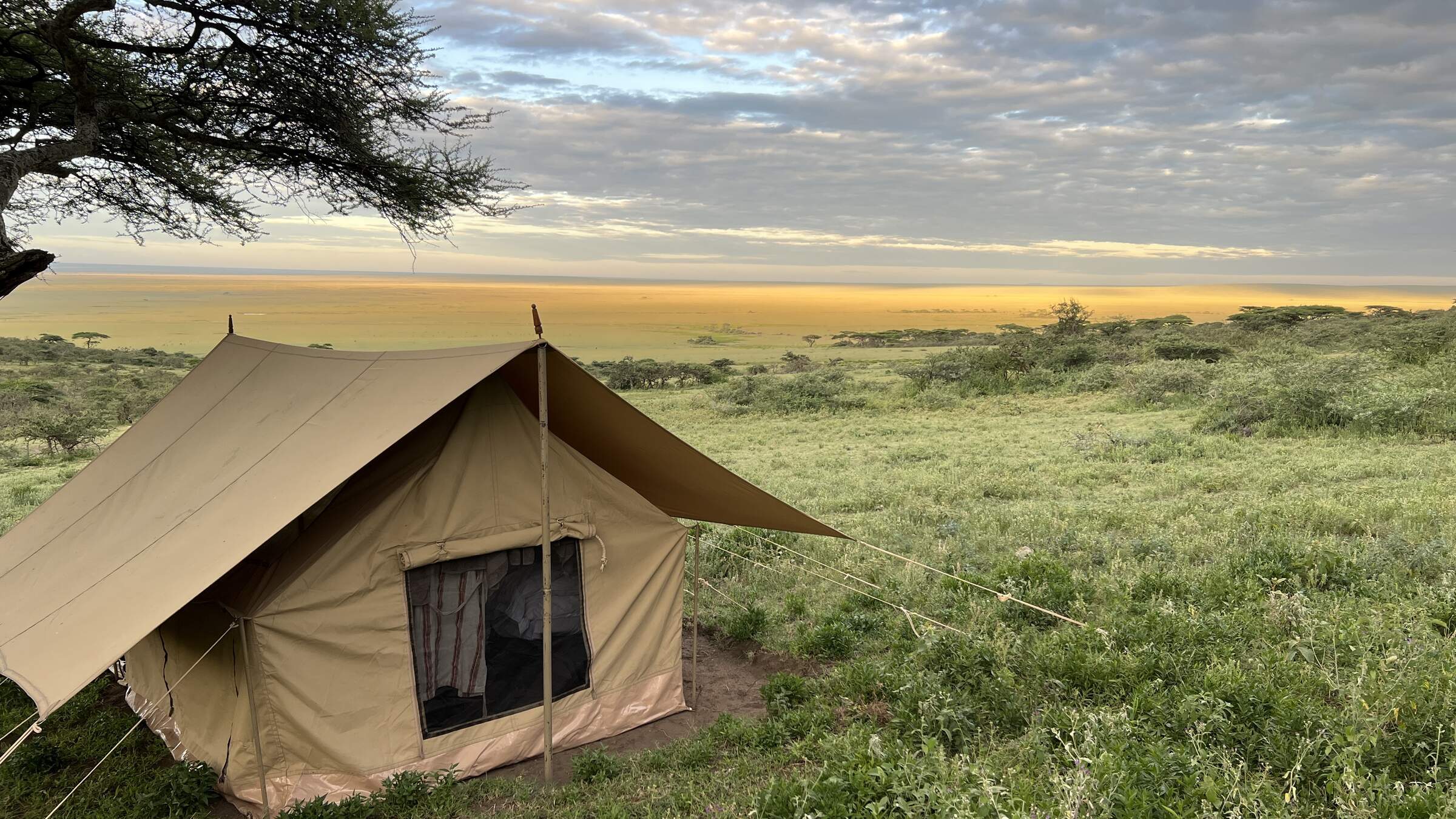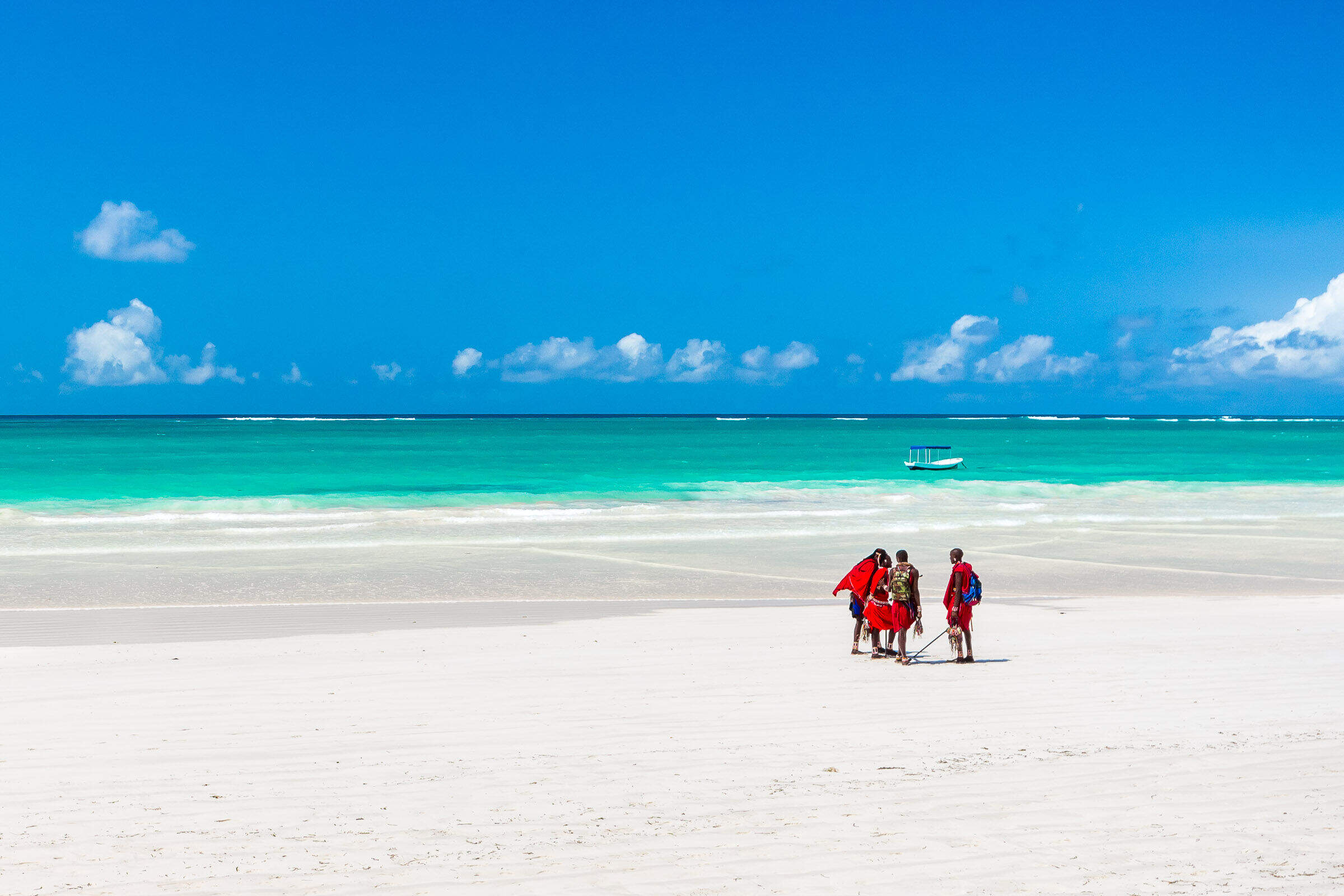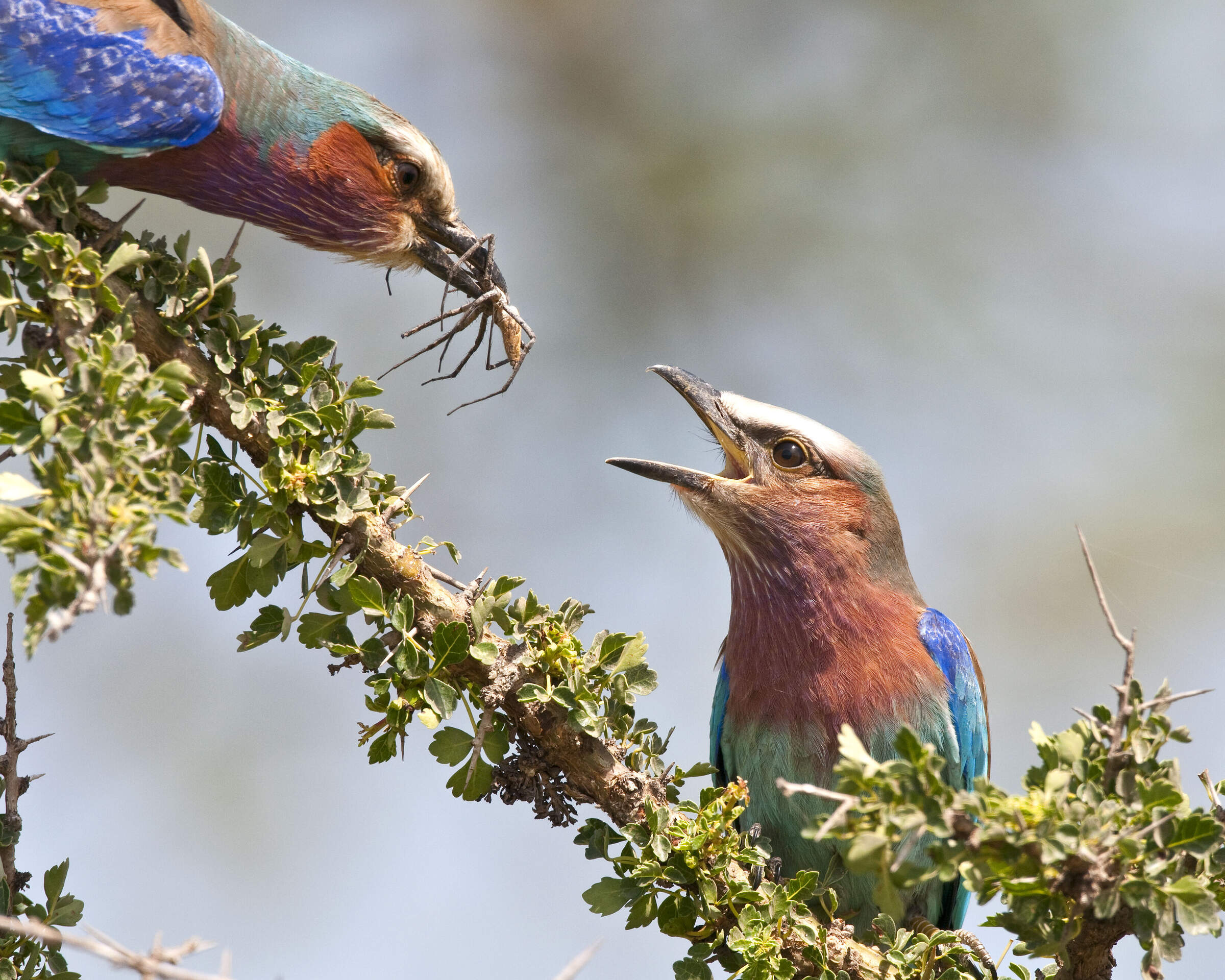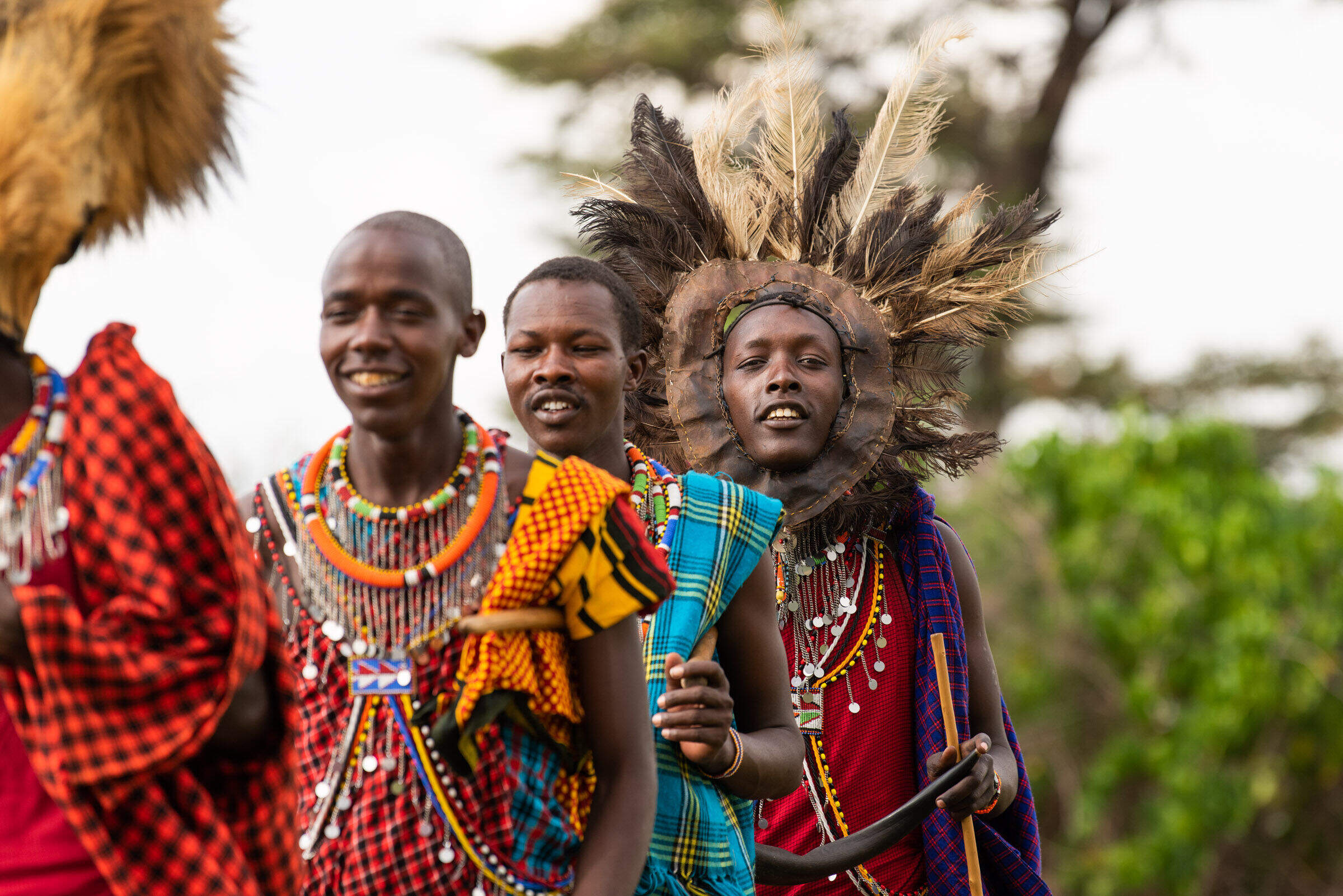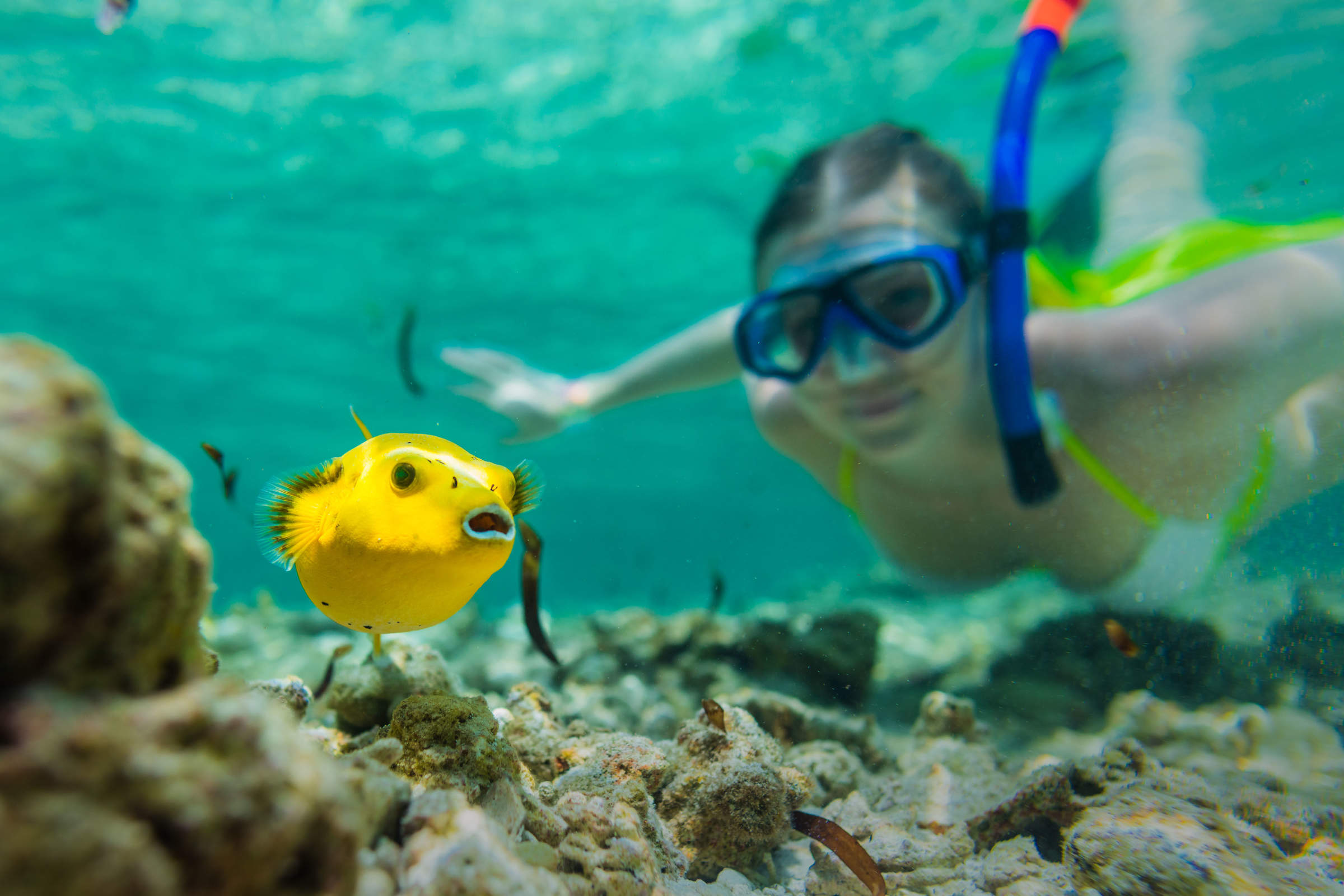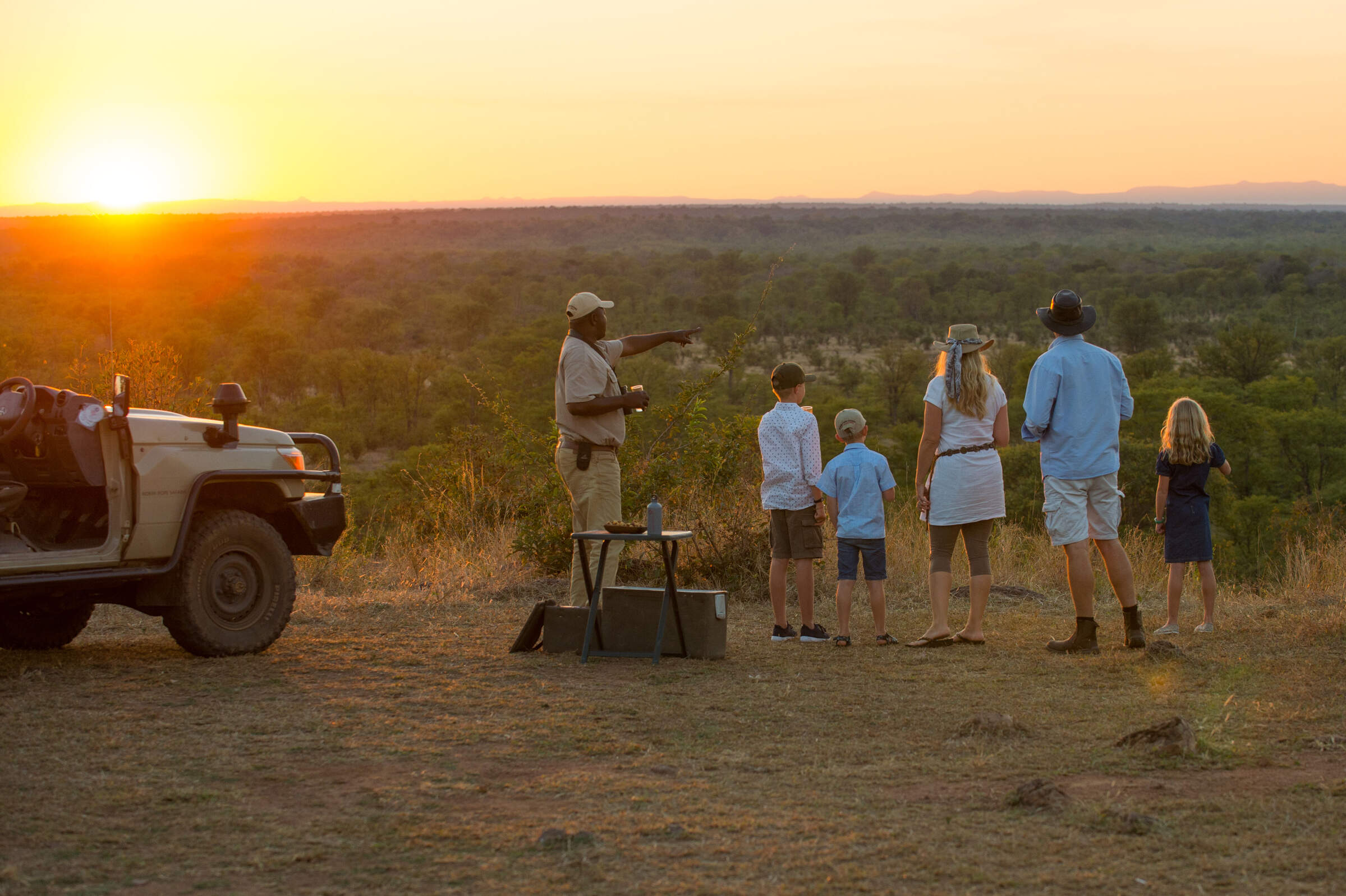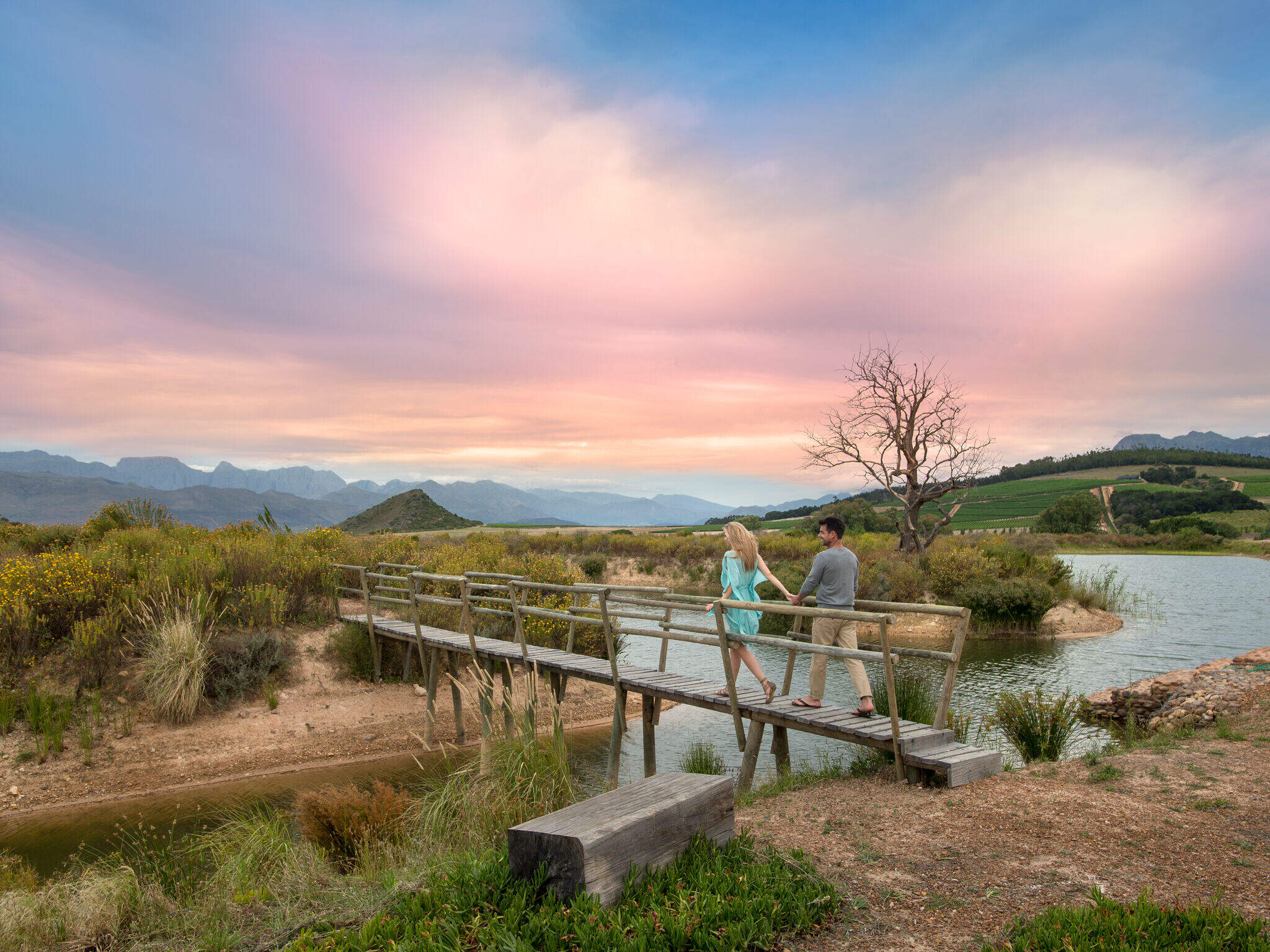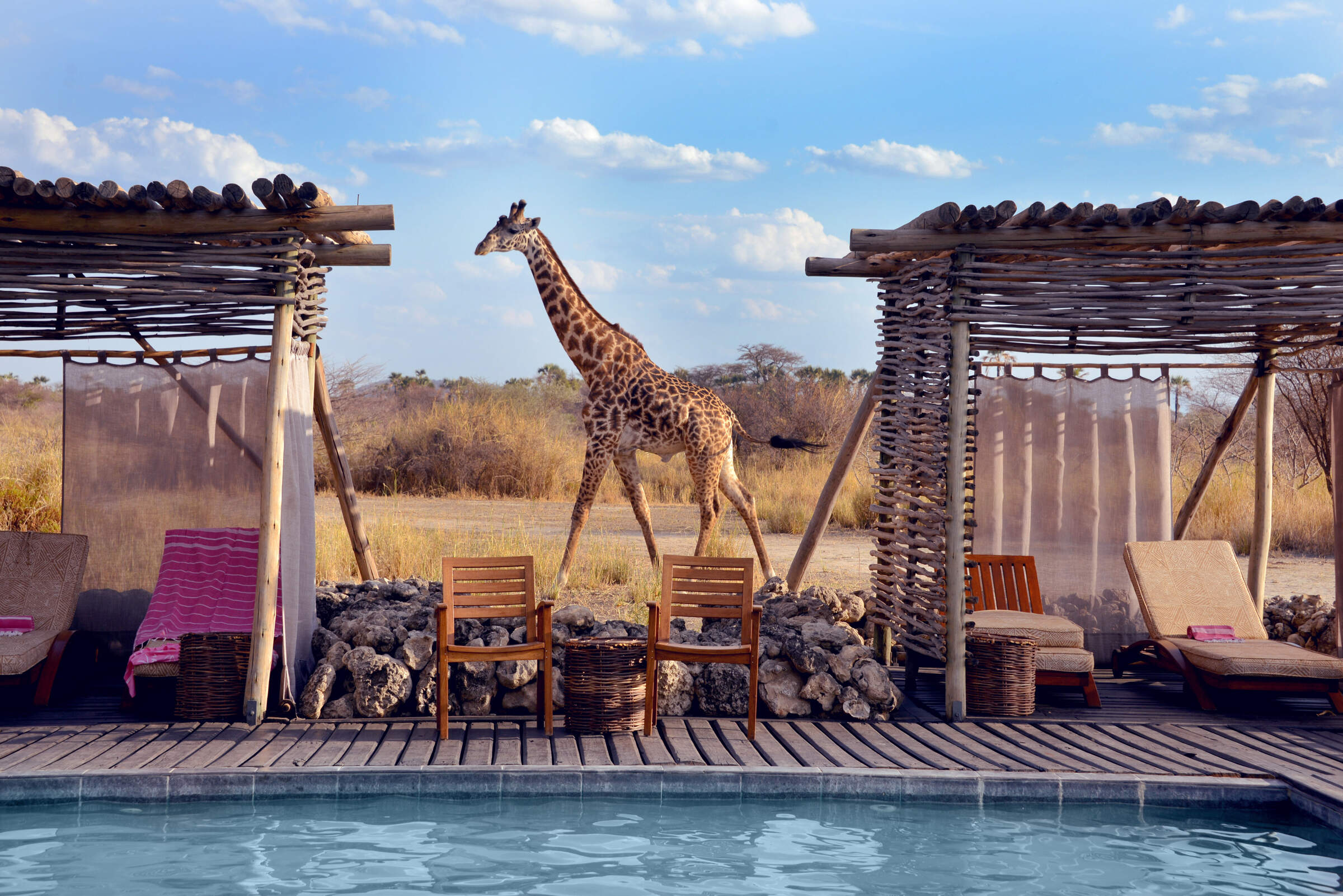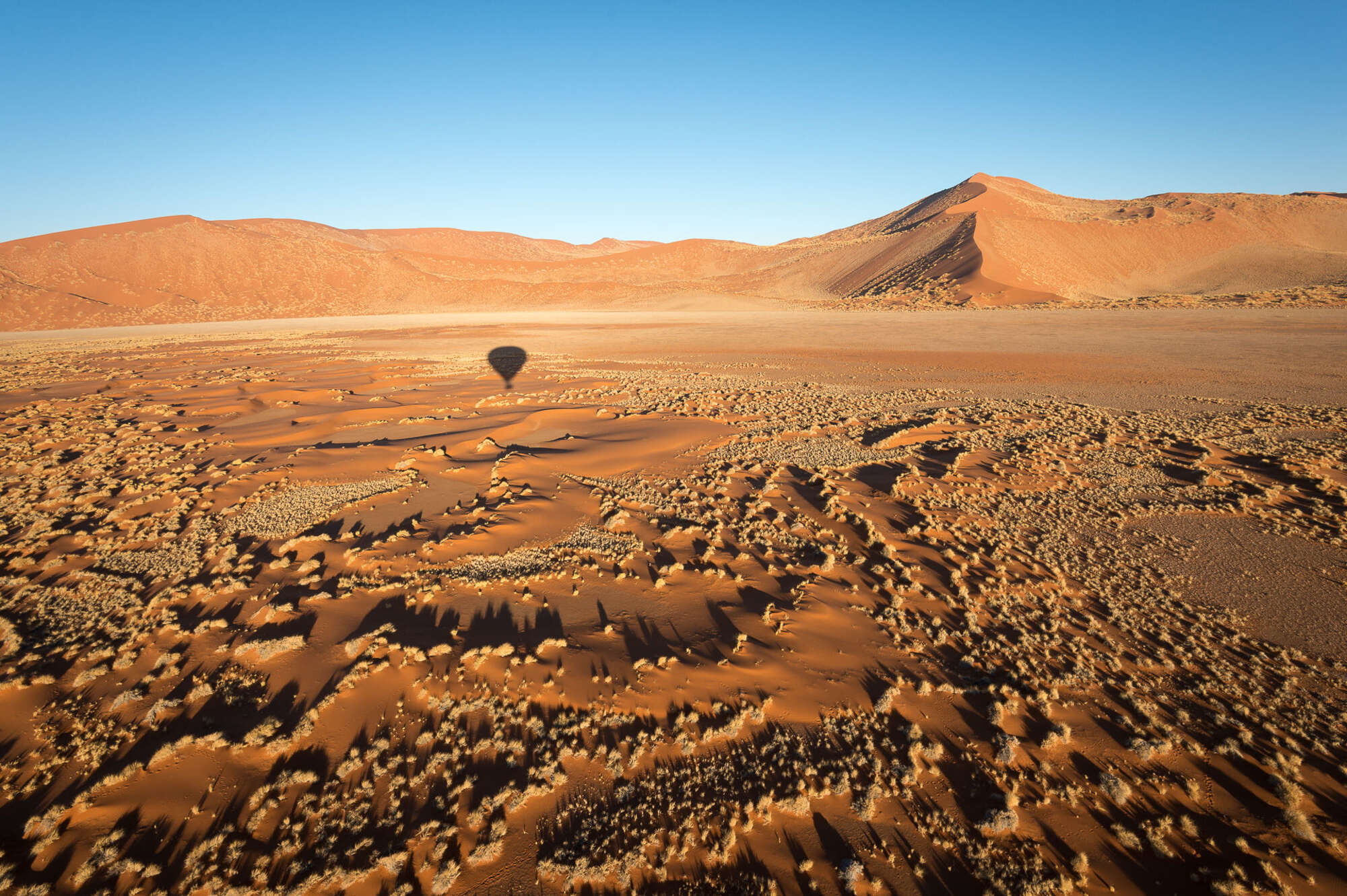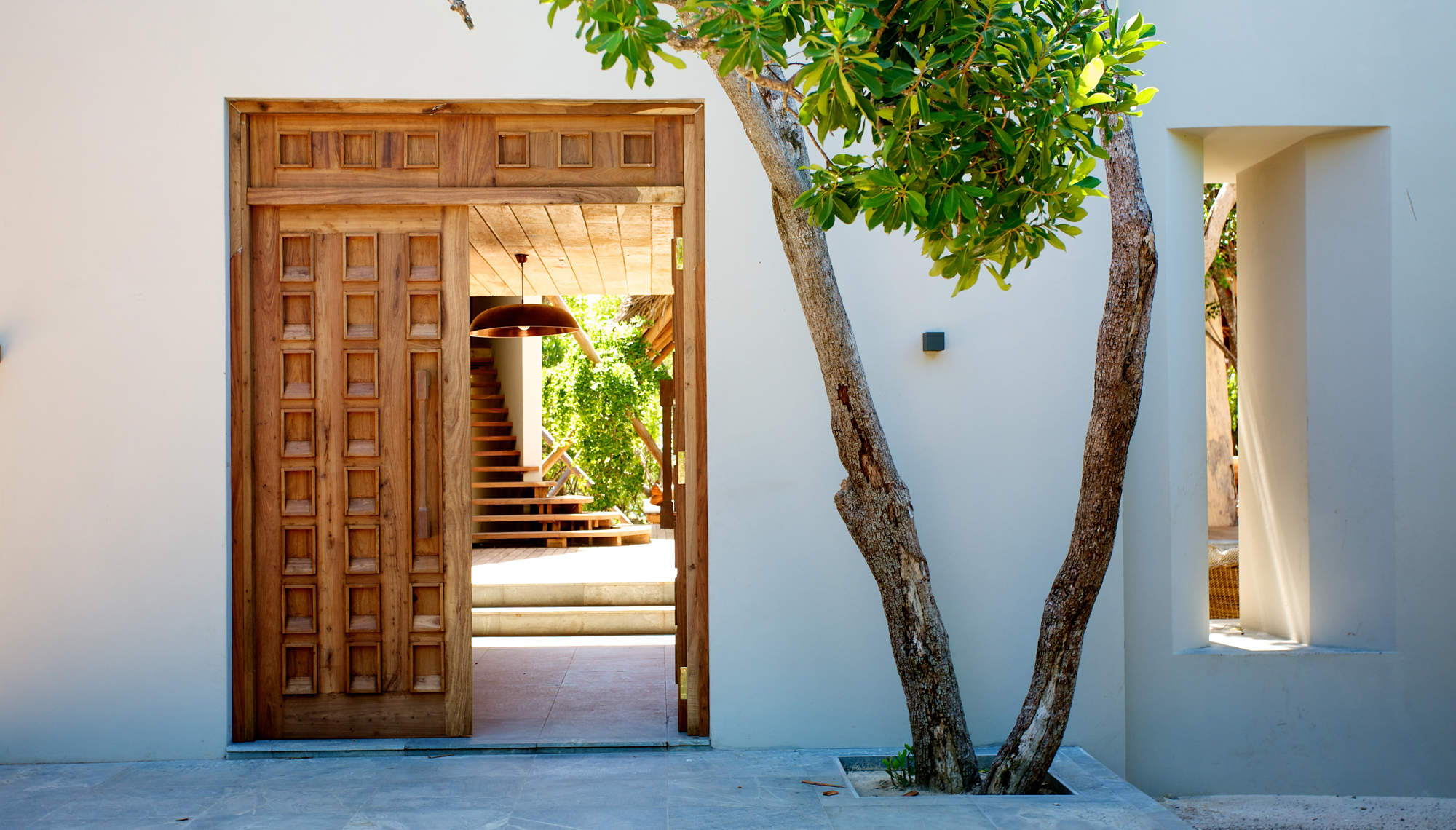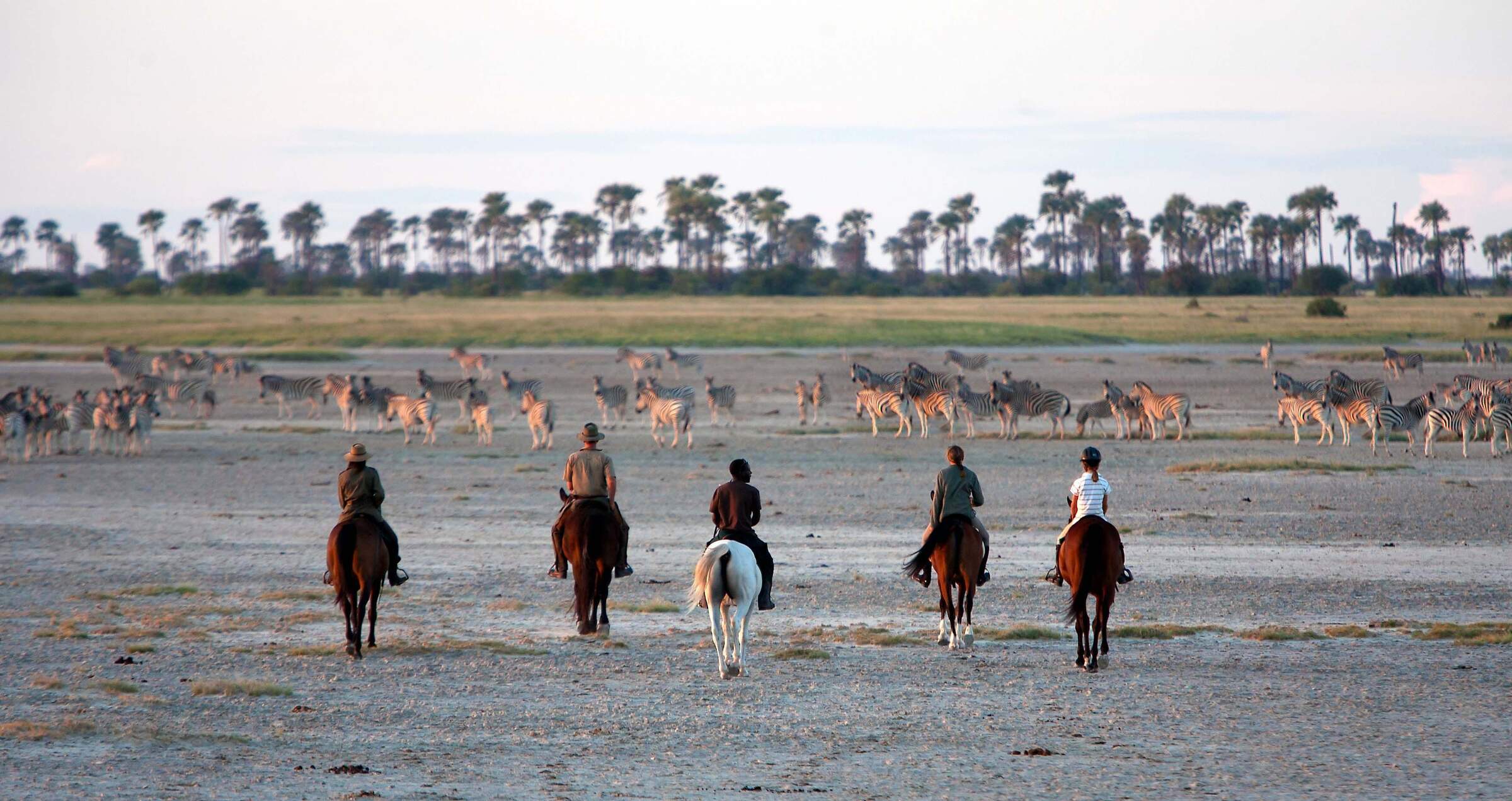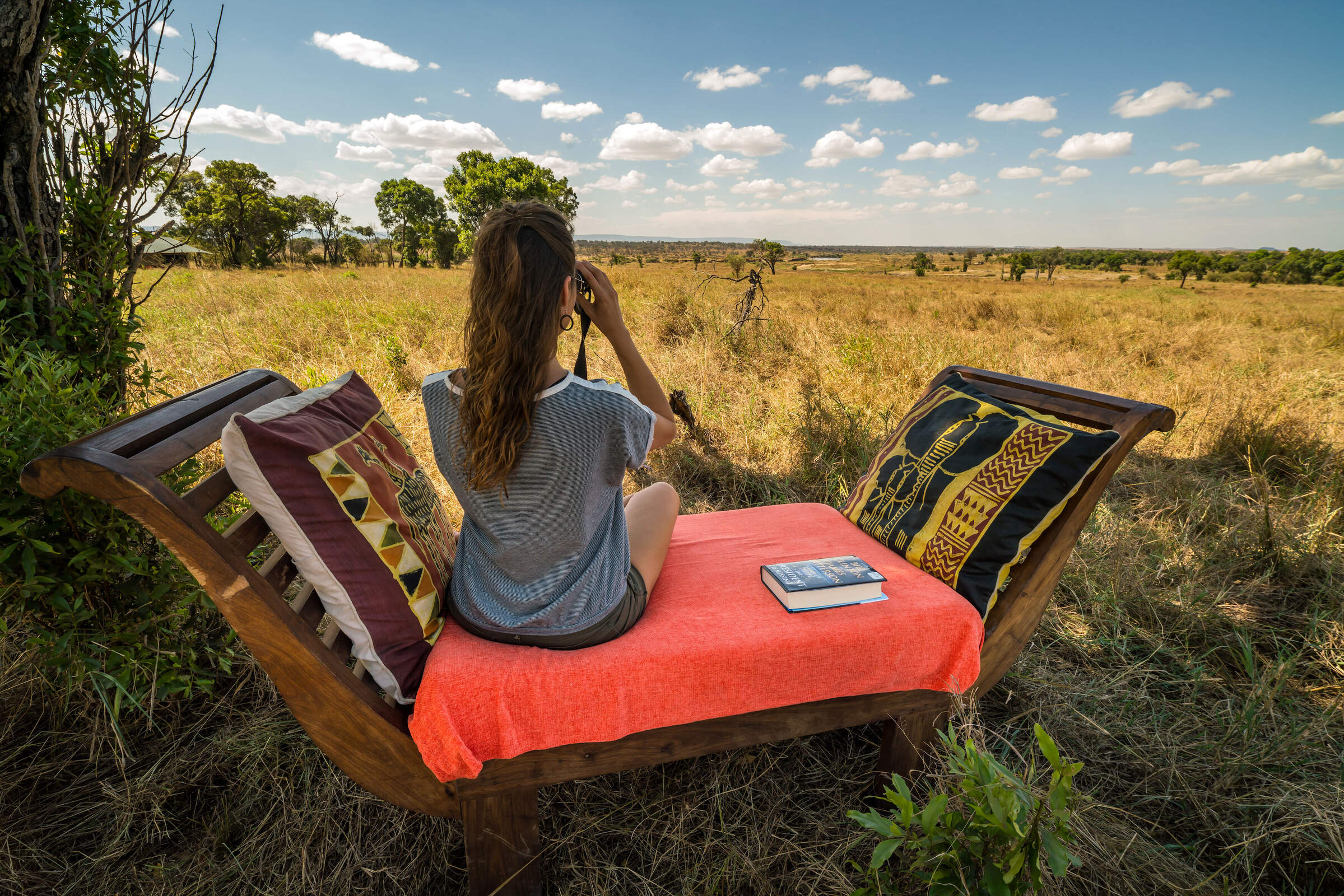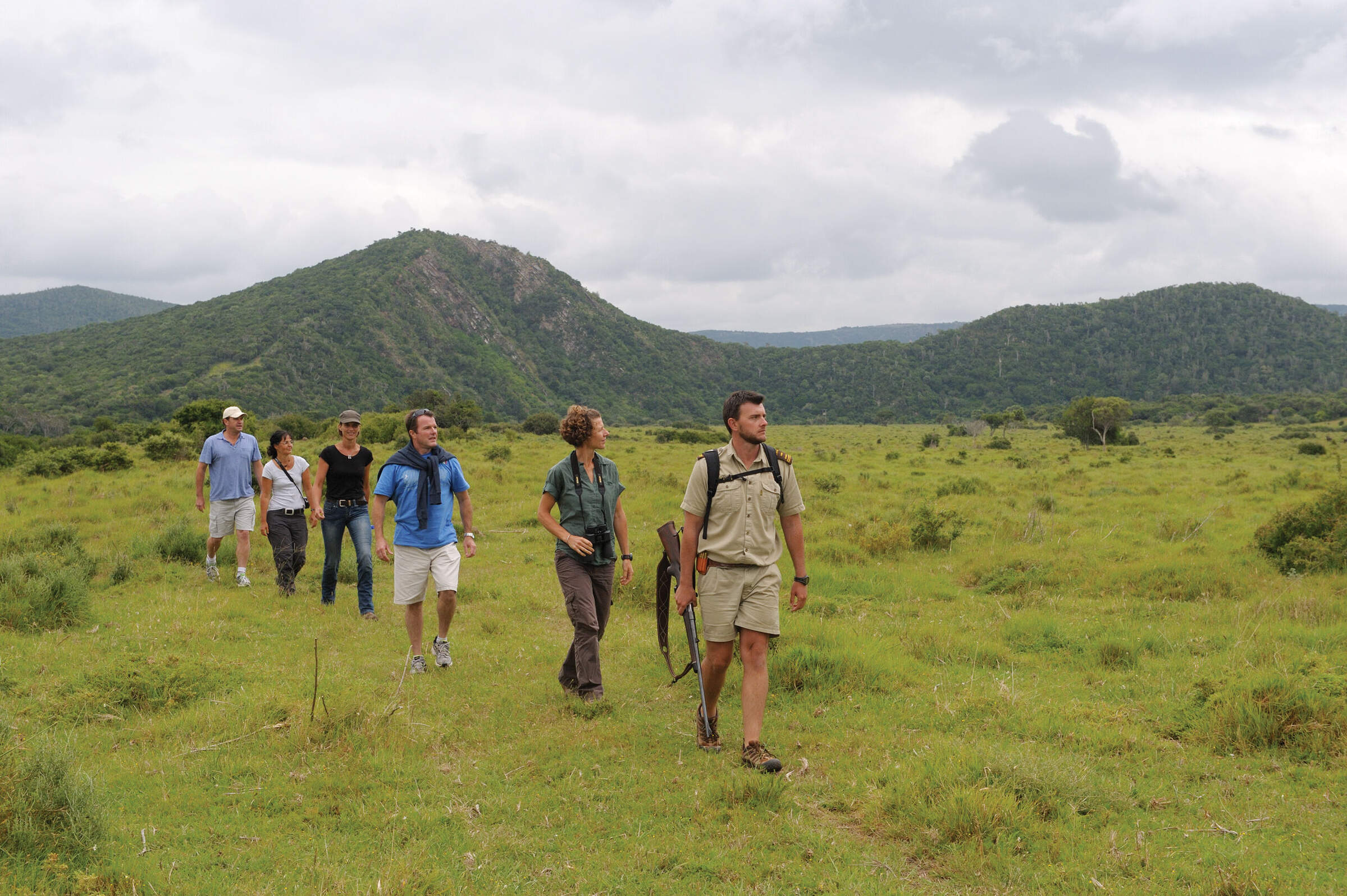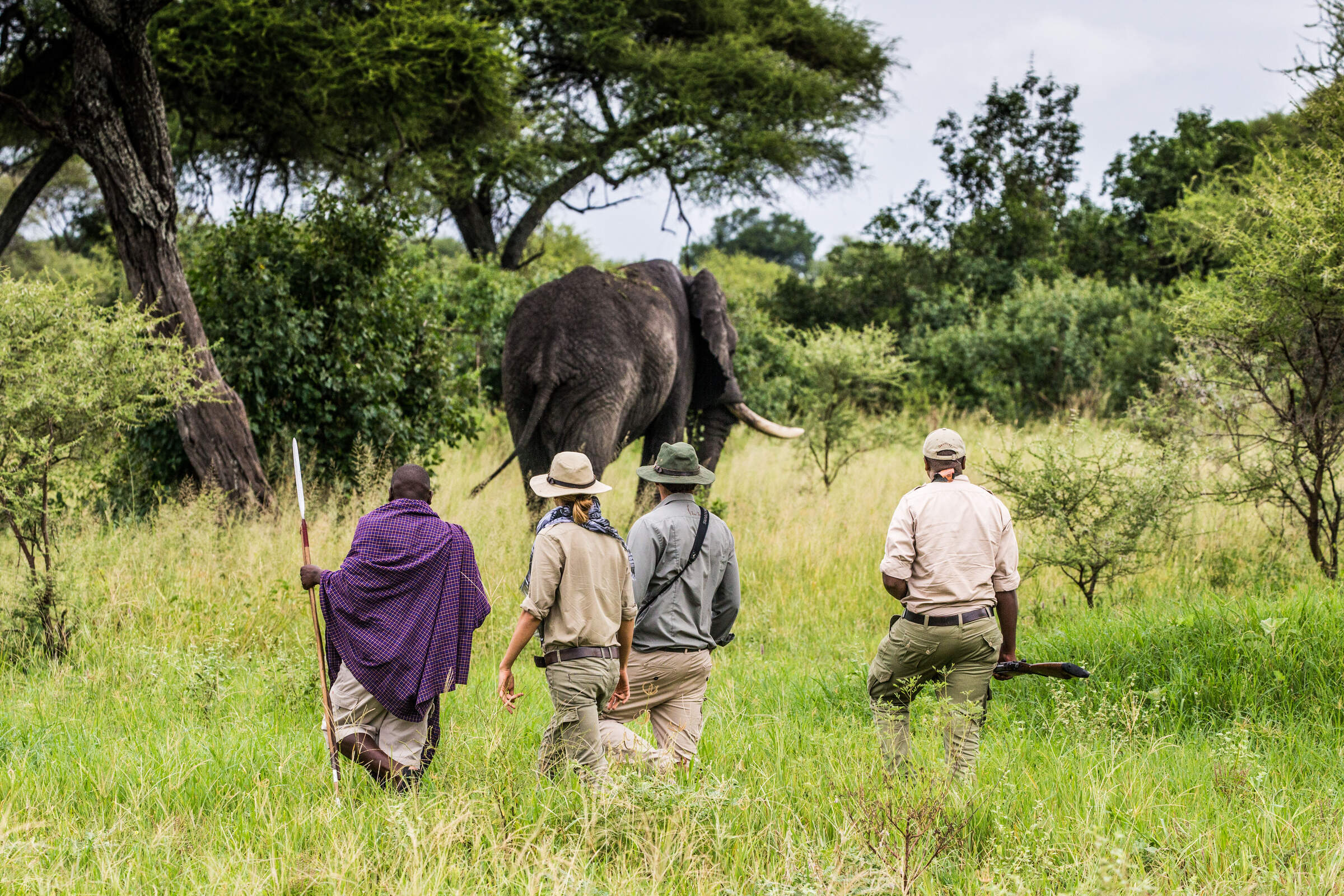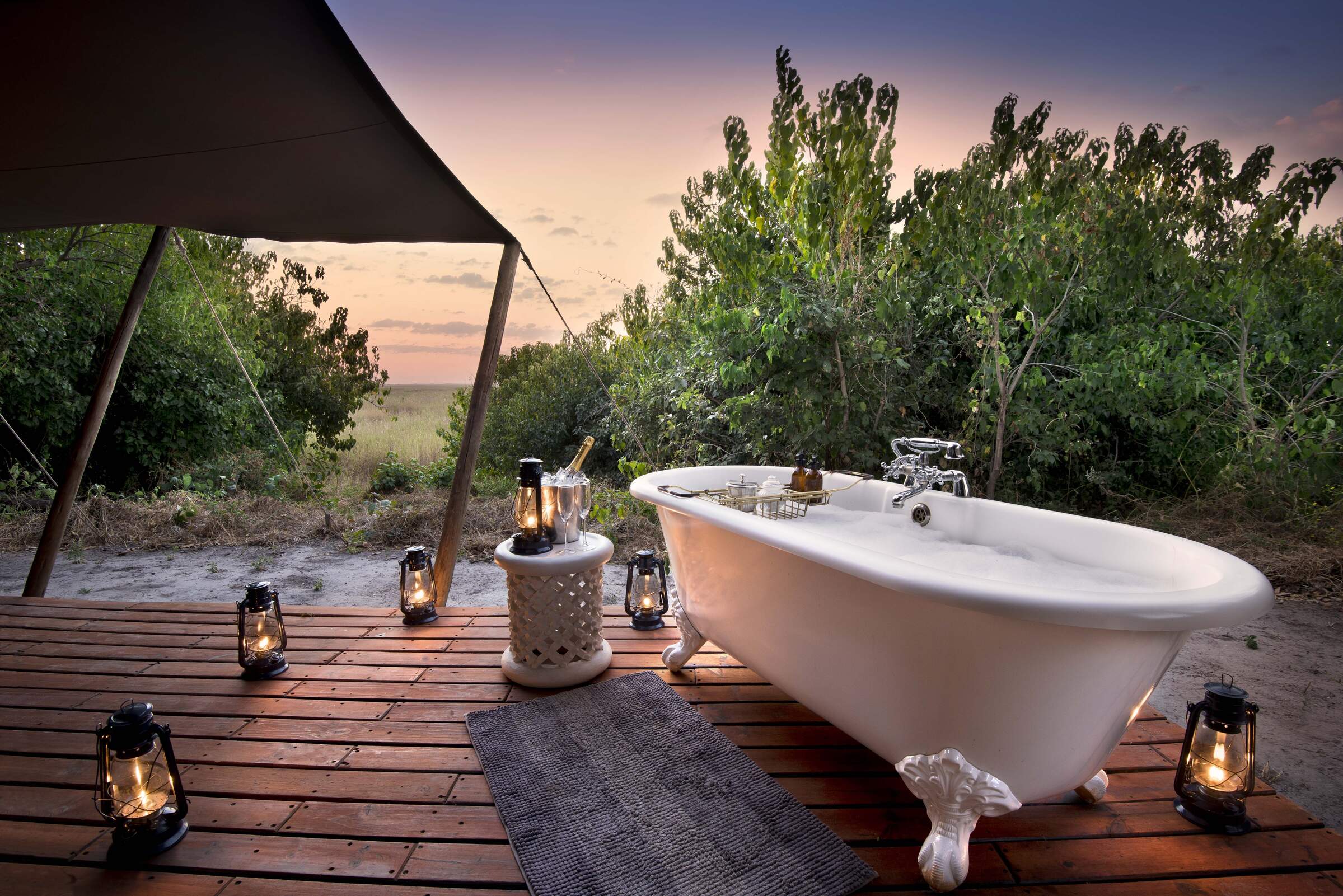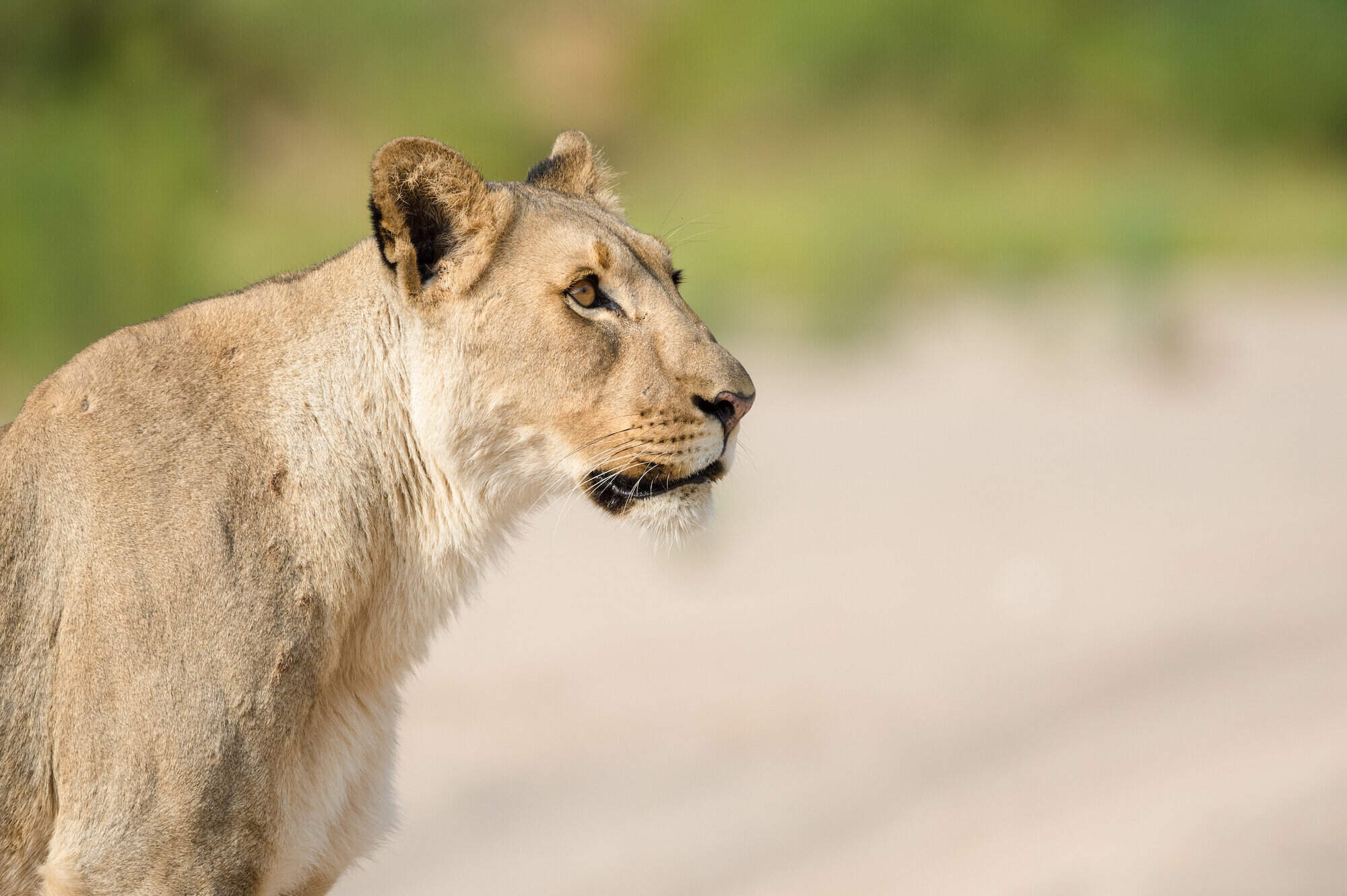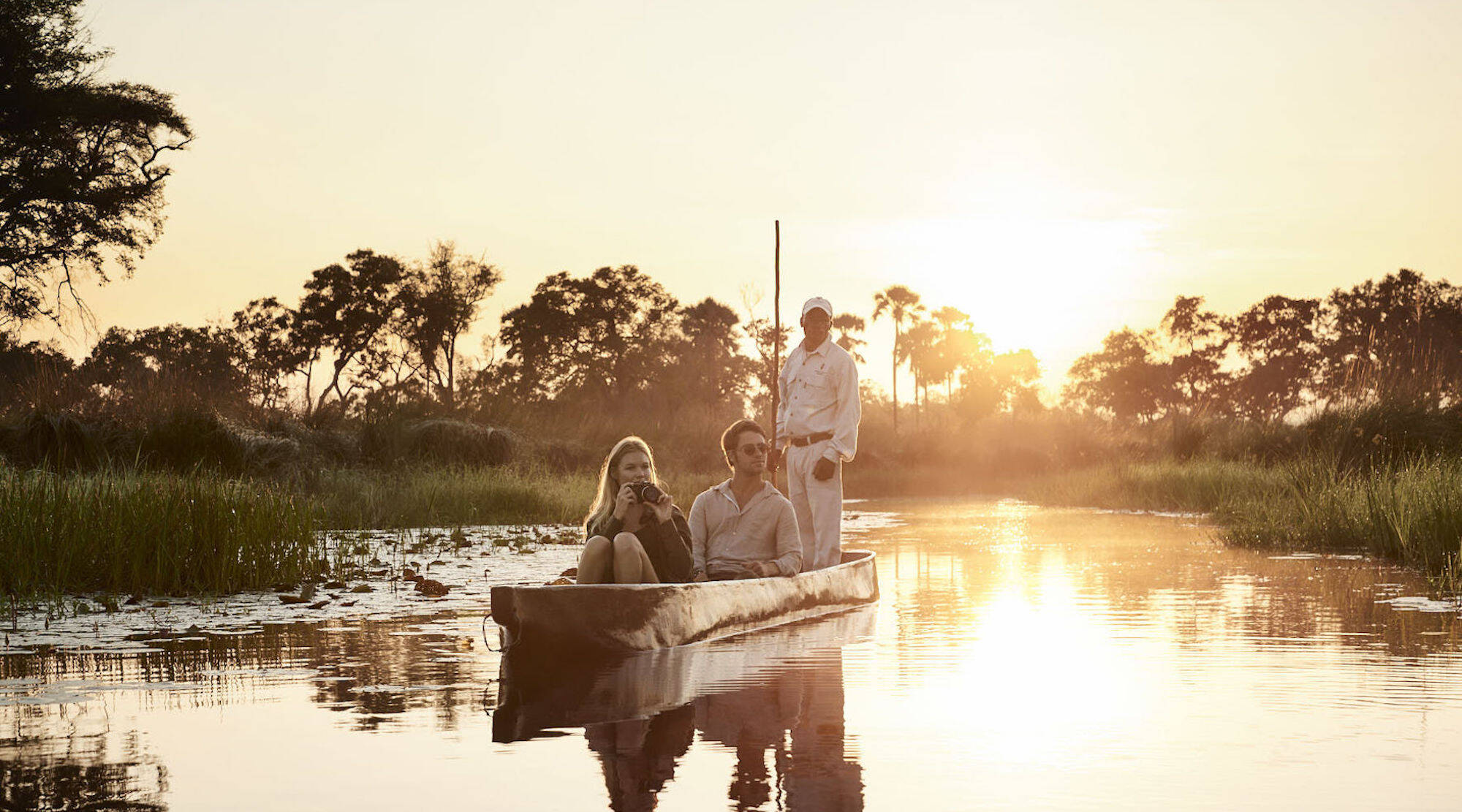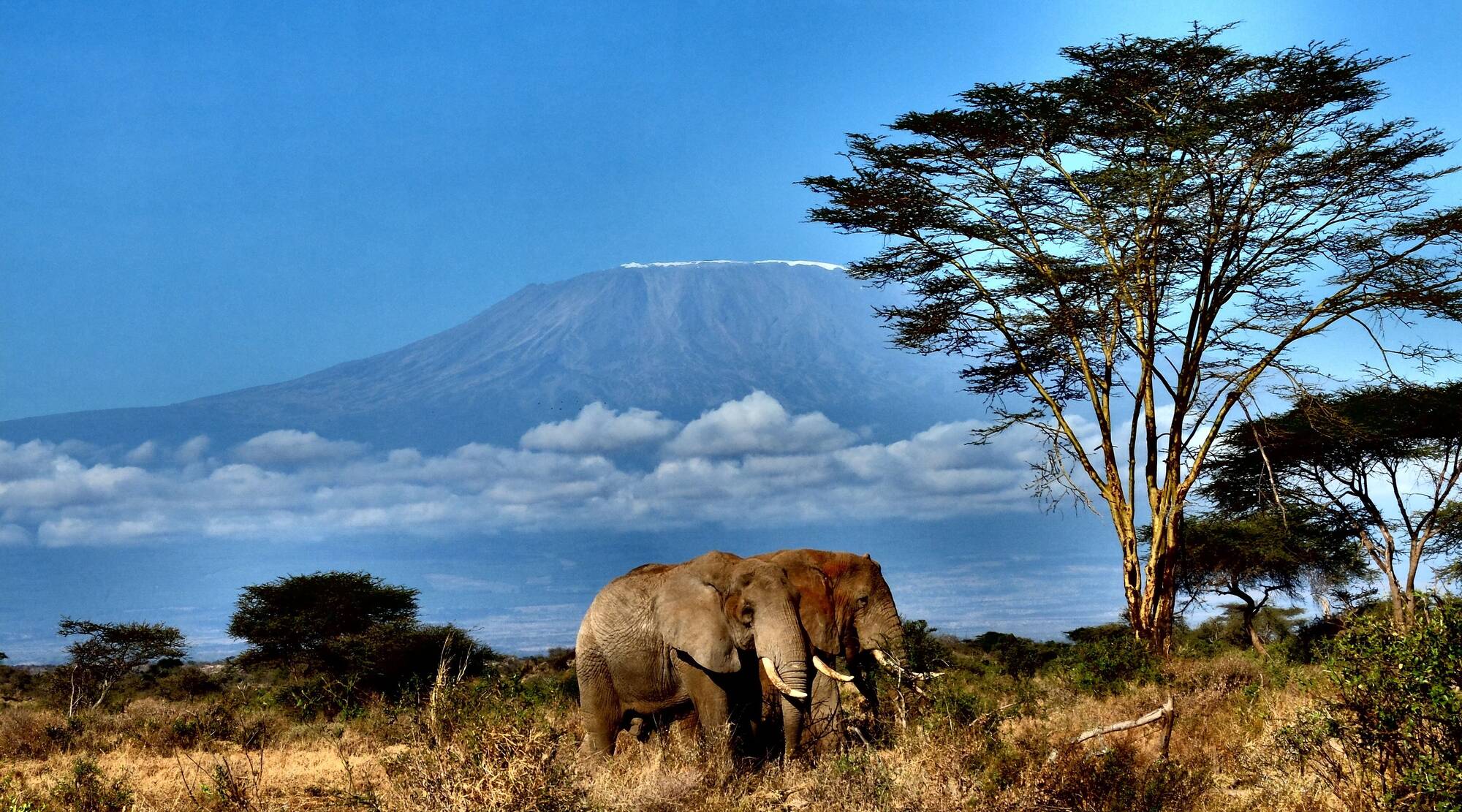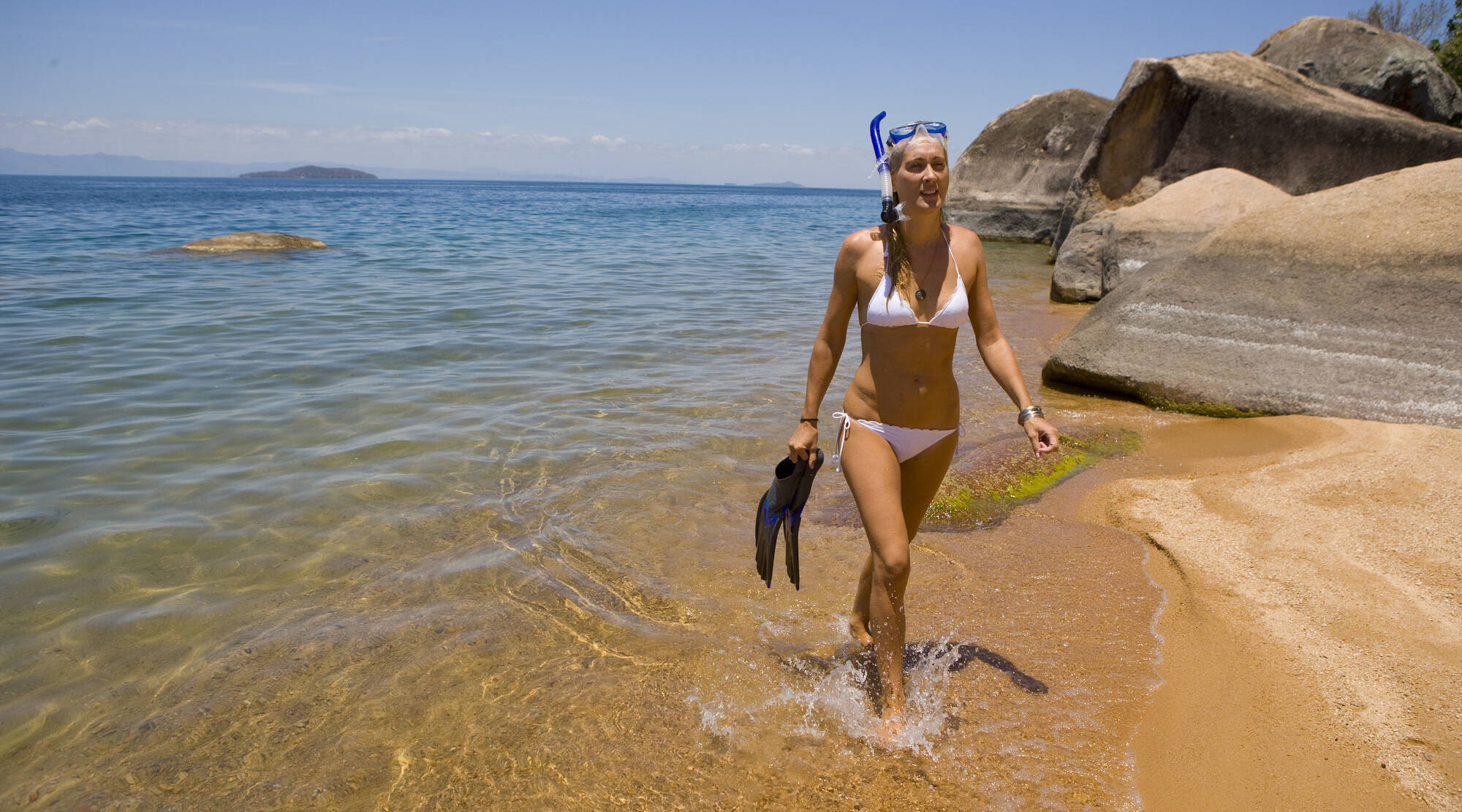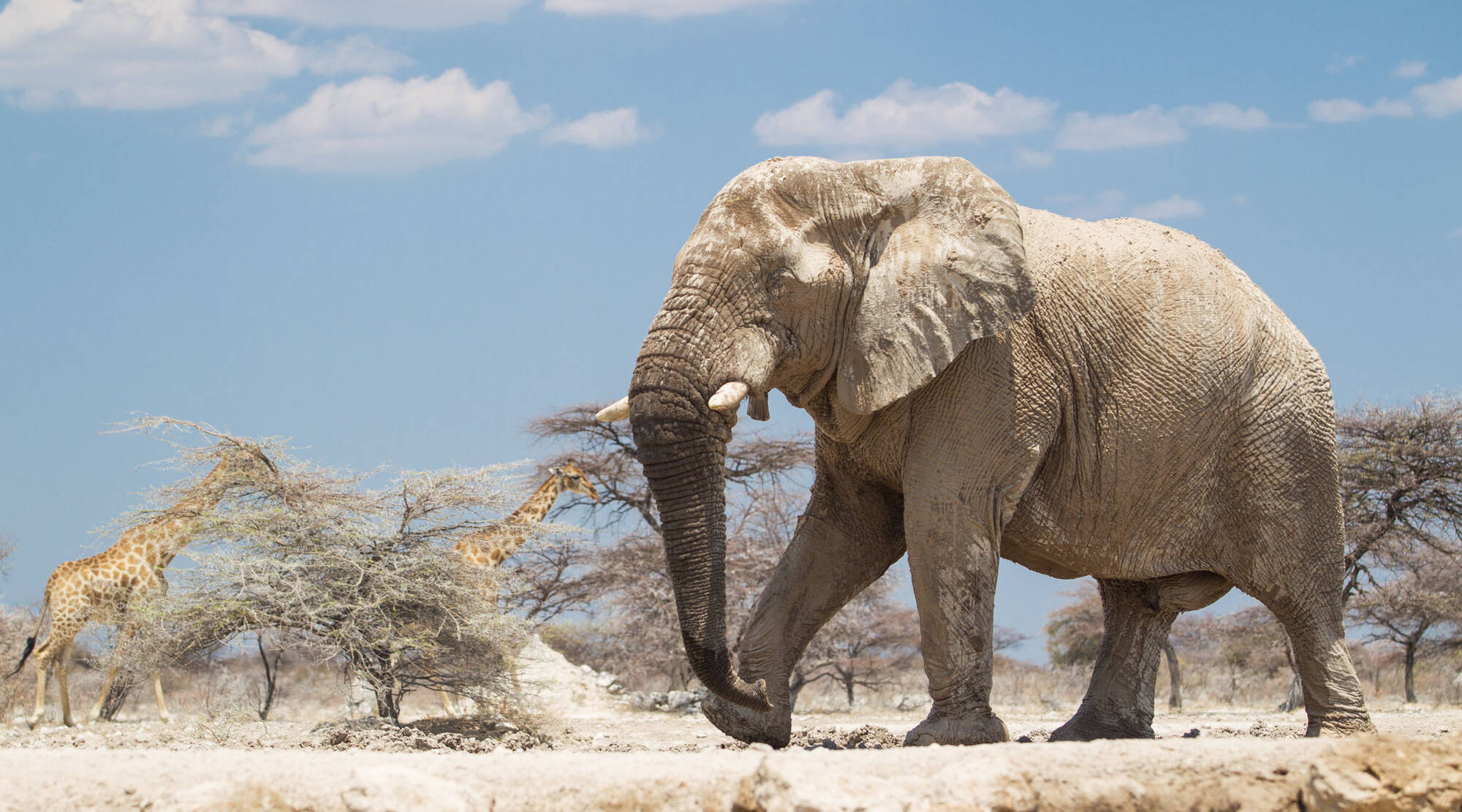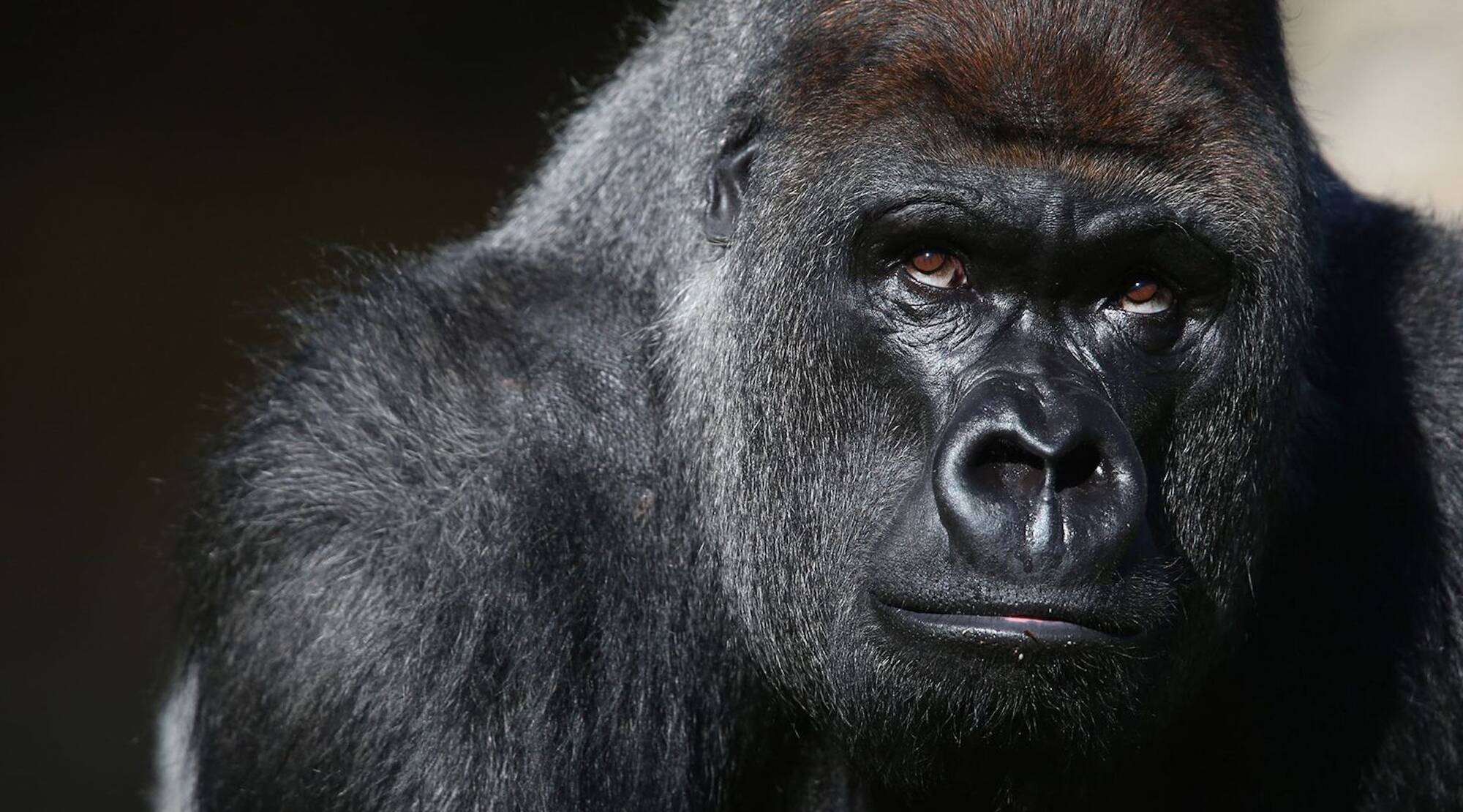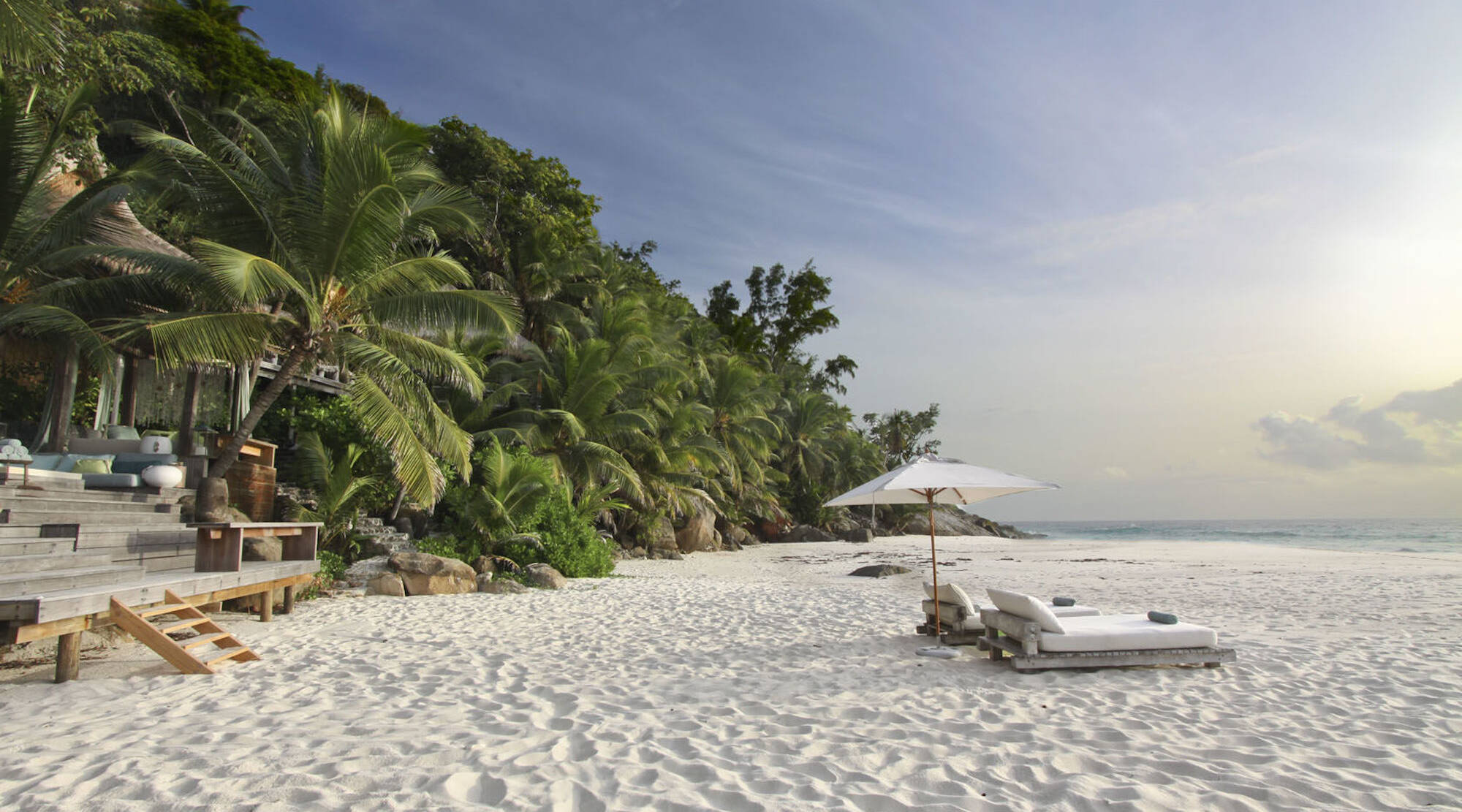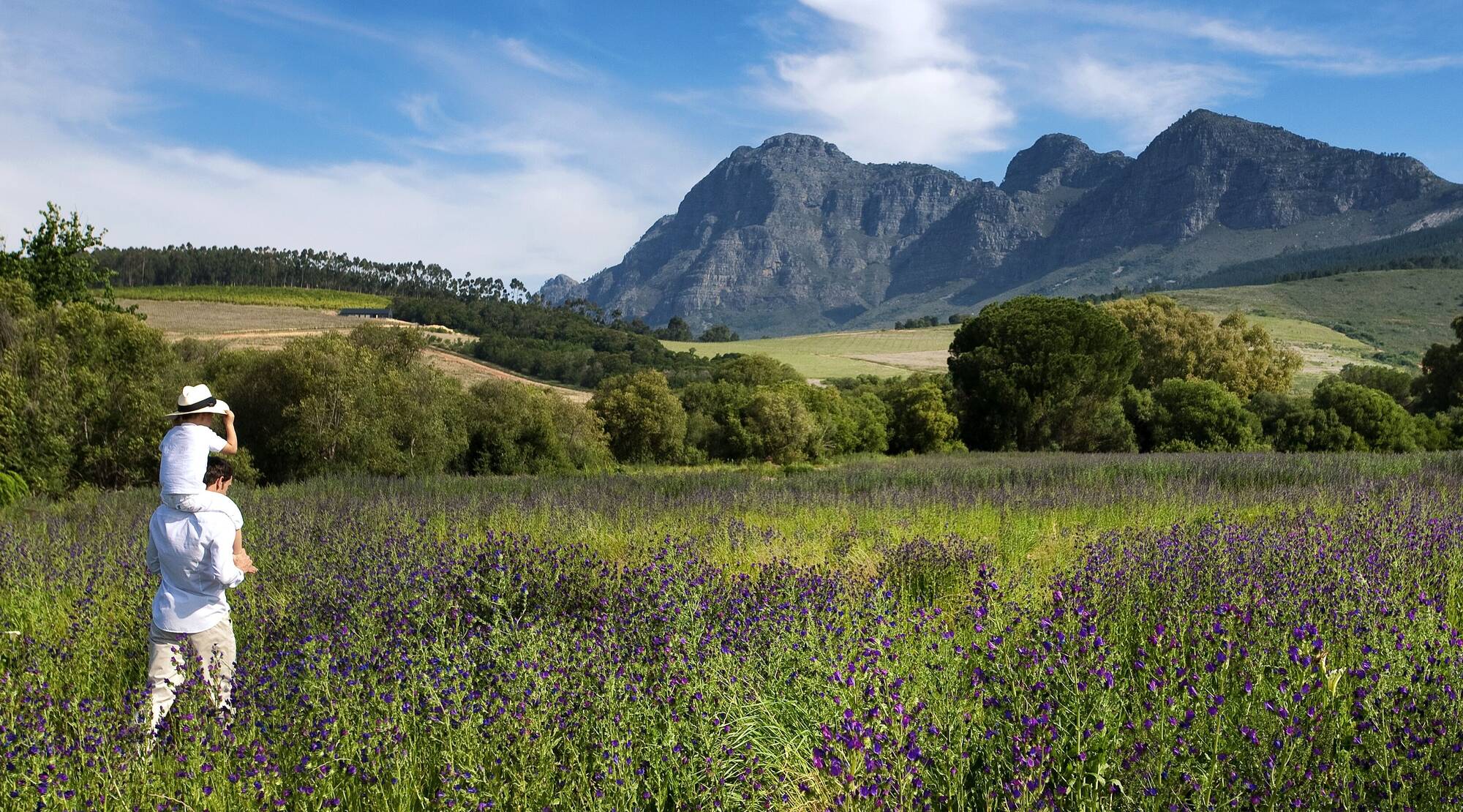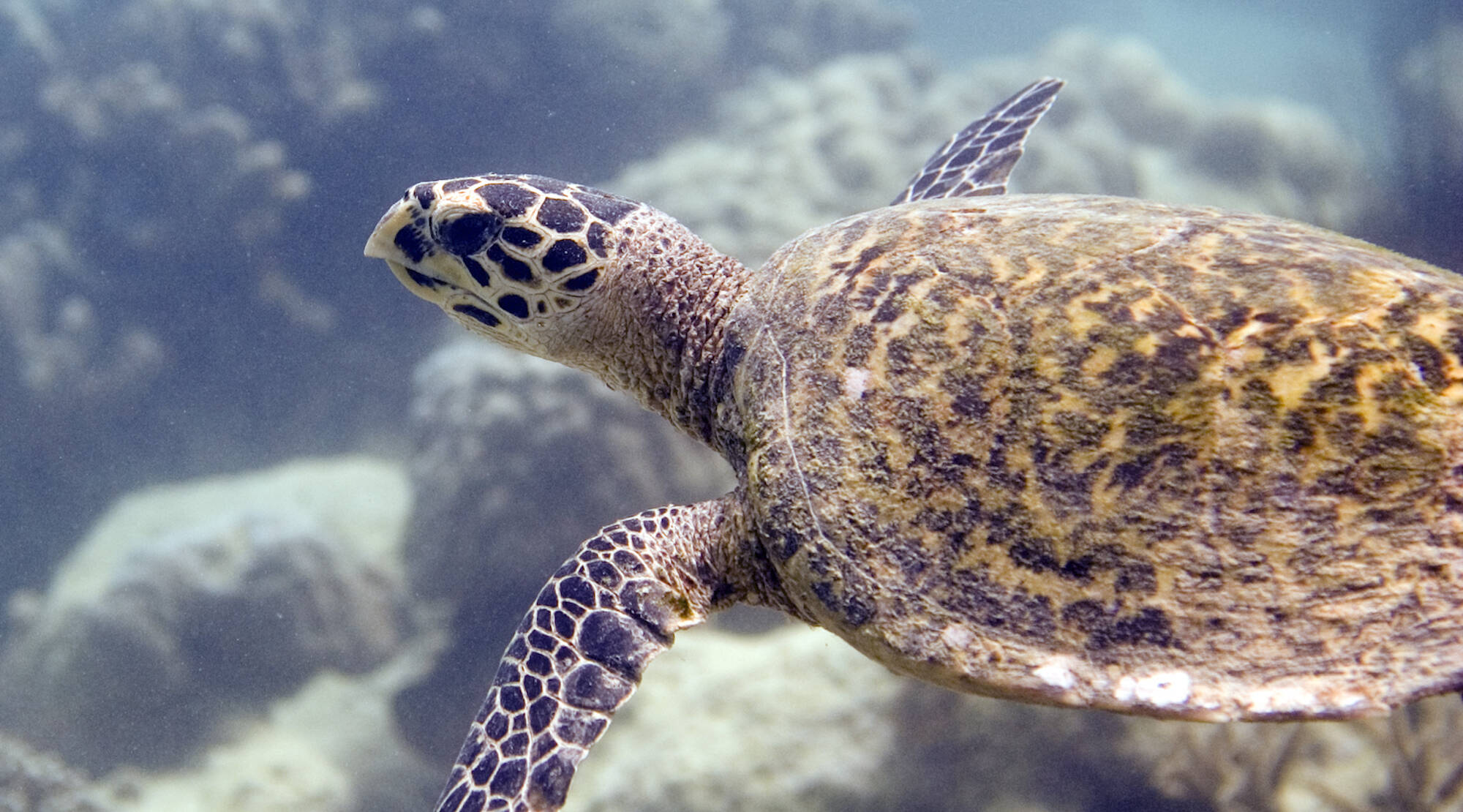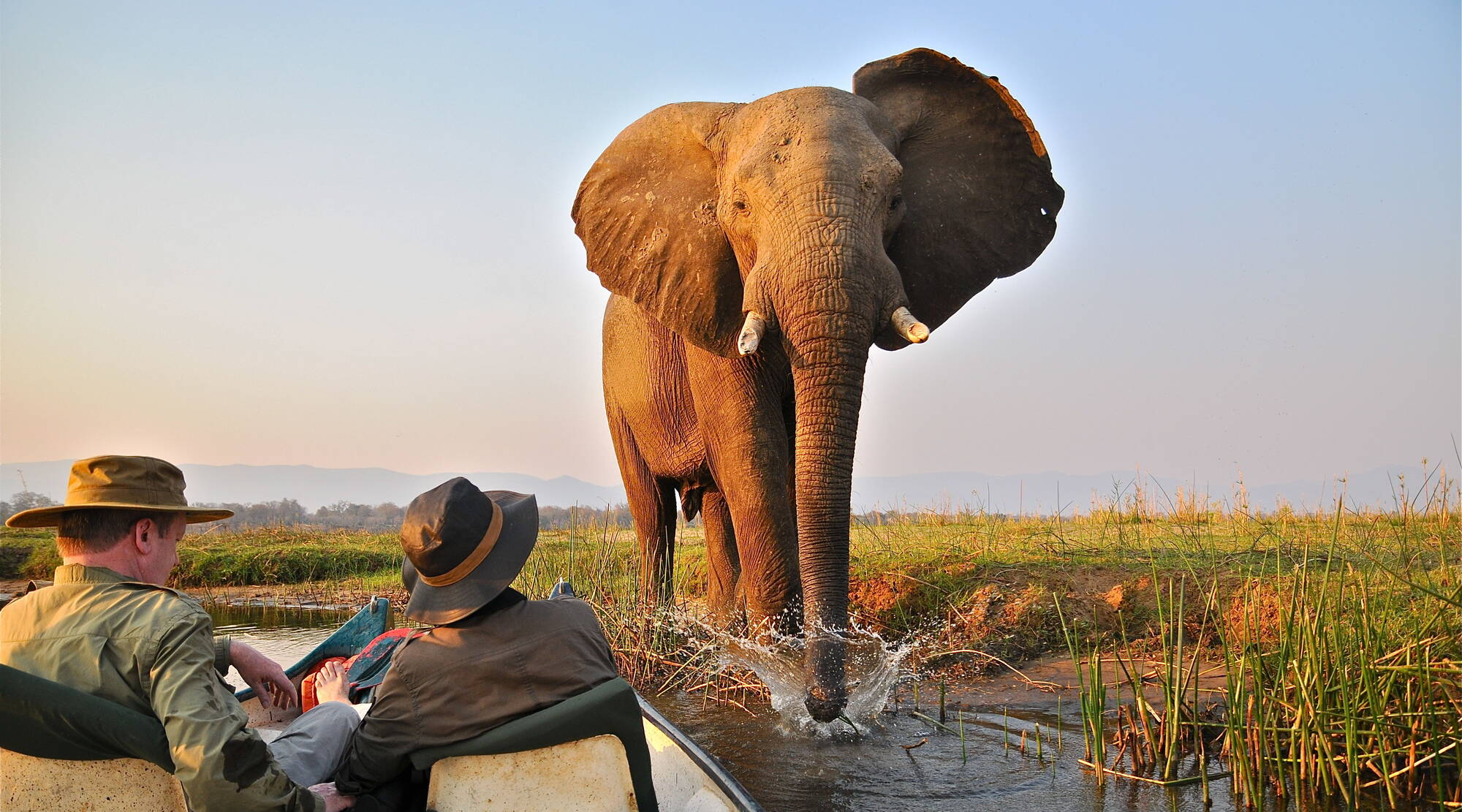Tanzania Safaris
In Kilimanjaro's footprint, Tanzania mesmerizes with the great wildebeest migration and vast wildlife parks – a thrilling country for unforgettable safaris.

“We are seasoned off-the-beaten-track travellers and I marvel that everything worked exactly as it was supposed to”, wrote a recent traveller of his Expert Africa safari. “Here we were, in the middle of central Tanzania, waiting for a 10:05 flight. Guess what? At 10:03, there was the plane, buzzing animals off the grass runway, then touching down to pick us up. It happened every time. Dazzling!”
The same traveller went on to describe visceral wildlife encounters: “Having a leopard on your tent porch is not something I will soon forget. This is not Disneyland.”
Not Disneyland could be Tanzania’s national motto. “We had to keep pinching ourselves” wrote a first-time visitor, “that we were actually there, in the places we had only read about or seen on TV.”
Tanzania makes a sensational impact. Over one-third of this expansive land is dedicated to safeguarding its diverse array of wildlife: an irresistible draw for the adventurous.
A journey through Tanzania’s treasure trove of biodiversity can takes you through a medley of landscapes – from sweeping grasslands to dense tropical forests, from vibrant coral reefs to the sprawling Serengeti , a fortress for Africa's ‘big five’. Watch in awe as large herds of elephants stir clouds of dust in Ruaha National Park, hippos frolic in the rapids of the Rufiji River and chimpanzees play in the lofty domains of the Mahale Mountains.
Underpinning this vivid tapestry of wildlife lie some of the world’s greatest geological splendours: the Great Rift Valley, the Ngorongoro Crater, the iconic Serengeti plains, all of which play a crucial role in shaping Tanzania’s diverse ecosystems.
Tanzania’s tropical coast, sun-dappled beaches and scattering of islands are equally fascinating. Here cosmopolitan towns date back centuries to early trade routes and secluded Indian Ocean islands lie surrounded by white-sand beaches and colourful coral reefs.
“Our eyes were wide with wonder from the moment we left the airstrip,” sighed a couple returning to Tanzania for the first time since their honeymoon 30 years earlier: “We had the most mind-blowing, amazing experience.”
Speak to one of our Experts to start planning your dream Tanzania safari.
Tanzania’s top safari & holiday destinations
Tanzania’s safari and beach areas fall naturally into four broad groups.
Tanzania's ‘Northern Circuit’ is the term which defines the areas of the sprawling Serengeti , the stunning landscape of the Ngorongoro Crater, Tarangireand Lake Manyara national parks – the most famous safaris areas in Tanzania.
For a quieter experience, Tanzania’s southern parks offer unspoiled wilderness areas dotted with a smaller number of safari camps. The lakes and waterways of Nyerere National Park (formerly Selous) offer magical boating safaris, while Ruaha’s rugged terrain is excellent for walking safaris is home to a very strong population of lions.
Nearer to Africa’s heart, Western Tanzania is harder to reach, so few visitors come, but two parks are amazing. Katavi National Park protects a vast plain: the battleground for buffalo and lion, whilst an hour’s flight away, the spectacular Mahale Mountainsrise sheer from the shores of Lake Tanganyika – providing probably the best place to track wild chimpanzees in Africa.
Lush and tropical, Tanzania’s coast & Islands are the venue for simple beach retreats to luxurious lodges – with the odd private island included.

Serengeti
53 places to stay
Criss-crossed by bush-flanked streams and scattered with rocky kopjes, the seemingly limitless plains of the Serengeti are one of the worlds's greatest wildlife territories.

Ngorongoro Crater
20 places to stay
The colossal bowl of the world’s largest intact volcanic caldera offers a spectacularly diverse ecosystem of savannah, lakes and forest, home to richly varied wildlife.
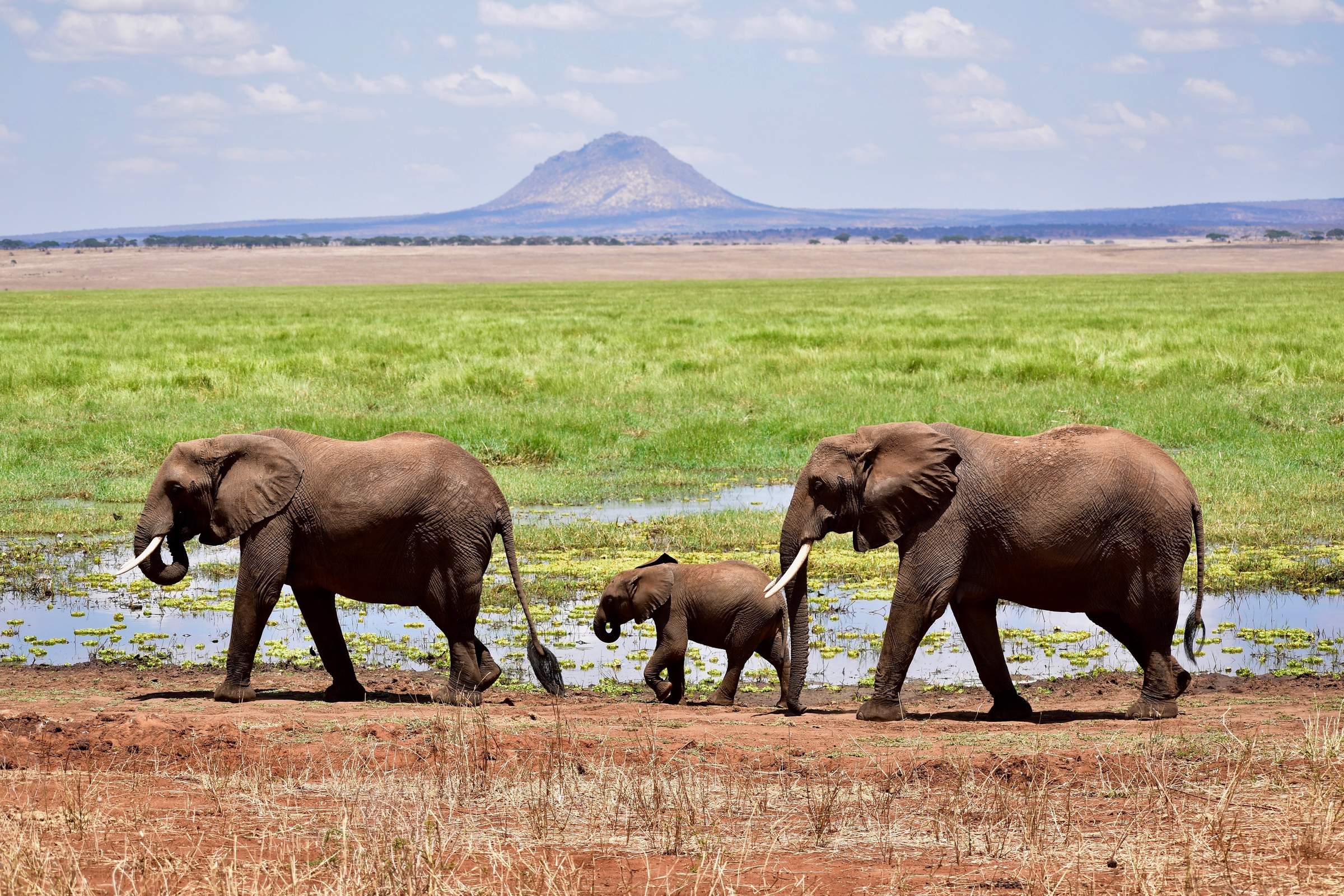
Tarangire
15 places to stay
Tarangire has somewhat seasonal wildlife and is at its best from June to October. It's famous for baobabs, large elephant herds and wonderful swamps in the centre of the park.
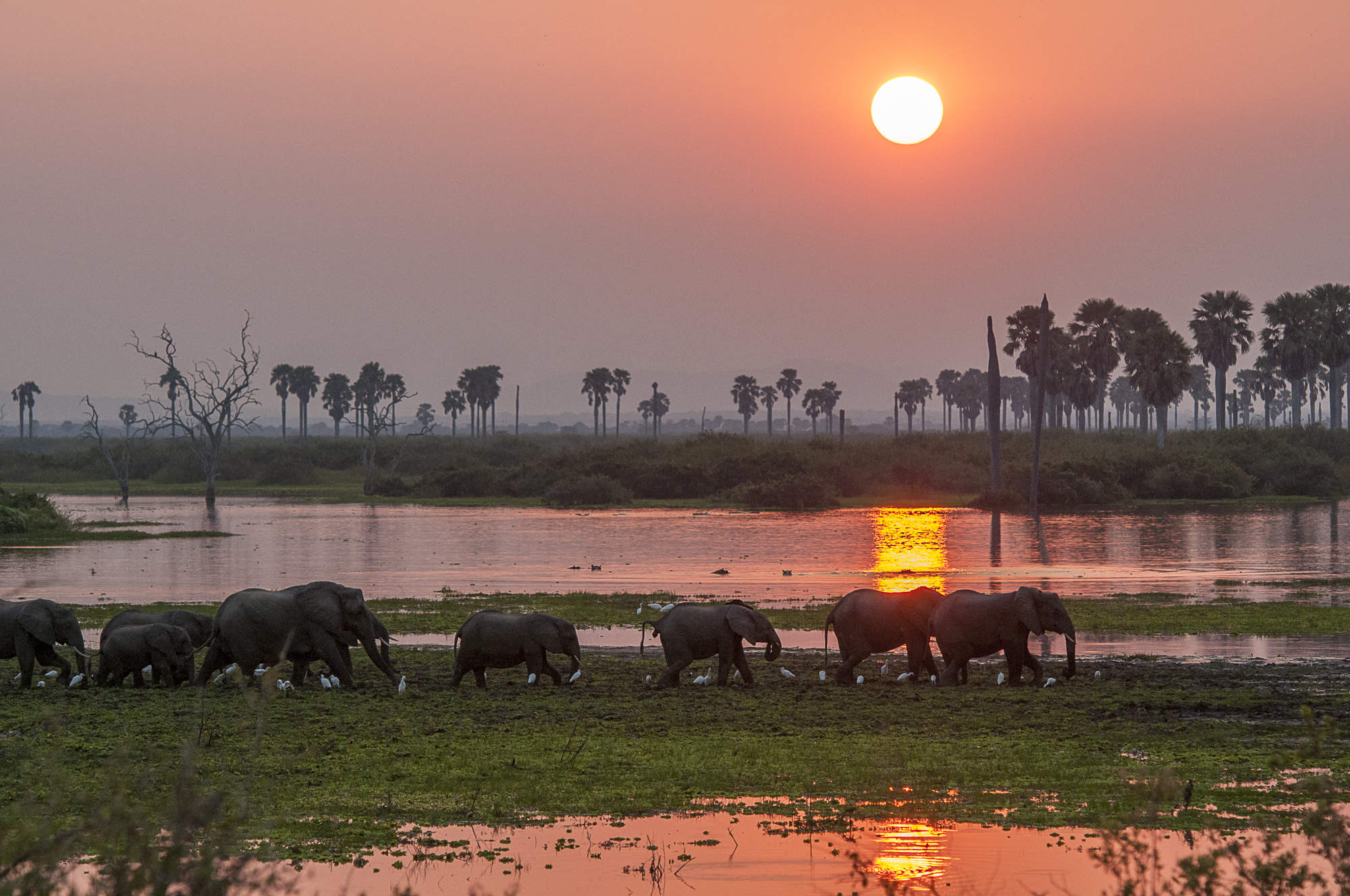
Nyerere
14 places to stay
Nyerere National Park's myriad landscapes attract strong lion prides, Africa’s biggest population of numbers of wild dogs, brilliant birdlife and staggering antelope migrations.
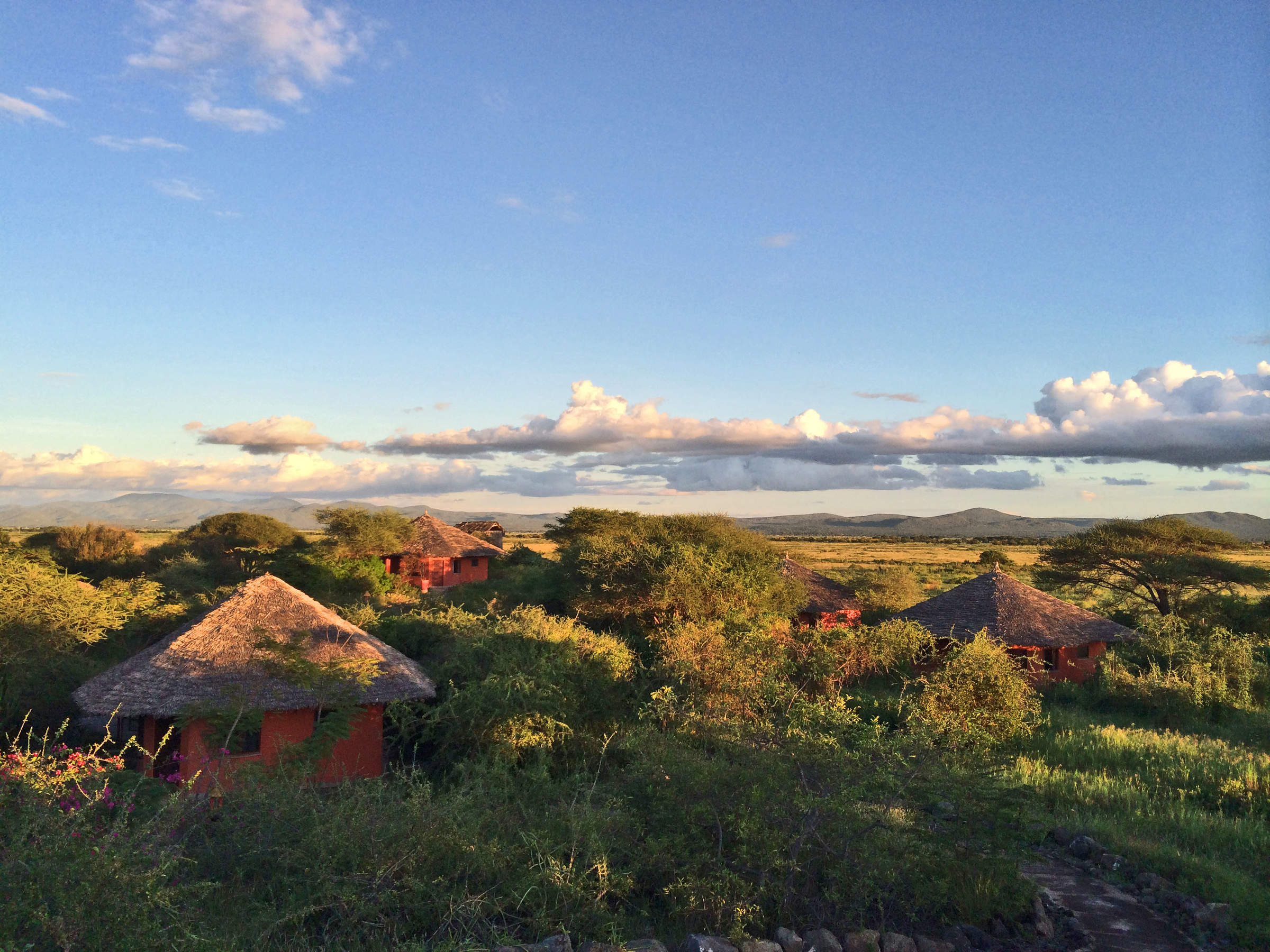
Arusha
14 places to stay
Northern Tanzania's biggest town is usually an overnight stay during a northern circuit safari. If you have a little more time, it's also the base for the charming Arusha National Park.

Ruaha
14 places to stay
In the central southern Tanzania, Ruaha National Park offers a fine extension to a stay in the Selous Game Reserve. It's drier and higher, and home to several species absent from Selous.

Dar es Salaam
8 places to stay
Tanzania's main port, largest city and biggest airline hub is usually seen as a place to pass through. If you're overnighting, however, you may well enjoy the city's buzz.
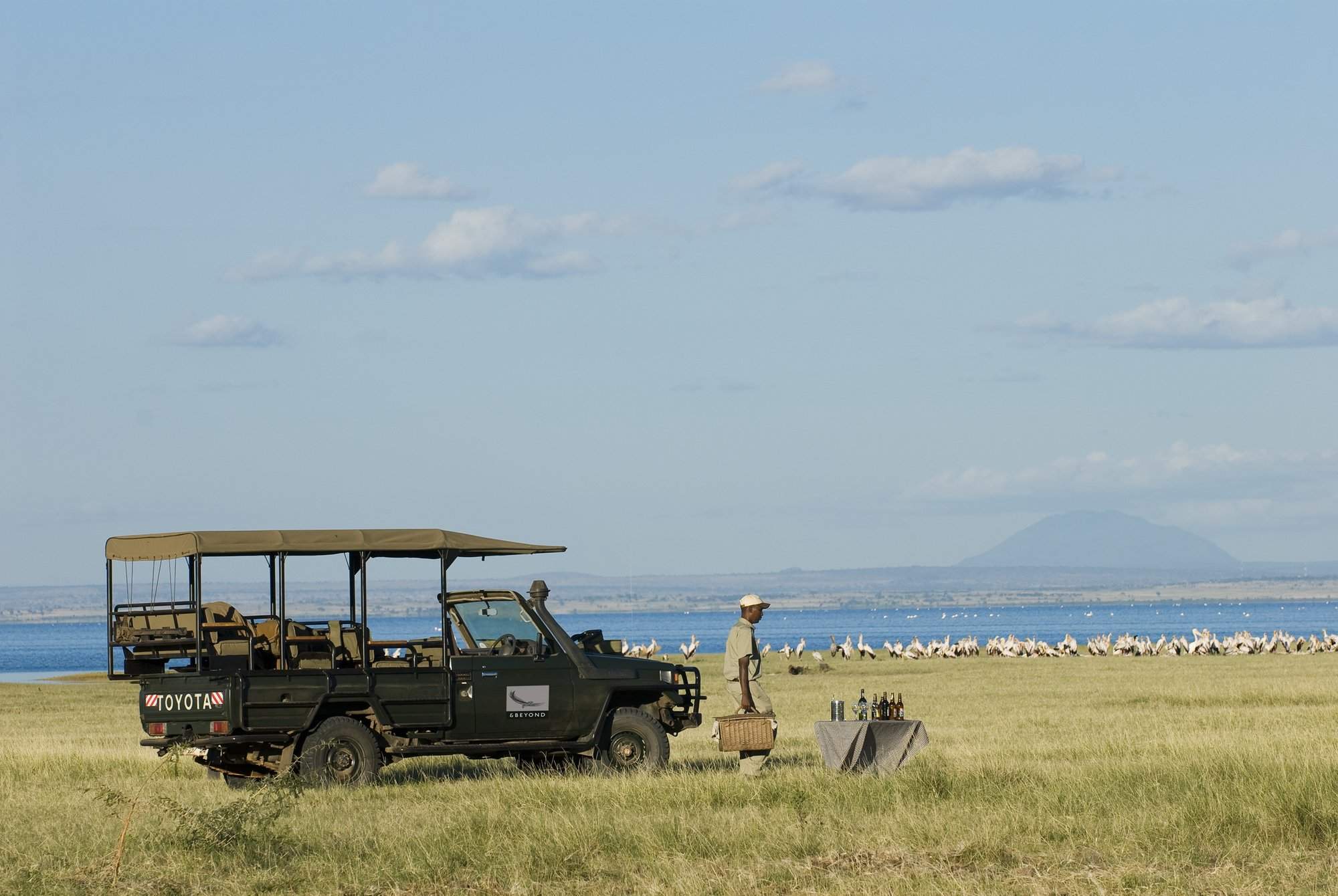
Lake Manyara
5 places to stay
Named for its flamingo-studded lake, Lake Manyara National Park is home to a wide diversity of habitats and wildlife. It's easy to visit en route through northern Tanzania on a road safari.

Mafia Island
6 places to stay
A little-known Indian Ocean archipelago, Mafia has laid-back, feet-in-the-sand island chilling, low-key lodges, splendid sandbanks and some of Tanzania’s finest diving.

Tanzania Coast
3 places to stay
Tanzania's 700km-long mainland coast has countless bays, creeks and beaches. At Expert Africa we focus on a couple of accessible areas to the north and south of Dar es Salaam.

Pemba Island
4 places to stay
Zanzibar's spice island neighbour, Pemba, combines a rural way of life with a rich Swahili culture and some superb diving. The options for staying are limited in number, but high-quality.
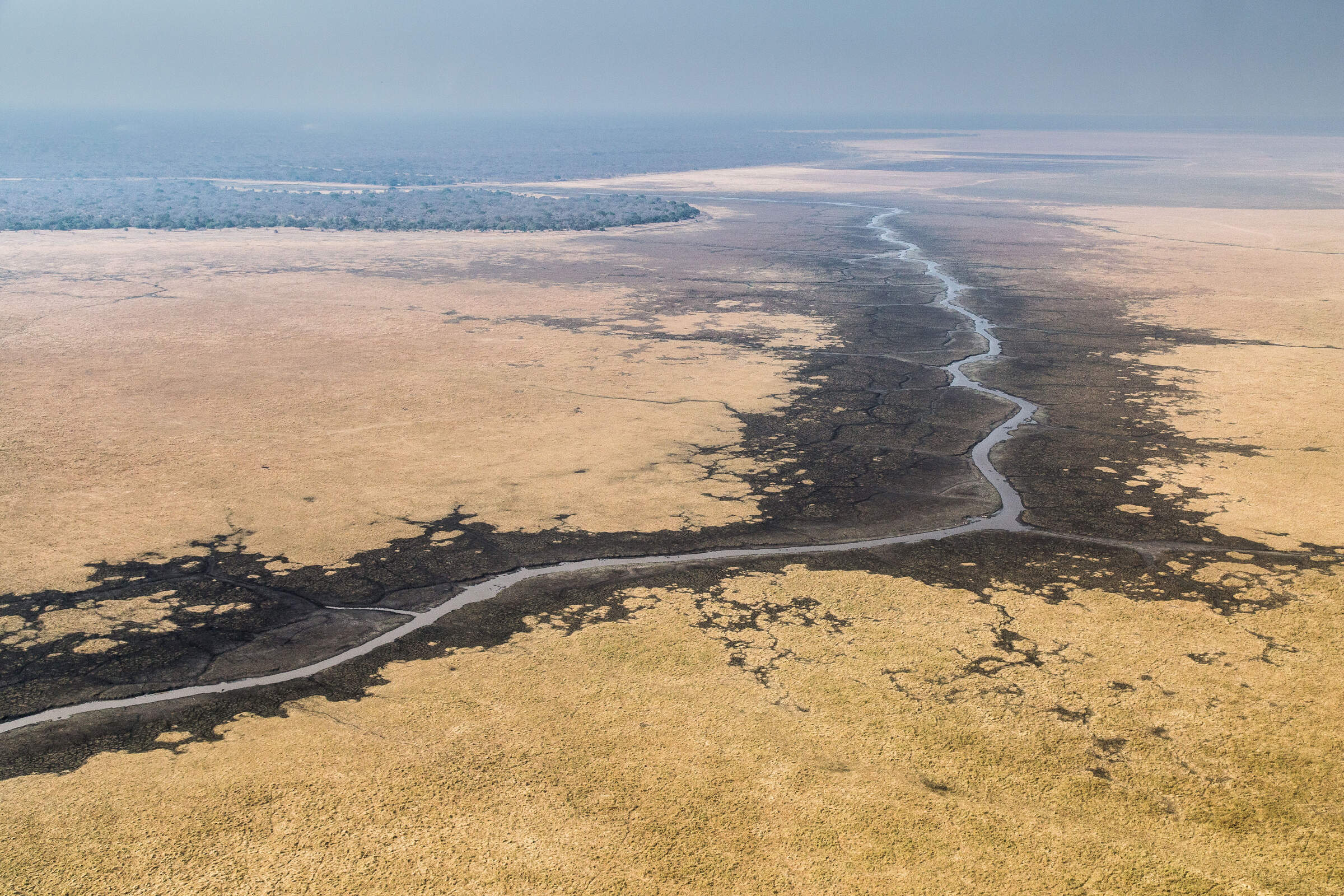
Katavi
4 places to stay
The most remote of Tanzania's best safari areas, Katavi National Park can be costly to reach, but this vast open plain, surrounded by dense woodlands, is full of wildlife and virtually empty of other visitors.
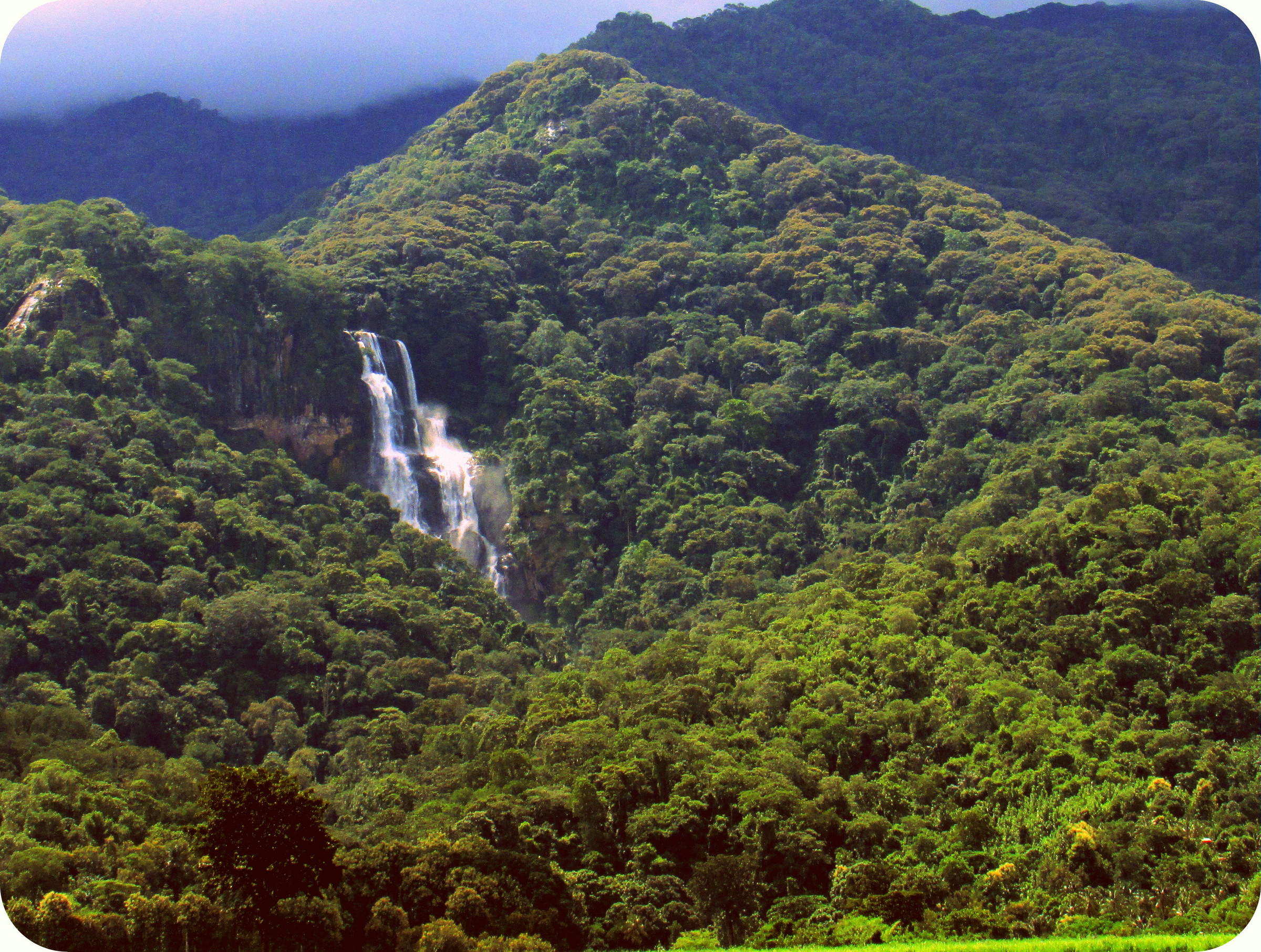
Mikumi & Udzungwa
3 places to stay
Expert Africa travellers usually visit Mikumi National Park and the Udzungwa Mountains National Park in a private, four-wheel drive safari vehicle with an expert driver-guide.
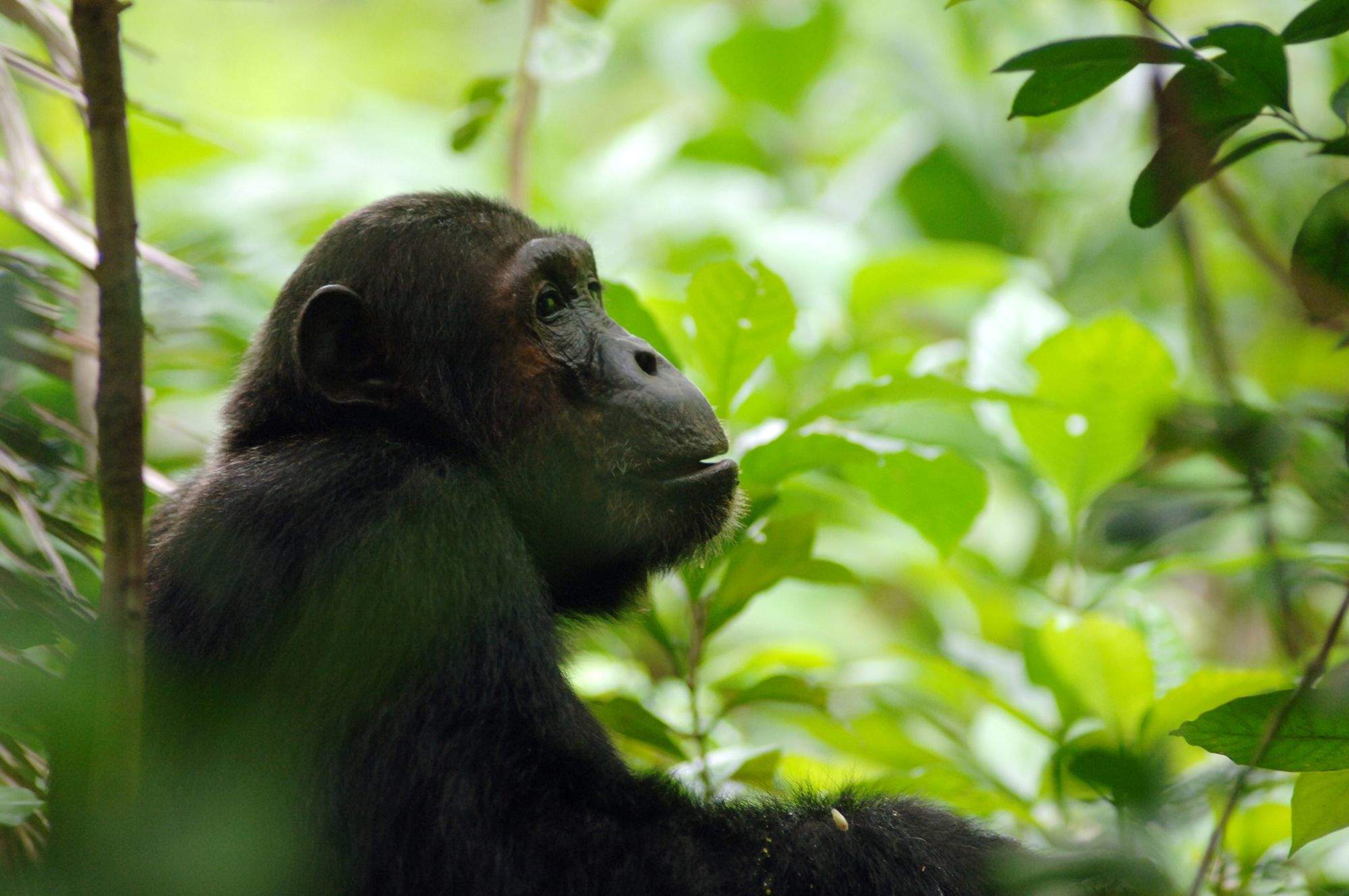
Mahale Mountains
2 places to stay
Very different from Tanzania's other parks, Mahale is a remote, costly, magical area, with lush forests, white beaches by the freshwater lake, and Africa's best chimp safaris.
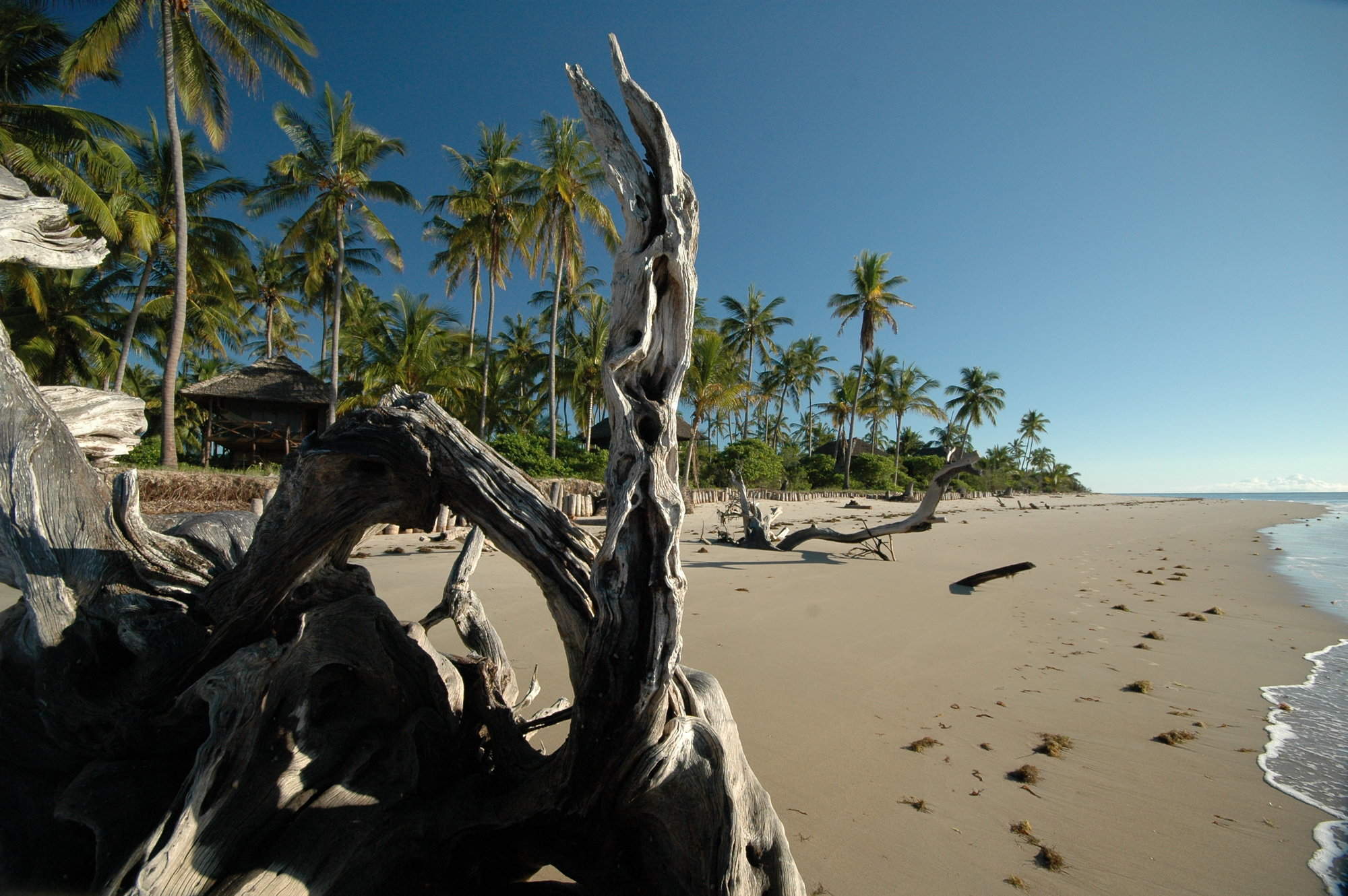
Saadani
2 places to stay
Saadani National Park is a small park offering a bush and beach experience, with low-key wildlife-viewing (including outstanding birding), peaceful river trips and relaxing beach time.

Lake Natron
2 places to stay
Lake Natron has stunning scenery, huge flocks of flamingos and a select few visitors lured by the walking opportunities. It make for an unusual gateway into the Serengeti.
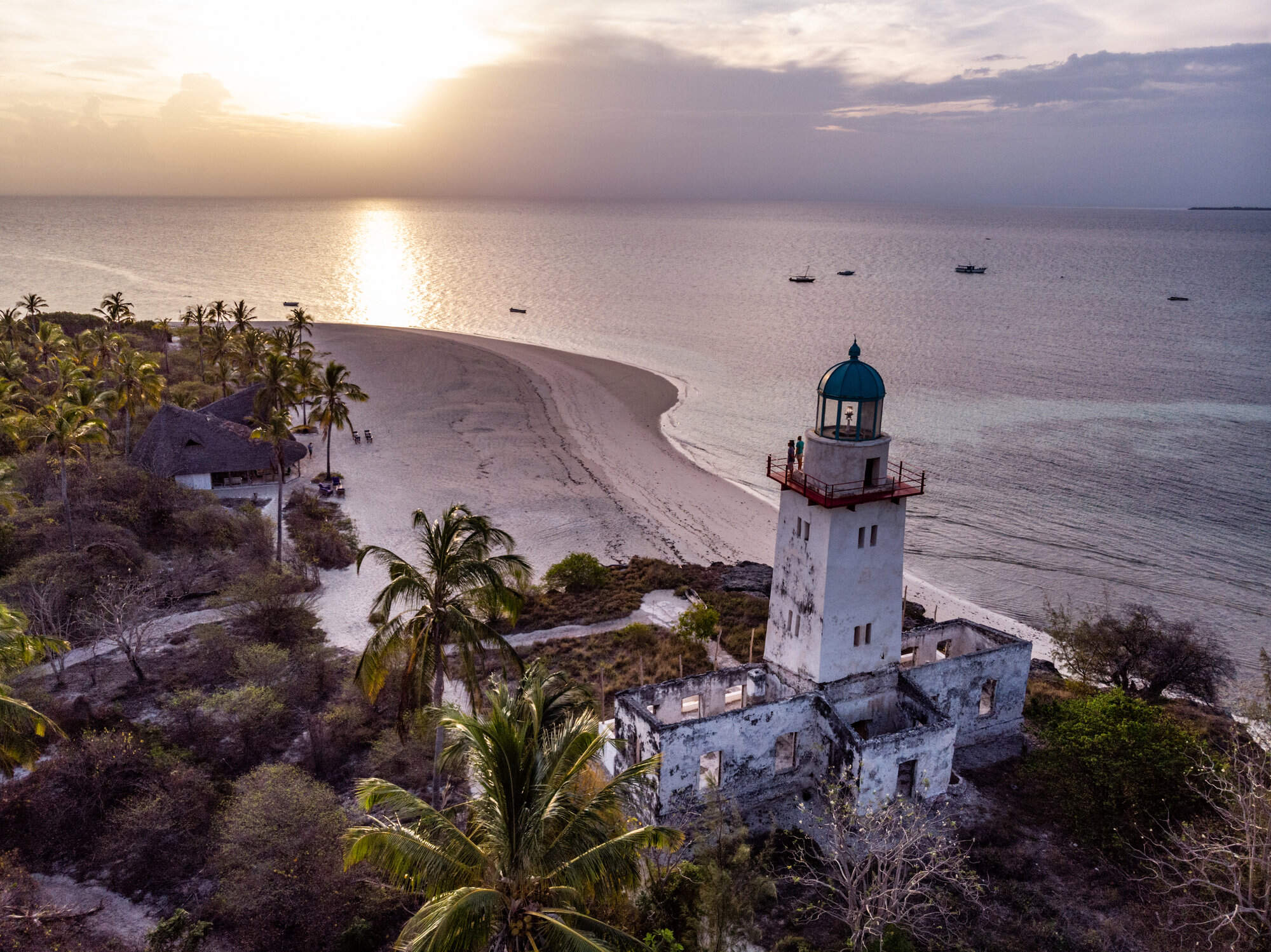
Fanjove Island
1 places to stay
Fanjove Island is a wildlfe paradise, teeming with land and sea creatures - from turtles and puffer fish to herons and bottle nosed dolphins. You might even spot a humpback whale.
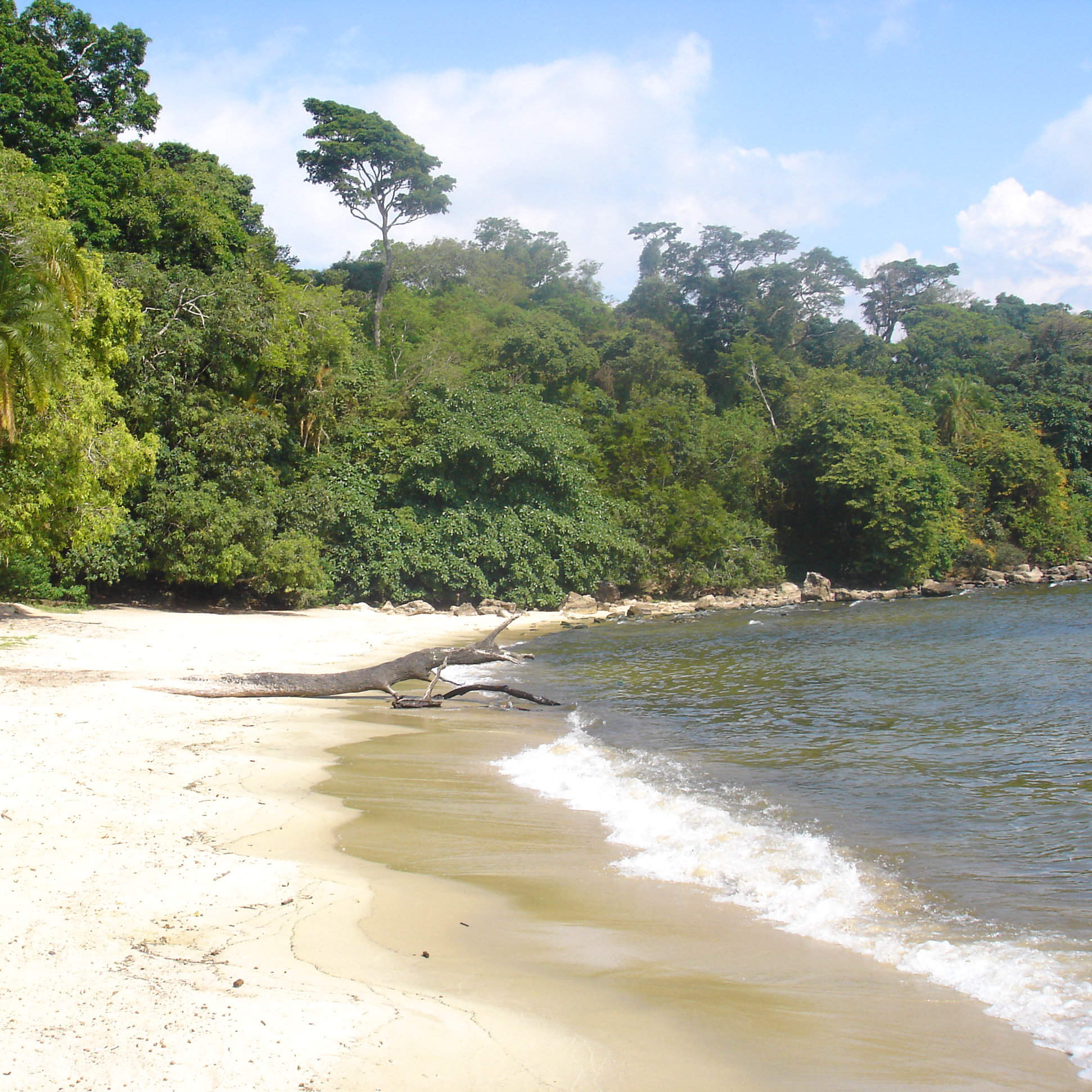
Rubondo Island
1 places to stay
Africa's largest island national park, Rubondo is a true off-the-beaten-track experience in Jurassic Park style. With just one camp, it's an intimate and adventure.
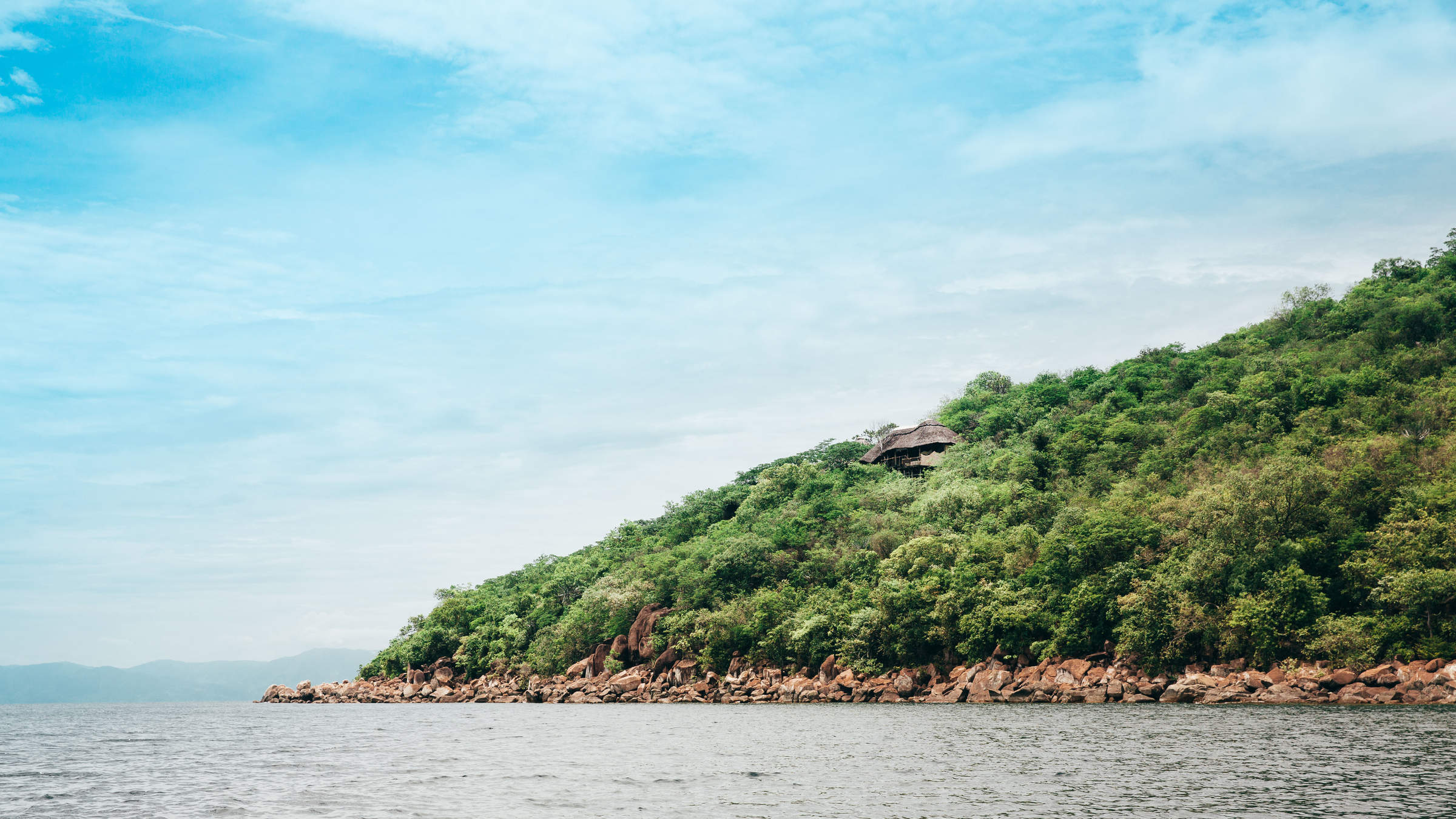
Lupita Island
1 places to stay
Lupita Island in Lake Tanganyika is a private escape in remote western Tanzania - great for families, adventurous travellers or those wanting to relax and unwind in peace.
Our top ten Tanzania safaris & holidays
Each of our holidays is as distinct as the traveller undertaking it. The itineraries here are just examples of what is possible, with costs and details; see all 27 Tanzania safari ideas here.
On Guided Safaris, you’ll travel in a private 4WD with the same expert guide all the way, giving you great flexibility and lending the trip greater continuity. On Fly-in Safaris, you’ll fly between camps, staying a few days in each – exploring each area of wilderness in an open-top 4WD led by a seasoned camp guide, accompanied by other travellers from the camp. Our Beach Holidays showcase ideas for trips to exquisite islands and breathtaking beaches. These are popular; many of our travellers opt to unwind on a gorgeous beach prior to, or after, their safari.
Call us now to speak to a Tanzania expert who can address your questions and craft a trip for you that’s perfect.
Our travellers' 10 most recent reviews of Tanzania safaris
All our travellers’ feedbacks are published in full; none have been edited. Click here to browse all 1233 reviews of Tanzania holidays and sort them by rating, duration and time of year.
These reviews help our partners running lodges and camps across Tanzania, and help us to understand our travellers better and to plan better trips.
For these 10 most recent safari reviews in full, click on a card below – where the comments are split between the lodges/camps visited and often note the wildlife seen. See all reviews of our Tanzania safaris here.
Our travellers' wildlife sightings across Tanzania
While journeying through Tanzania, many of our travellers document their wildlife encounters – be it lions, cheetahs, black rhinos, or chimpanzees – and graciously share these findings with us.
This "citizen science" gives us a unique picture of the distribution of species, enlightening you on where your chances of witnessing particular animals are heightened during a Tanzanian safari. (Learn about this survey's methodology.)
The percentages below signify the "average" probability of a safari-goer seeing wildlife where they naturally occur. Note that species with very limited distributions, like chimpanzees, can attain high scores – as they are frequently observed where they reside. For further insights into a specific species, click on its picture below and follow the link in the pop-up window.
For a broader perspective on Tanzania's wildlife sightings, explore our interactive wildlife map of Tanzania showing the prime locations for encountering various species.

100% success

100% success

97% success

95% success

94% success

92% success

89% success

88% success

85% success

74% success

66% success

52% success

38% success

26% success

22% success

20% success

19% success

12% success

10% success

1% success

0% success

0% success
Where to find Tanzania’s wildlife
Our travellers' wildlife reports play a crucial role in determining the best camps and lodges for encountering Tanzania's key wildlife species.
Whether you're in pursuit of leopards, cheetahs, wild dogs, or chimpanzees, our data-driven maps pinpoint the best areas to spot each species within the wildlife-rich safari regions across Tanzania.
To see a map showcasing the top camps & lodges for a specific species, click on that species below.
When to go on a Tanzania safari
In recent years, Tanzania’s climate has become less predictable, but historically a broad-brush view of the seasons here has been:
July to October, the ‘peak season’, usually sees warm and dry days, with high game concentrations around water sources, including the famously spectacular river crossings of wildebeest in the northern Serengeti.
During November and December, the ‘short rains’, wildlife sightings remain plentiful, but expect sporadic showers. Migratory birds arrive as residents don breeding plumage and prices reduce from peak levels.
Tanzania’s ‘short dry season’, January to mid-March, can be hot and humid, particularly at the coast. The wildlife is generally scattered. In the Serengeti, the wildebeest are calving across the short-grass plains of the south.
The frequent downpours of the ‘long rains’ last from about mid-March to early June. Some safari camps close, but lower prices and fewer visitors do attract the cognoscenti.
Click on the months below for more detail, see Tanzania’s historical climate data and talk to us about recent variations!
Jan
Feb
Mar
Apr
May
Jun
Jul
Aug
Sep
Oct
Nov
Dec
Tanzania in January
January usually marks the start of the short dry season, although the exact timings of this are a little unpredictable. You can expect clear blue skies and sunshine, if the short rains have stopped, and the temperatures will be building. The short dry season is a little less pronounced in Southern Tanzania, and so it can still be wet in these areas. It is an interesting time for avians as resident birds go into breeding plumage and migrant species can be present.
Once the New Year busy period has quietened down, January can offer great value and quieter parks, although the weather can be variable, and in the Selous and Ruaha the wildlife is more dispersed.
- Variable weather: clear & dry or cloudy with some rain.
- Occasional thunderstorms may occur.
- A good time of year for birding as and many migrant species are around
- The wildebeest migration is gathering in the southern Serengeti.
- Busy in early January, quietening down through the month.
Our view
A good time to visit, with pros & cons
Weather in January
Tanzania in February
February is during the short dry season and is one of the hottest months in Tanzania, with temperatures reaching around 33°Celsius. This can be a good time to visit, as some areas of the Northern Circuit are comparatively quieter than during the European summer months, and lodge rates are also a little lower.
The wildebeest will typically be on the southern plains of the Serengeti for their calving season, which tends to occur in a 2-3 week window in early-mid February – although this does vary year on year. This is also a particularly rewarding time for birdlife, as northern hemisphere migrants join the resident species.
- Hot and dry weather.
- Wildebeest migration calving on Serengeti’s southern plains.
- Ngorongoro Crater and southern Serengeti busy for the migration.
- Selous and Ruaha are typically quiet at this time.
- The parks are likely to be lush and green, leading to pretty landscape
Our view
A very good time to visit
Weather in February
Tanzania in March
The heavier ‘long rains’ start in earnest in March although exactly when varies year on year. With no need to stay close to permanent water sources, migratory wildlife disperses, and so game viewing starts to become more challenging. This is most prominently seen in Tarangire National Park. The wildebeest migration may still be calving, or have moved on into the central regions of the Serengeti.
Many of the camps in the southern parks close mid March and mobile tented camps in the Serengeti will wind down towards the end of the month in order to move location or carry out refurbishments, ready for the new tourist season.
- Hot with building humidity, before the rains begin at some point.
- Wildlife viewing is variable depending on the start of the rains.
- Parks are quiet and rates are low.
- Not great for southern or western Tanzania.
- March can be a good time for birding, with many migrant species.
Our view
A good time to visit, with pros & cons
Weather in March
Tanzania in April
April is in the middle of the long rainy season and is the wettest month, with on average 250mm of rain. Temperatures are fairly high and humid in comparison to the rest of the year. Expect the bush to be lush and flowering, and alive with insects, birds and smaller animals. It is however also dense, allowing wildlife to hide, which in turn makes game viewing harder. This is a very quiet time in terms of visitor numbers.
Many of the tented camps are closed in April, however the larger lodges remain open. The rates are significantly cheaper, and so if you are willing to work harder to spot the bigger game, some accommodation bargains can be had.
- Heavy rain expected, with impressive thunderstorms and lightning.
- Many camps closed and roads impassable due to ground conditions.
- Rates are at their lowest all year round, with very few other tourists
- Places that are open are green and vibrant, wildlife more dispersed.
Our view
This is not a great time to visit
Weather in April
Tanzania in May
As Tanzania is close to the equator there is no dramatic difference in climate throughout the year, but temperatures do start to drop a little in May. The rains are likely to still be present, although potentially clearing towards the end of the month. Visitor numbers and lodge rates are still low. The wildebeest migration is making its way through the western regions of the Serengeti, crossing the Grumeti River.
Virtually all camps in southern Tanzania remain closed, and many of the roads and tracks in the Selous become impassable.
- Heavy rains and storms are likely, this can create some dramatic skies
- Blissfully quiet in northern Tanzania, and a good time to avoid crowds
- The parks are likely to look lush and green, with long grass.
- Wildlife is likely to be more dispersed, with fewer sightings.
- The low prices make safaris much more affordable at this time.
Our view
This is not a great time to visit
Weather in May
Tanzania in June
The rains come to an end at some point during the month and migratory wildlife begins to be drawn back to perennial water sources as the land starts to dry up. It’s likely that the parks will still be quite green and the grass high though, so walking and fly-camping may be unlikely. This marks the start of the season with camps reopening, but prices are still more affordable than the subsequent months.
The migration may still be in the Western Corridor, or on the move northwards towards the Mara River. Western Tanzania presents more challenging conditions for chimpanzee trekking in Mahale National Park, as the chimps are higher in the mountains.
- Variable weather: clear & dry or cloudy with some rain.
- A transitory time for the migration – moving from west to north.
- The parks may still be quite green, and grasses high.
- Wildlife may be dispersed still.
- Relatively low visitor numbers and good value, shoulder season prices.
Our view
A good time to visit, with pros & cons
Weather in June
Tanzania in July
July is considered to be the start of the peak season, with no rainfall expected and pleasant daytime temperatures. As the parks dry, the wildlife congregates in fewer areas, grass is eaten and trampled by the migration, and game viewing gets better and better. The wildebeest are typically arriving in the northern Serengeti, ready to begin their period of crossings of the Mara River.
In the Selous and Ruaha wildlife sightings can be fantastic, with animals gathering around the lakes and rivers. Great conditions and school holidays mean the parks are at their busiest, with Ngorongoro and the Serengeti particularly crowded.
- Dry and warm daytimes, chilly and windy in the mornings and evenings.
- Great wildlife viewing, as water sources diminish.
- The most popular time of year with very high visitor numbers.
- Prices are at their highest due to the great conditions on the ground.
- To avoid the crowds consider Tanzania’s southern parks.
Our view
Fantastic: the very best time to visit
Weather in July
Tanzania in August
August is the middle of the long dry season, with clear skies and sunny weather. You can expect some cooler weather at night and first thing in the morning. Remember to pack layered clothing, so you can wrap up warm on your early morning game drives, but remain comfortable as it heats up throughout the day.
August is a very popular time to visit, so accommodation prices are at their highest and advanced booking is necessary. It can get noticeably busier in some of the northern parks – in particular the Ngorongoro Crater and northern Serengeti, as visitors flock to the area in hope of witnessing an exciting migration river crossing.
- Dry and warm daytimes, chilly in the early mornings and evenings.
- General wildlife viewing should be excellent.
- An exciting time of year for the wildebeest migration.
- Certain areas will be very busy and camps fill up fast.
- Great wildlife sightings in the Selous and Ruaha, and fewer people.
Our view
Fantastic: the very best time to visit
Weather in August
Tanzania in September
September can be an excellent time of year to visit Tanzania. As the parks continue to dry up the wildlife becomes increasingly reliant on the remaining water sources, leading to high densities of animals. Whilst early September can be busy, with fewer families traveling at this time the parks typically become quieter as the month goes on.
You are still likely to see the wildebeest migration in the northern Serengeti, with river crossings occurring on a regular basis. Tanzania’s southern parks are also fantastic at this time of year, generally receiving far fewer visitors than the north, and wildlife sightings can be great. Prices remain high and the weather generally remains good.
- Wildlife viewing in September can be fantastic.
- Whilst still fairly busy, often the parks are typically a little quiet
- The parks will start to become very dry, with little new vegetation
- Cooler mornings and evenings, warming up during the day.
- Prices remain high.
Our view
Fantastic: the very best time to visit
Weather in September
Tanzania in October
At the tail end of the dry season, the wildlife should be the easiest to spot, although photographers should be aware that it can be a bit dusty at this time of year, as there has been no rain for several months. Great general wildlife viewing throughout as animals are attracted to remaining sources of water. Elephant numbers are particularly high at this time in Tarangire, and Mahale and Katavi are especially rewarding with frequent wildlife sightings close to camp.
There is a chance of rainfall towards the end of the month, if the short rains commence. While prices remain high, visitors numbers are significantly lower than in July-August.
- Mostly dry and temperatures comfortably warm, with the chance of storm
- Great game viewing although the landscape can be a bit barren.
- Much lower visitor numbers than the earlier months.
Our view
A very good time to visit
Weather in October
Tanzania in November
In November you can expect the start of the short rains, although the start date varies every year. The rains are highly localised, and are much lighter and more unpredictable than the long rains that occur earlier in the year. These should not really interfere with your safari – as the game viewing at this time is still good - but you should pack a waterproof jacket and be prepared for some short rain showers!
The majority of tented camps remain open, but some of the mobile camps in Northern Tanzania will close for the latter half on the month. Given the seasonality, camps are charging shoulder season rates so there are often some bargains to be had. Early November can offer great value for money and the weather conditions are likely to be comparable to late October.
- Variable weather: clear & dry or cloudy with some rain.
- Parks are comparatively quiet and prices at the lower end.
- Some camps will close towards the end of the month for maintenance.
- Good wildlife sightings, but animals will disperse when rain starts
- The wildebeest migration is on the move and the location unpredictable
Our view
A good time to visit, with pros & cons
Weather in November
Tanzania in December
December is also during the short rainy period, but this does not stop Tanzania being a popular destination to spend the festive period. Be aware that many of the lodges book up early, and charge peak rates over this time. Advanced booking is essential over this period, especially if travelling in larger family groups.
Travelling in December outside of the festive period allows travellers to make use of excellent shoulder season rates. Temperatures are pleasant with the averages of 27Celsius, although there is the chance of intermittent thunderstorms.
- Variable weather:clear & dry or cloudy with some rain and thunderstorm
- Good general game viewing in parks with low seasonality - Serengeti.
- Very quiet early in the month, becoming exceptionally busy.
- Prices reflect this – great value rising to the highest they are.
- The wildlife in southern Tanzania is more dispersed.
Our view
A good time to visit, with pros & cons
Weather in December

Looking for inspiration on where to travel next?
Visit our trip chooser to explore your options and find inspiration for your perfect African adventure
Inspire meWildlife safaris & holidays in Tanzania
Tanzania is an iconic wildlife destination with a diverse array of wildlife, landscapes and safari activities – offering visitors an unforgettable view of raw, riveting nature.
From the plains of the Serengeti to the lush wetlands of Tarangire, Tanzania presents an unmatched wildlife spectacle, epitomised by the visceral drama of the great Serengeti wildebeest migration.
Southern parks like Nyerere and Ruaha satisfy more adventurous spirits with their vast wilderness areas, large wildlife populations, and skilled guides who will bring the wildlife interactions to life.
Yet, Tanzania’s allure spans beyond its wildlife. From walking safaris and fly-camping that immerse you in the landscapes, to boating safaris navigating scenic waterways, cultural forays into age-old Maasai villages, and trips floating in hot air balloons above vast herds, the experiences on offer here are varied.
Let these ideas spark your wanderlust, and when you're ready, contact us to plan your perfect safari.

Bat-eared Fox Fly-in Safari
3 days • 1 locations
DAR ES SALAAM AIRPORT TO DAR ES SALAAM AIRPORT
This is an ideal first-time safari and is the perfect add-on to a holiday in Zanzibar. Nyerere National Park is one of Africa’s biggest wildlife areas and is home to an abundance of animals.
US$2,690 - US$3,090 per person

Dwarf Mongoose Fly-in Safari
6 days • 2 locations
DAR ES SALAAM AIRPORT TO DAR ES SALAAM AIRPORT
Stay in two eco-friendly, rustic bush camps in Nyerere National Park and Ruaha National Park. Remote wilderness, a diversity of habitats and a good range of activities are available in these two wildlife havens.
US$4,810 - US$5,320 per person
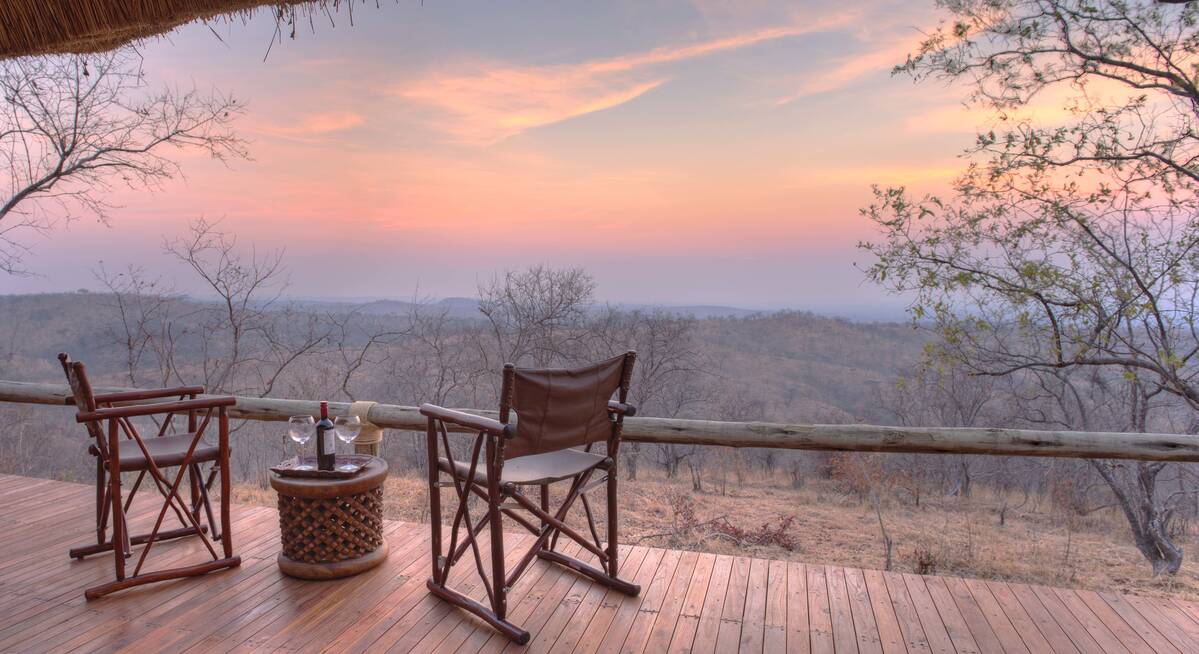
Jackal Fly-in Safari
8 days • 2 locations
DAR ES SALAAM AIRPORT TO DAR ES SALAAM AIRPORT
Enjoy a range of activities on this luxury fly-in safari. Explore the remoter regions of Ruaha National Park and Nyerere National Park with phenomenal guides during stays at two impressively comfortable camps that remain perfectly in keeping with their surroundings.
US$10,460 - US$12,080 per person
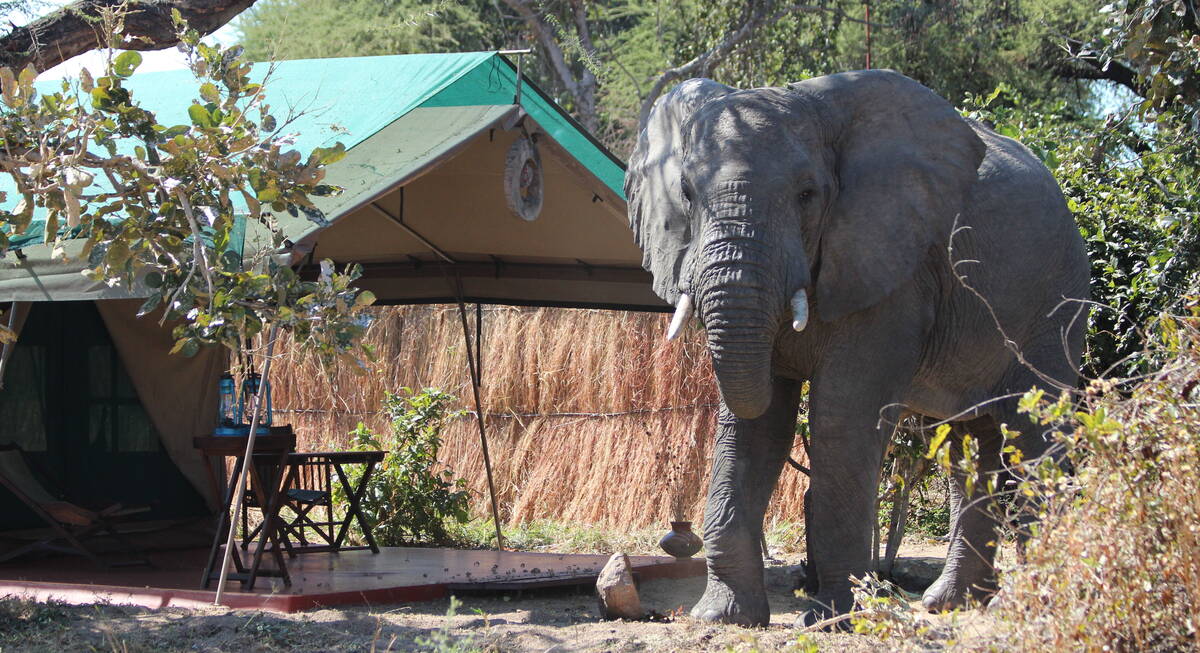
Turaco Safari
12 days • 4 locations
DAR ES SALAAM AIRPORT TO DAR ES SALAAM AIRPORT
This top-value holiday idea combines two safari areas with a week on the Indian Ocean island of Zanzibar. Photograph lions and elephants, then relax under the palms on a powder-sand beach.
US$6,190 - US$6,830 per person

Gorillas and Serengeti Safari
11 days • 4 locations
KIGALI AIRPORT TO KILIMANJARO AIRPORT
Combine three iconic experiences – mountain gorillas in Rwanda, and the Serengeti plains and awe-inspiring Ngorongoro Crater in Tanzania.
US$14,310 - US$15,540 per person

Lemon Grass Beach Holiday
6 days • 2 locations
DAR ES SALAAM AIRPORT TO DAR ES SALAAM AIRPORT
Enjoy undisturbed leisure at the Mafia Archipalego’s lesser-visited Chole and Mafia Islands. Two charming, elegant lodges provide opportunity for total relaxation as well as a range of activities.
US$2,310 - US$2,850 per person

Topi Fly-in Safari
7 days • 2 locations
DAR ES SALAAM AIRPORT TO DAR ES SALAAM AIRPORT
Explore Nyerere National Park and Ruaha National Park from two luxurious, colonially styled camps. Chosen for their access to good game viewing and thrilling remoteness, these camps also offer a range of varied safari activities.
US$7,420 - US$7,420 per person
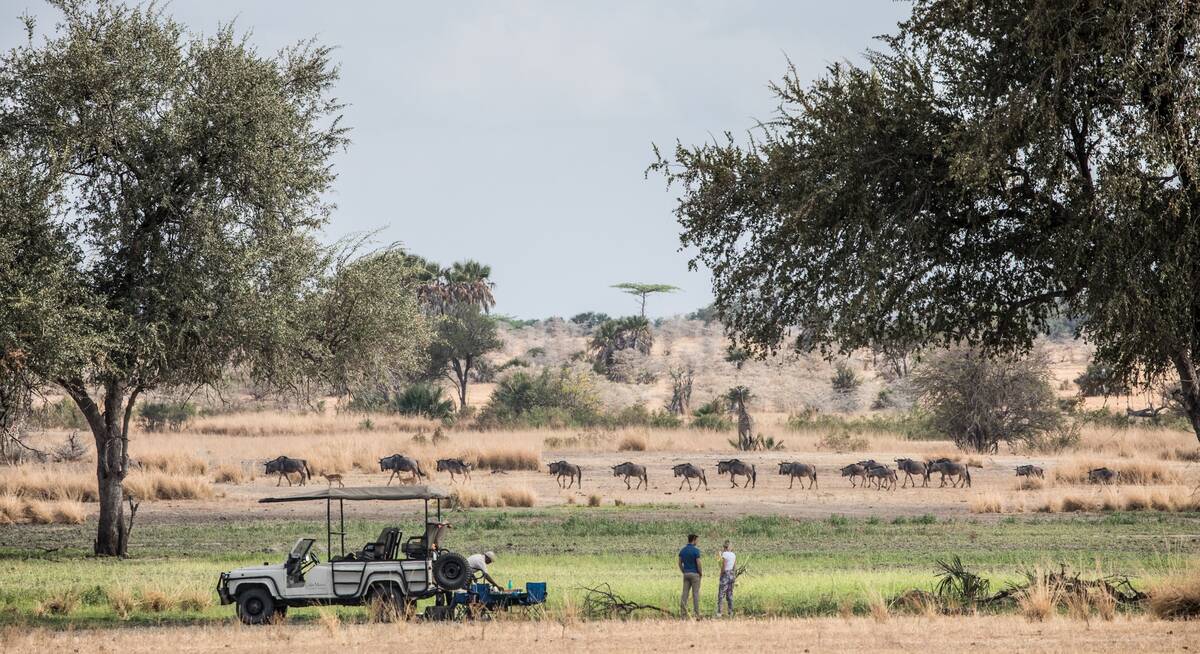
Spotted Hyena Fly-in Safari
7 days • 2 locations
DAR ES SALAAM AIRPORT TO DAR ES SALAAM AIRPORT
Stay in one of Nyerere National Park's best safari camps before experiencing a truly authentic tented camp in Ruaha. Remote locations, superb guiding and a range of activities await guests during this comfortable fly-in safari.
US$6,660 - US$8,660 per person

Chimpanzee Fly-in Safari
8 days • 3 locations
KILIMANJARO AIRPORT TO KILIMANJARO AIRPORT
Combining two of the remotest parks in Tanzania, this safari can deliver extraordinary wildlife viewing in Katavi, and East Africa's best chimp treks, on the shores of Lake Tanganyika.
US$11,370 - US$16,530 per person
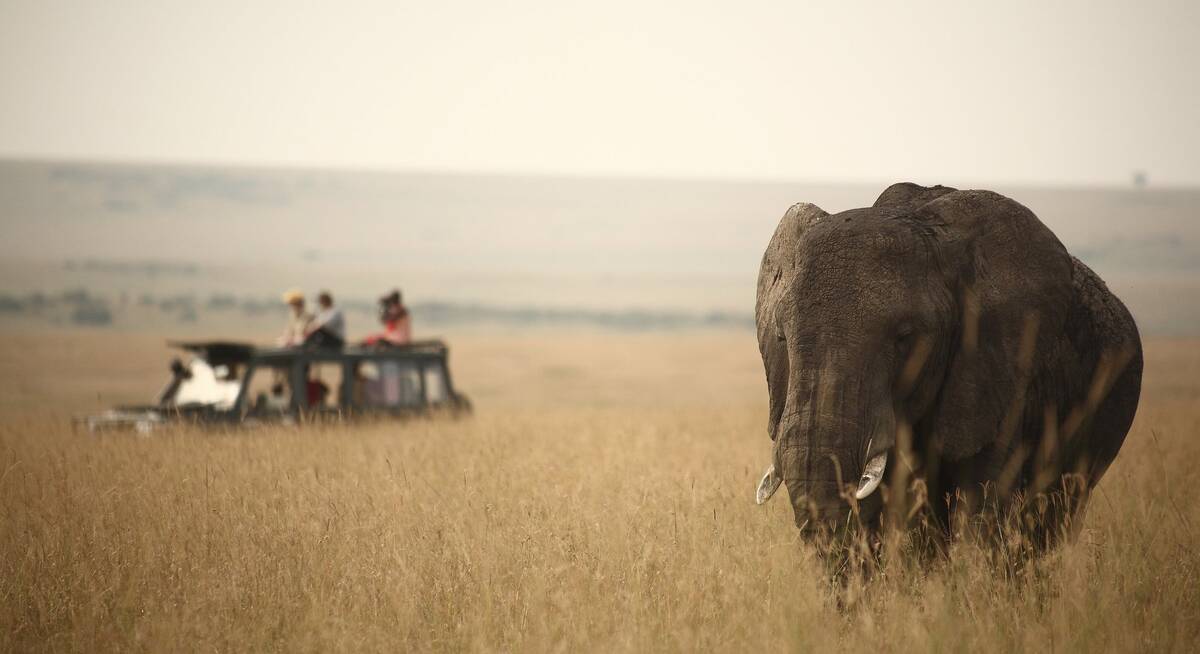
Martial Eagle Fly-in Safari
9 days • 3 locations
NAIROBI AIRPORT TO KILIMANJARO AIRPORT
This stylish fly-in safari visits two of Africa’s most iconic parks, the Maasai Mara National Reserve in Kenya and Tanzania's Serengeti National Park.
US$12,720 - US$17,740 per person
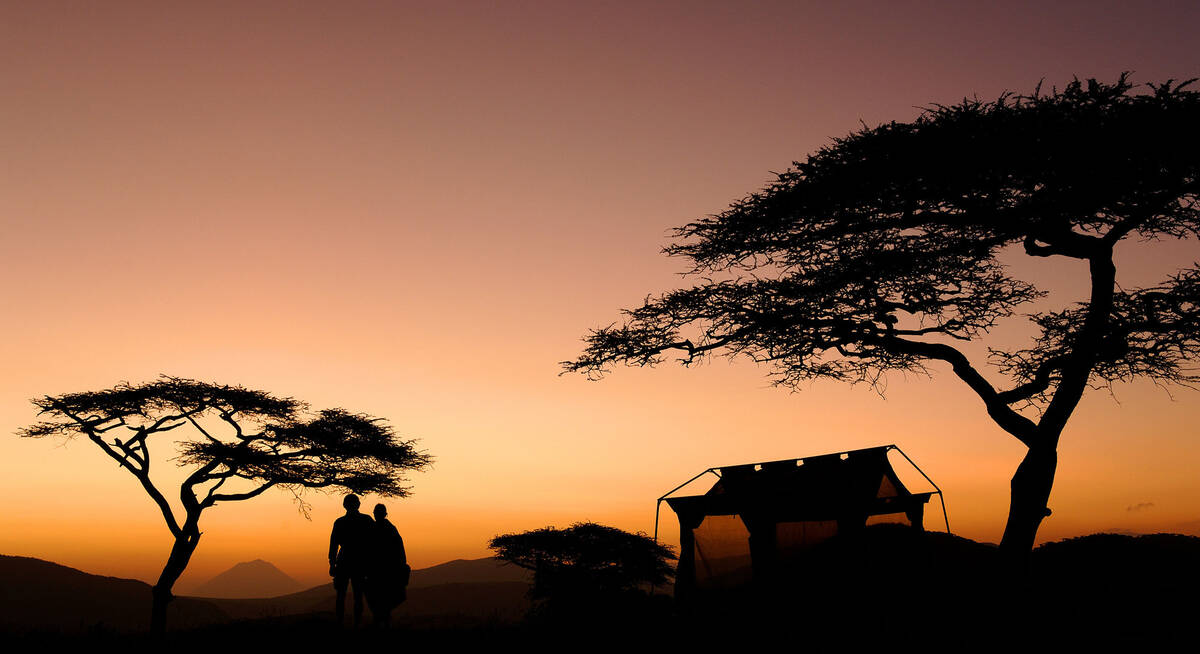
Firefinch Drive-Fly Safari
9 days • 3 locations
KILIMANJARO AIRPORT TO KILIMANJARO AIRPORT
Enjoy a combination of privately guided and shared game drives during this good-value exploration of northern Tanzania. Explore game-dense regions from three comfortable bases which offer a variety of activities.
US$7,720 - US$14,200 per person
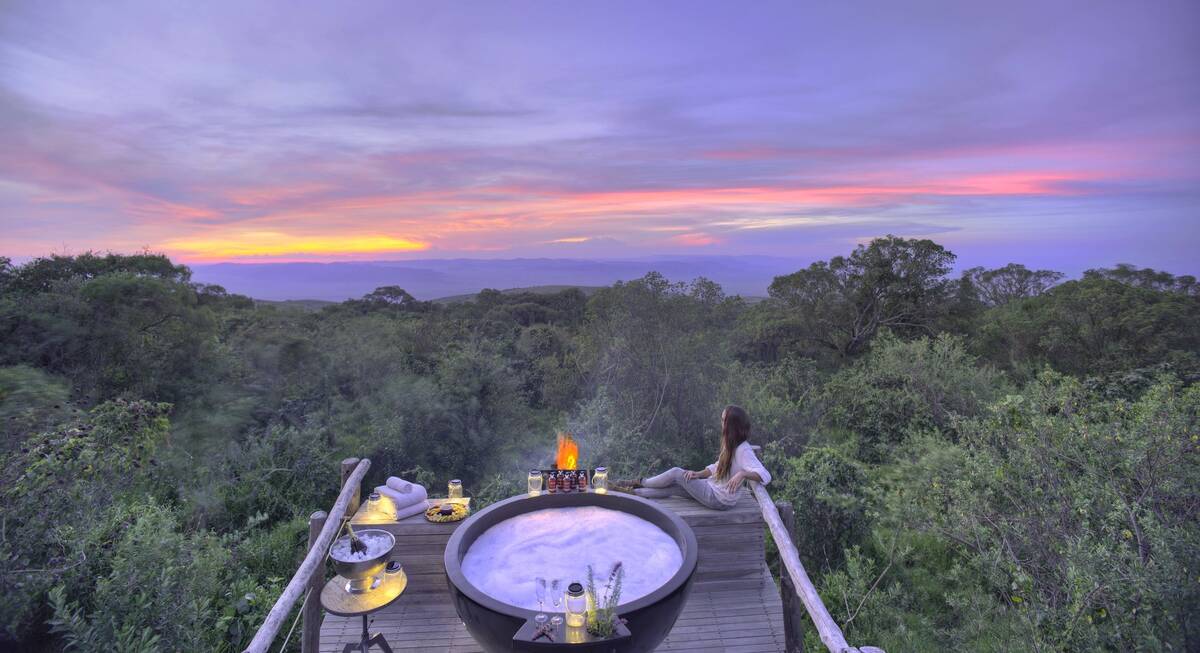
Flufftail Guided Safari
10 days • 3 locations
KILIMANJARO AIRPORT TO KILIMANJARO AIRPORT
Stay in three unique camps as you safari across the Ngorongoro Crater and the iconic Serengeti Plains with your private guide and 4WD vehicle: a trip of comfort and autonomy, with excellent wildlife.
US$12,990 - US$18,900 per person
Plan and book your trip with Expert Africa
All of our trips are tailor-made, so we'll always adapt them to suit you. Talk to an Expert and let us plan and arrange your perfect trip.

Talk to an Expert
Call or email us now! We’ll match you with the Specialist in our team who is best suited to help you. Then together we can start planning your trip.

Set up your itinerary
Based on our experience and your ideas, your specialist will create a detailed, costed itinerary. We’ll refine it together, until we have a trip that you’re perfectly happy with.

Prepare for your trip
The same Specialist will make the seamless arrangements for your trip, send you detailed travel documents, and be available to answer any questions before you depart.

Travel with peace of mind
After you set off, you’ll be cared for by our partners in Africa, most of whom have worked with Expert Africa for decades. And if you ever need us urgently, we’re available 24/7.

When you return
We love to learn about your trip, and so will always be grateful if you’ve the time to give feedback to your Specialist when you return.
Where to stay in Tanzania
Ask us for more details of what’s where, and what’s likely to suit you best!
Tanzania holiday styles & special interests
From family adventures to romantic breaks, find ideas here for your perfect Tanzania safari
Our other African destinations
Elephant safari
in Linyanti
Talk to a Tanzania Expert
These members of the Expert Africa team have been to Tanzania and can advise you from their own personal experience.
Start a conversation with them today to help plan your trip.
Tanzania specialist
I visited Tanzania most recently in Mar 2025. I've done 1 research trip in the past 2 year.
Tanzania specialist
I visited Tanzania most recently in Oct 2023. I grew up in a tented camp in Ishaha, Queen Elizabeth National Park, Uganda I've done 2 research trips in the past 2 years.
Tanzania specialist
I visited Tanzania most recently in Sep 2024. I've spent 72 days researching in Tanzania.
Tanzania specialist
The first swear word my dad heard me say was when I was charged by a warthog as a child I've spent 12 days researching in Tanzania.
